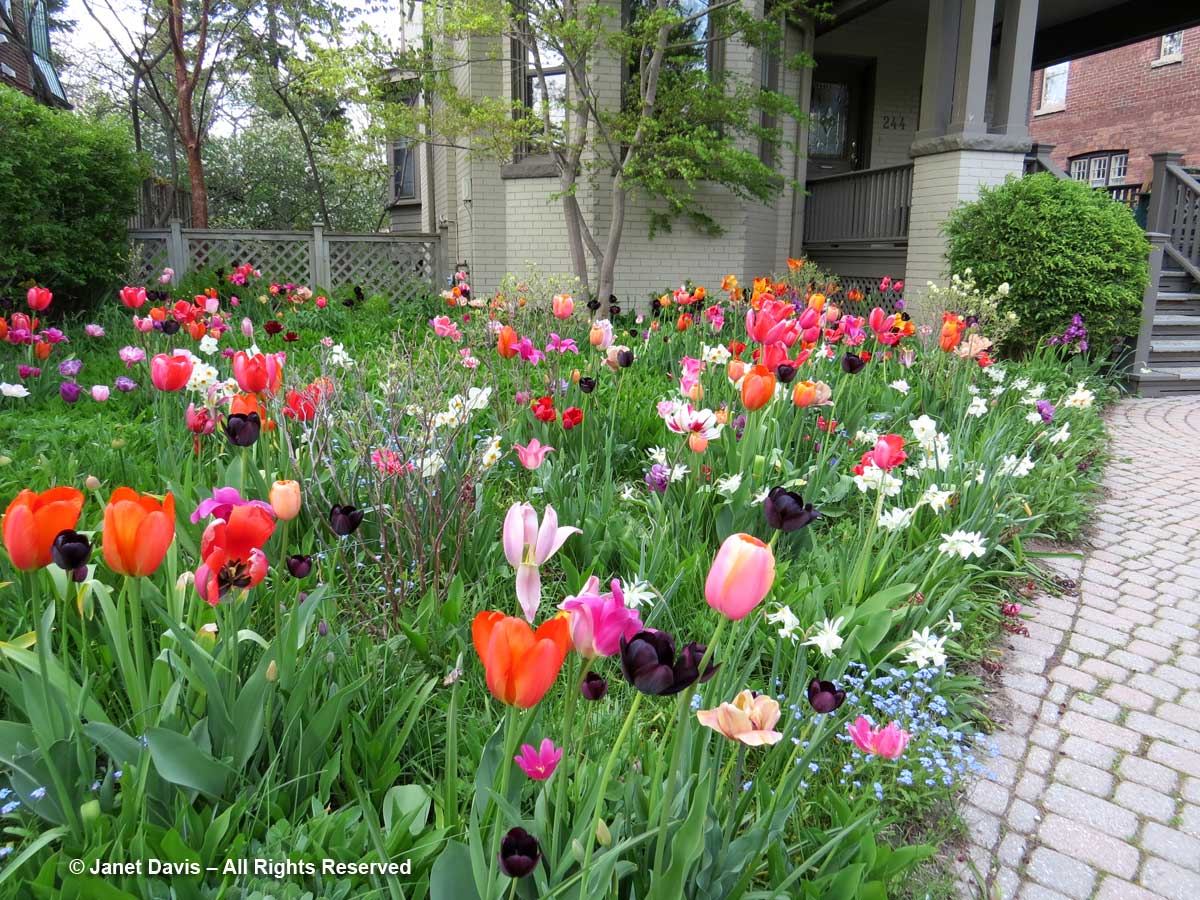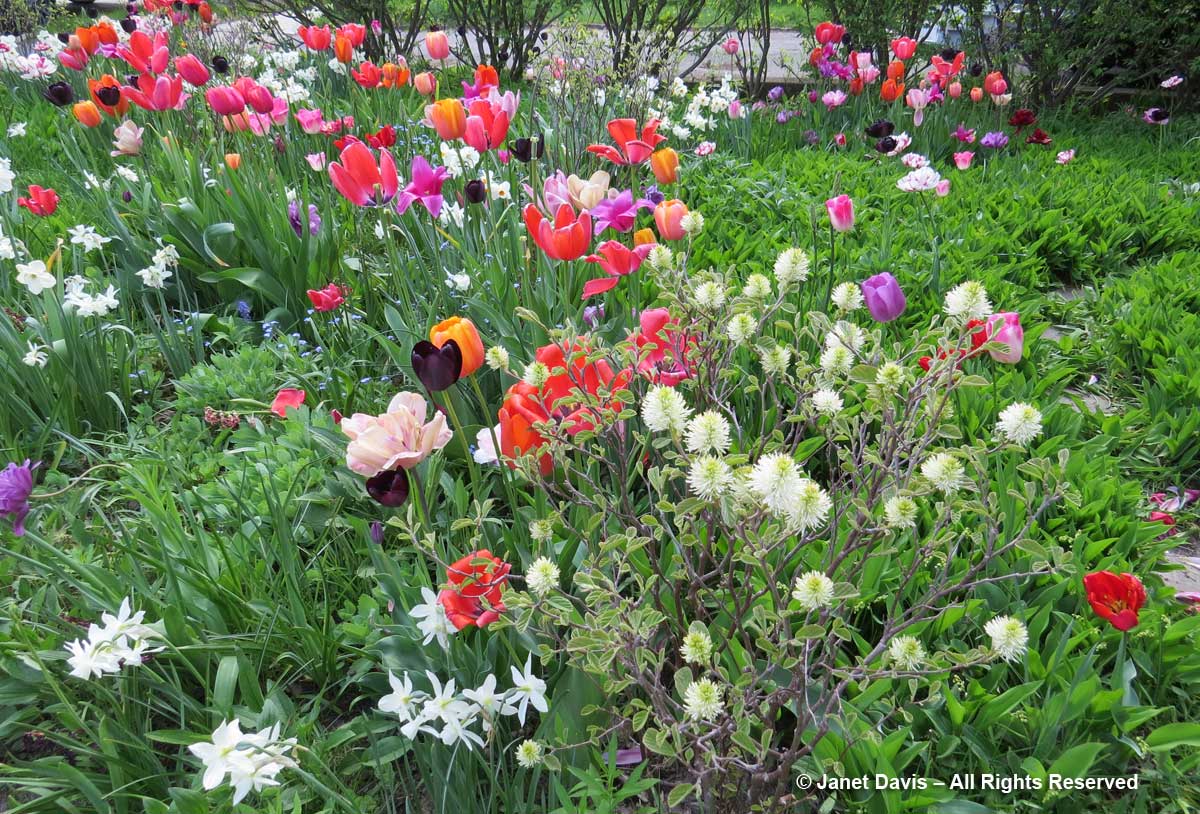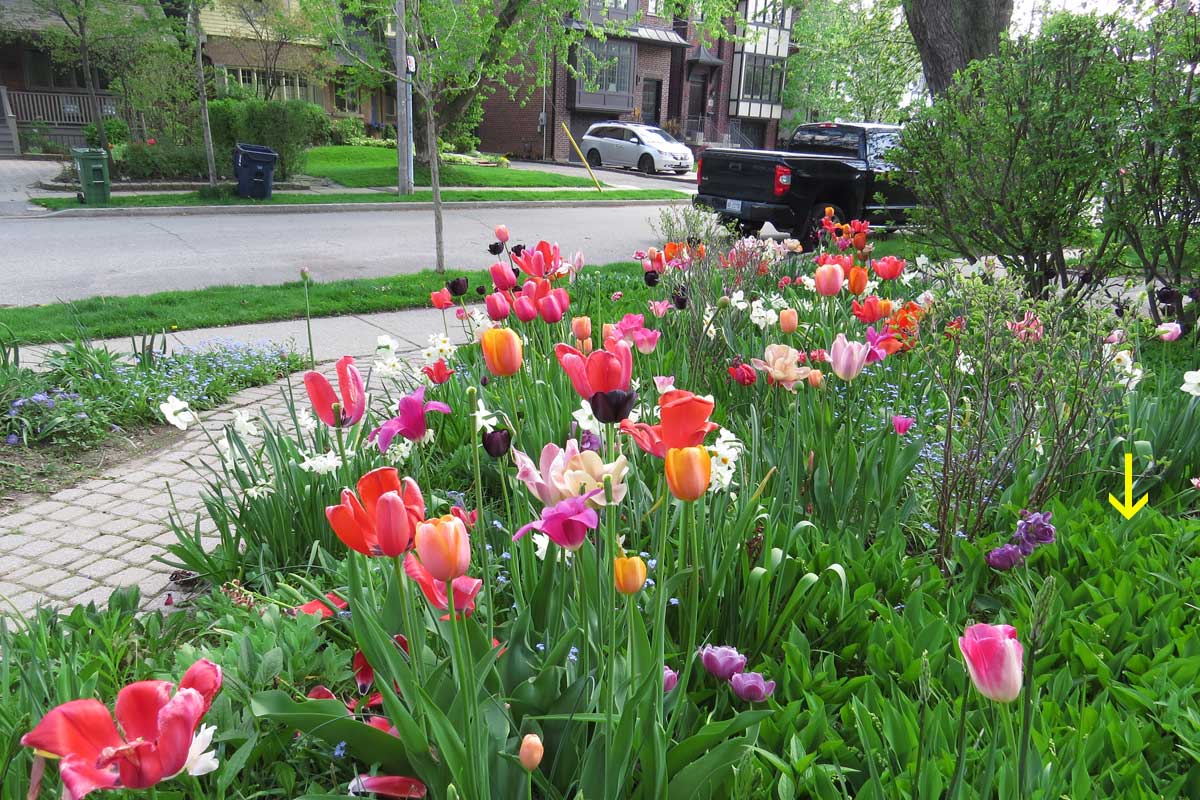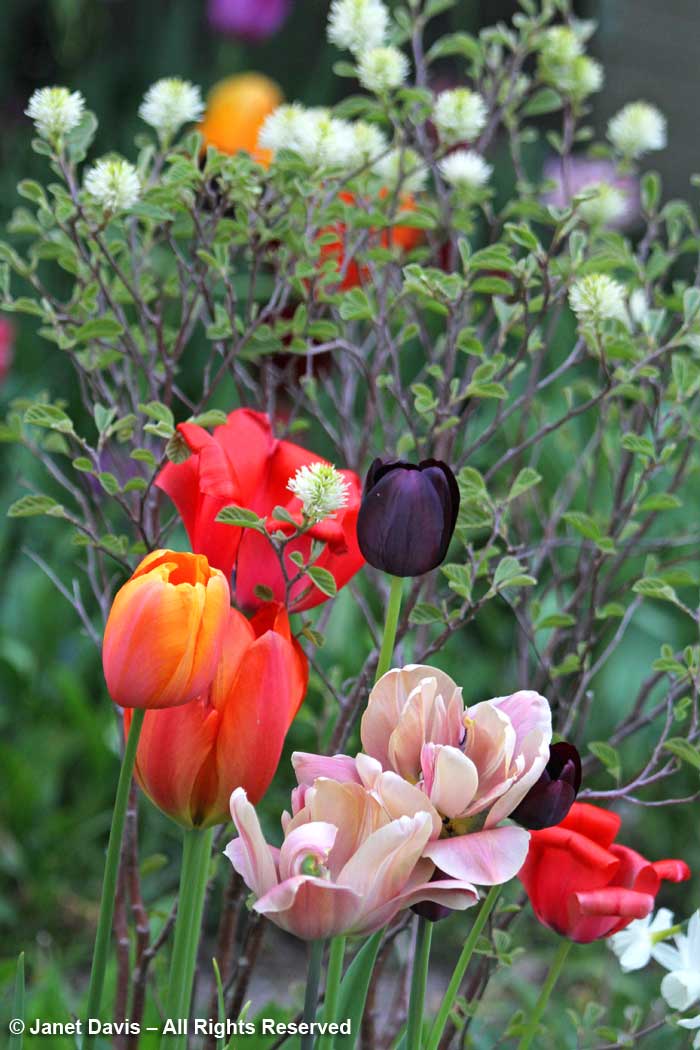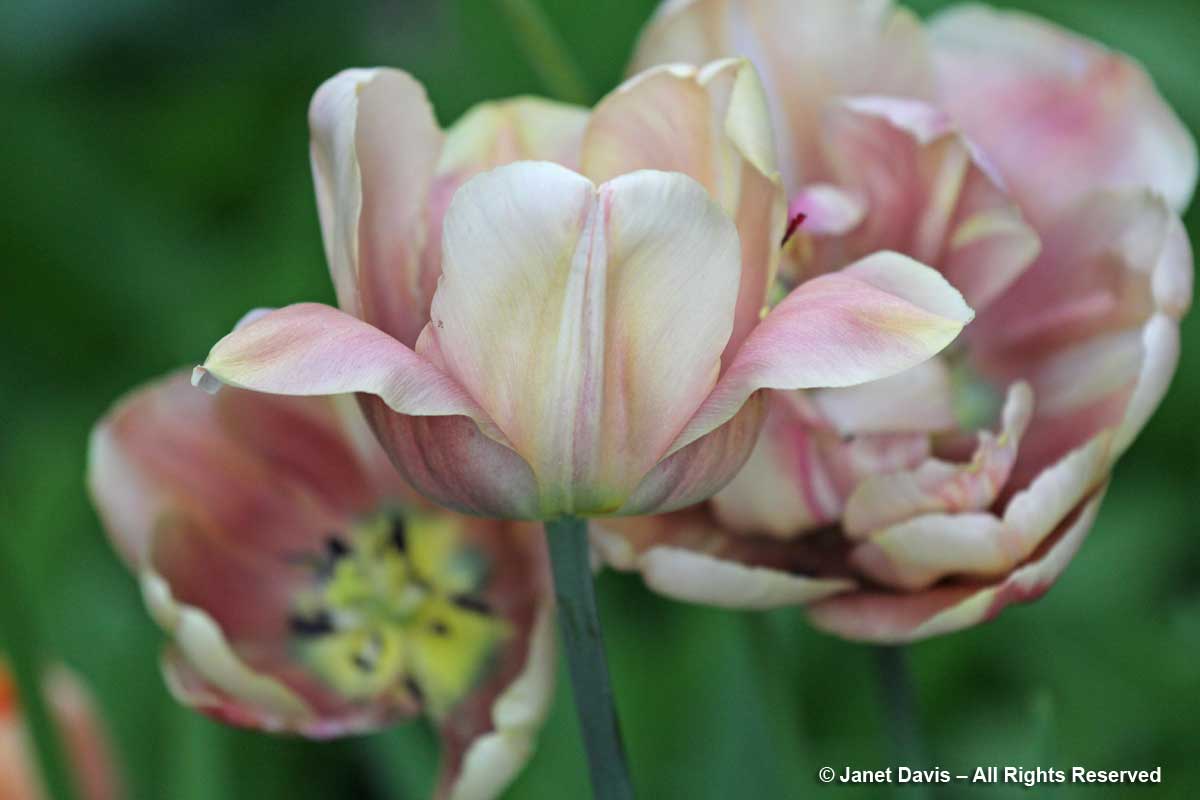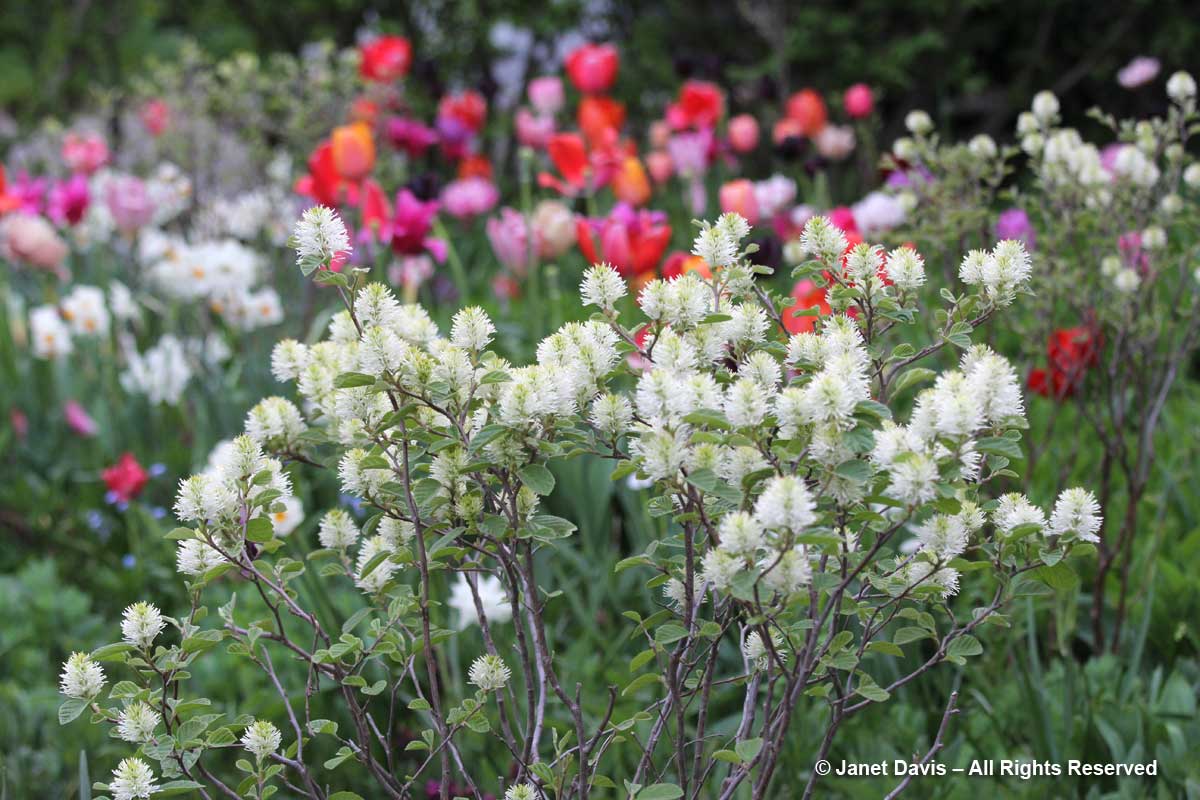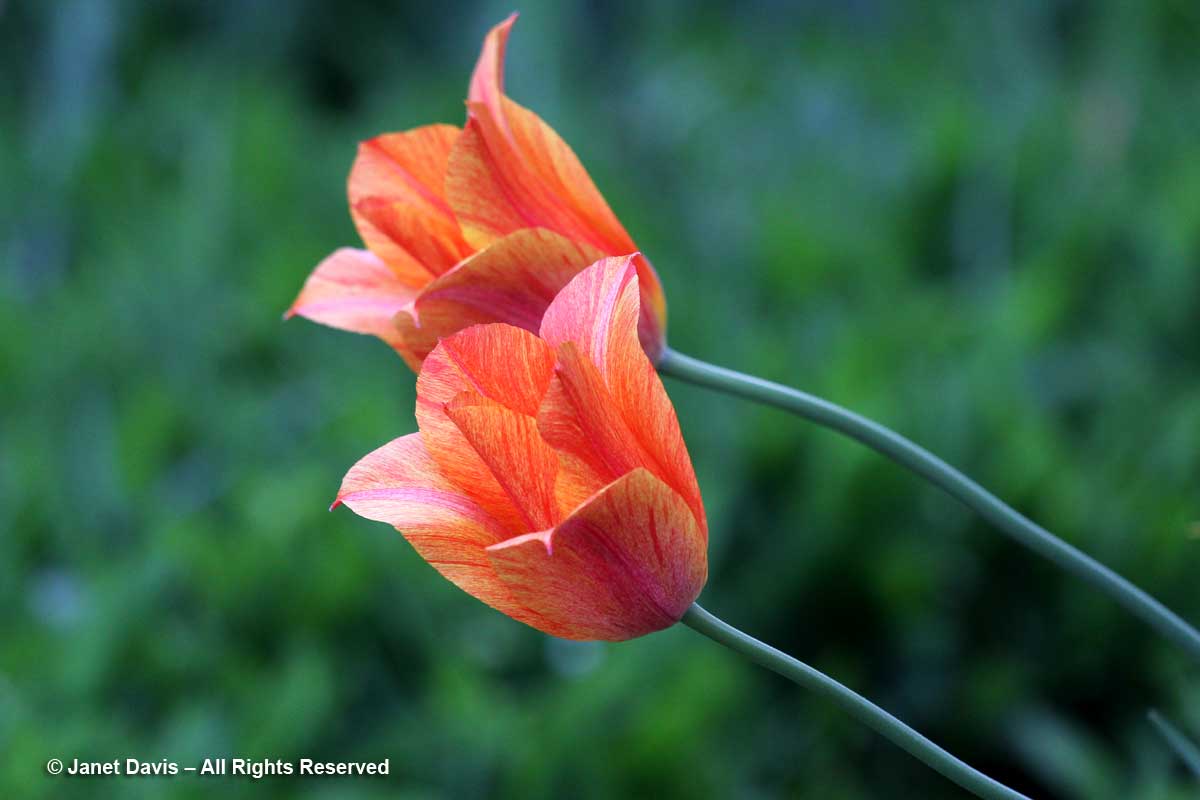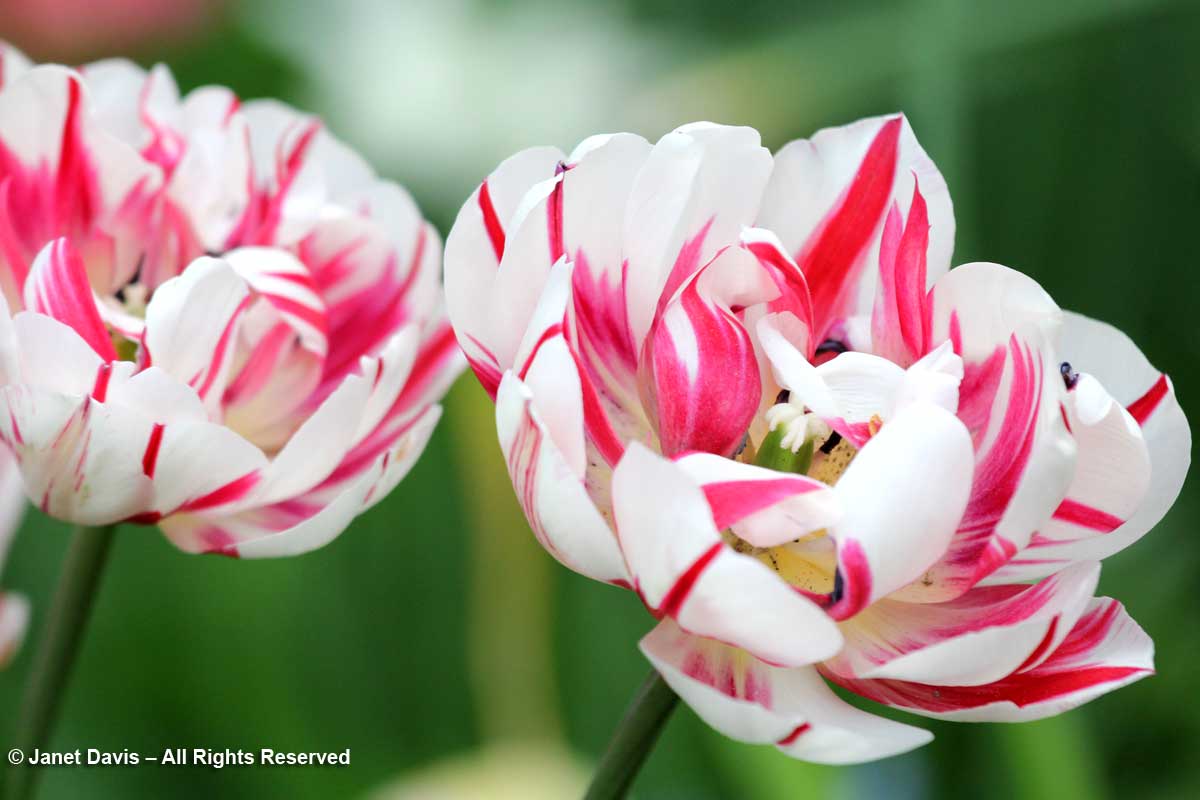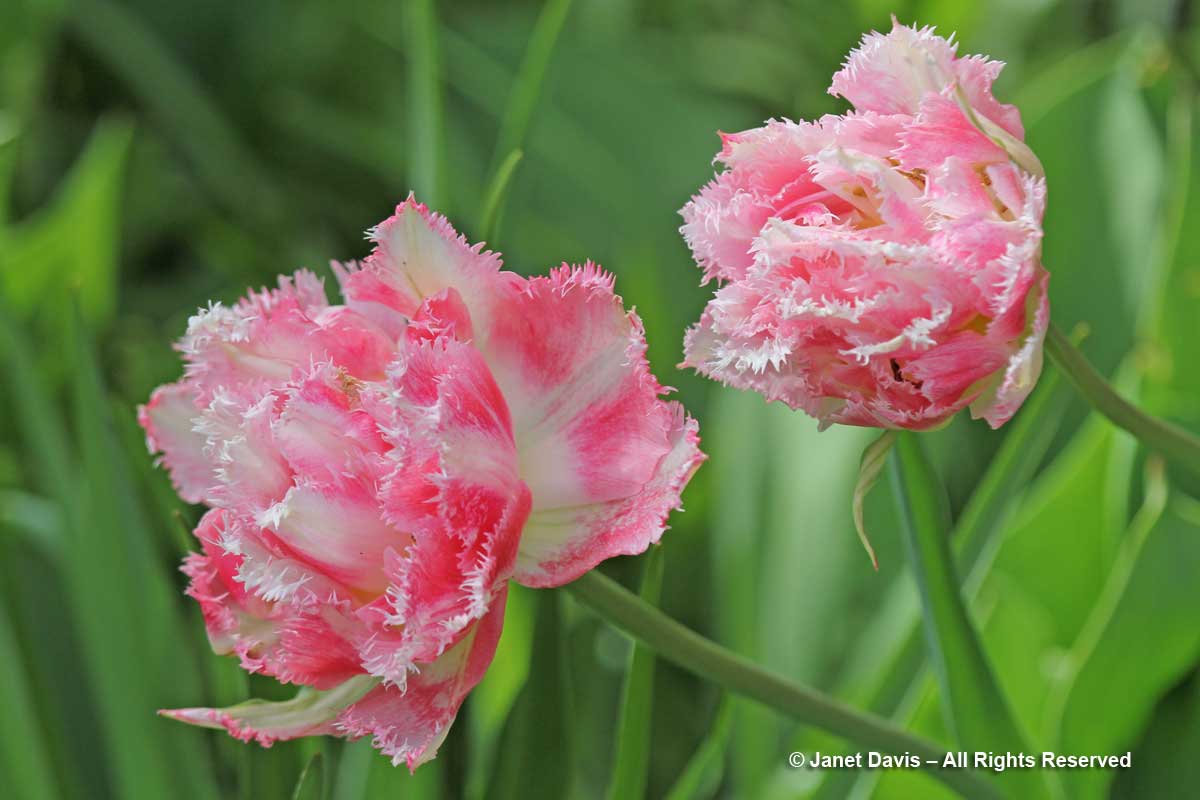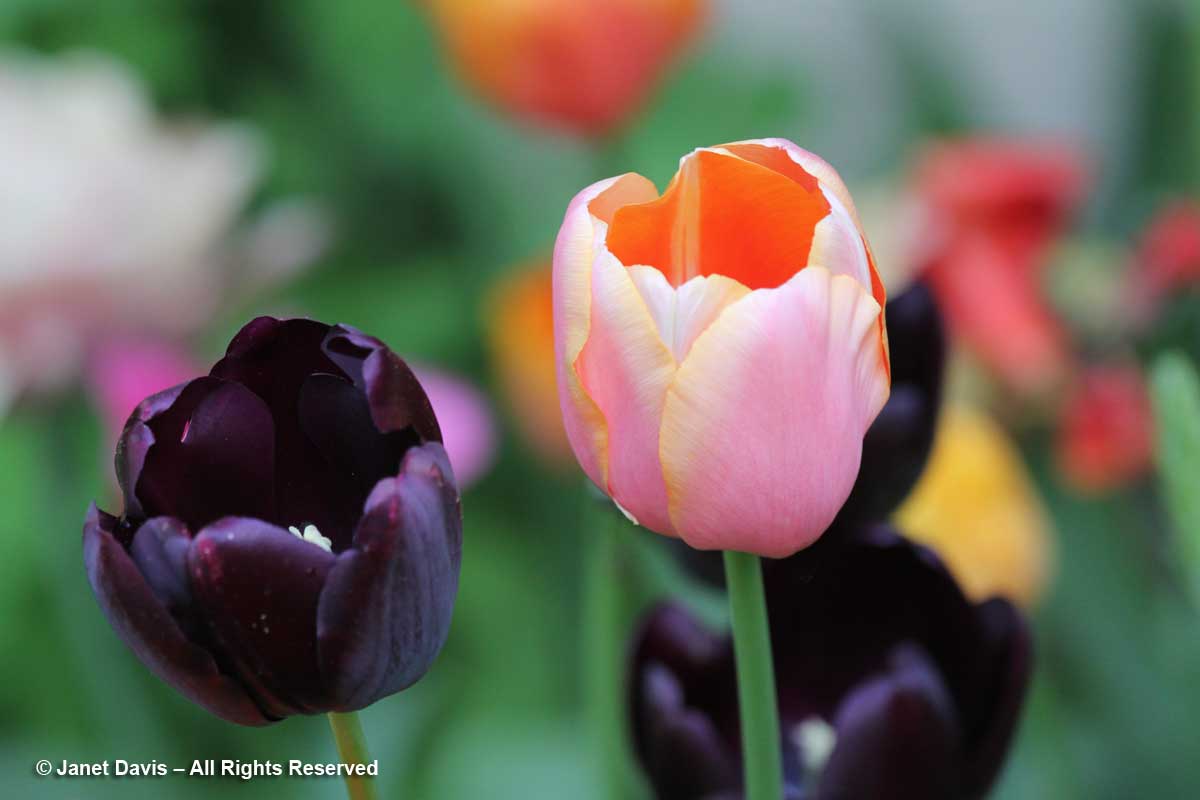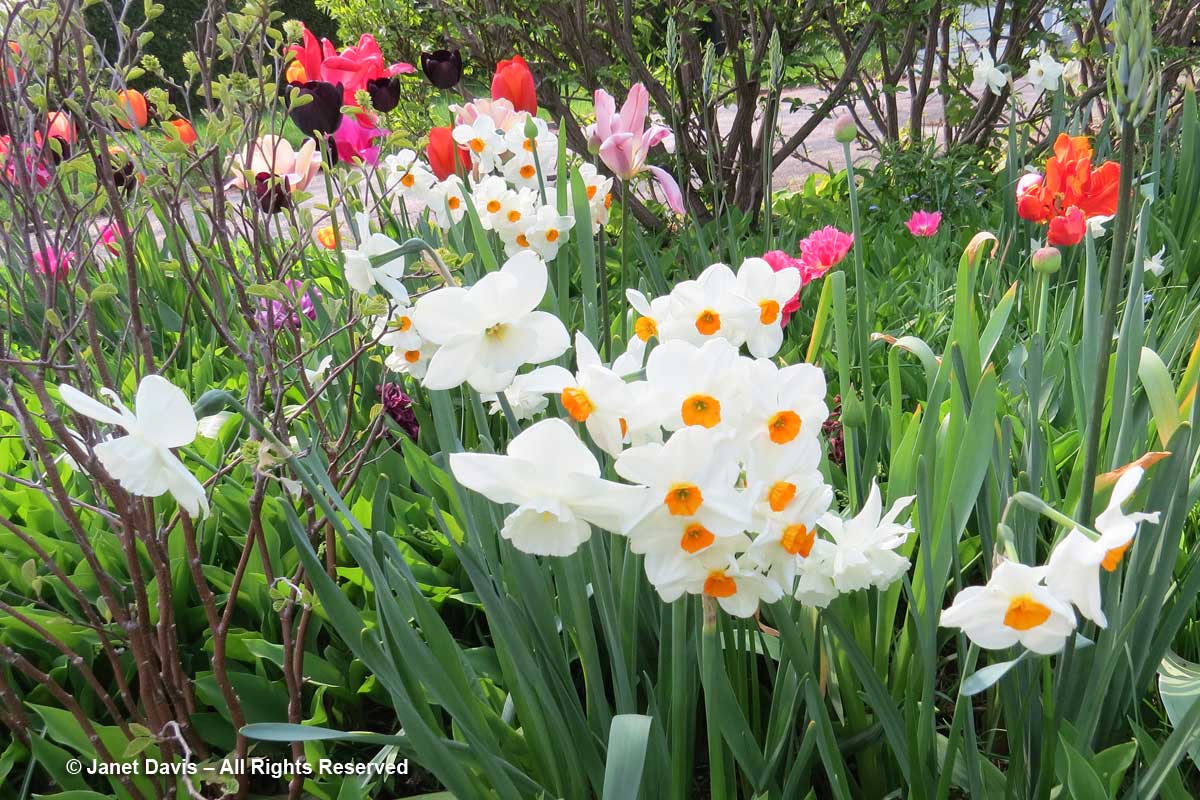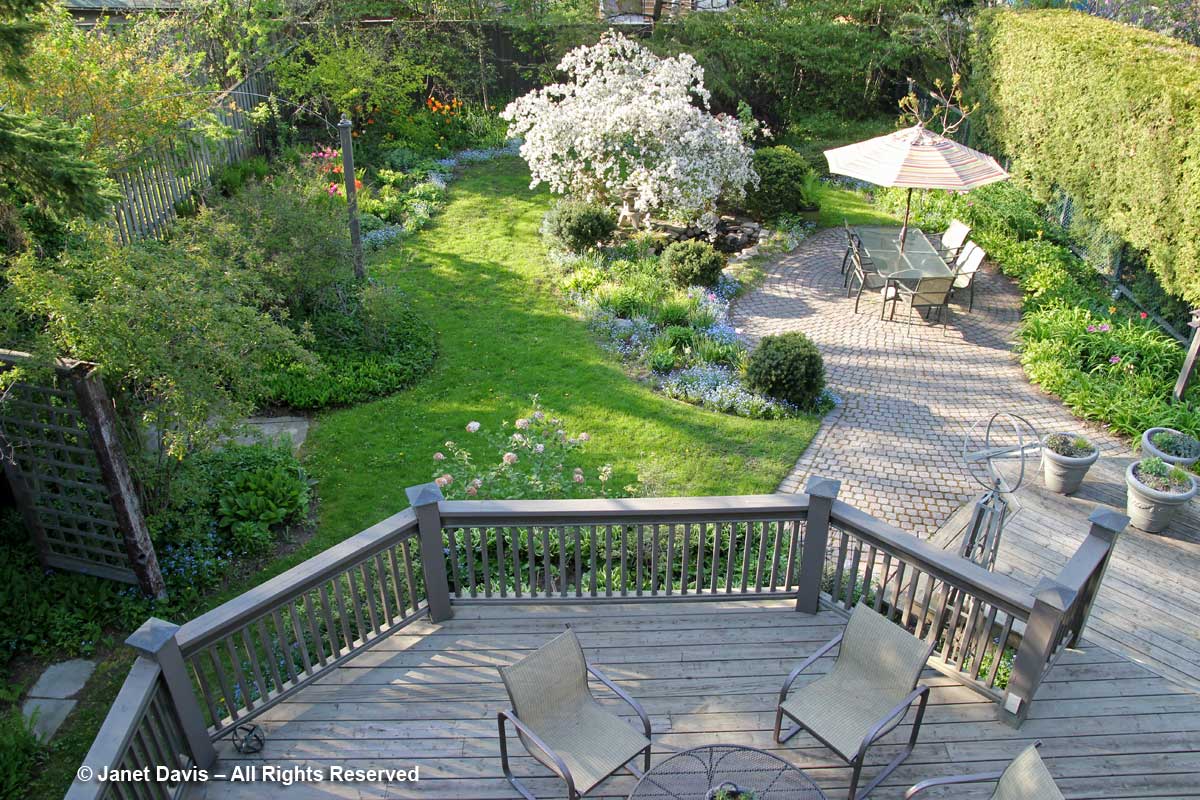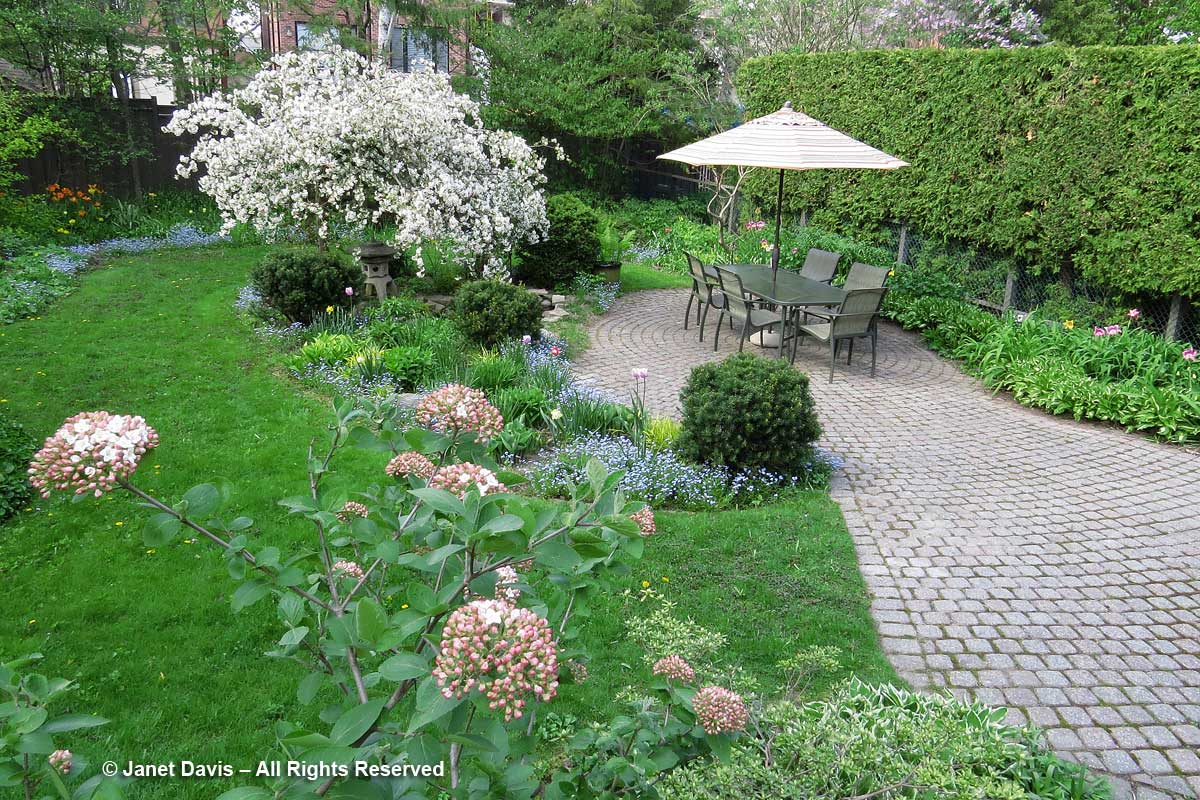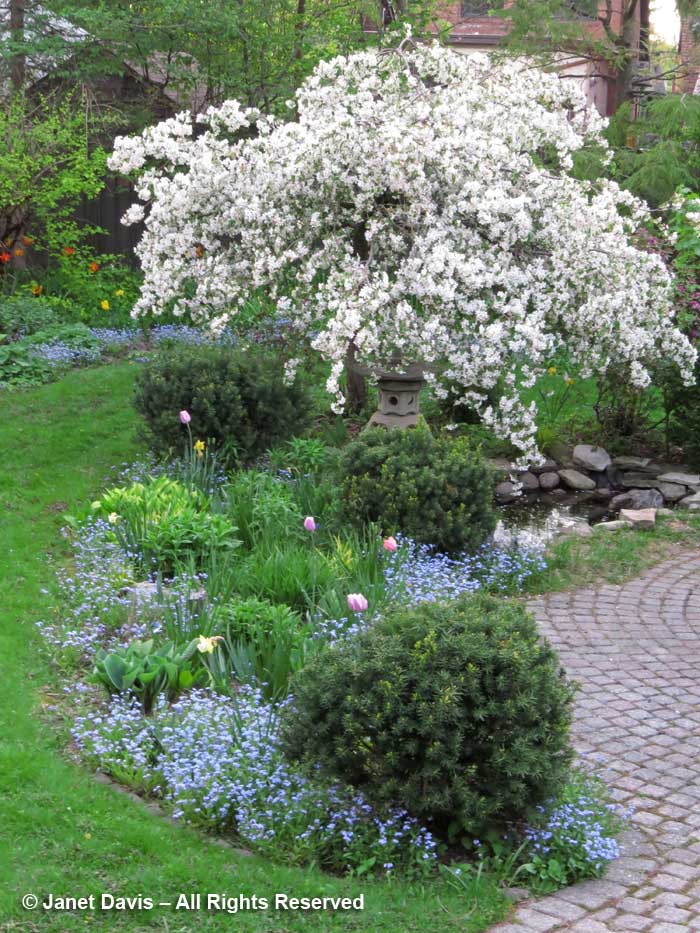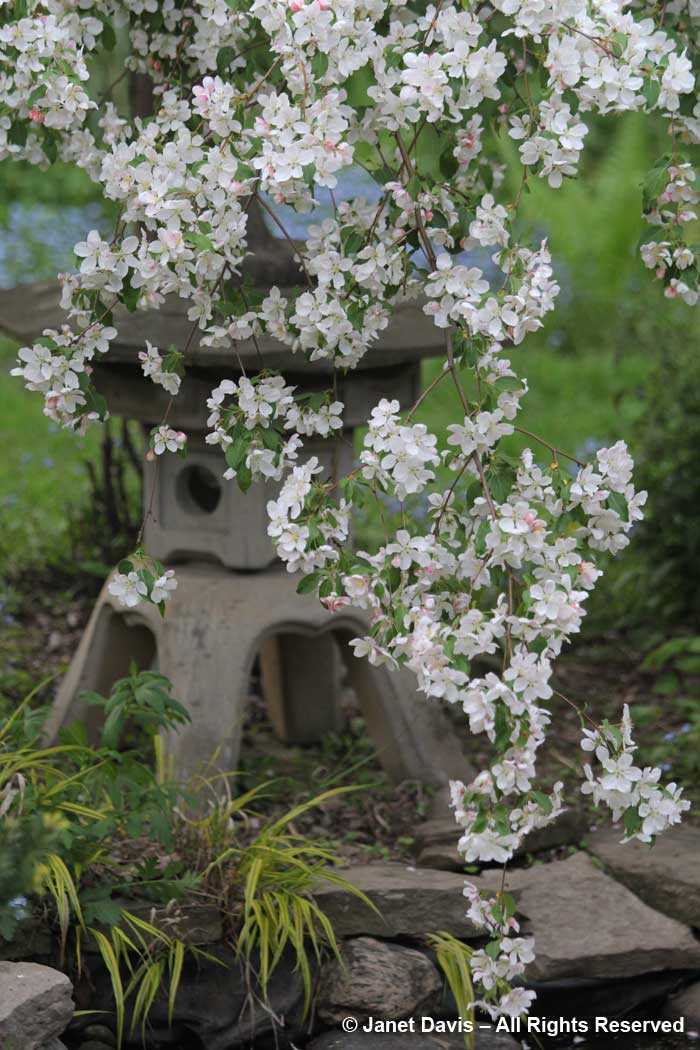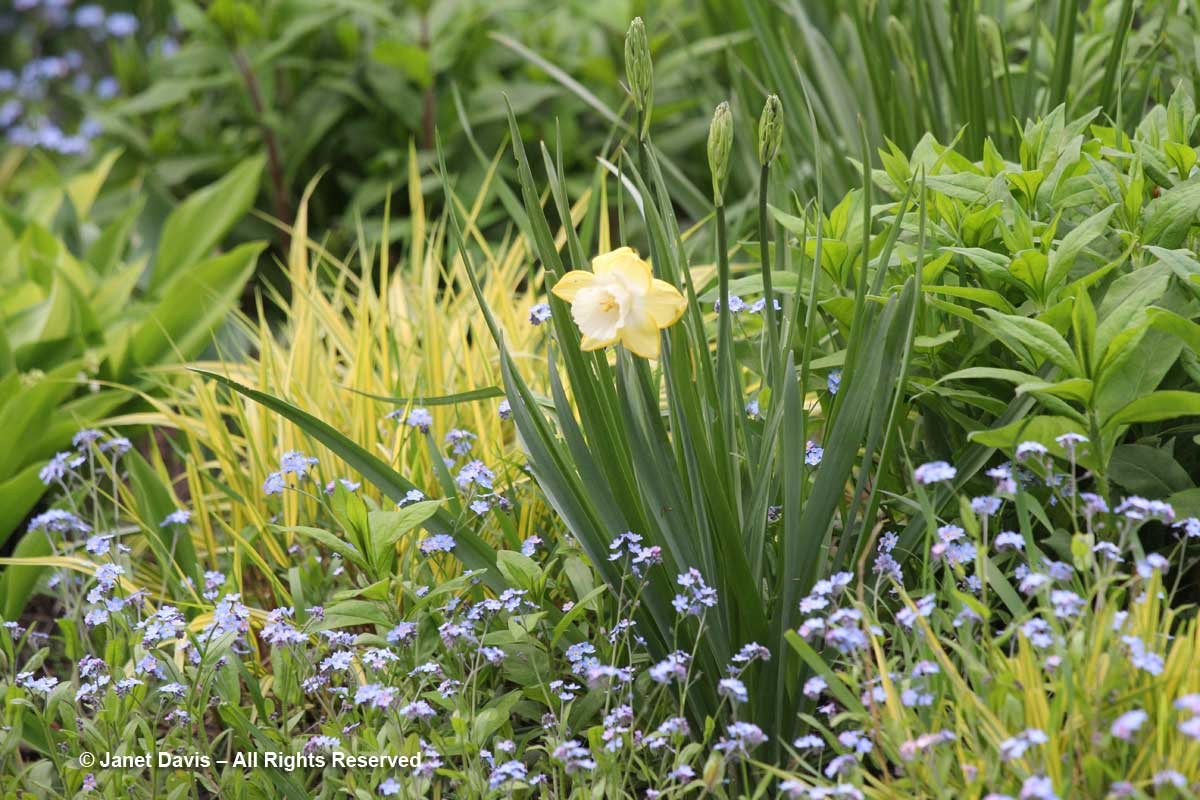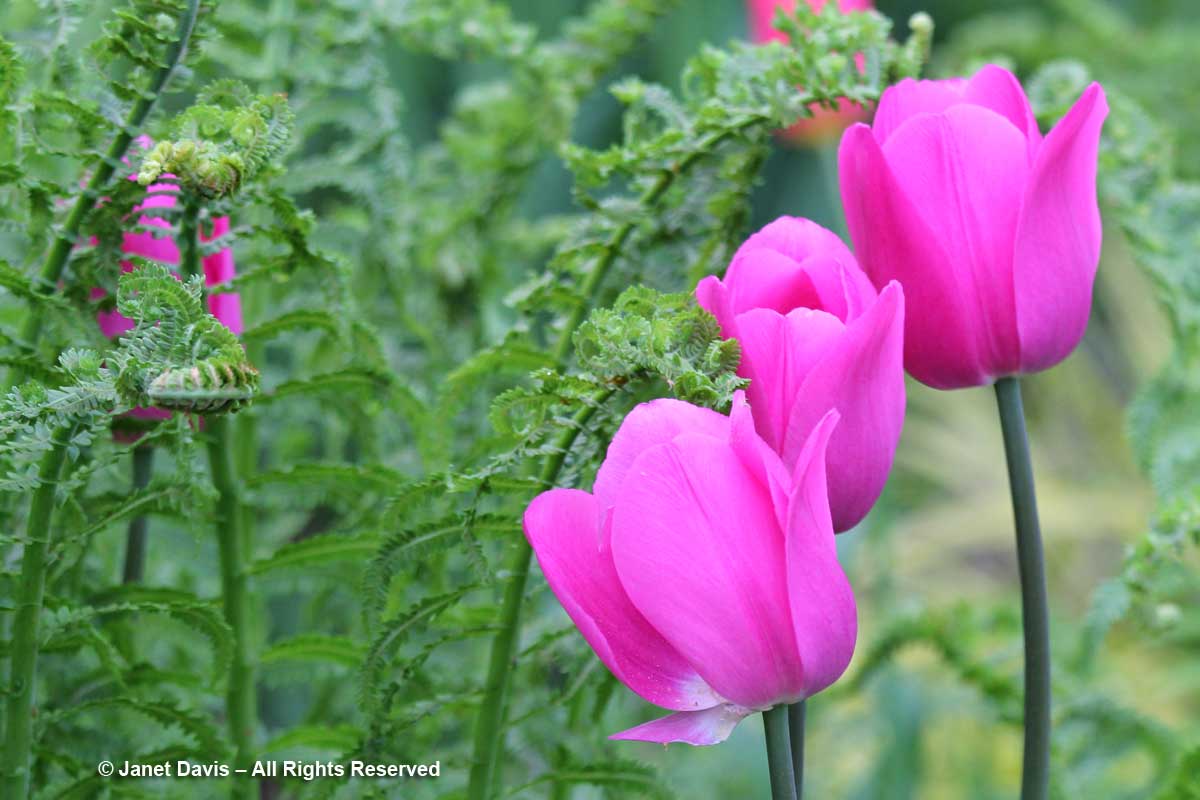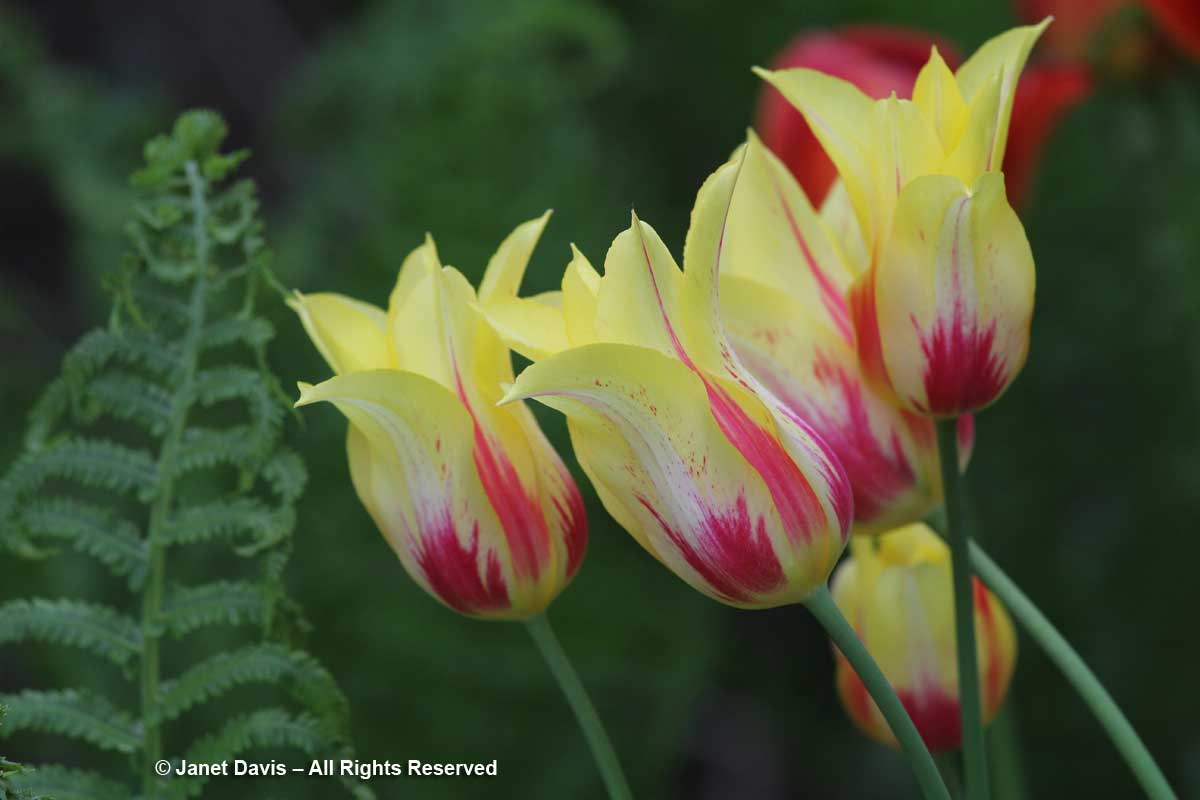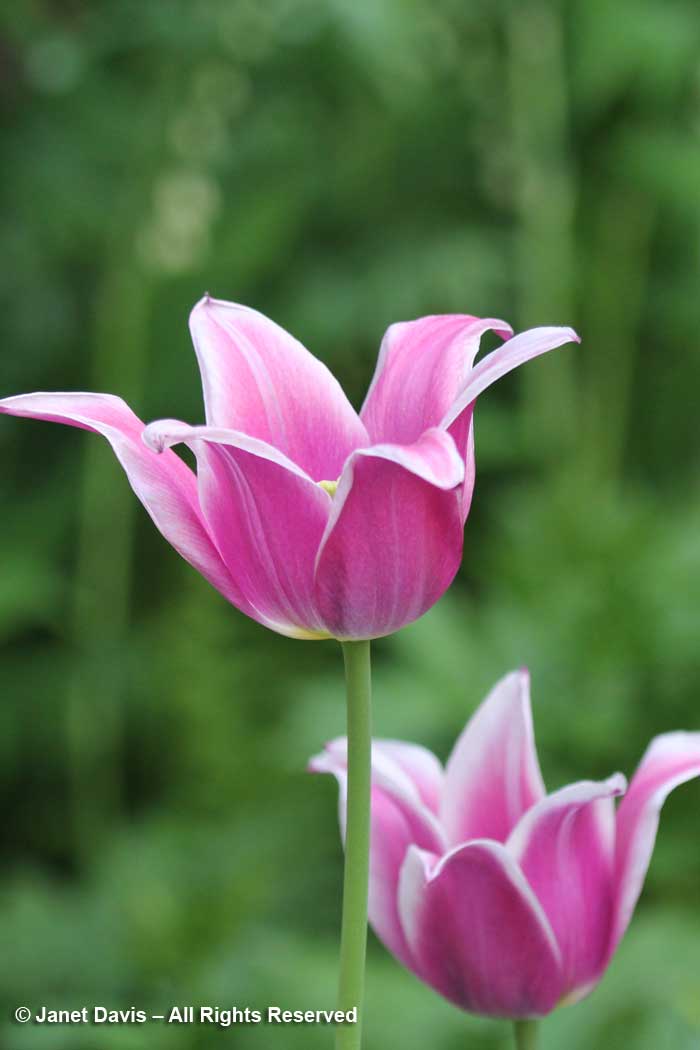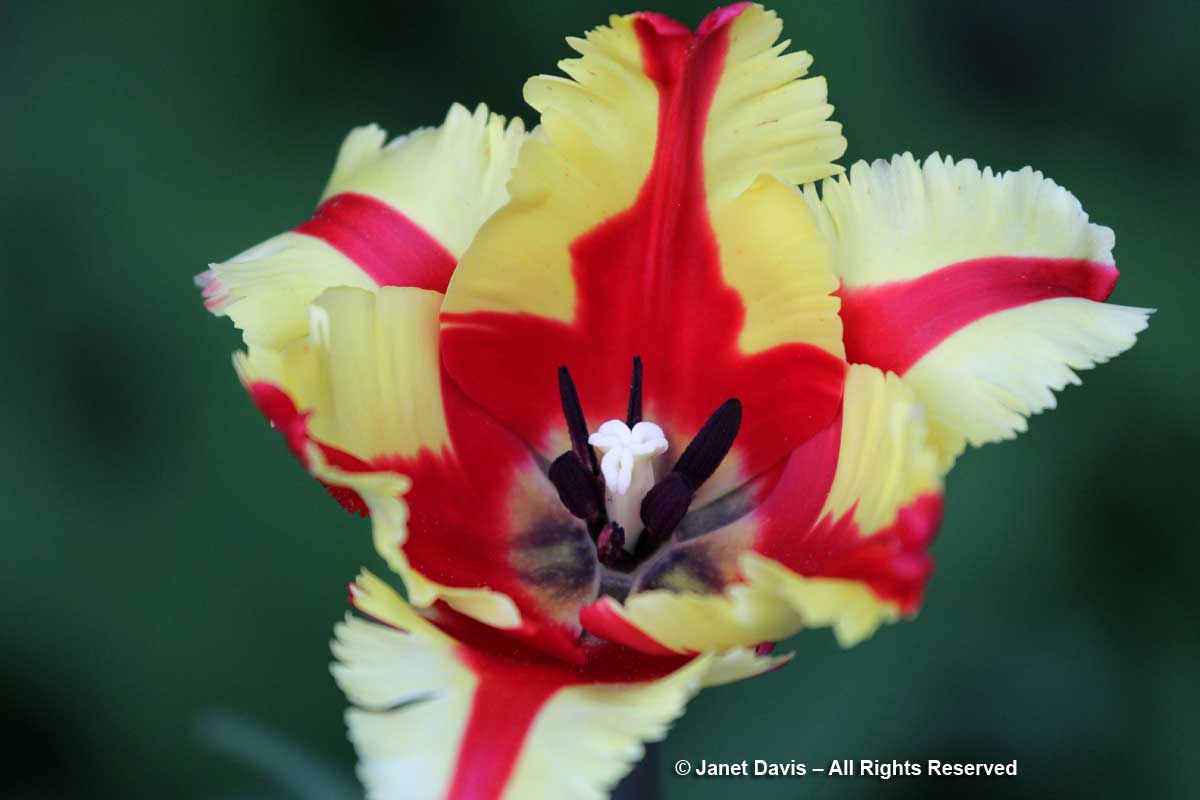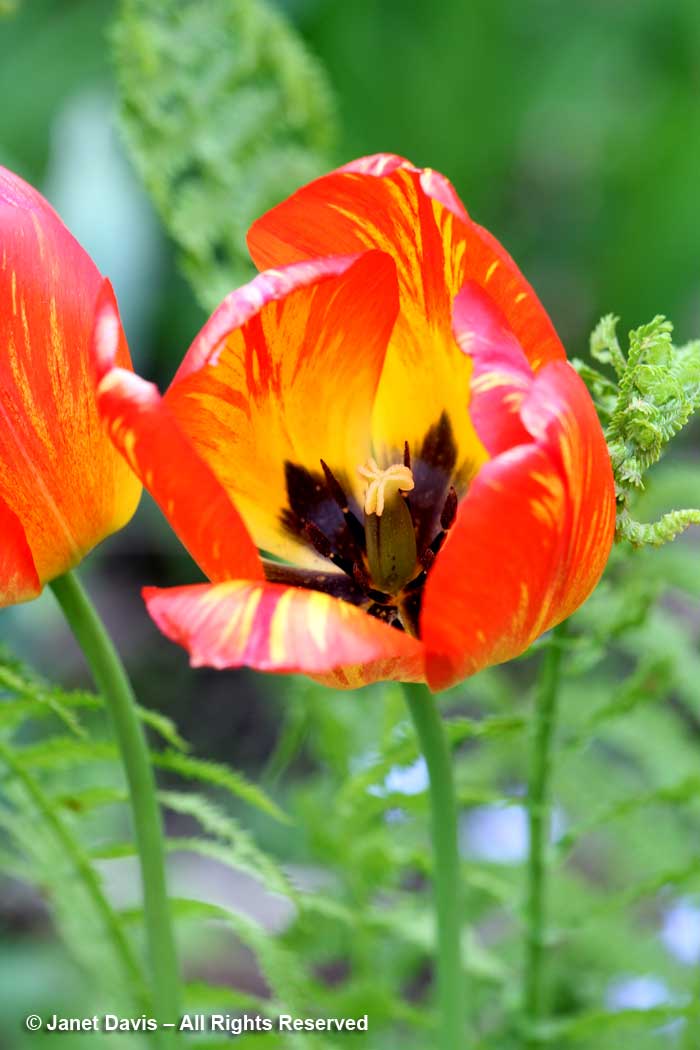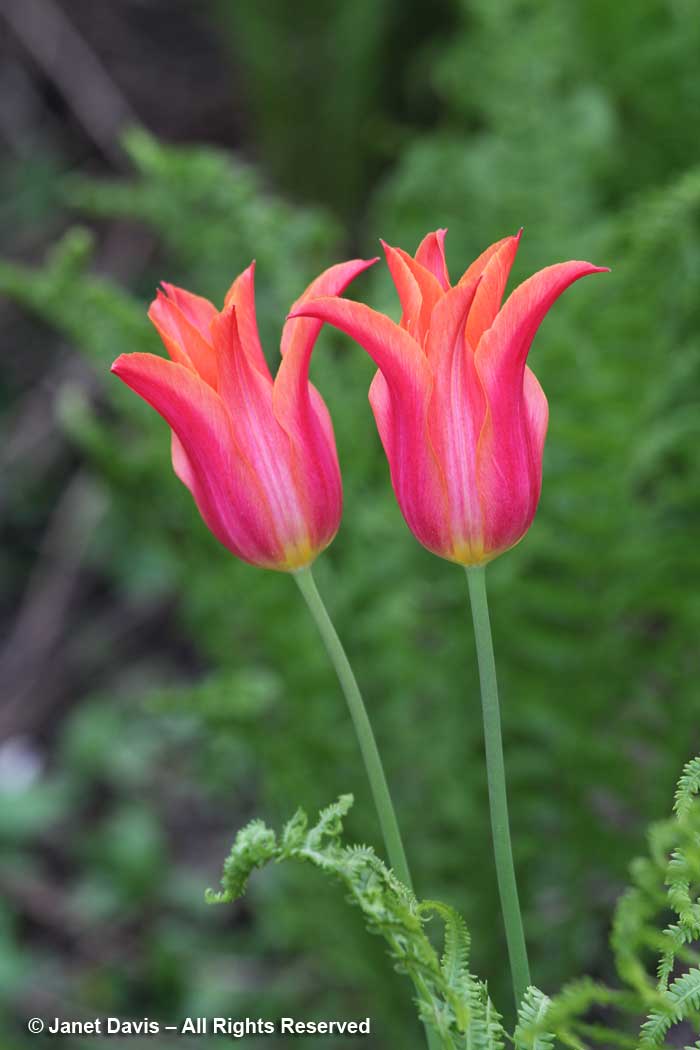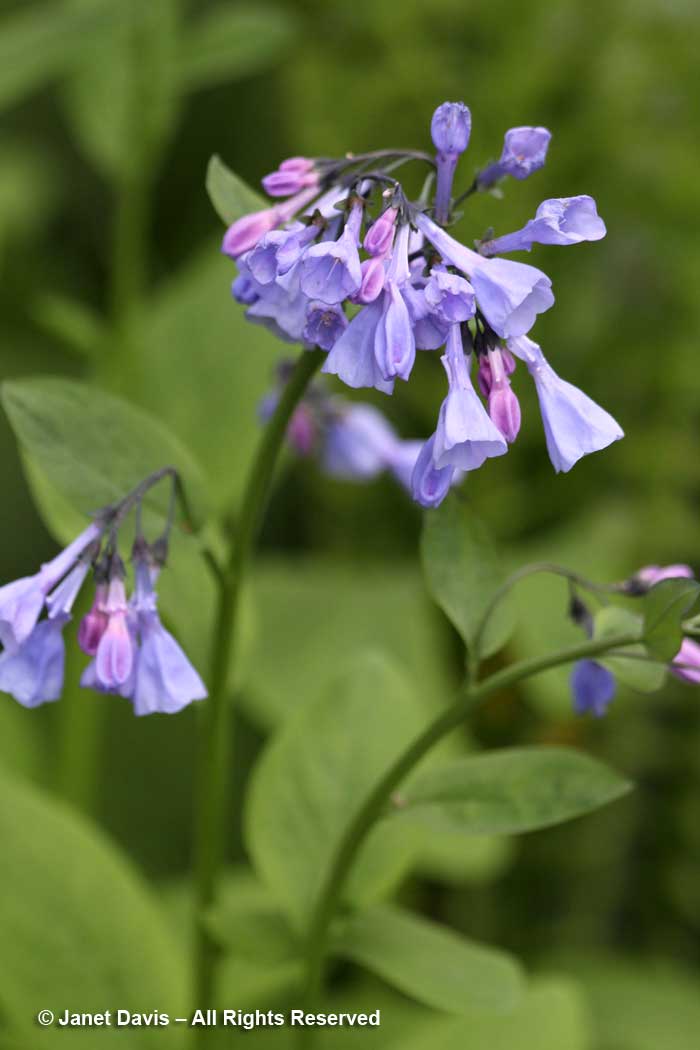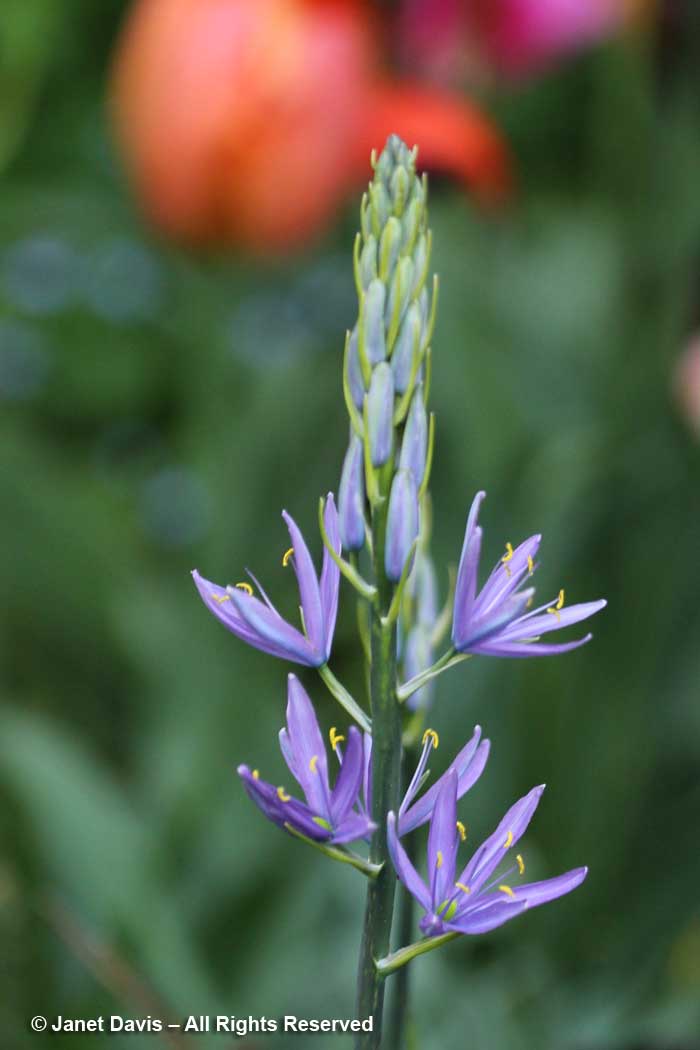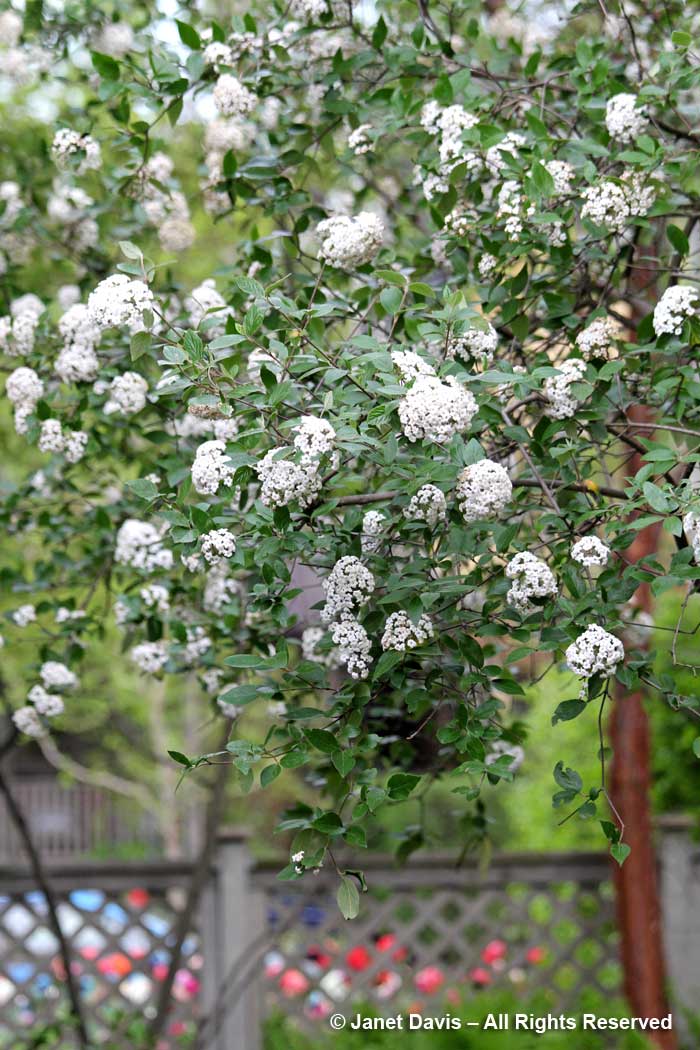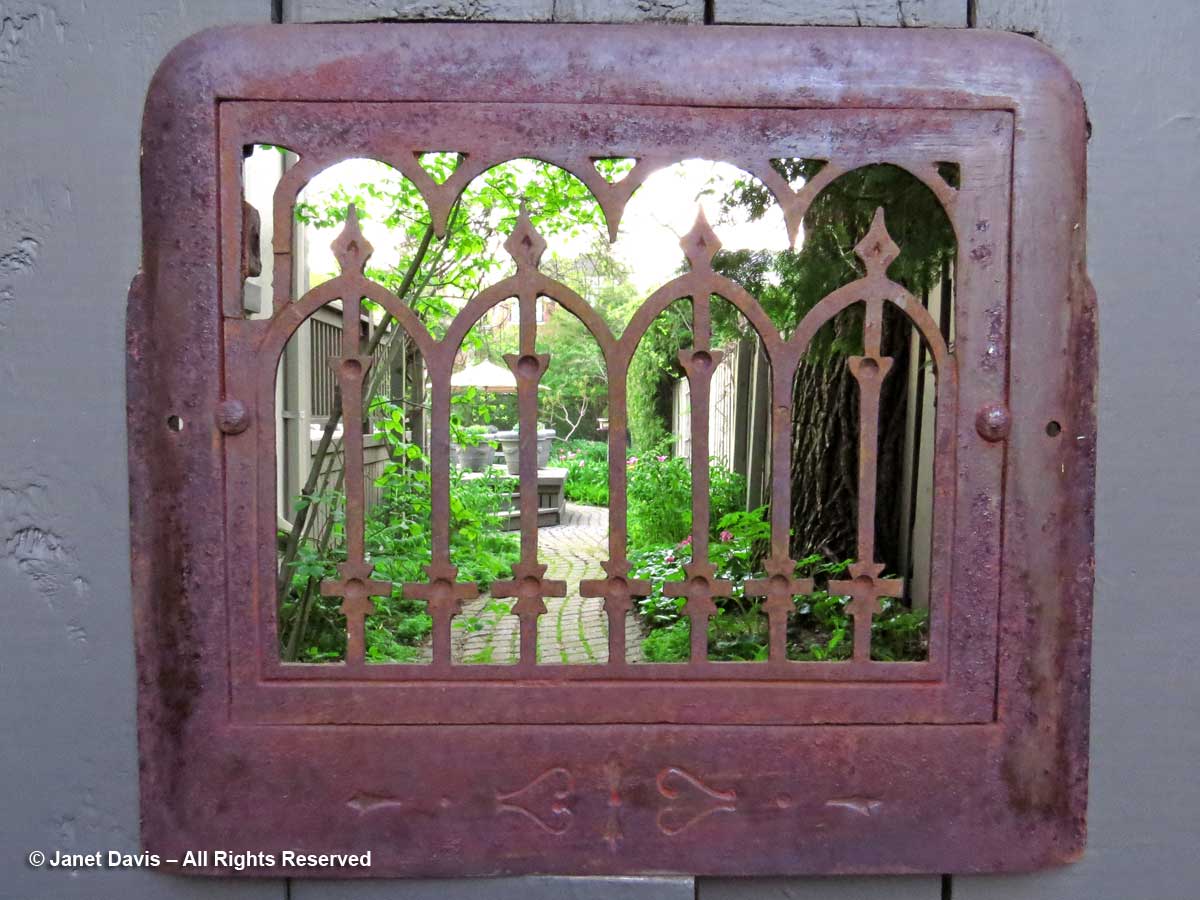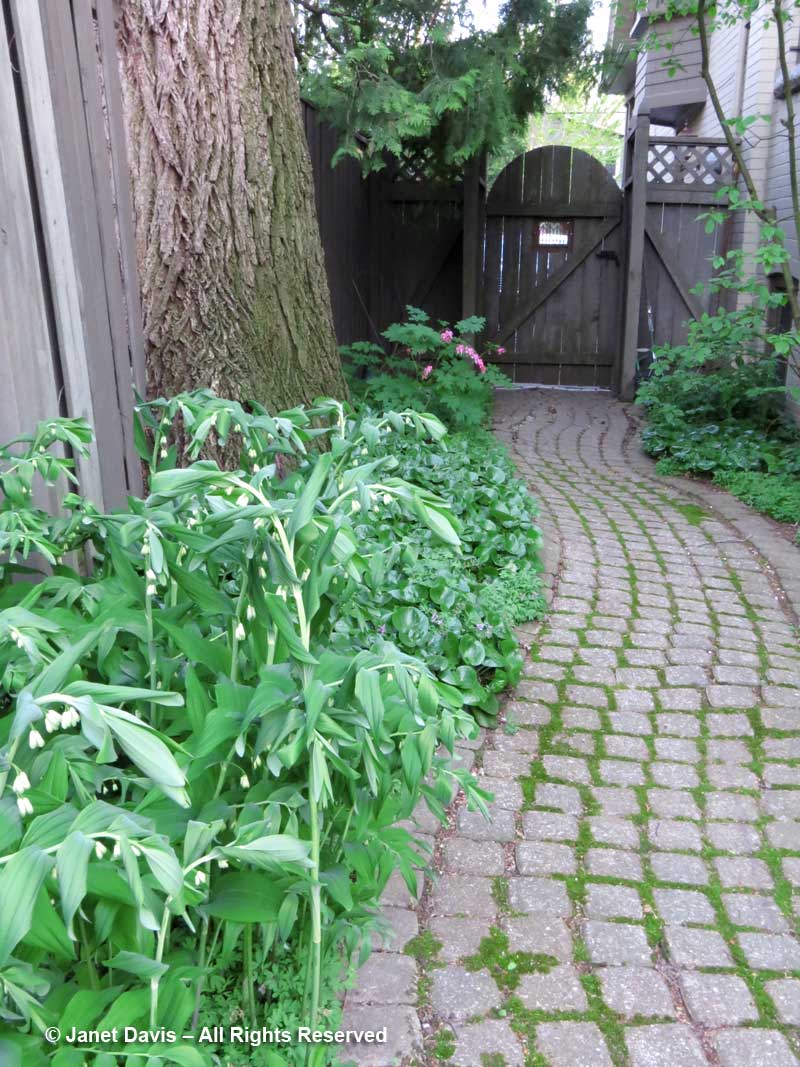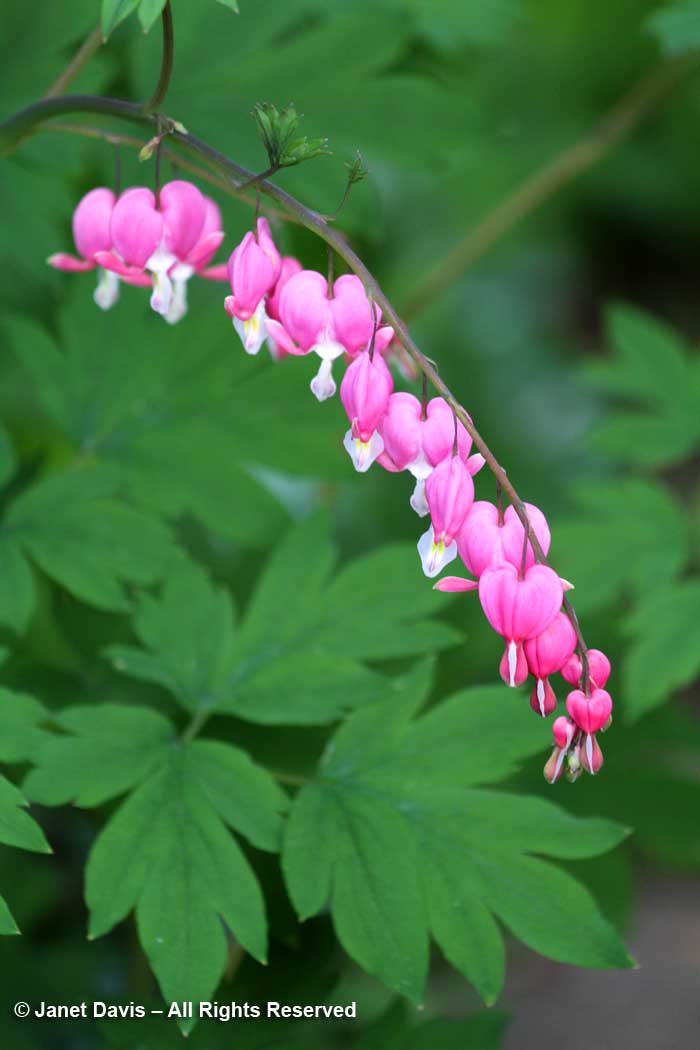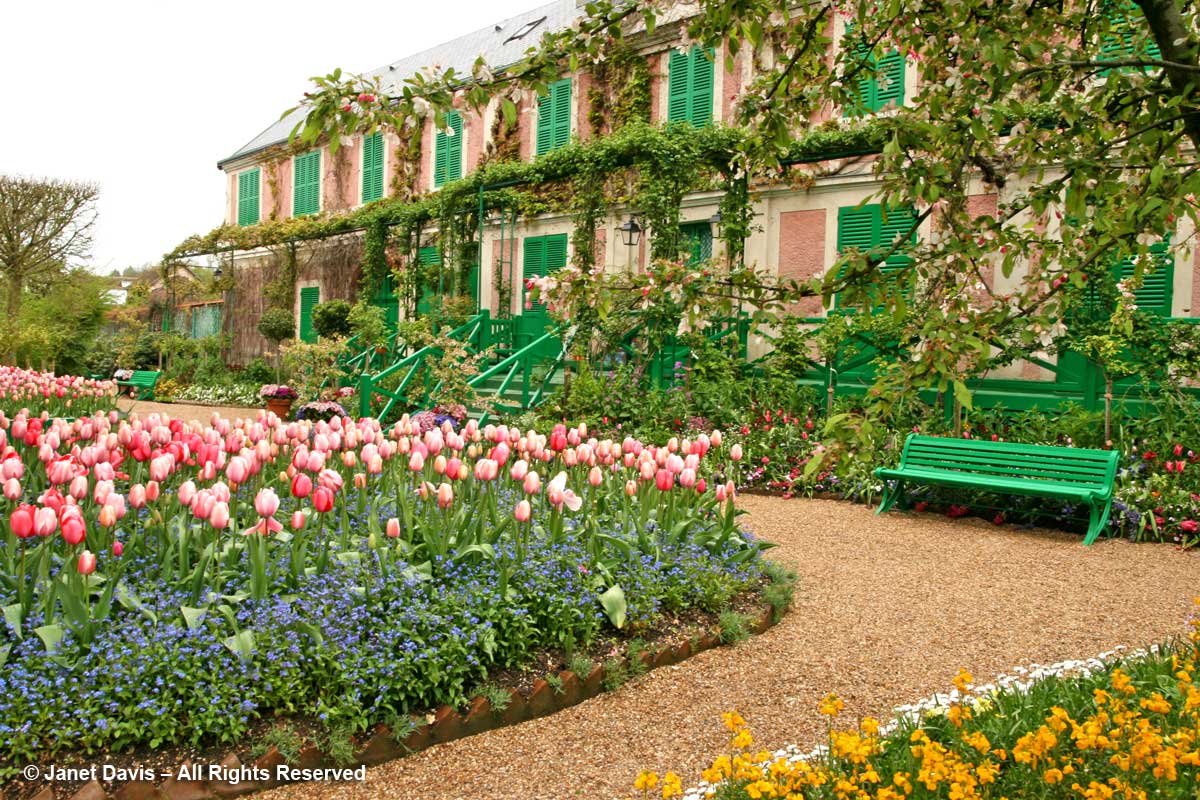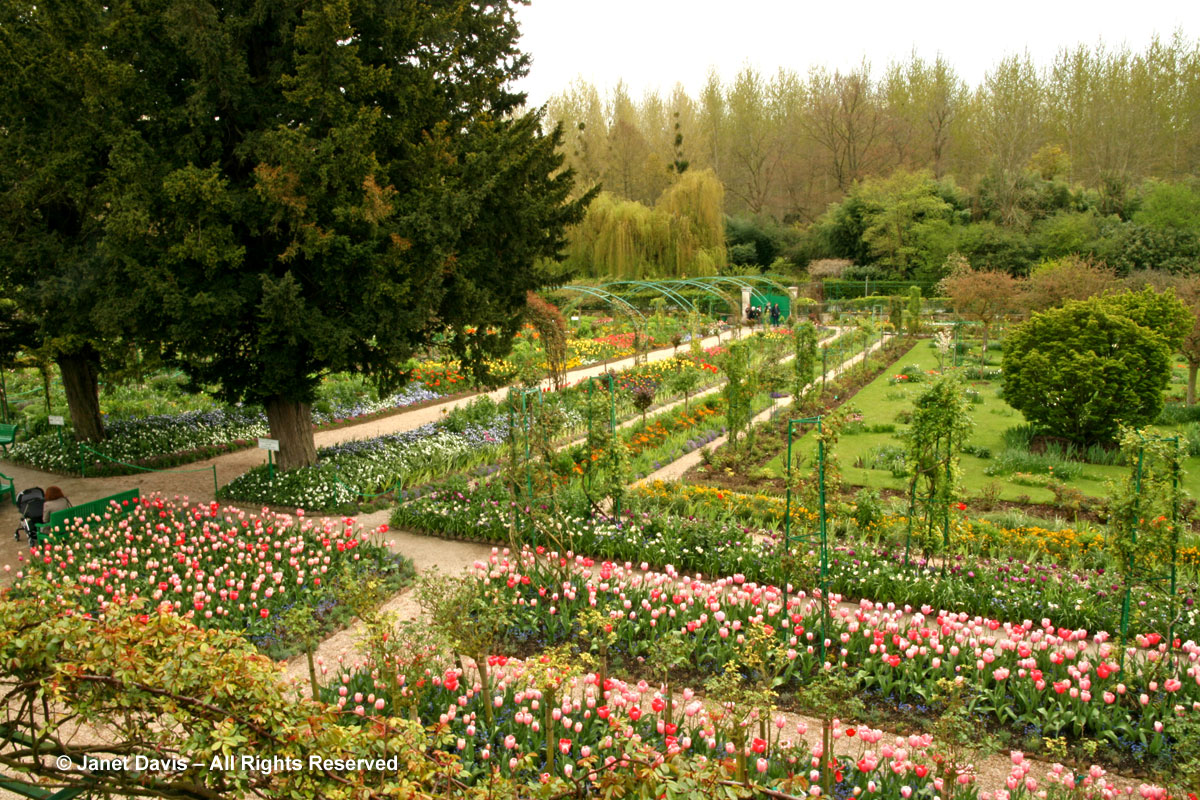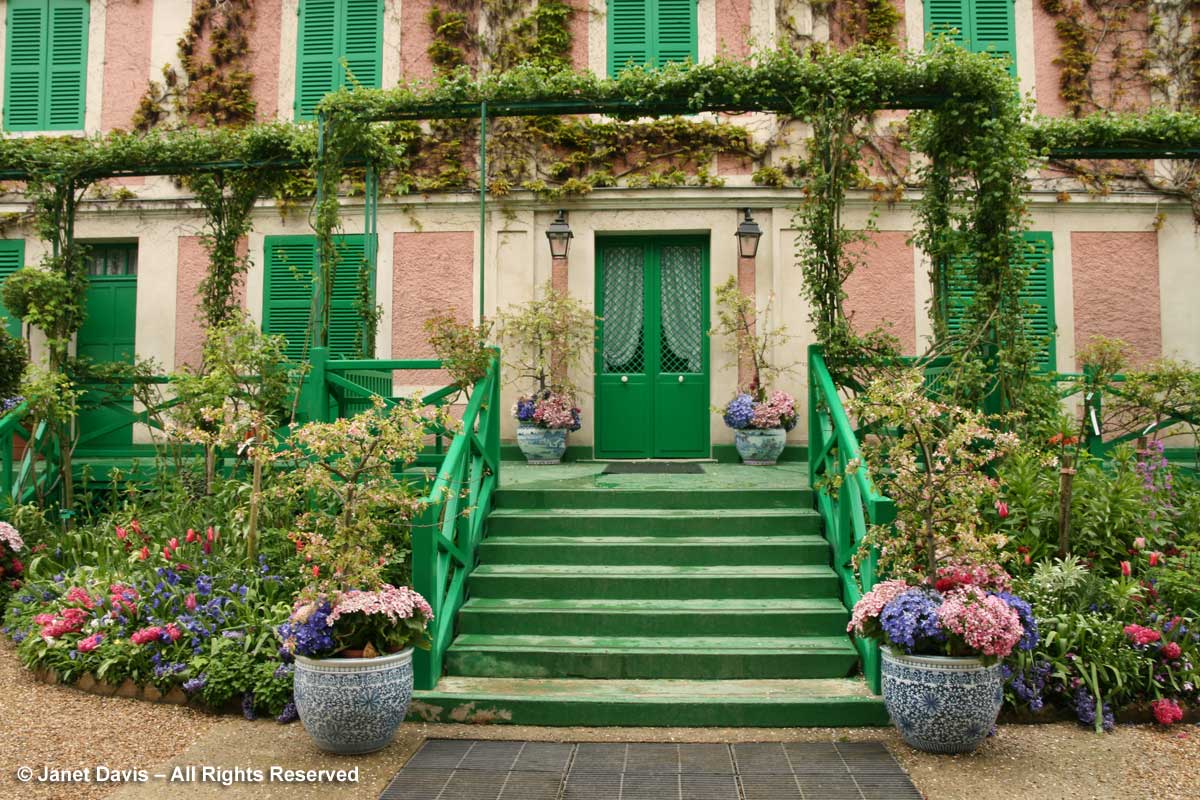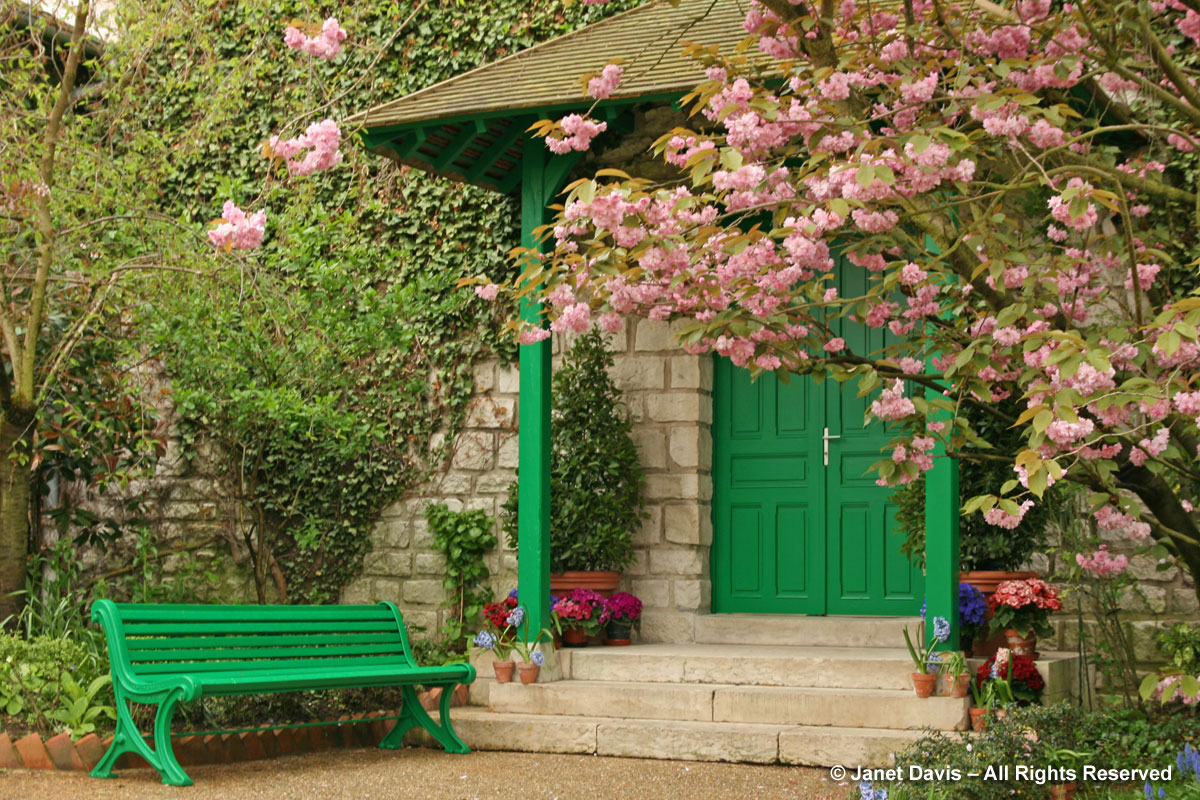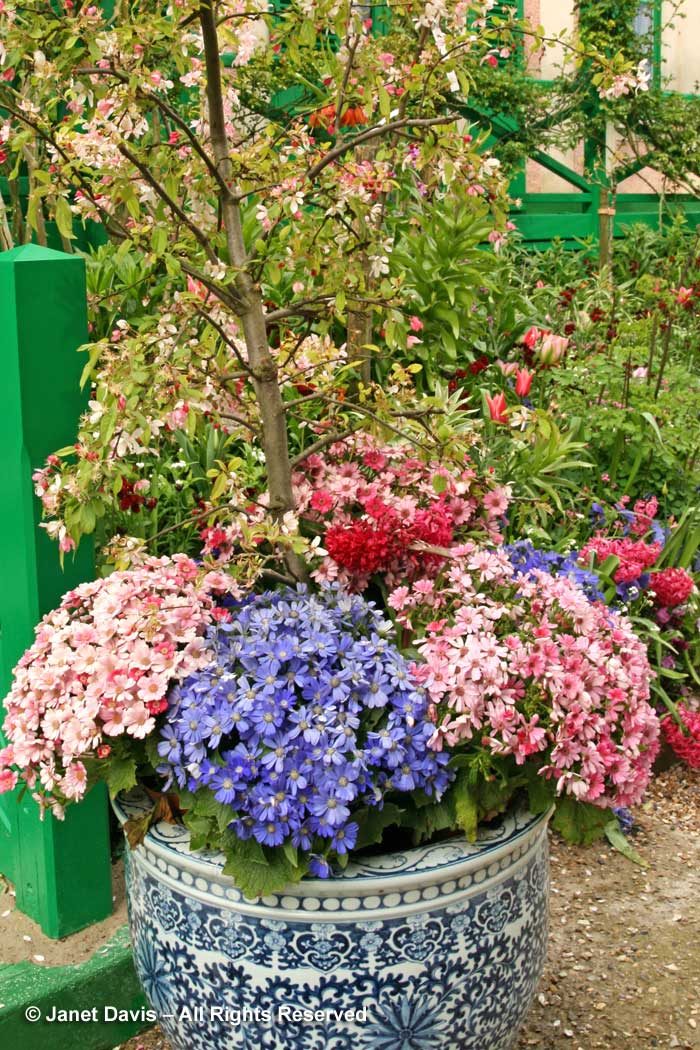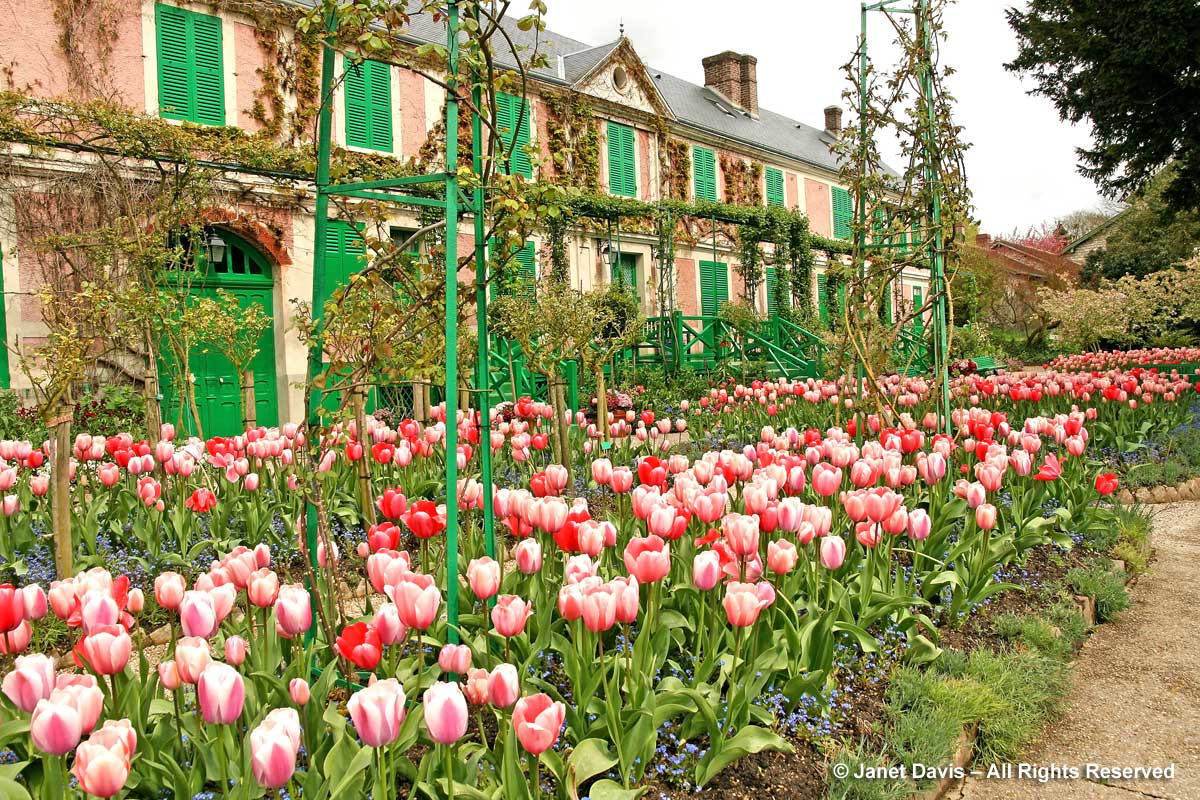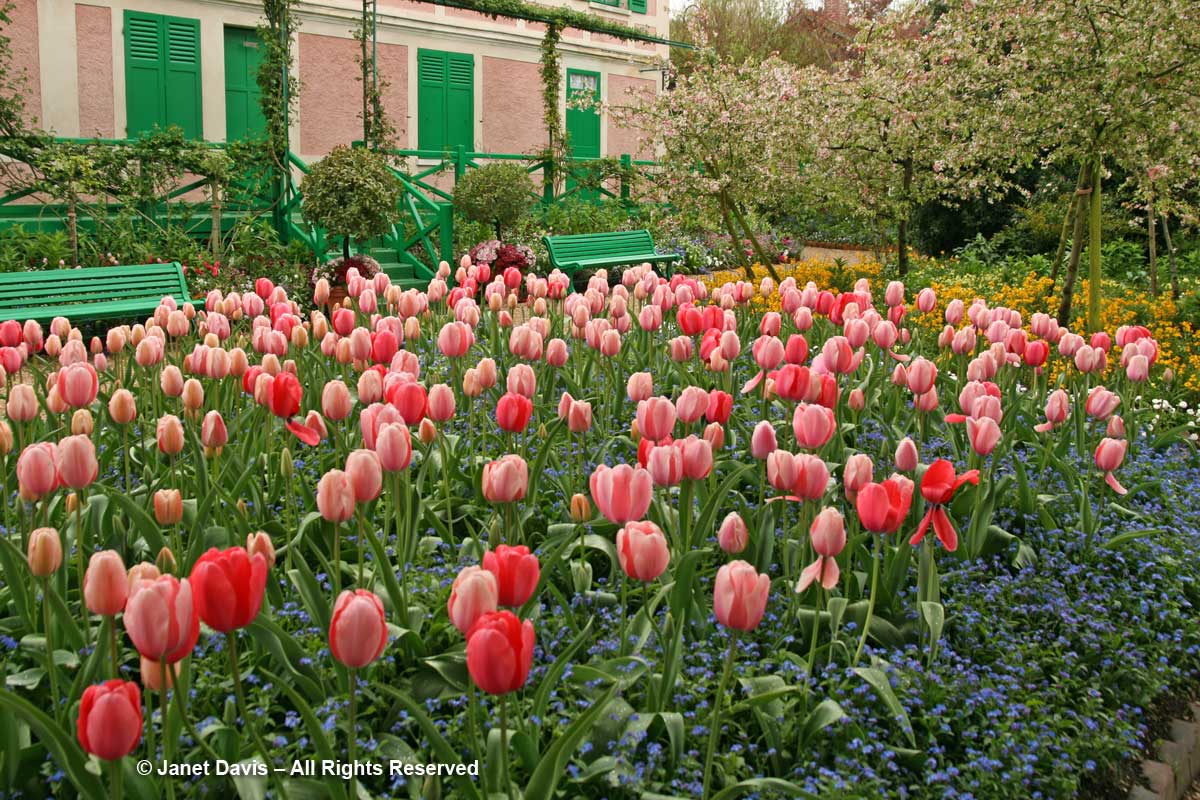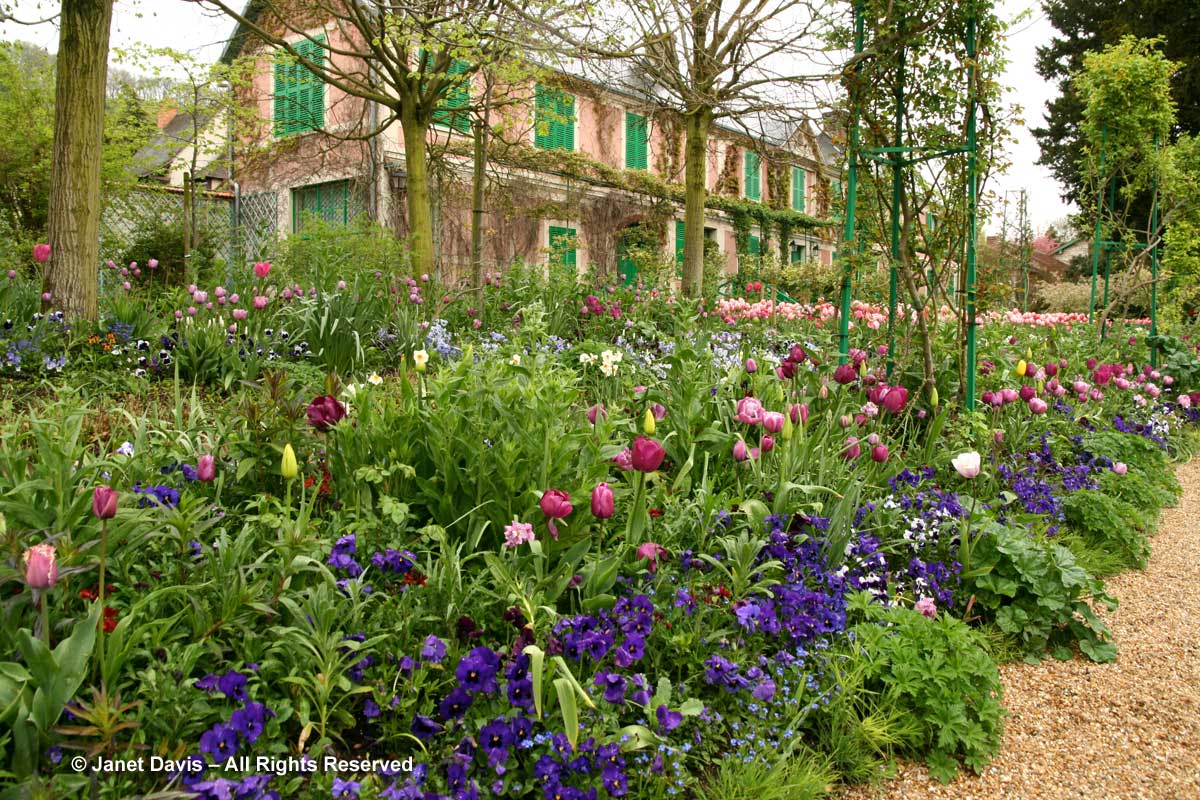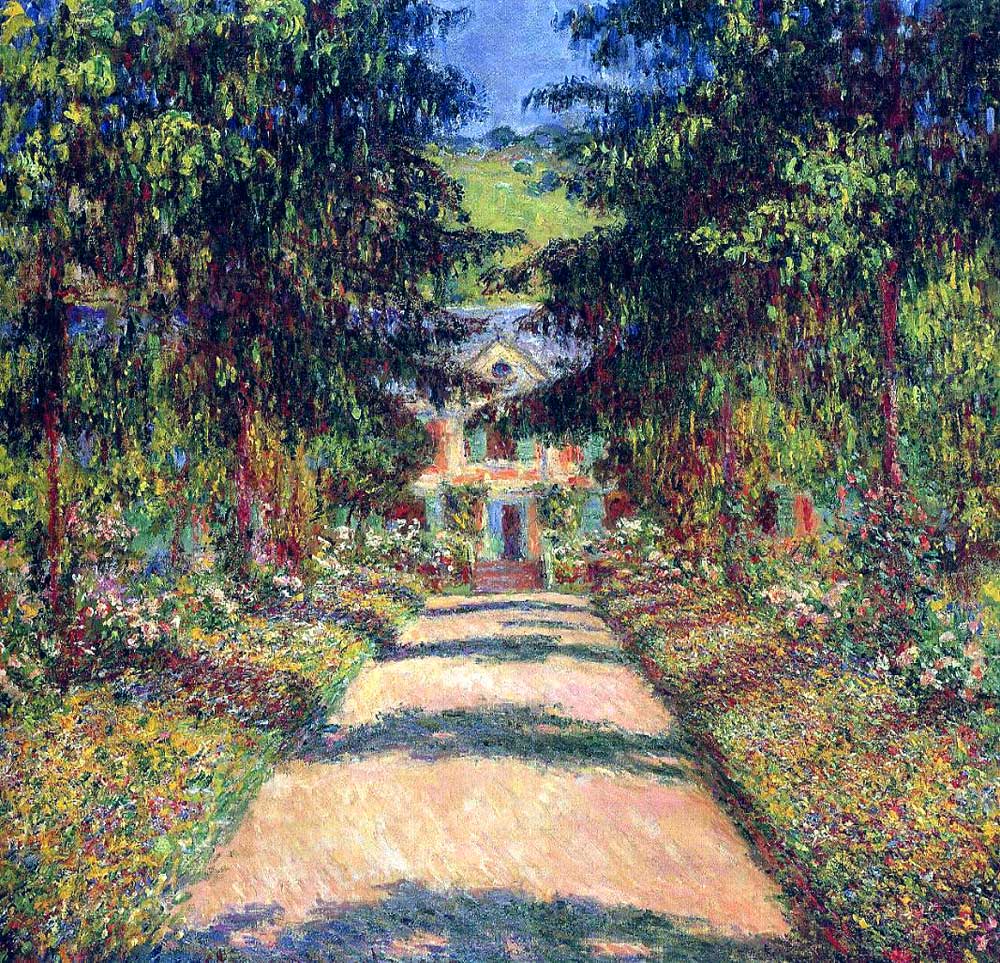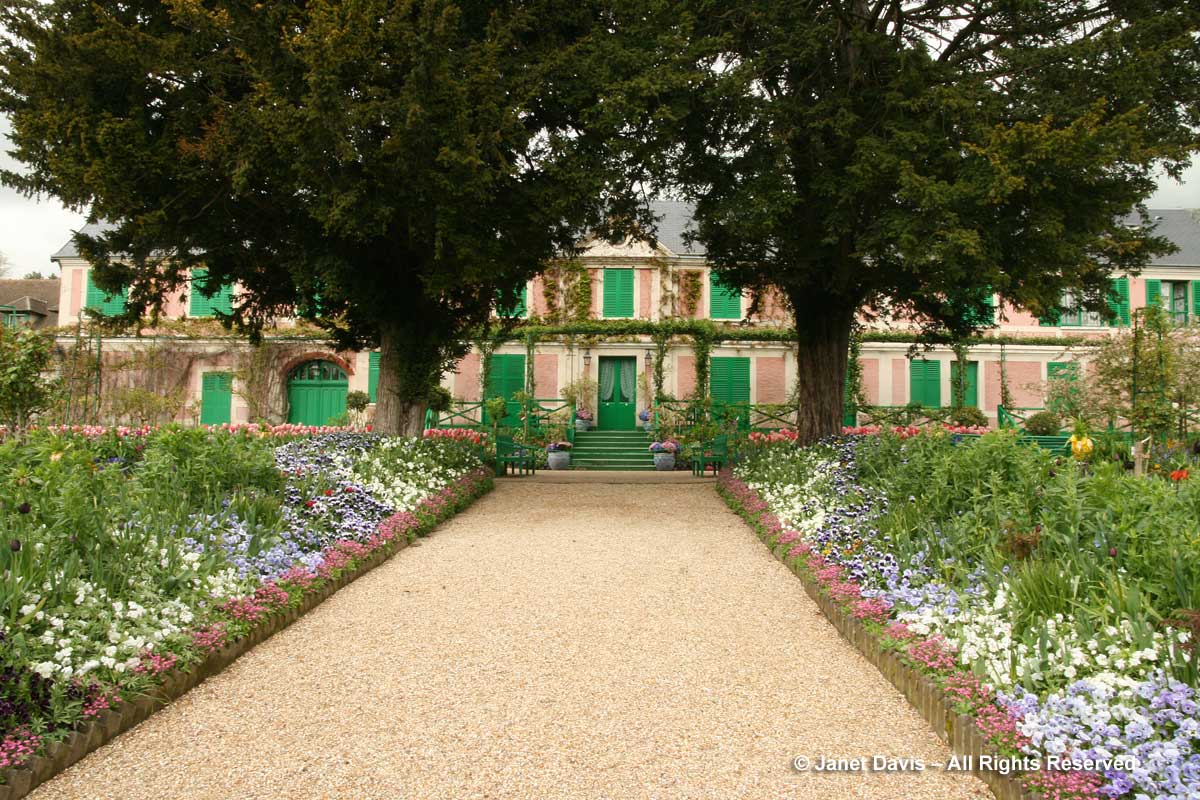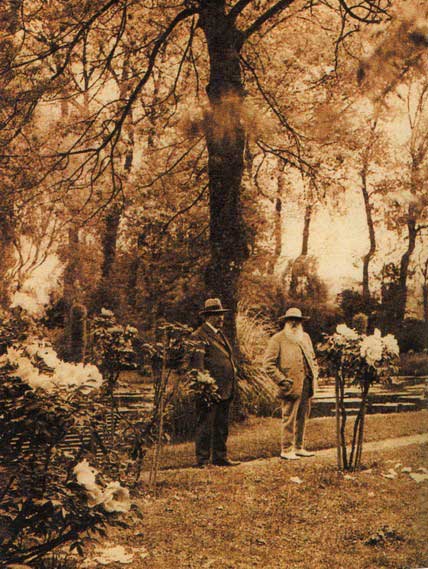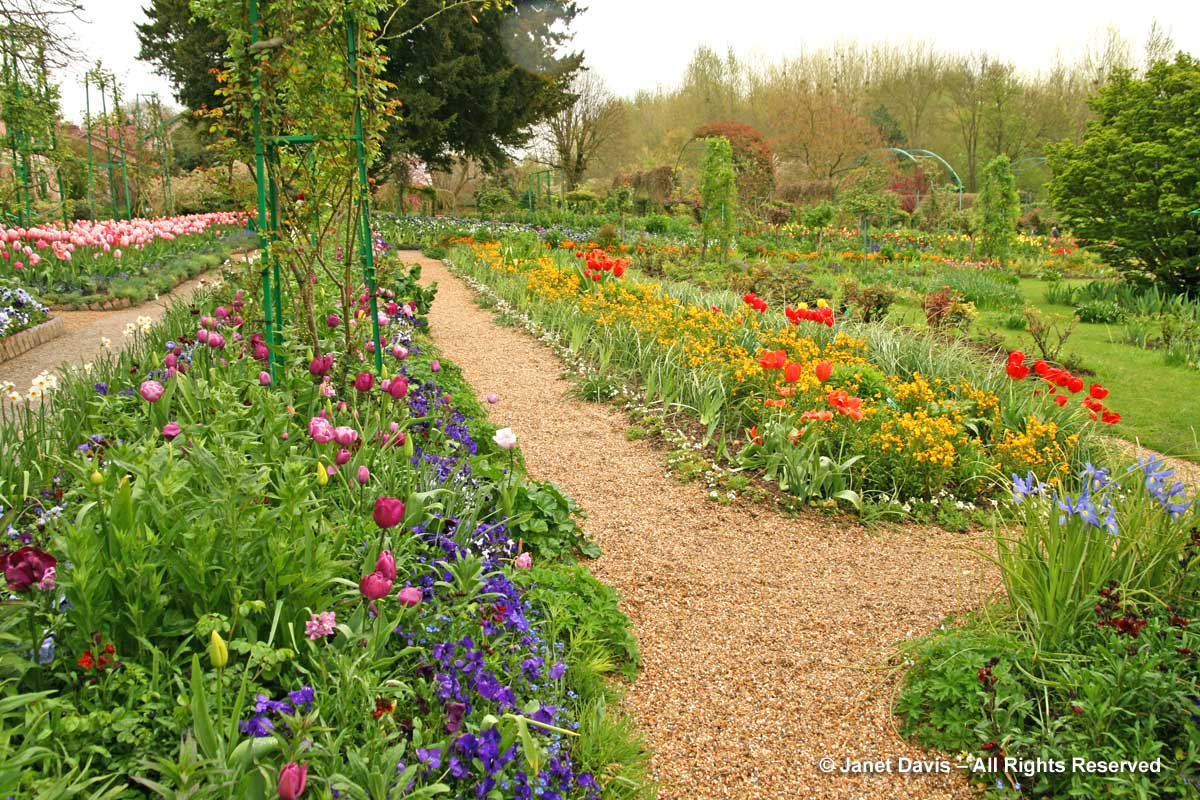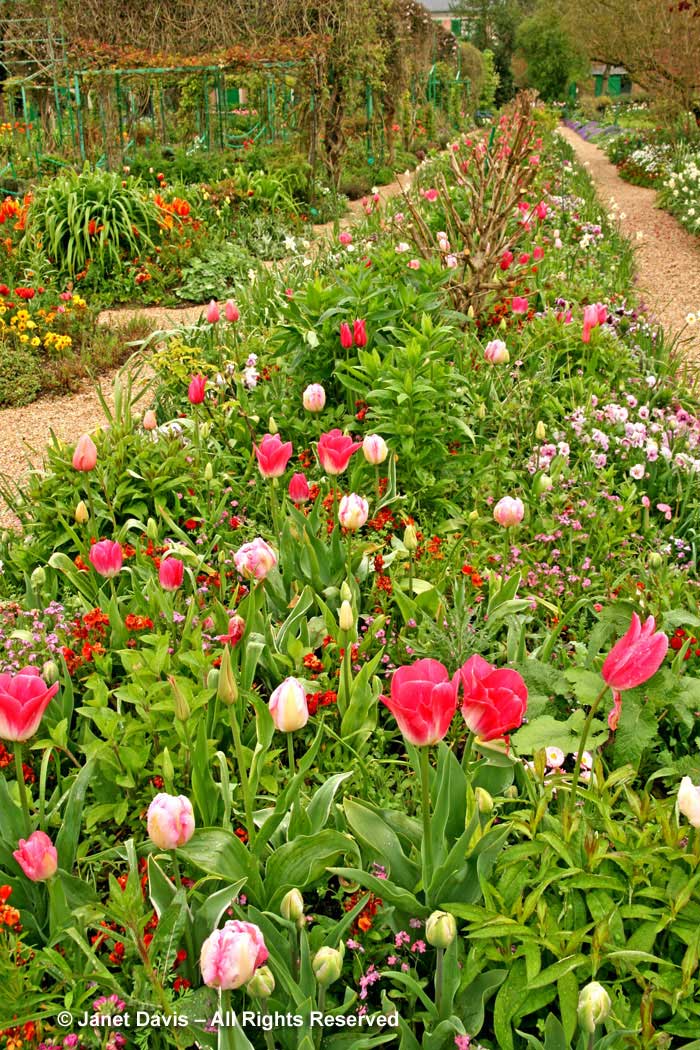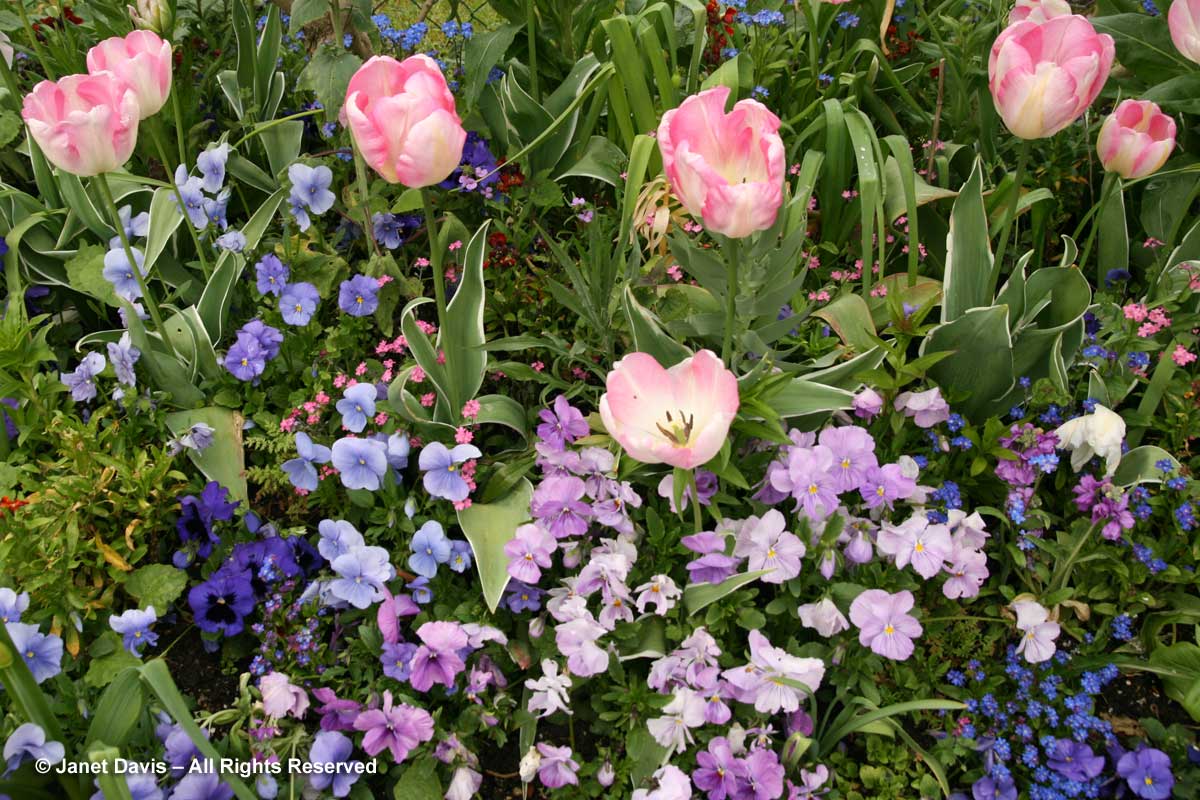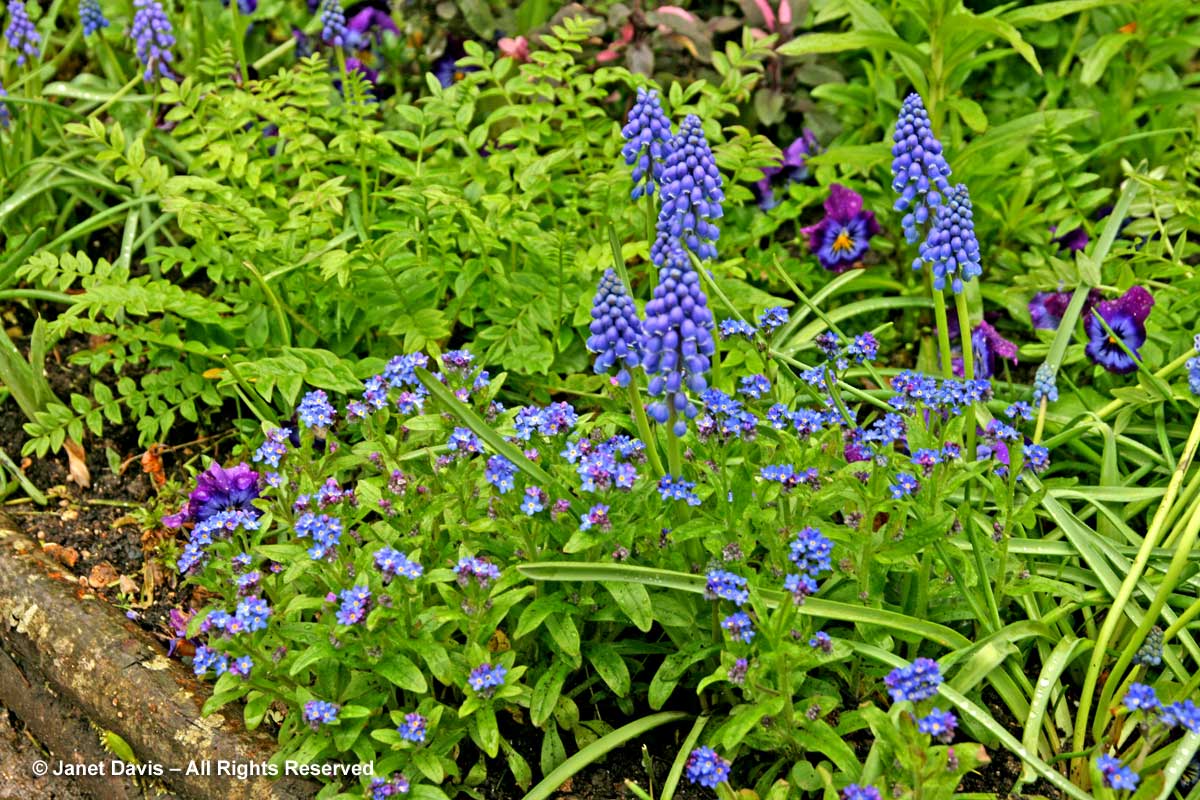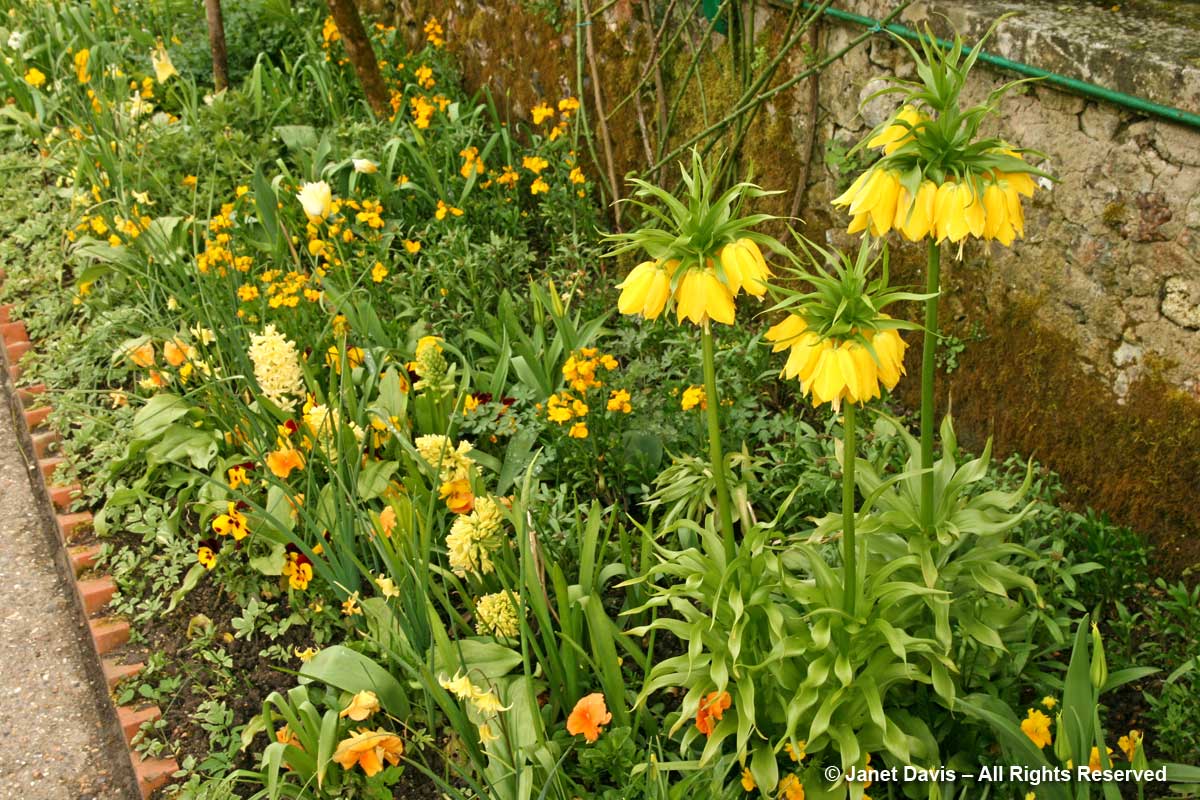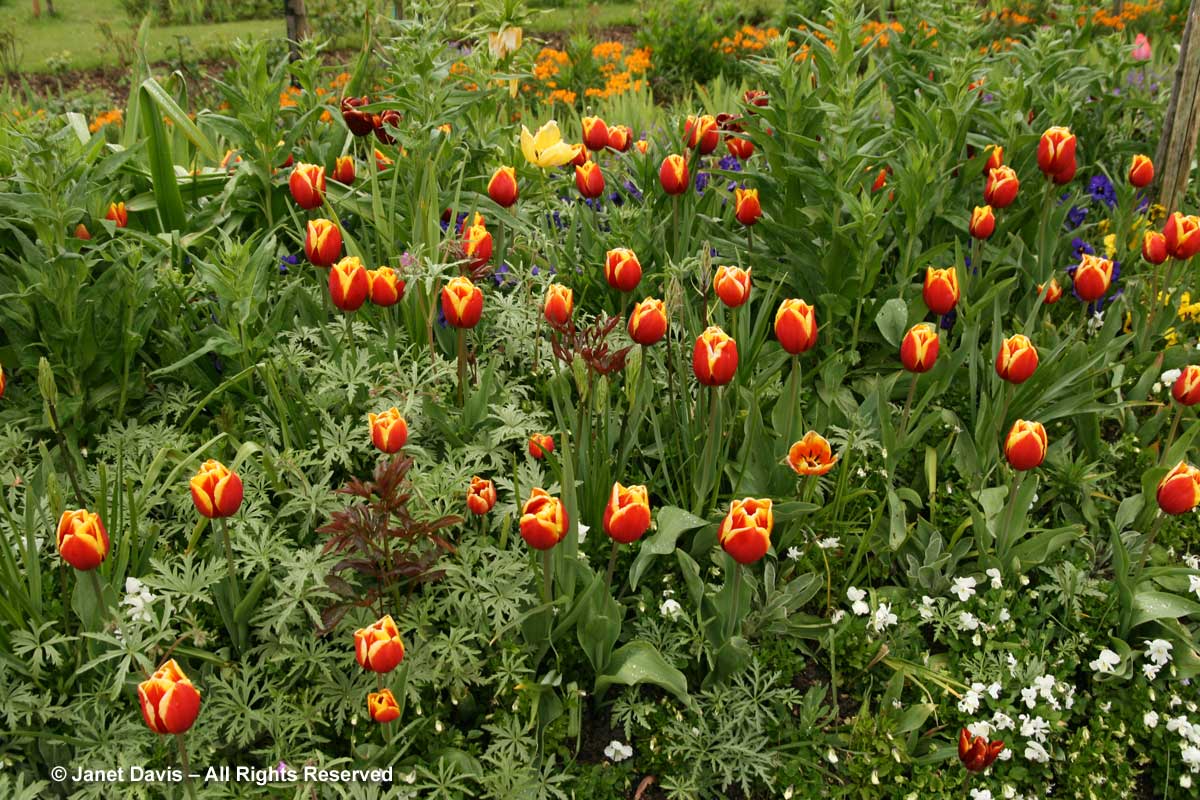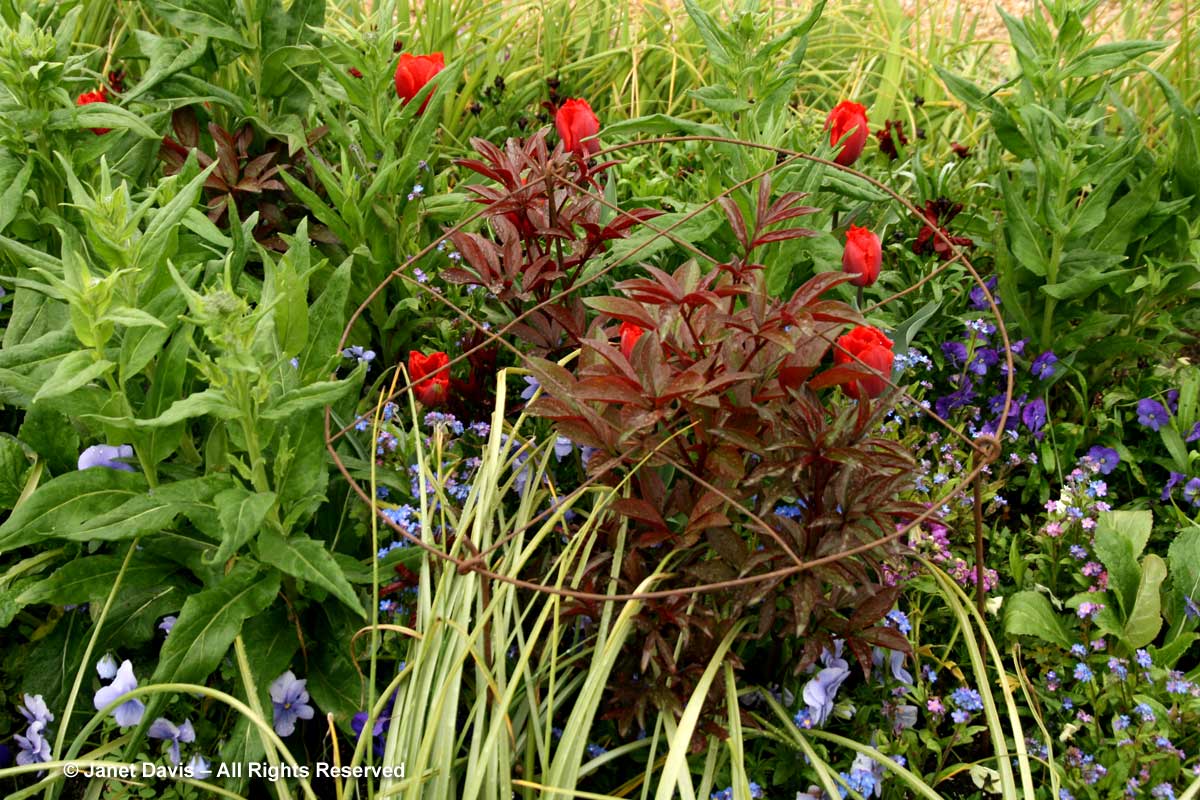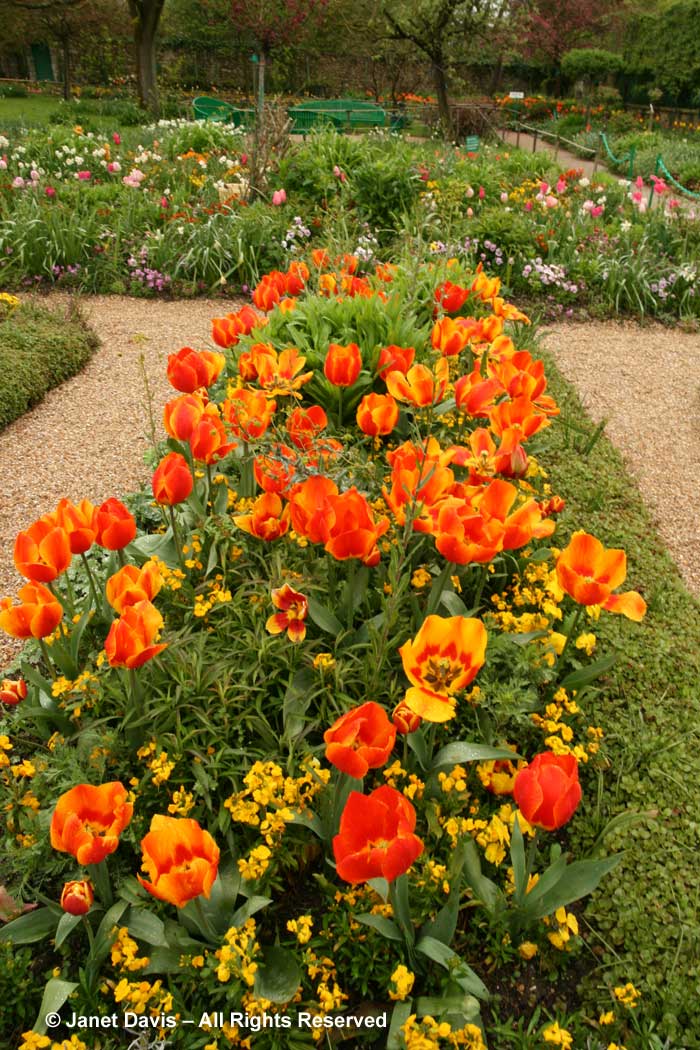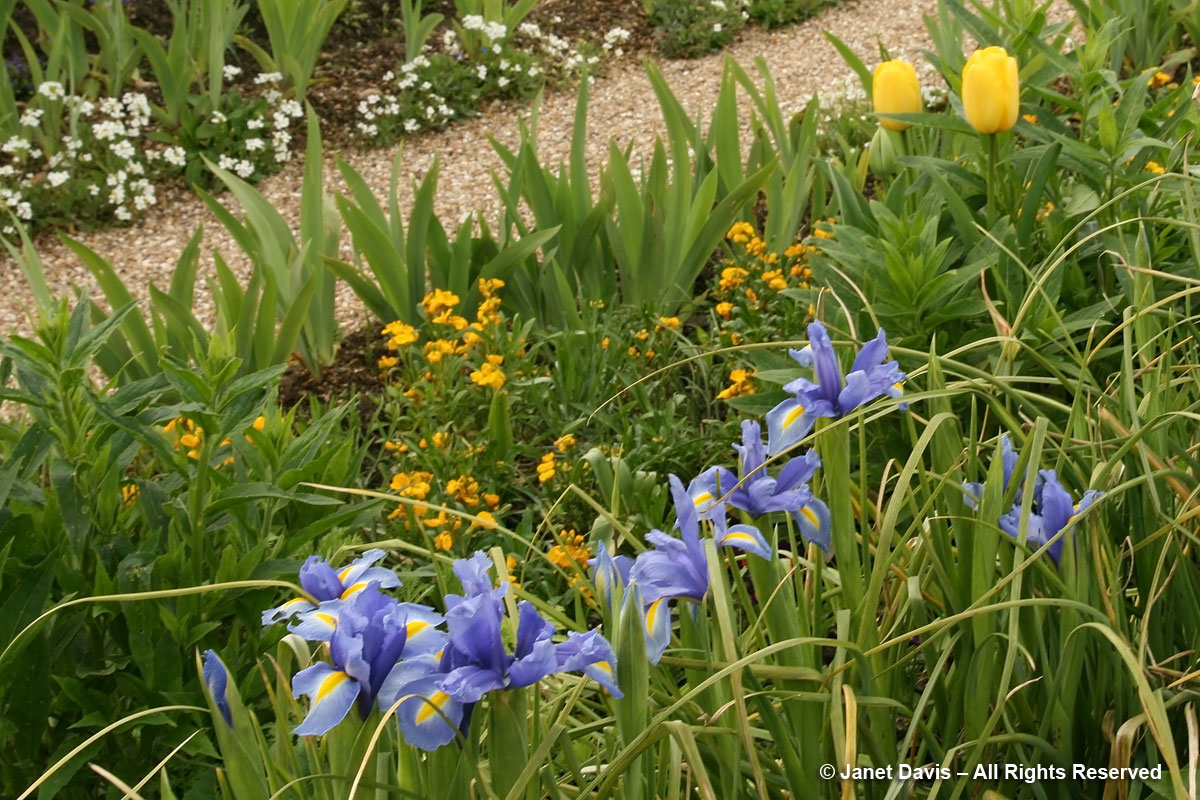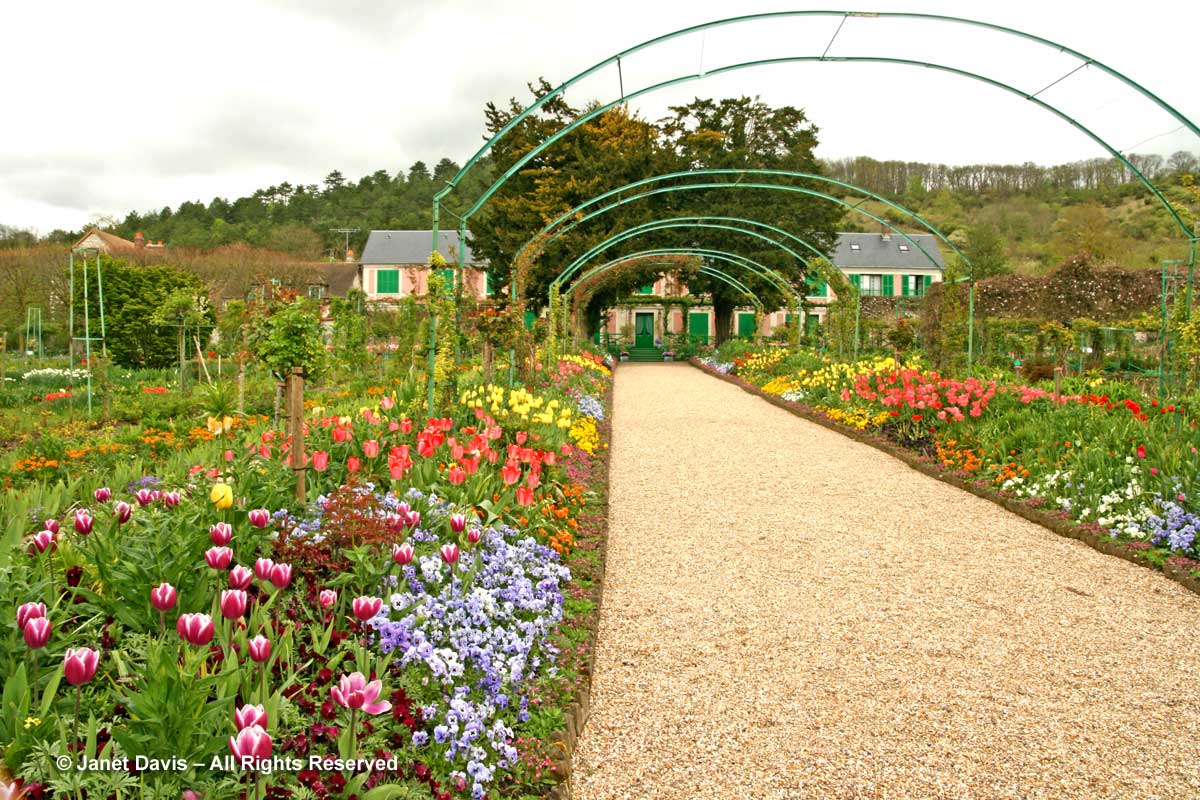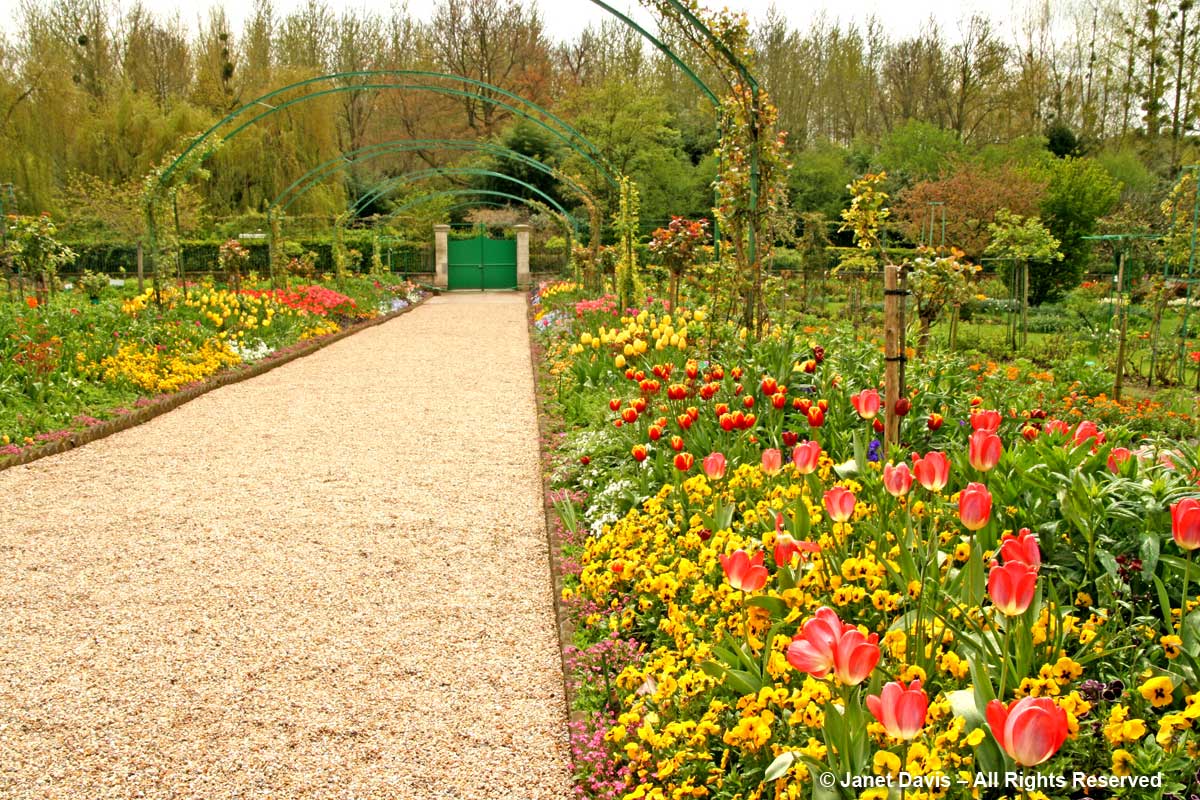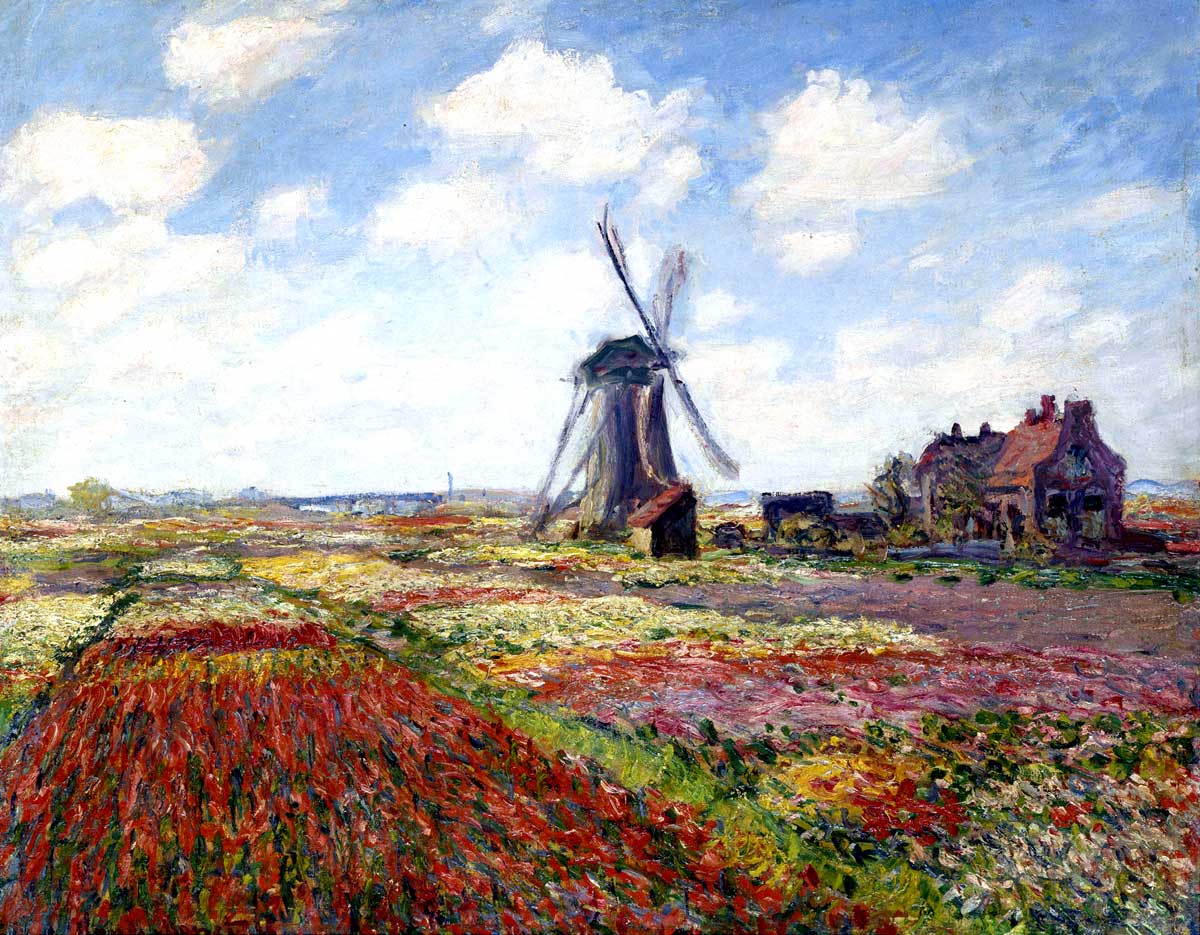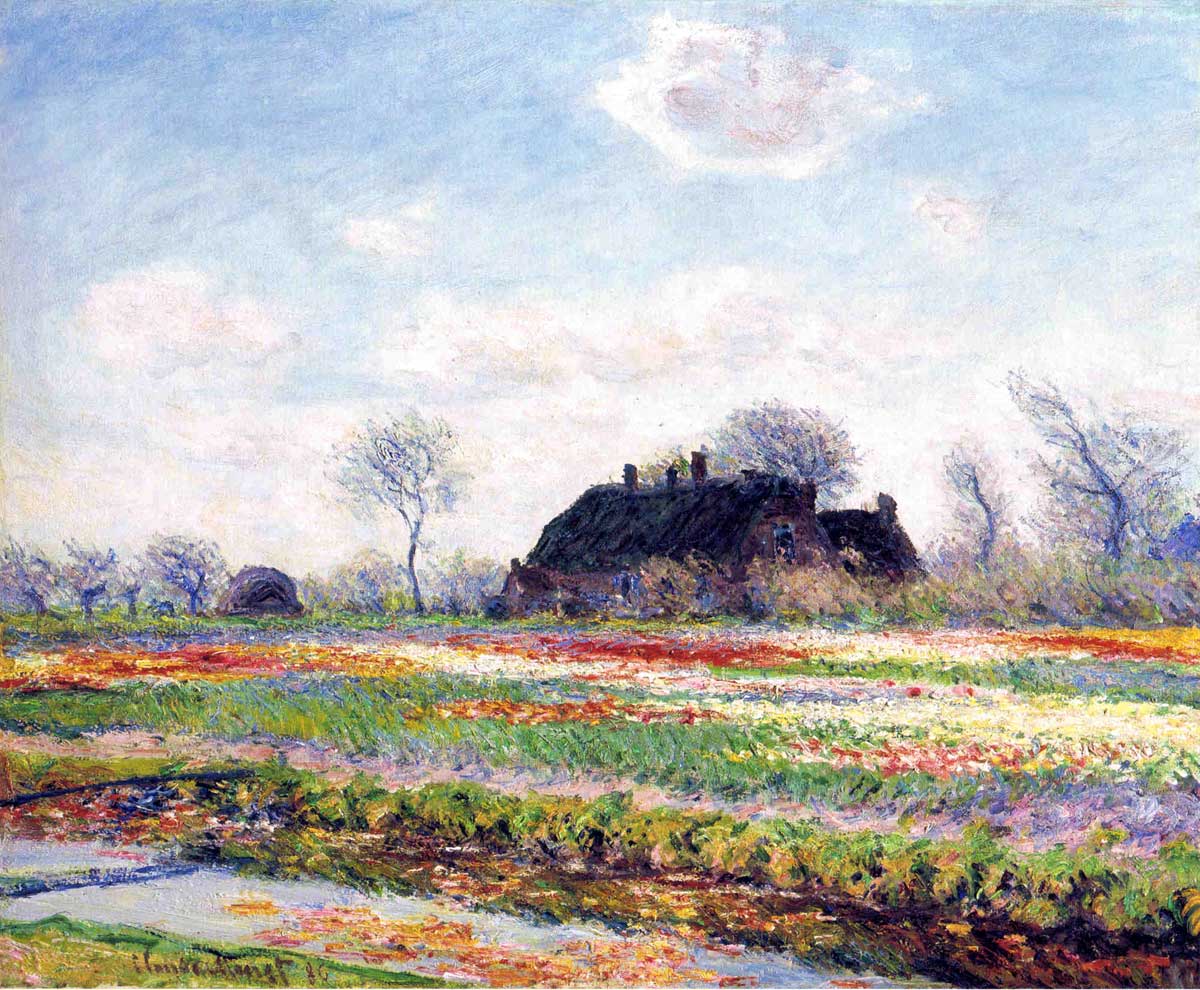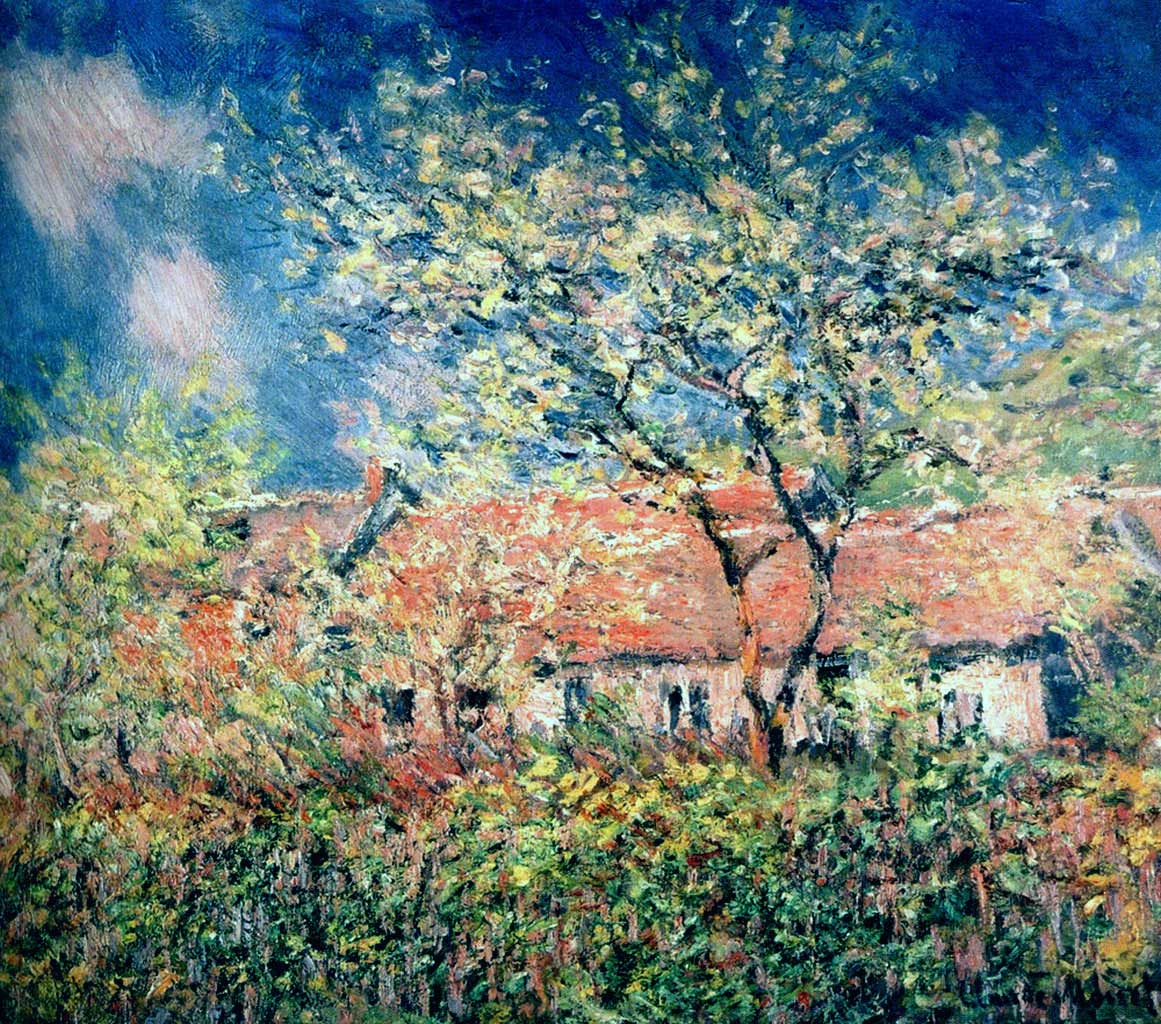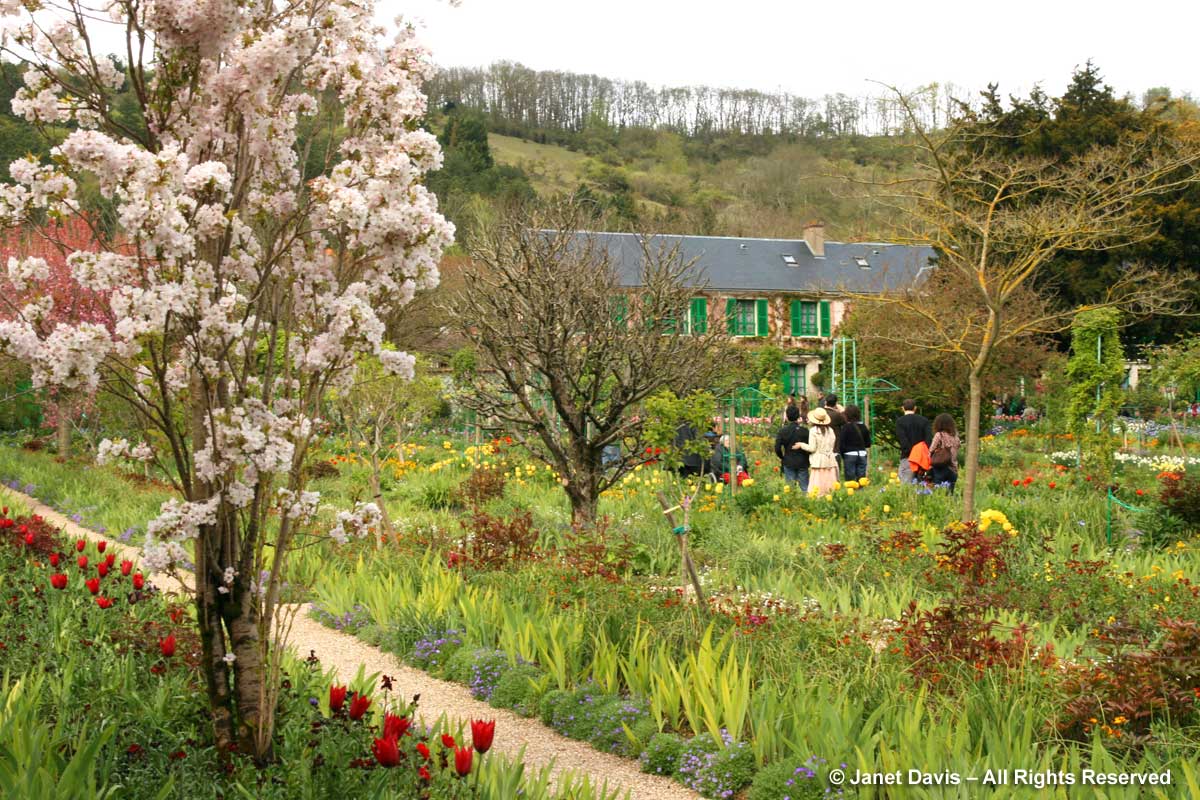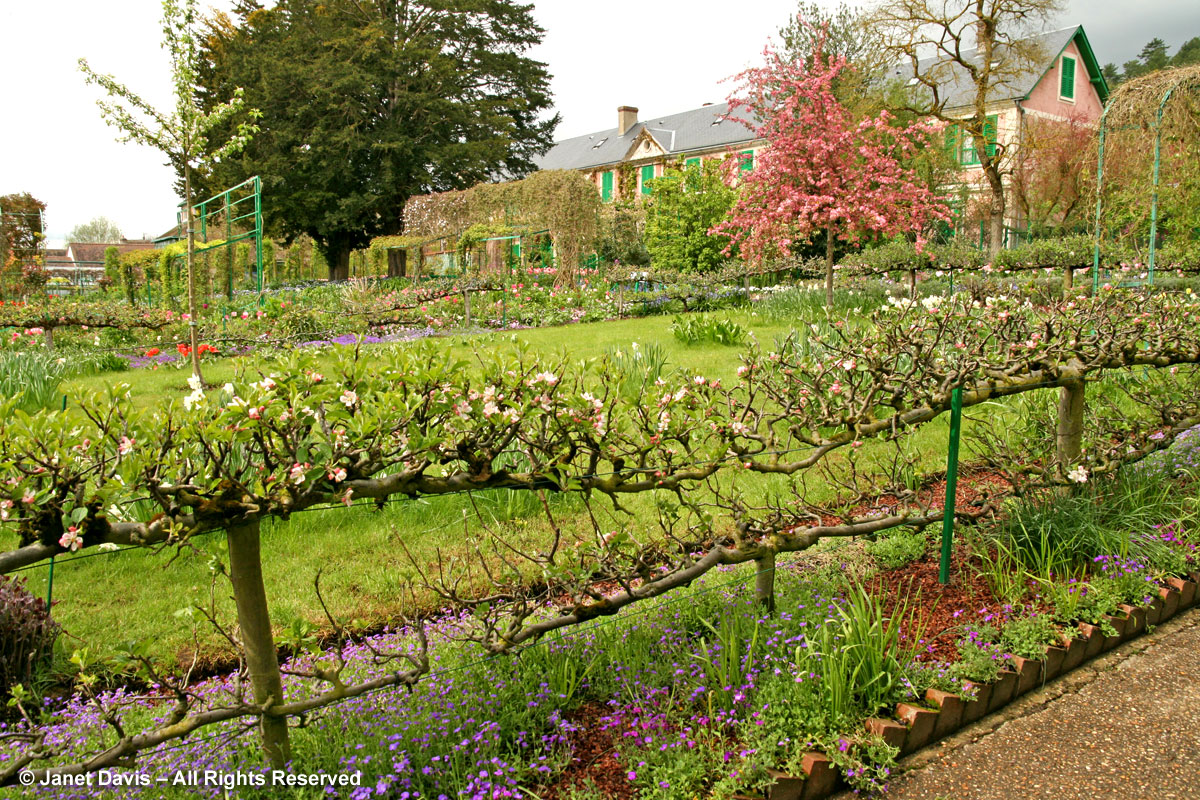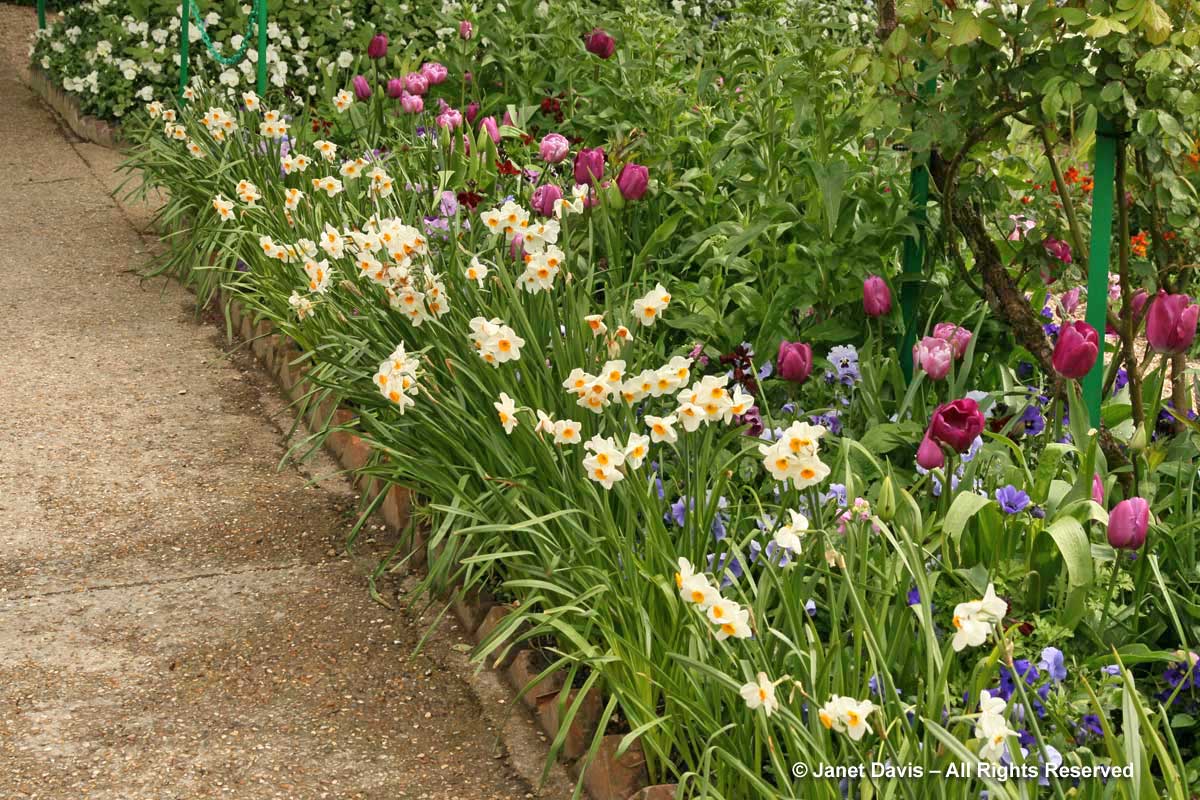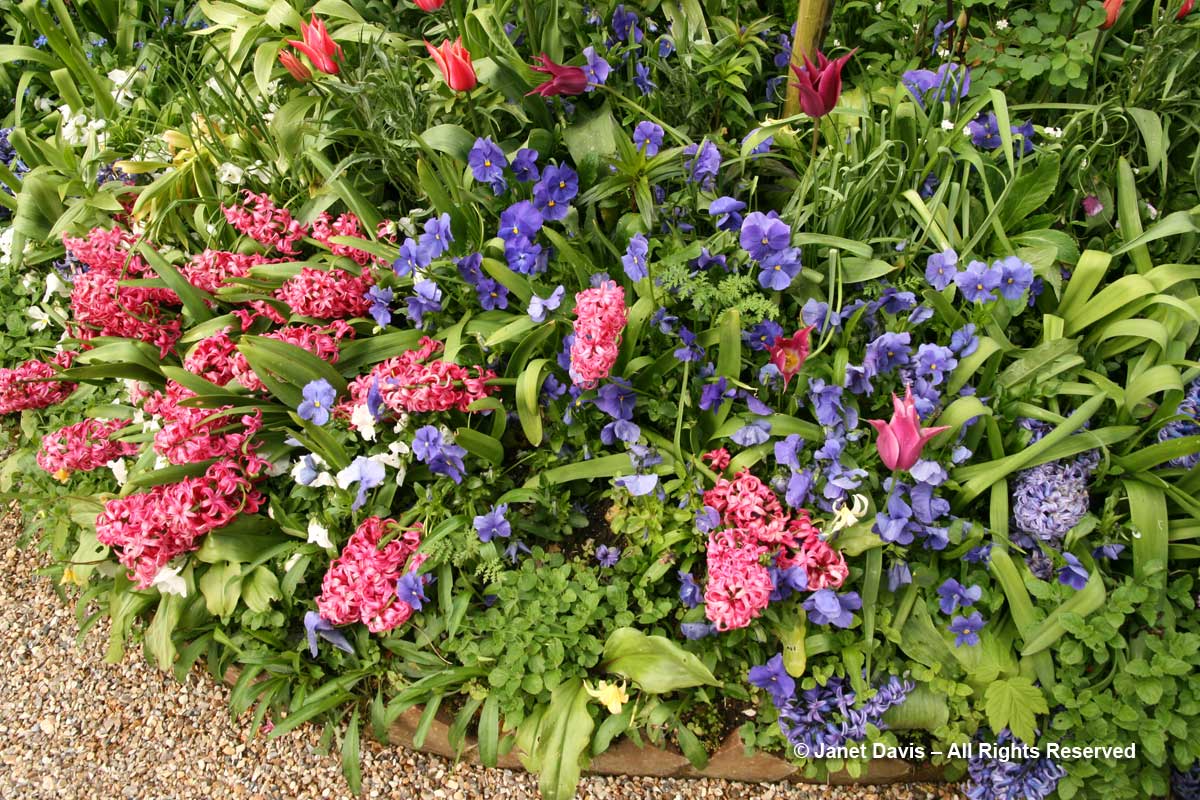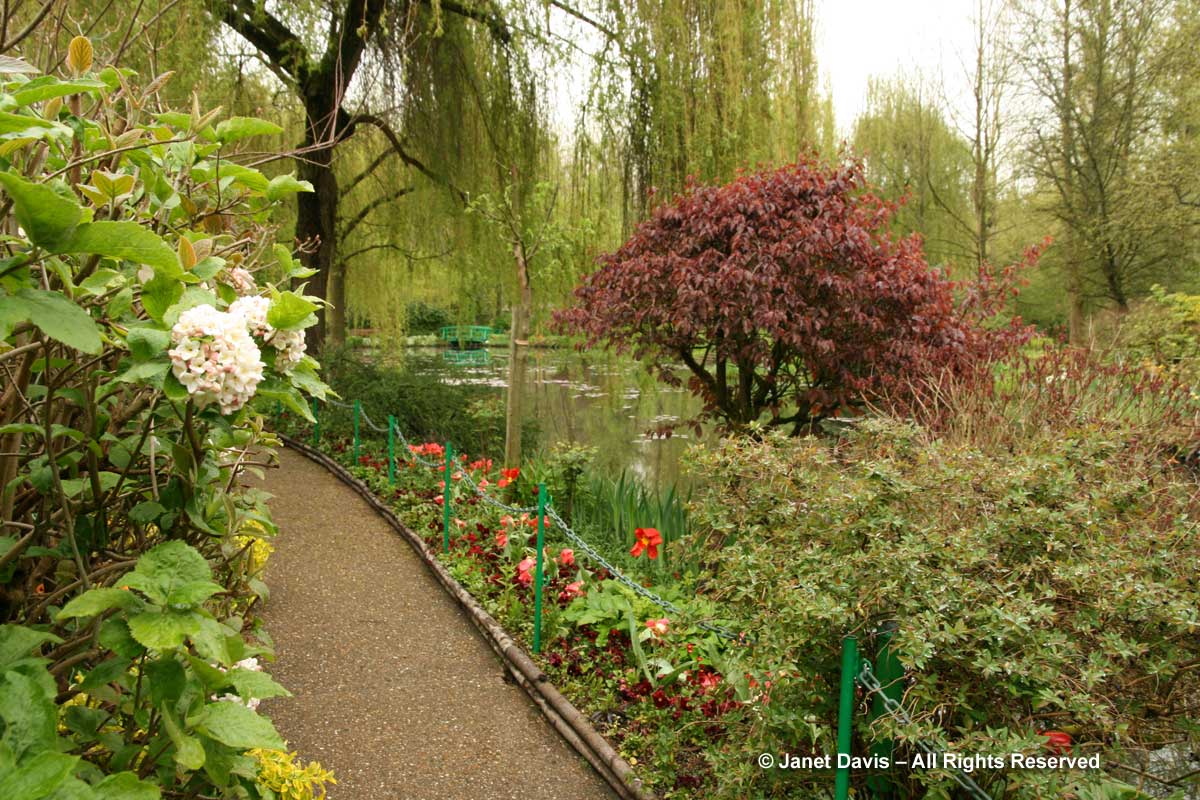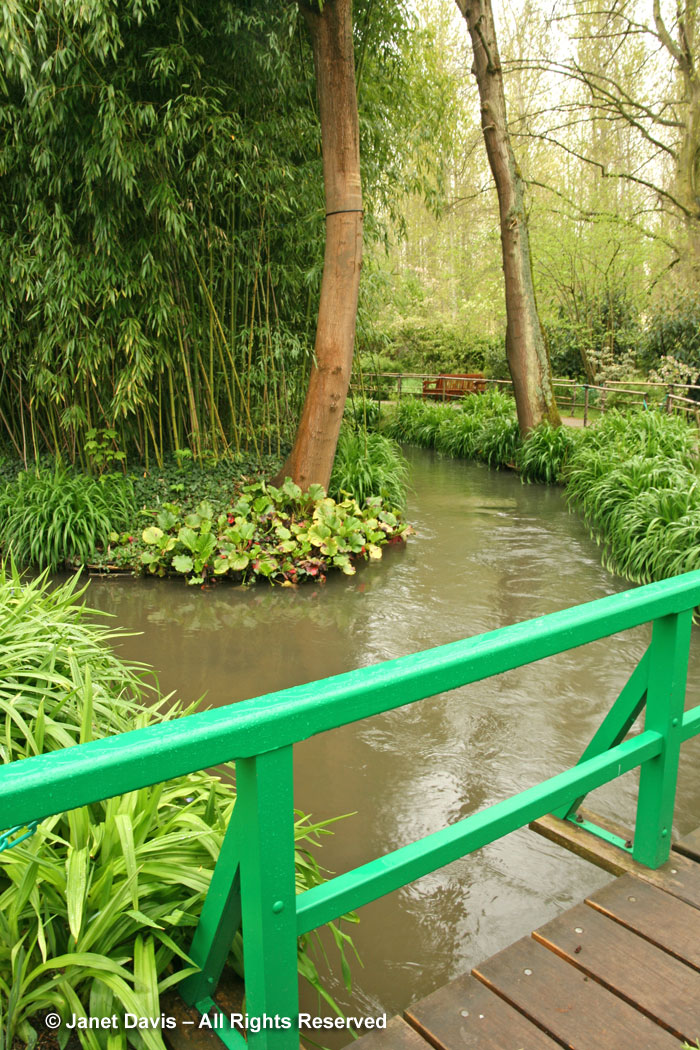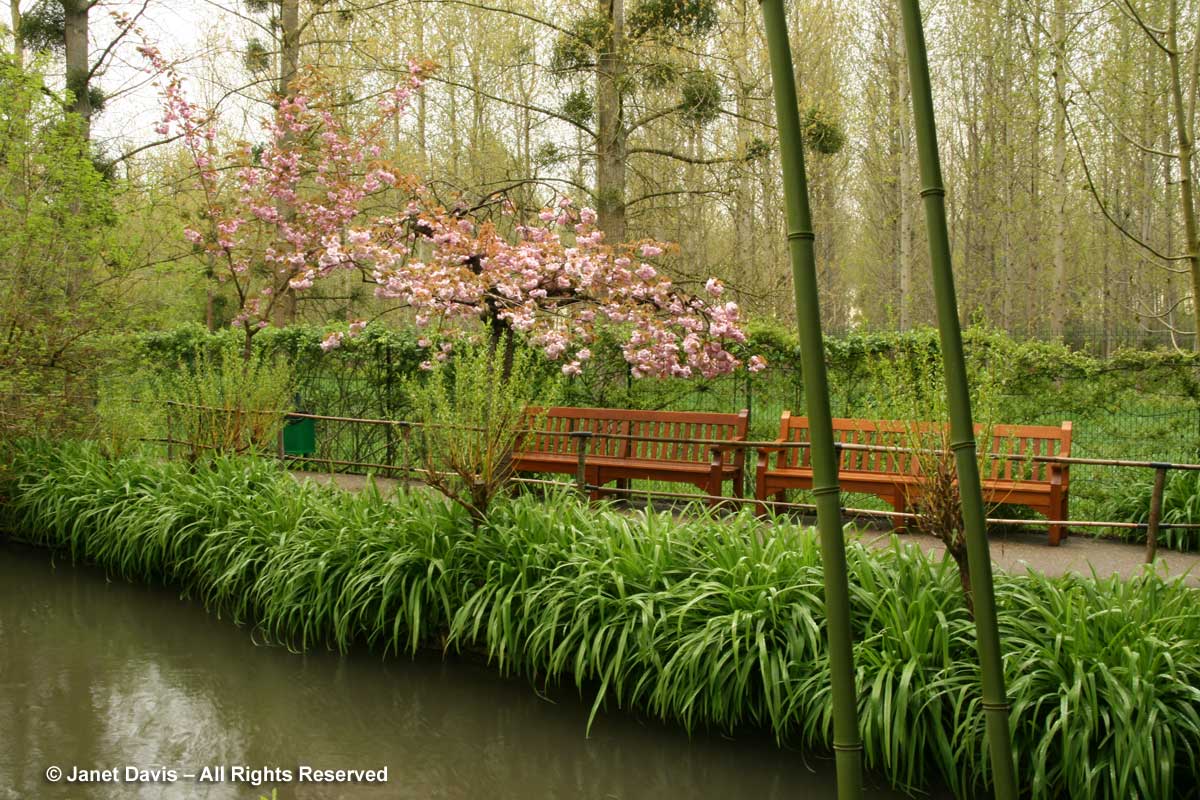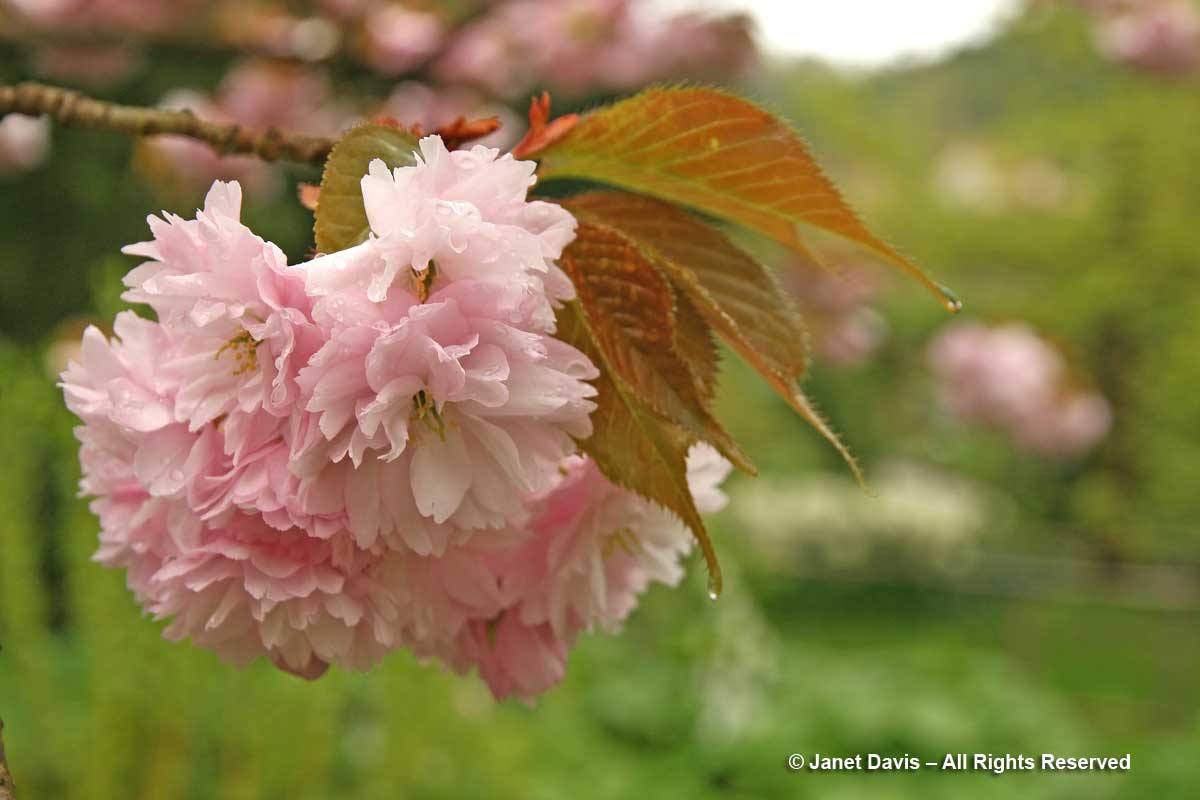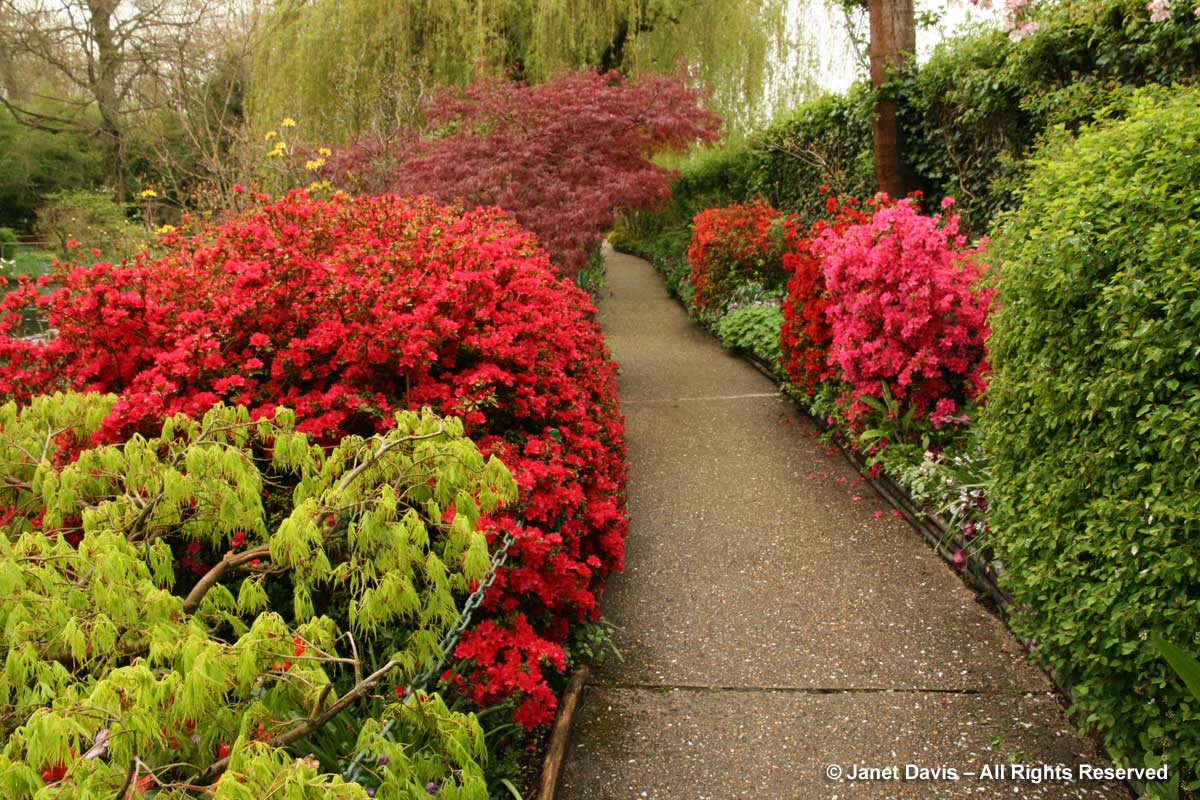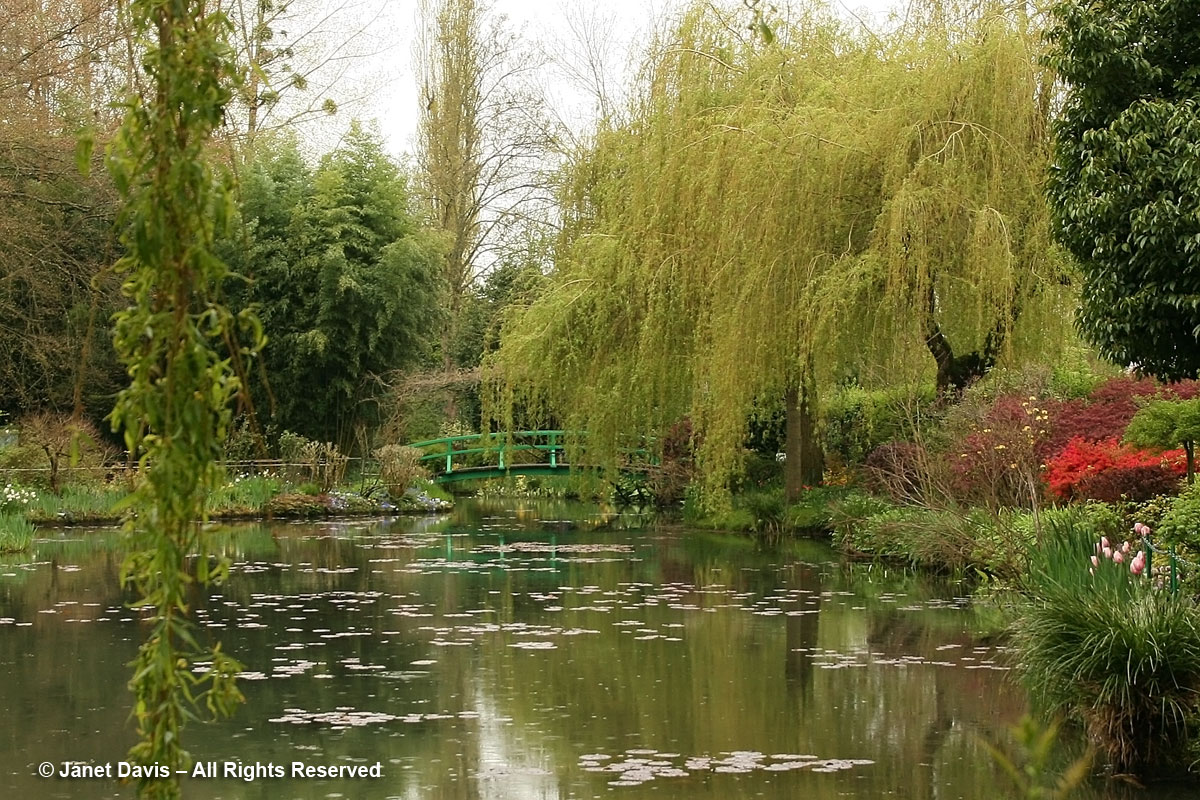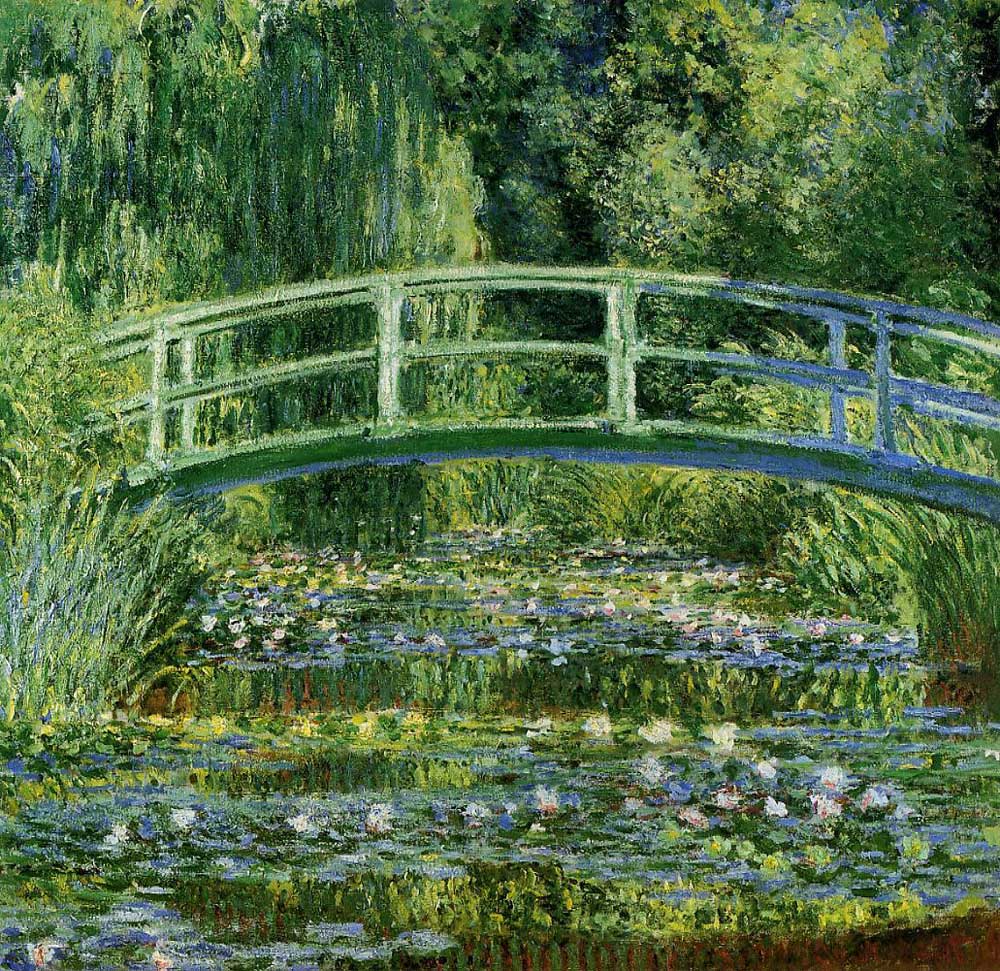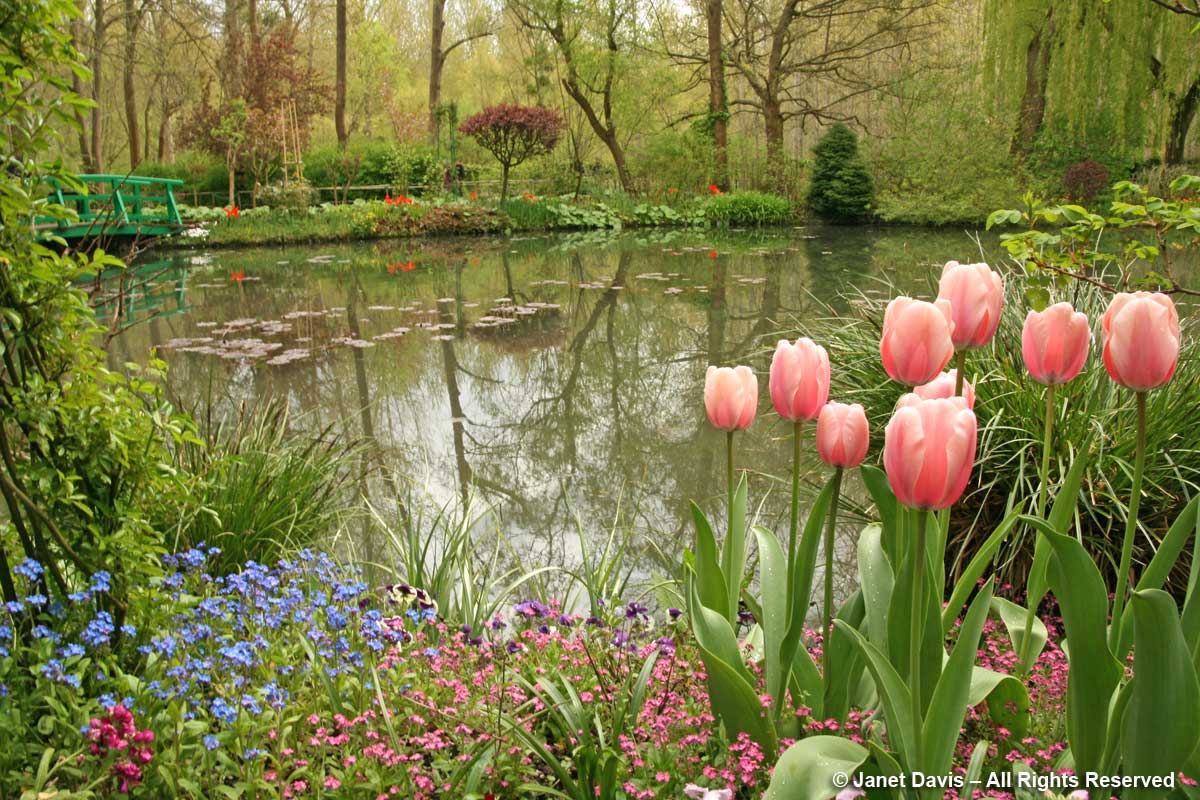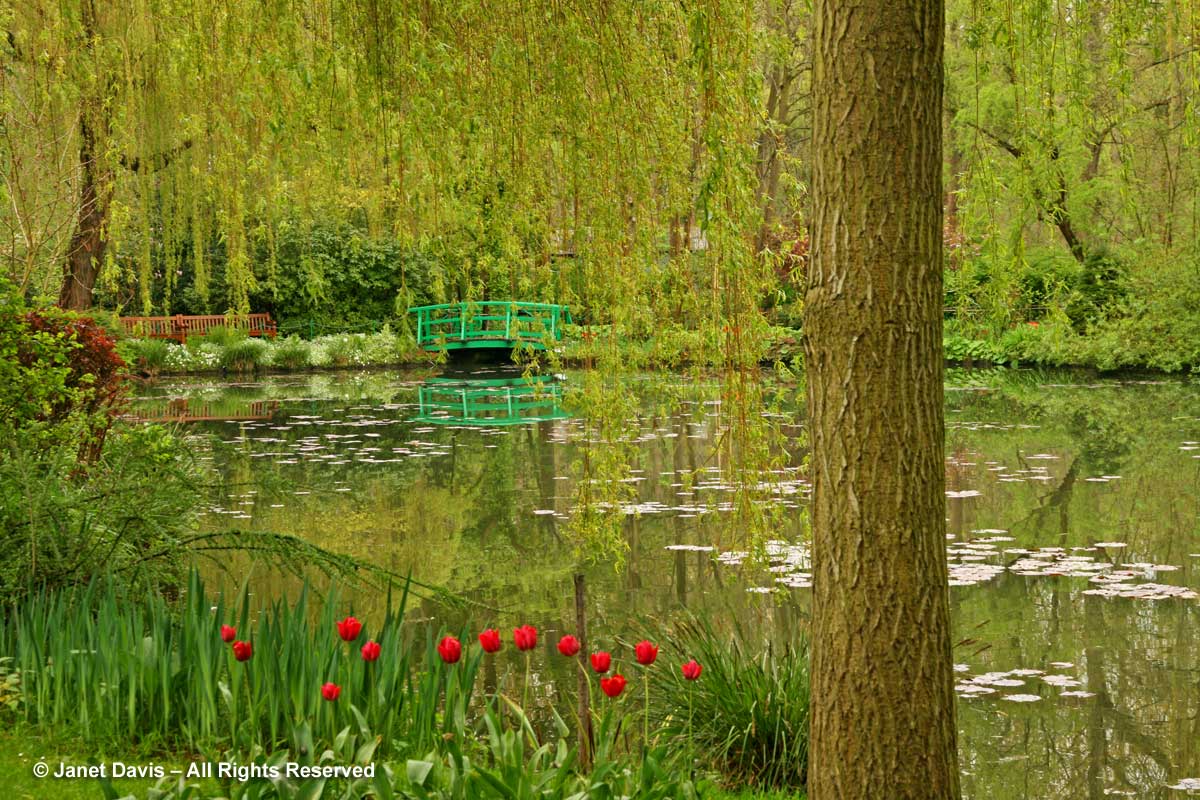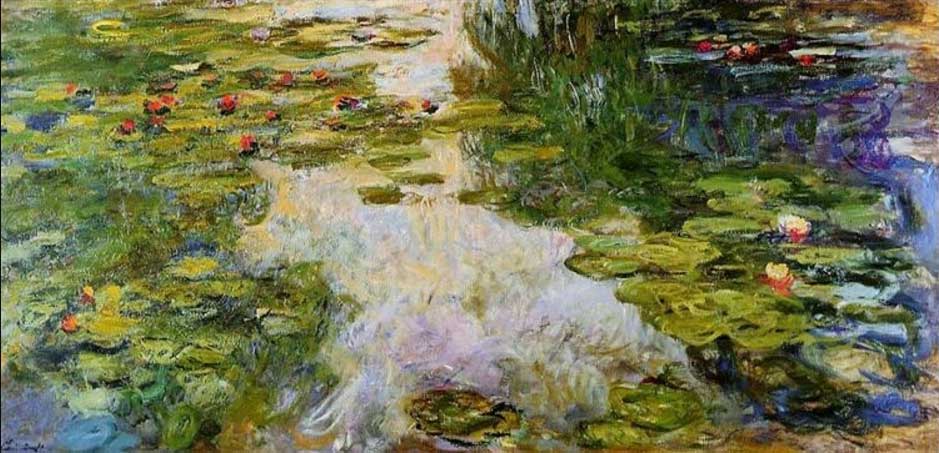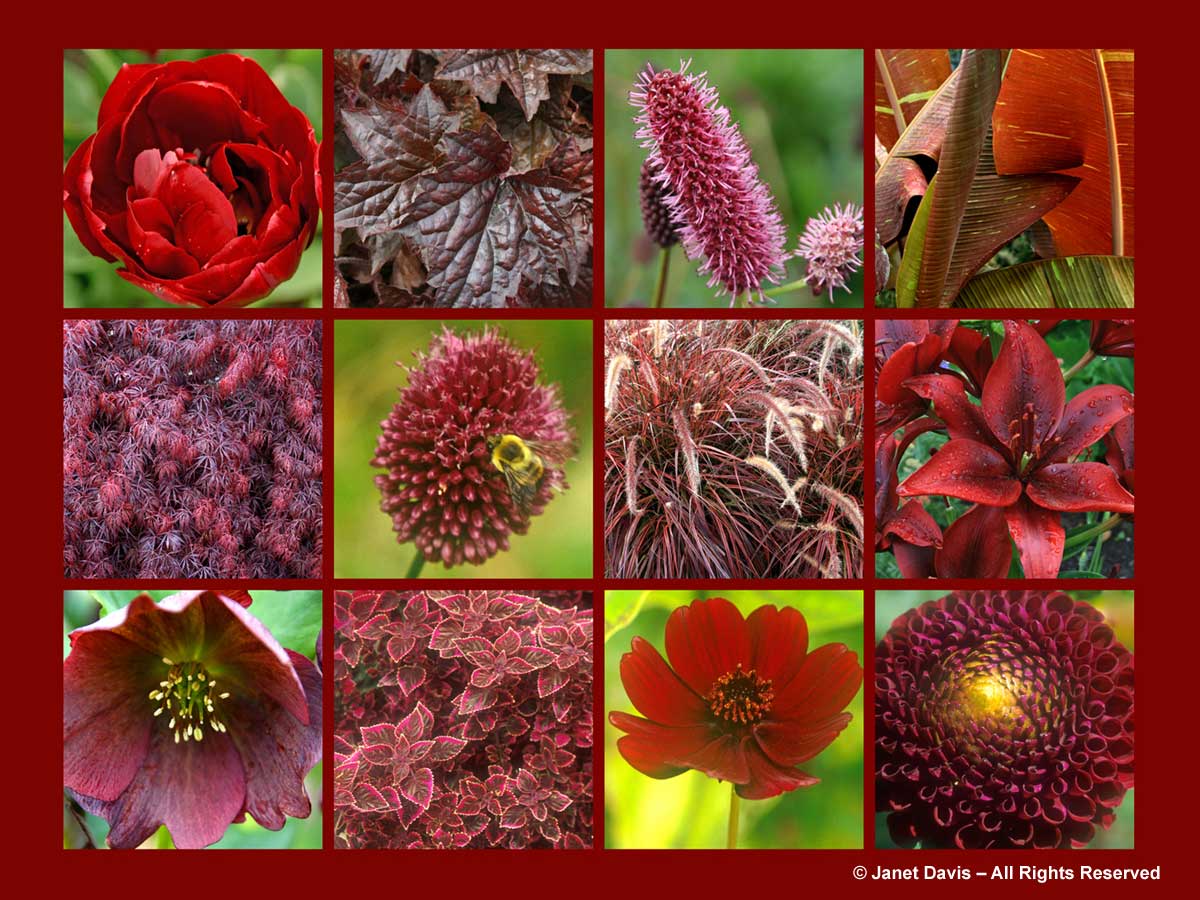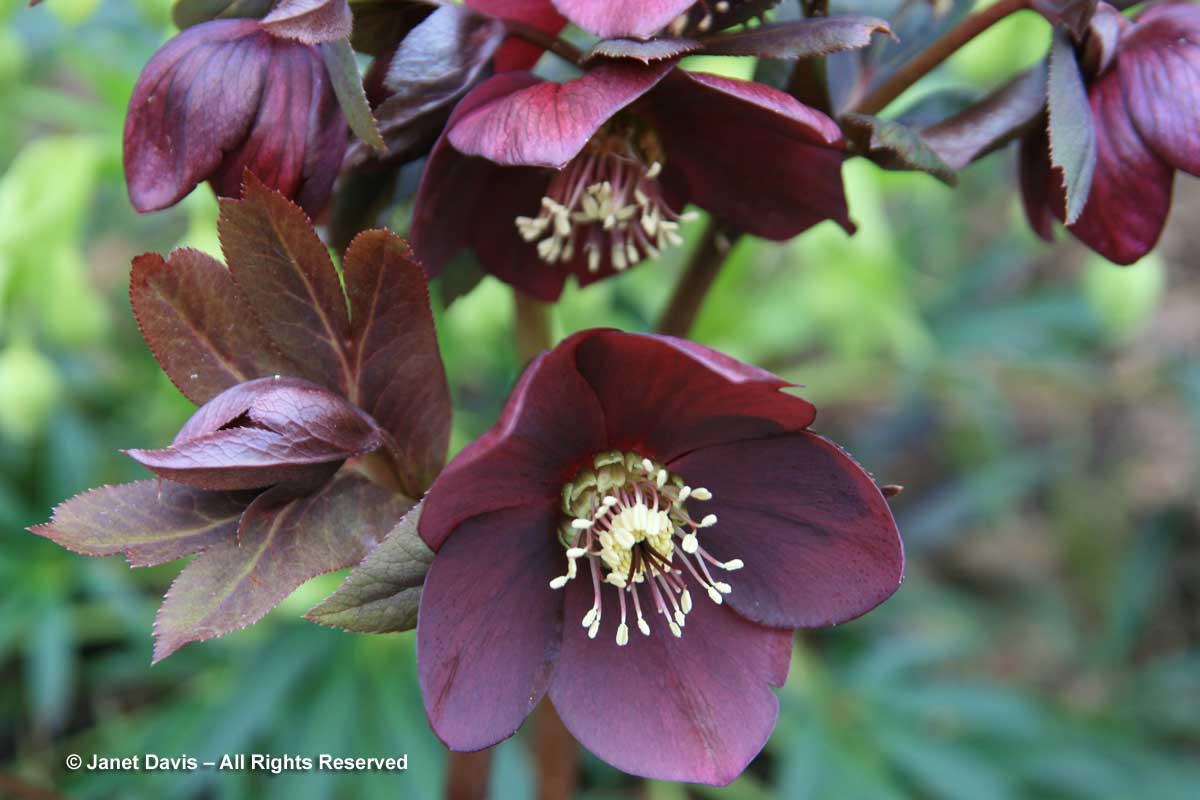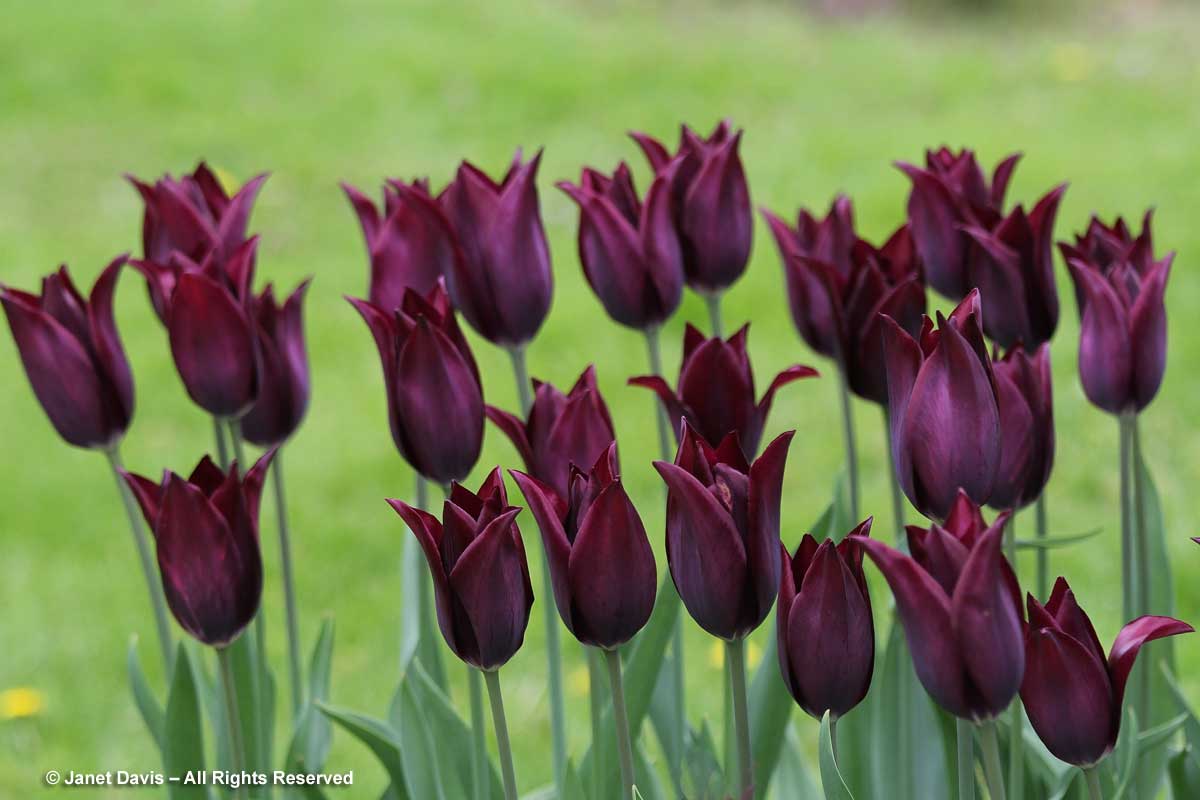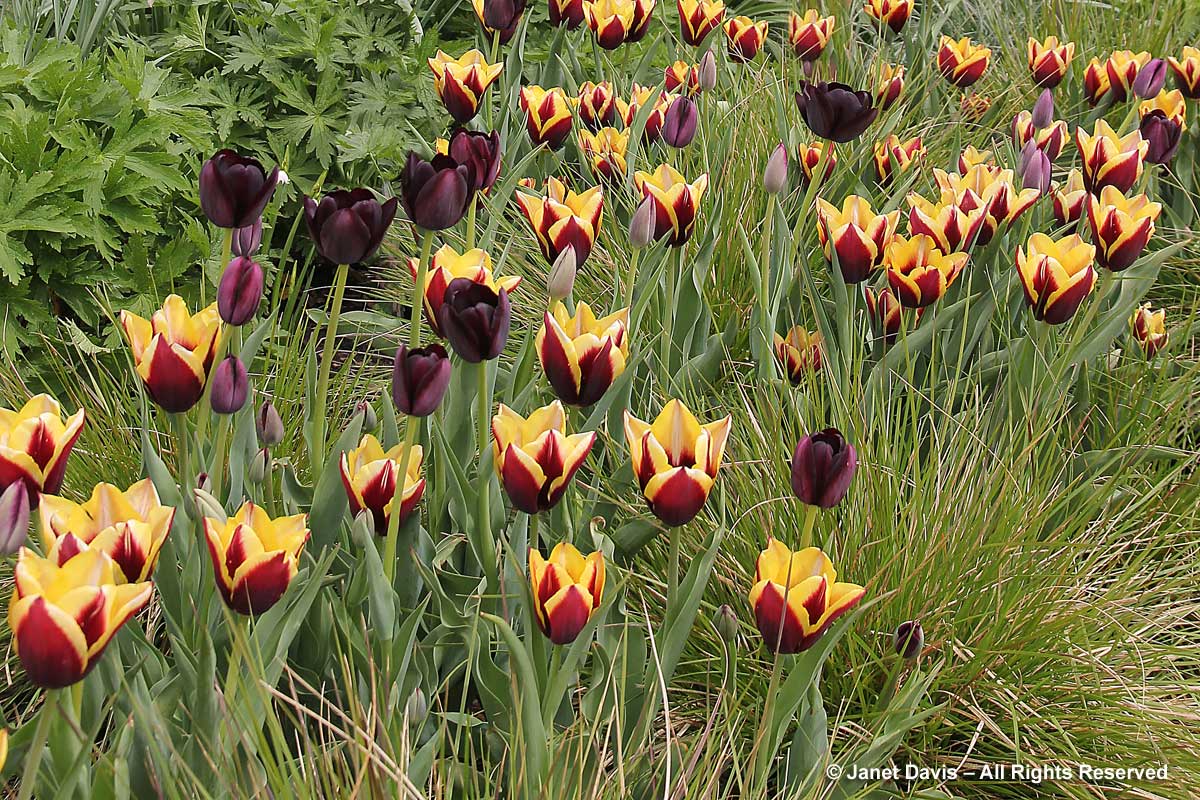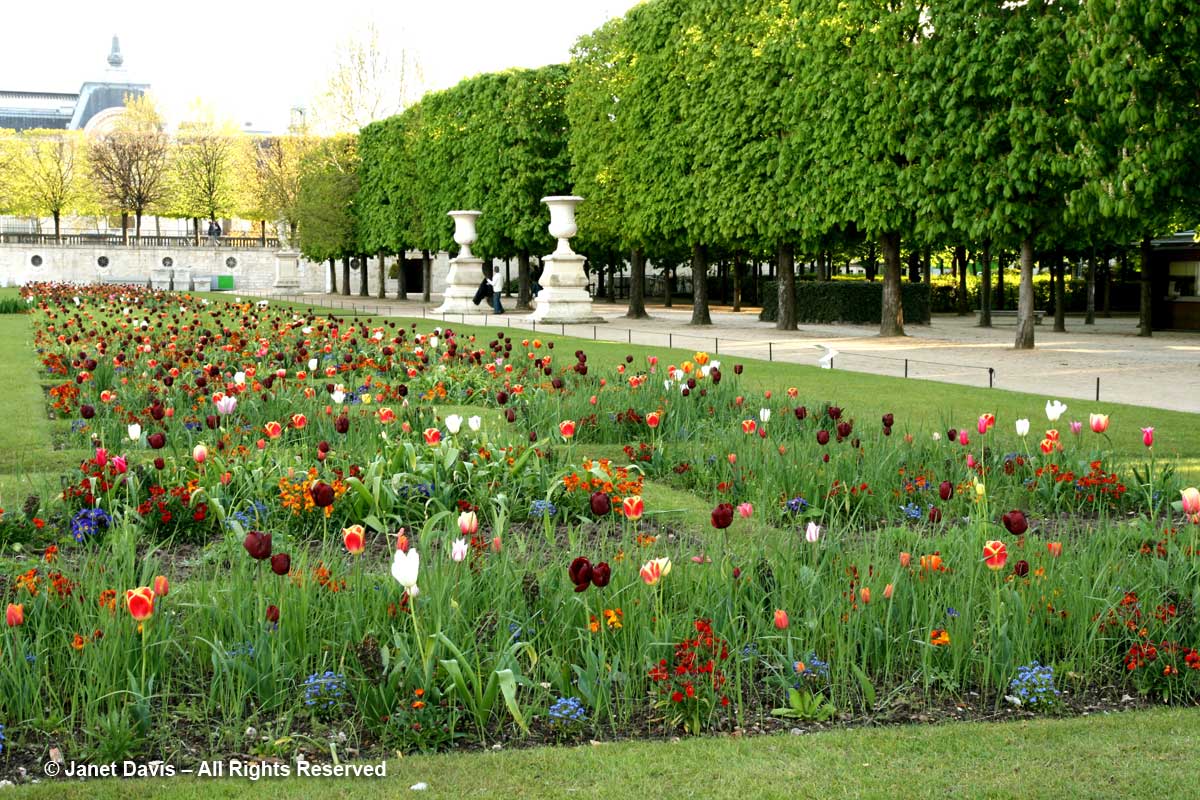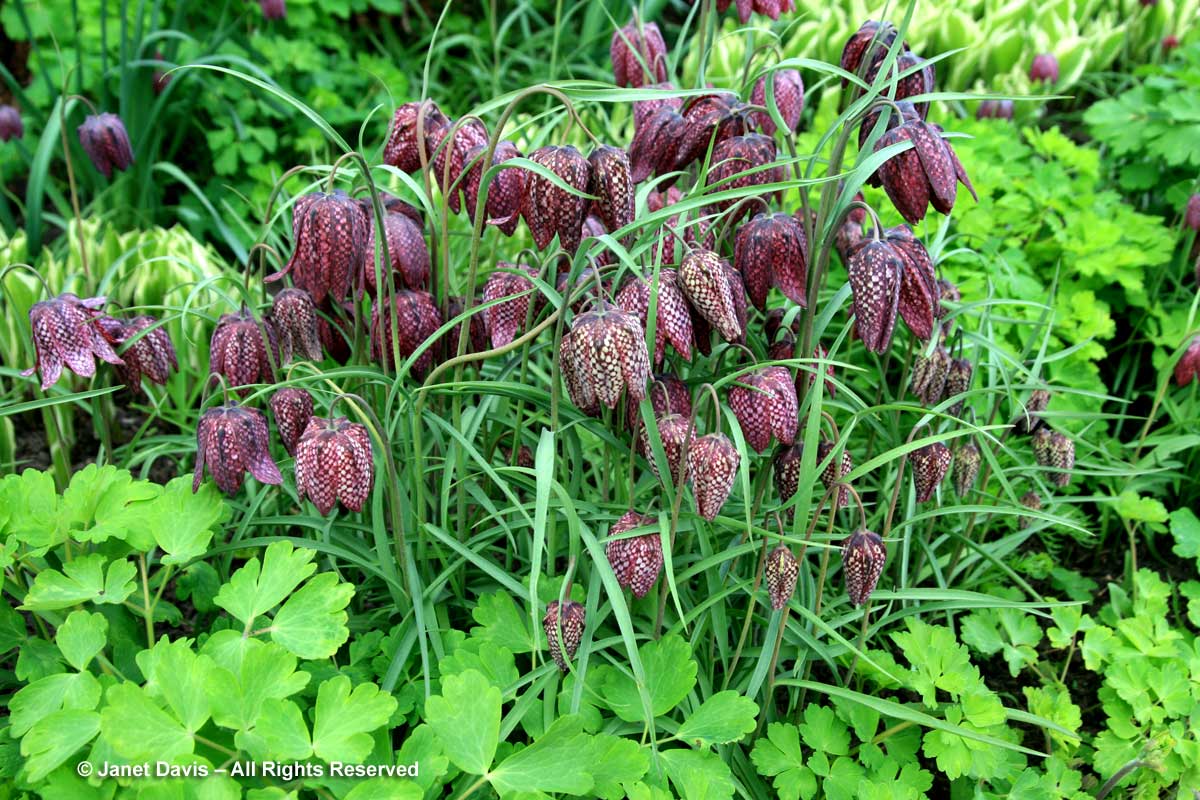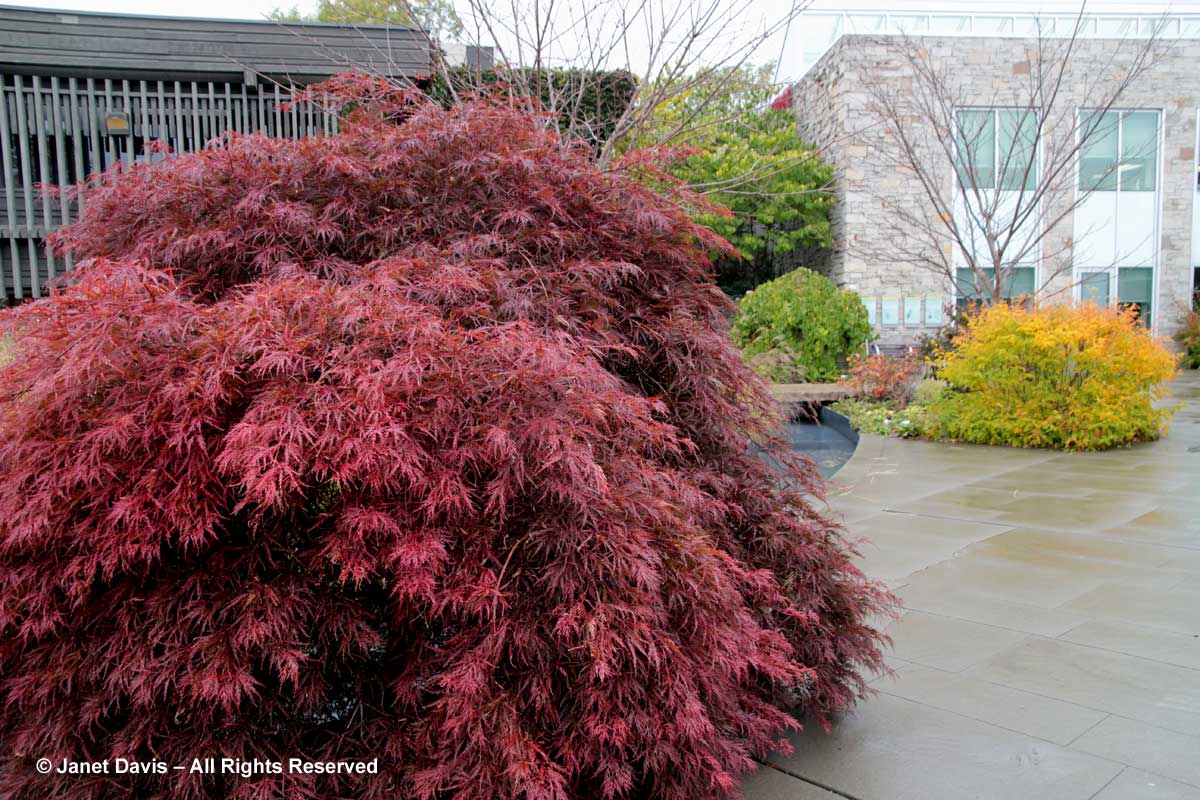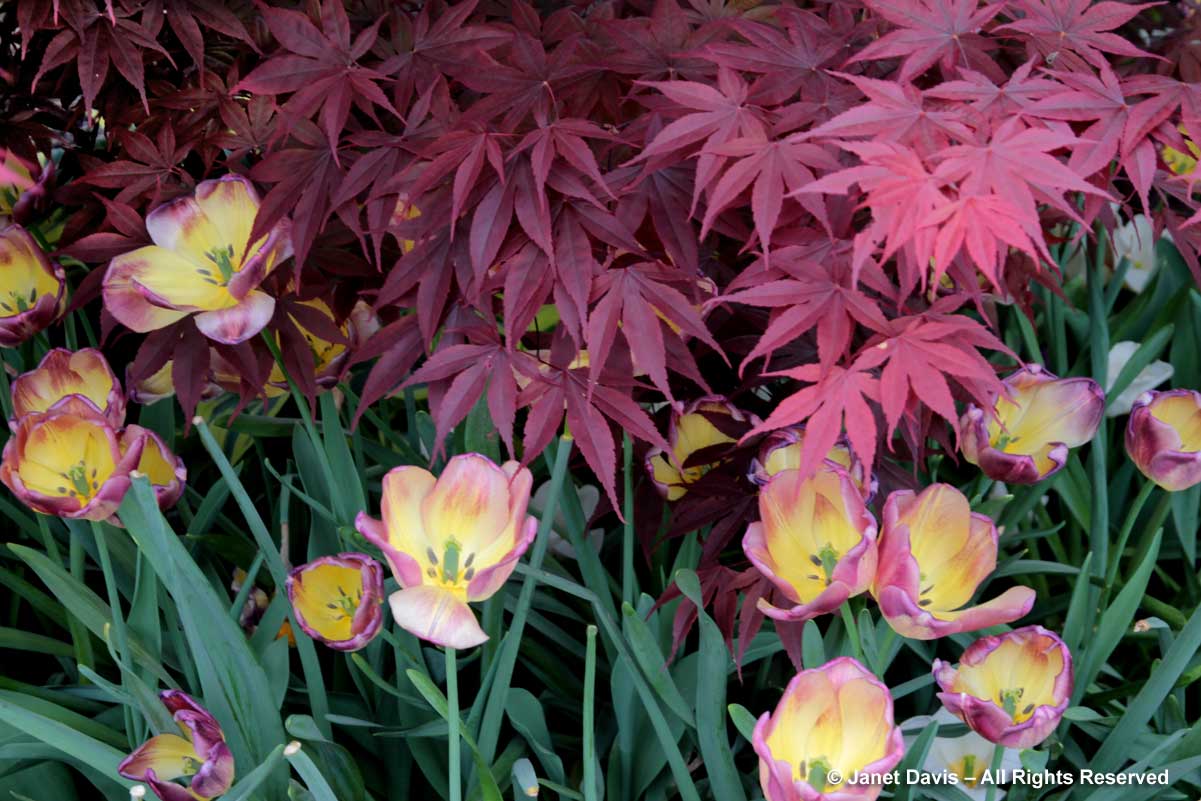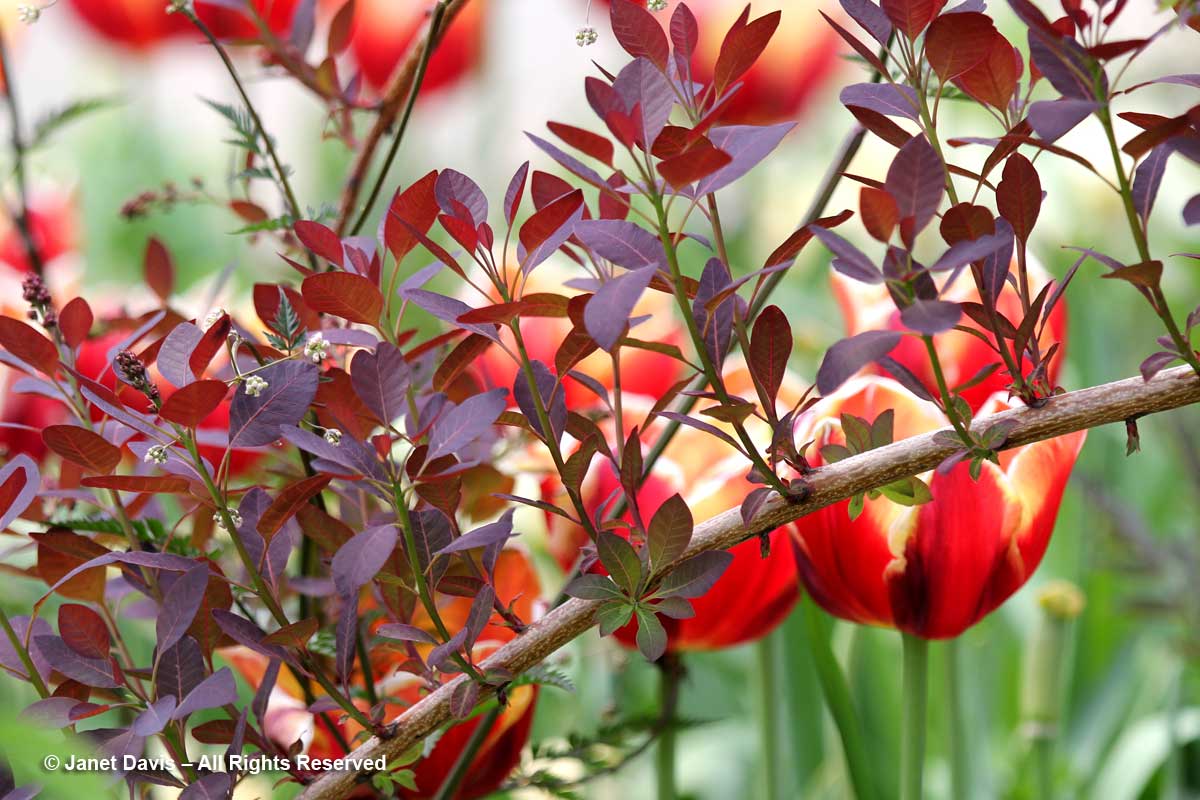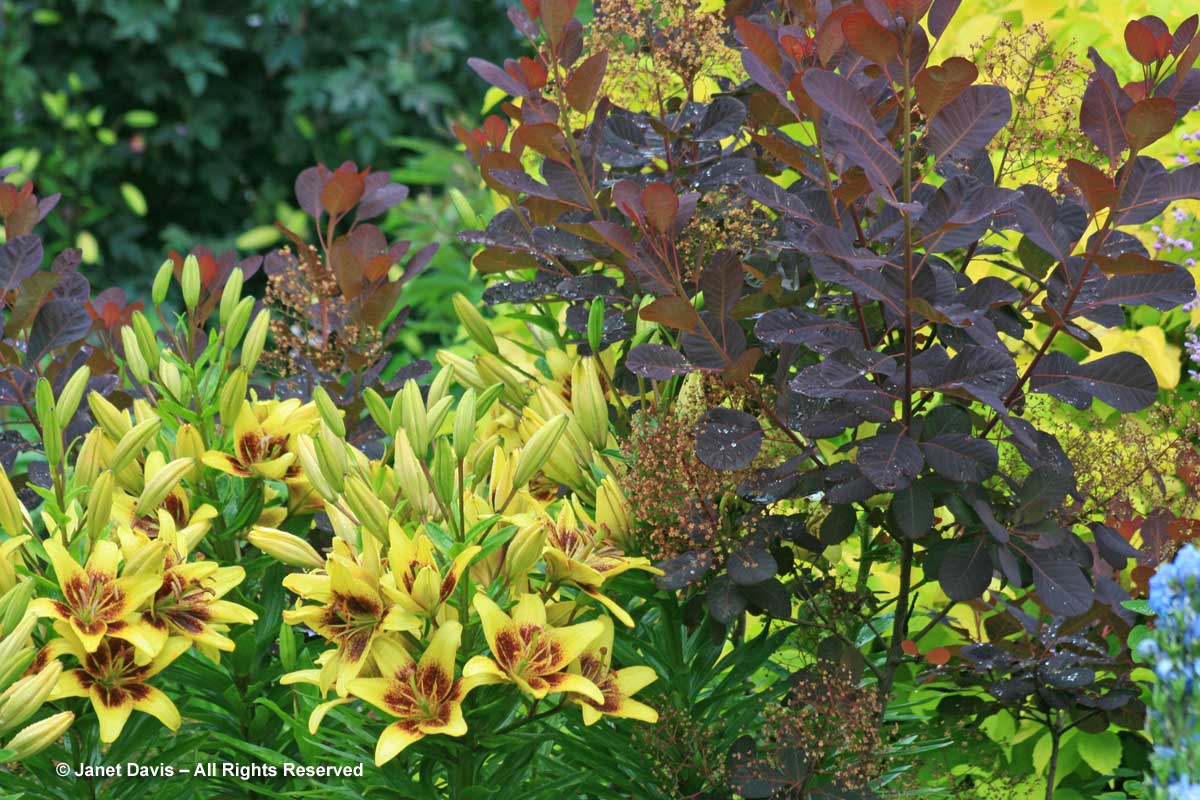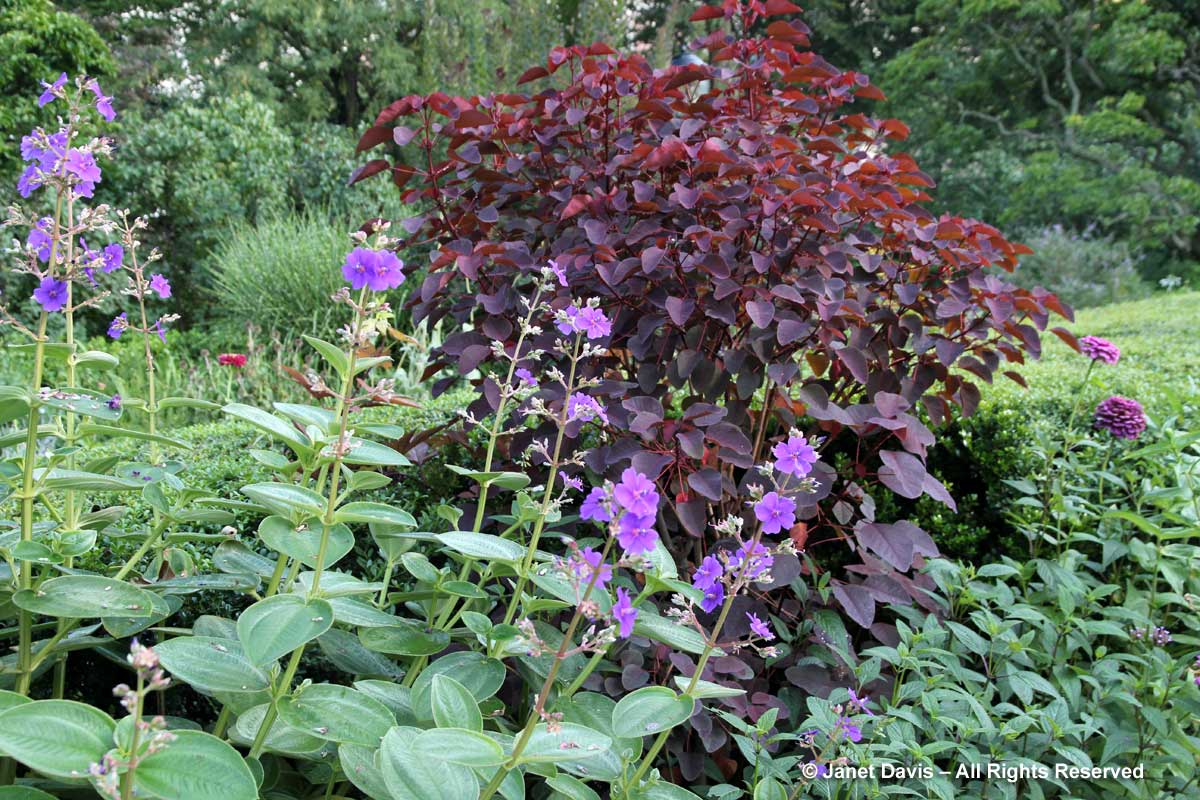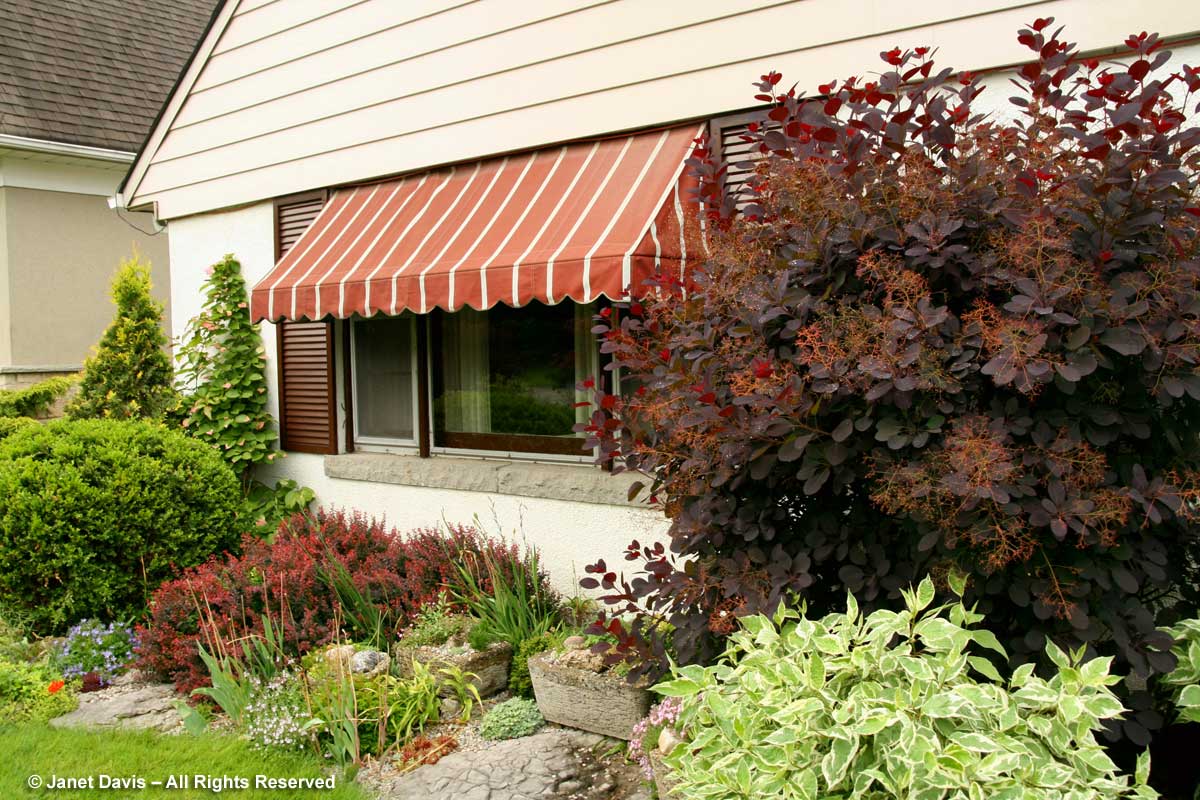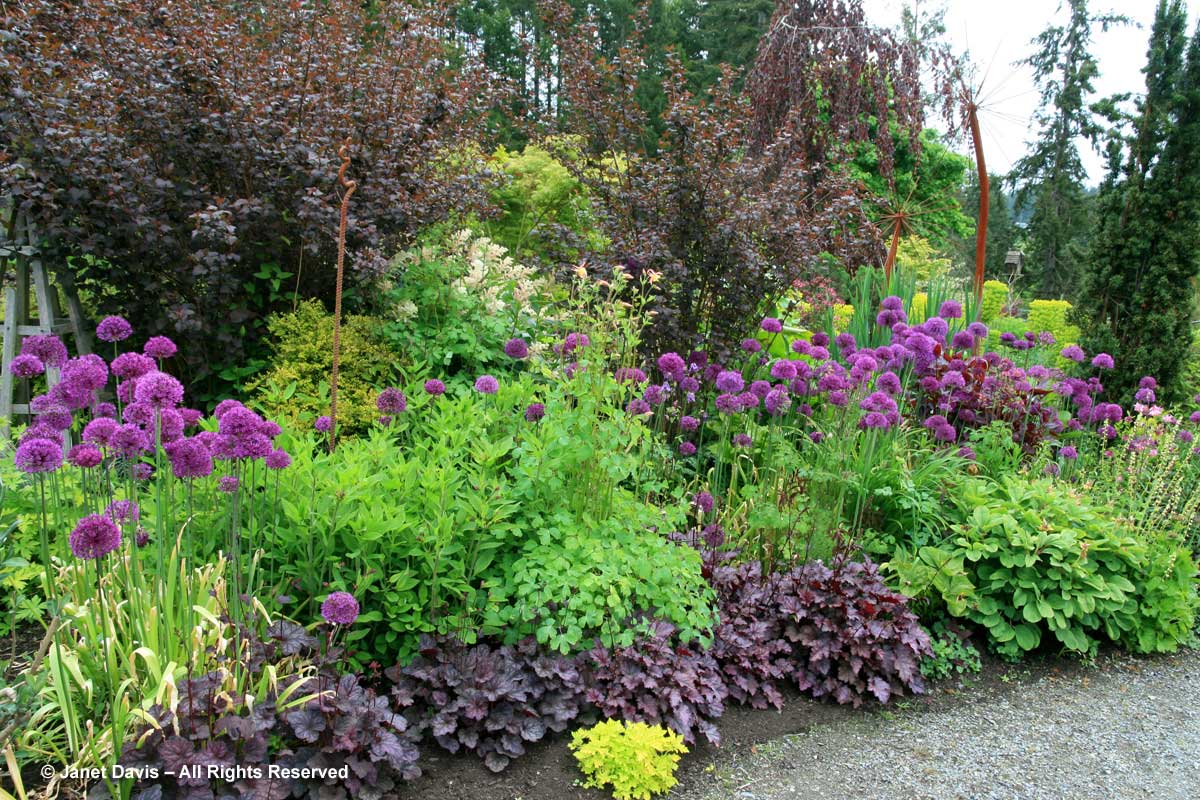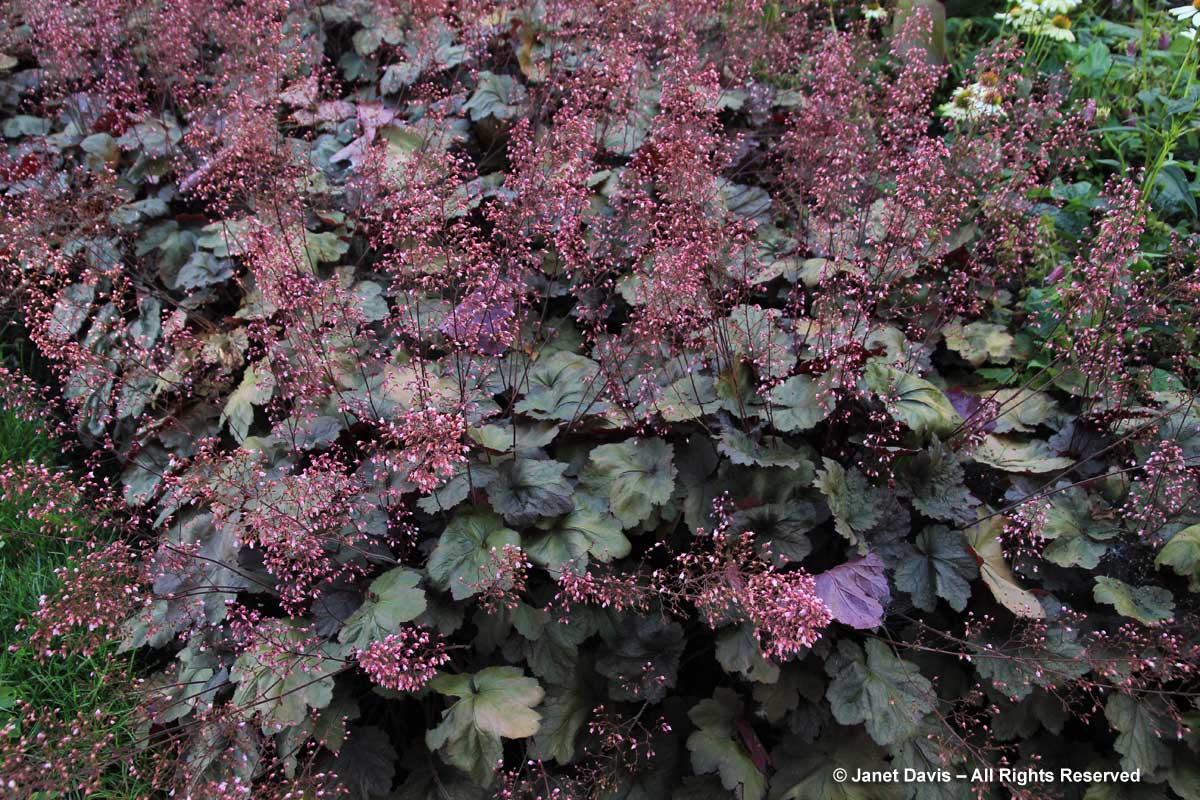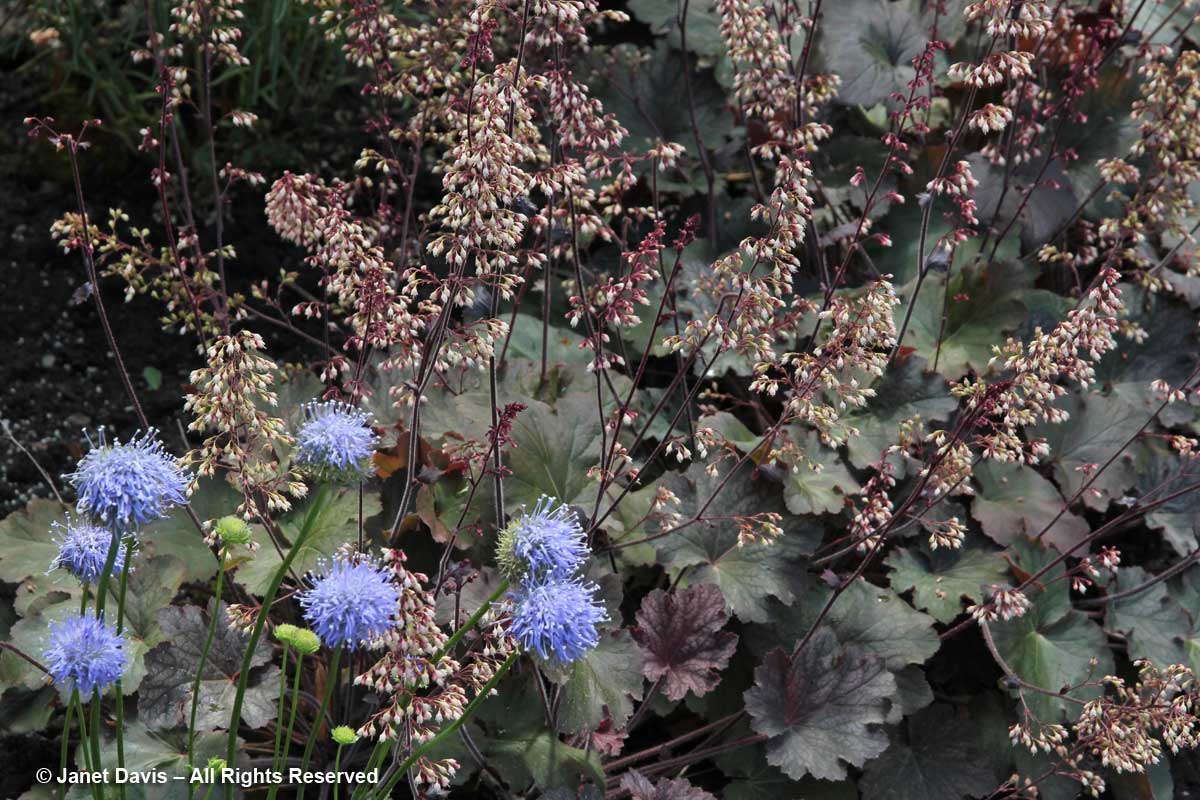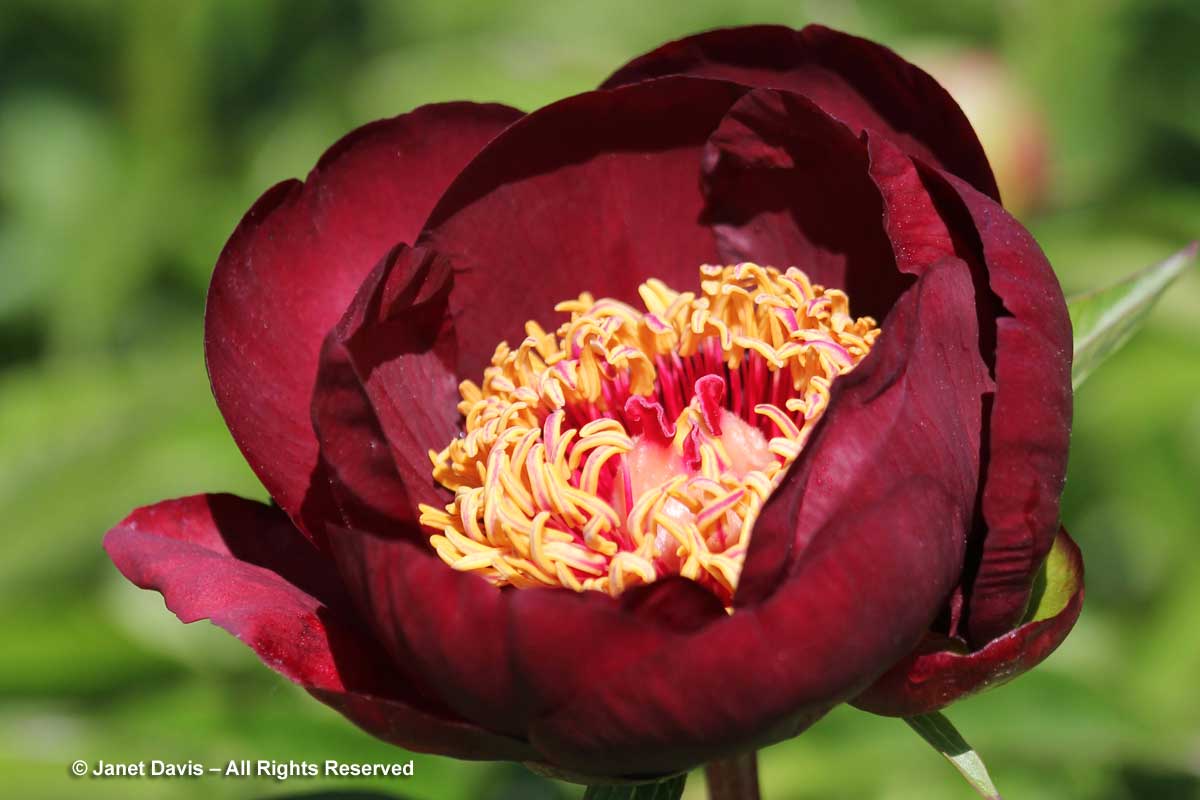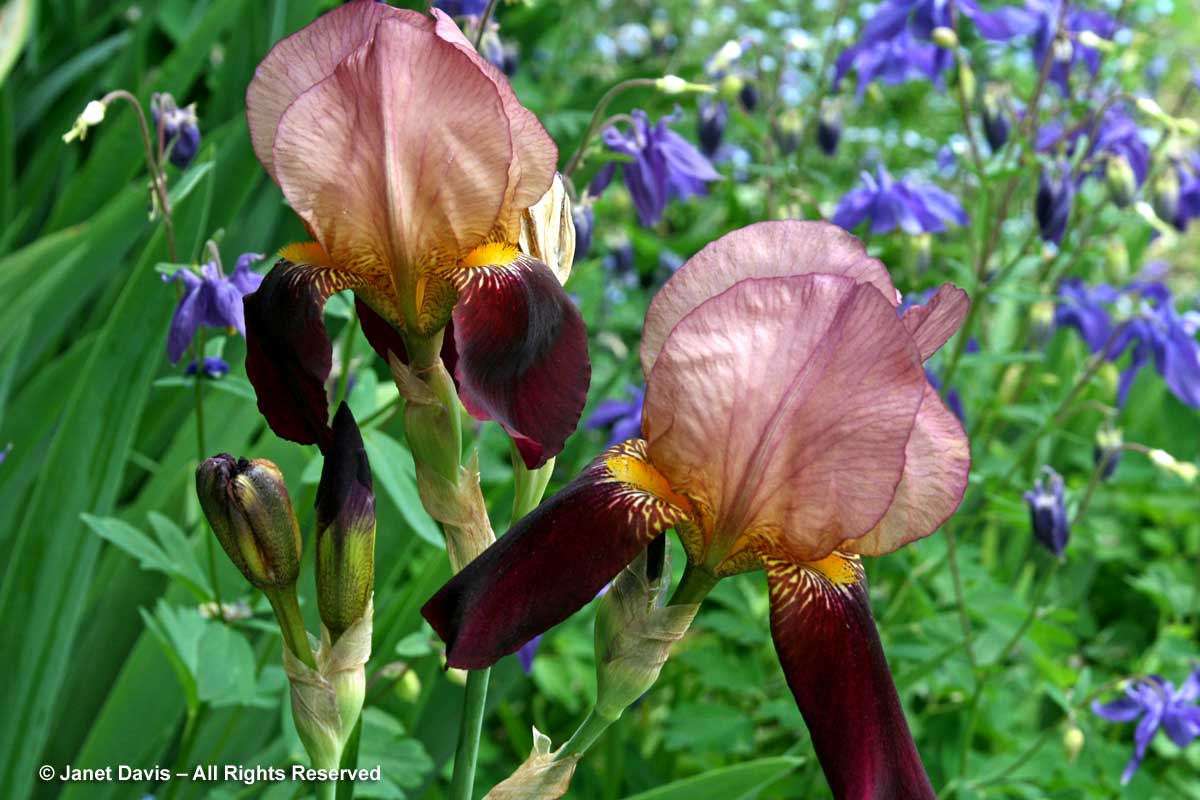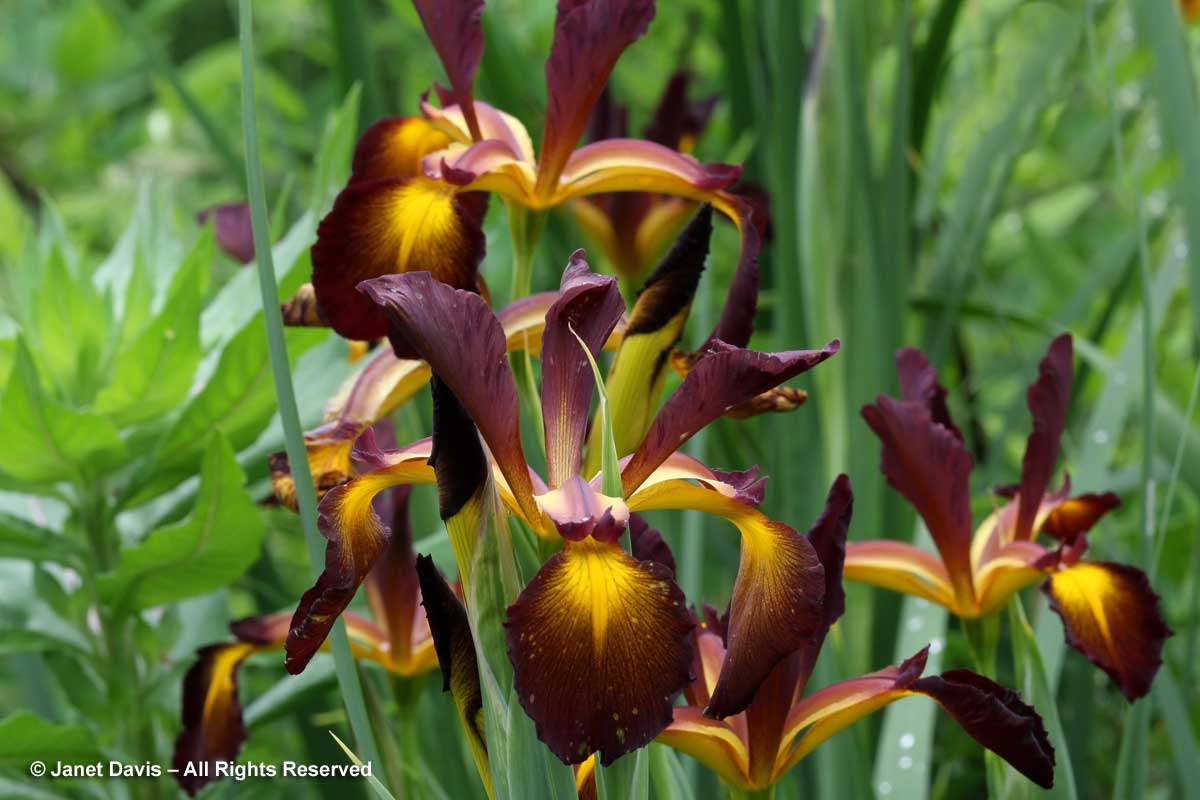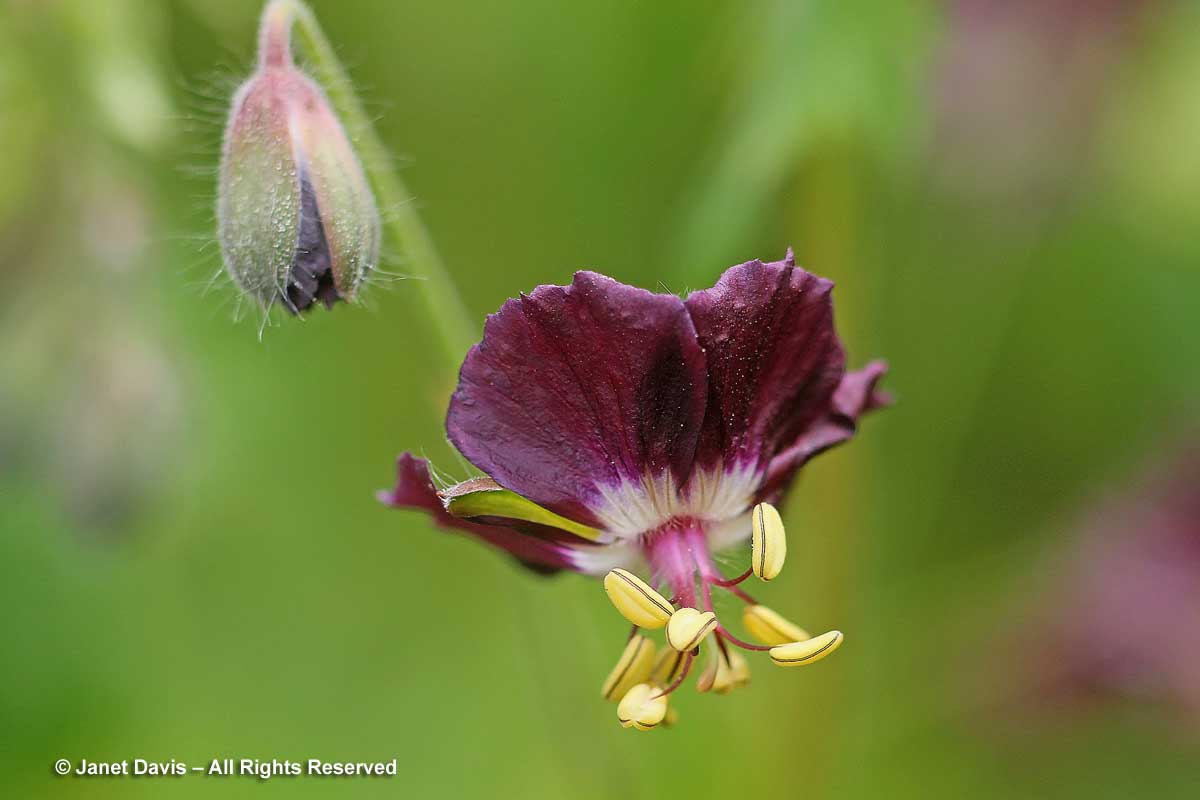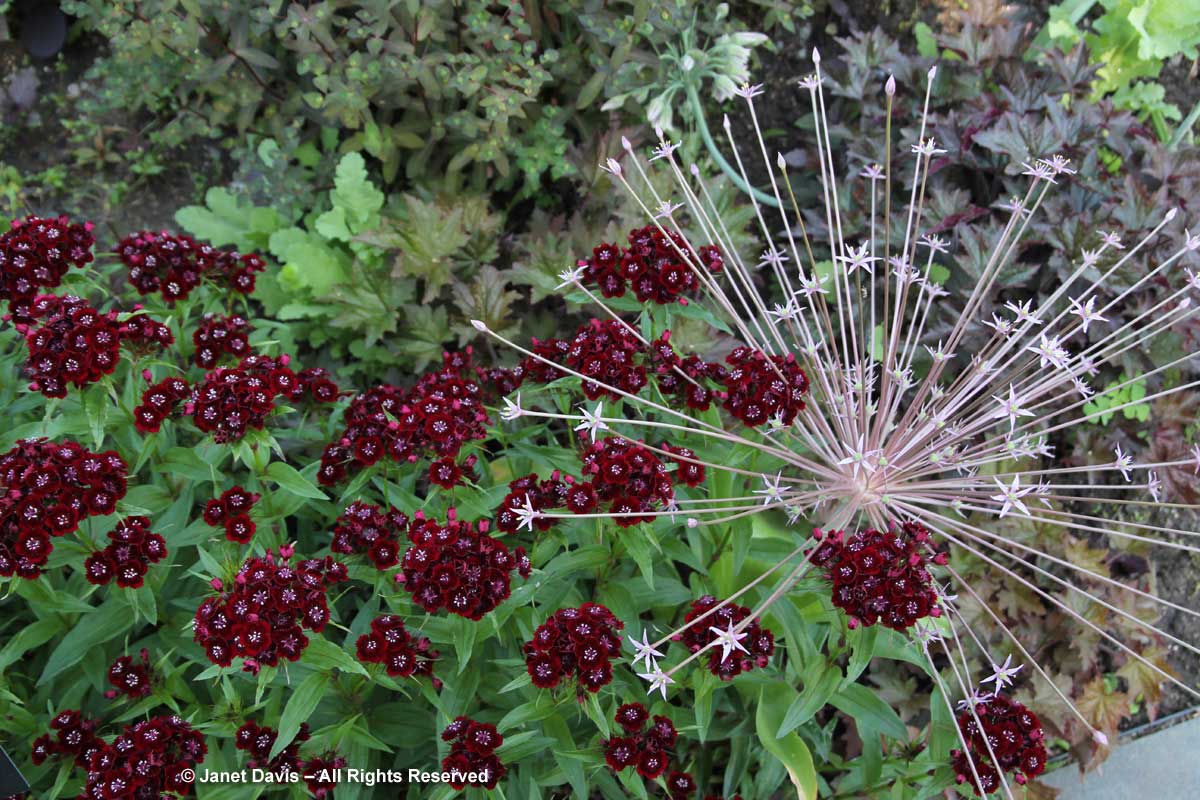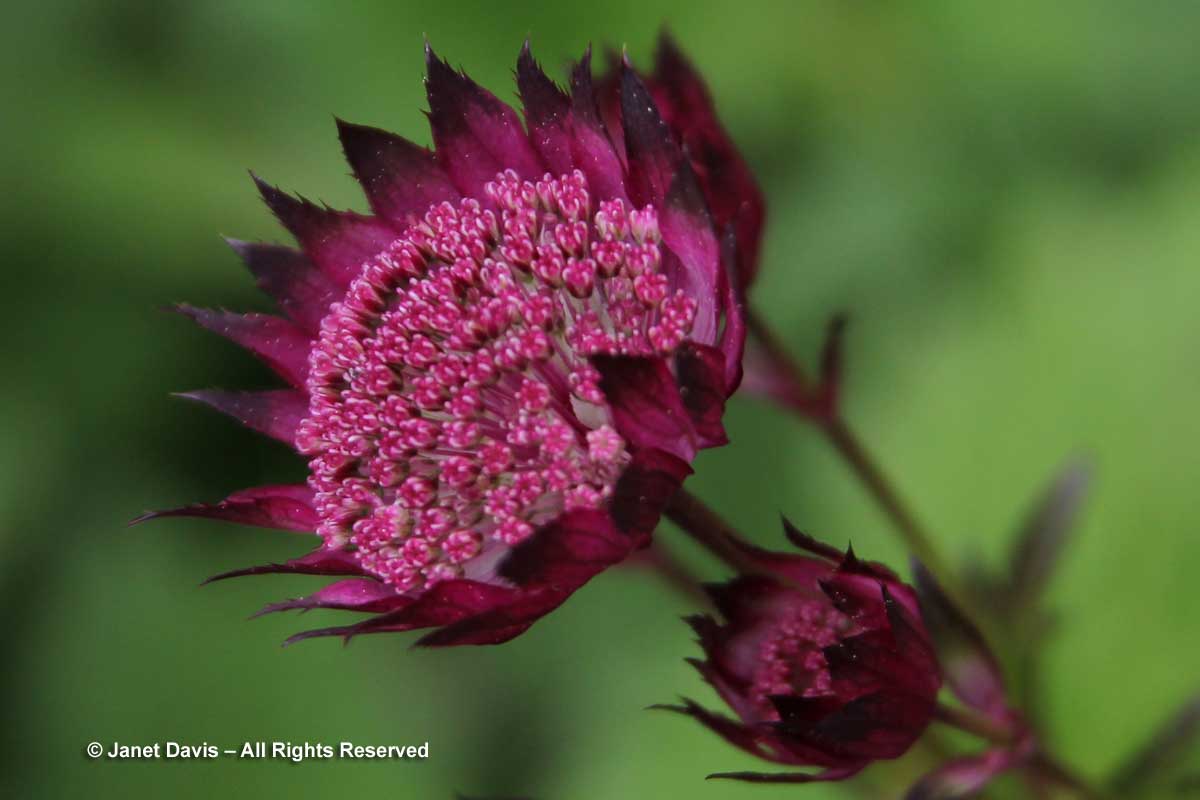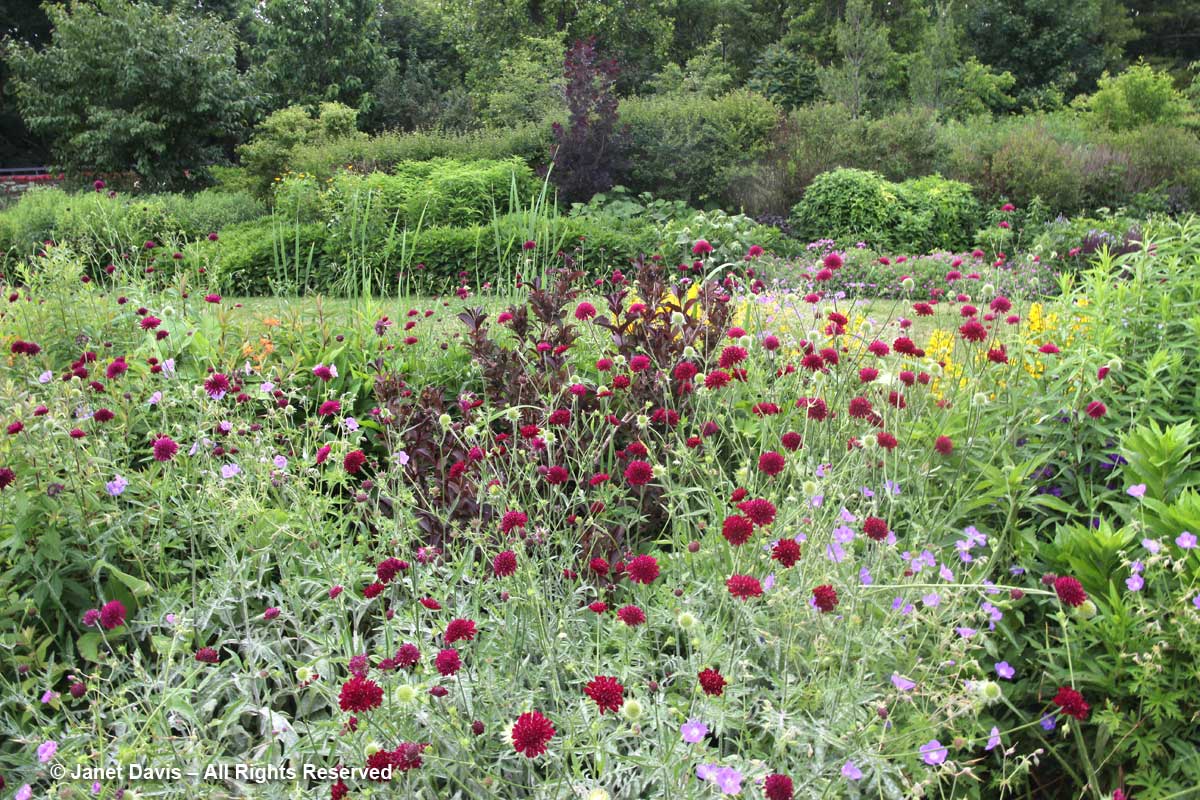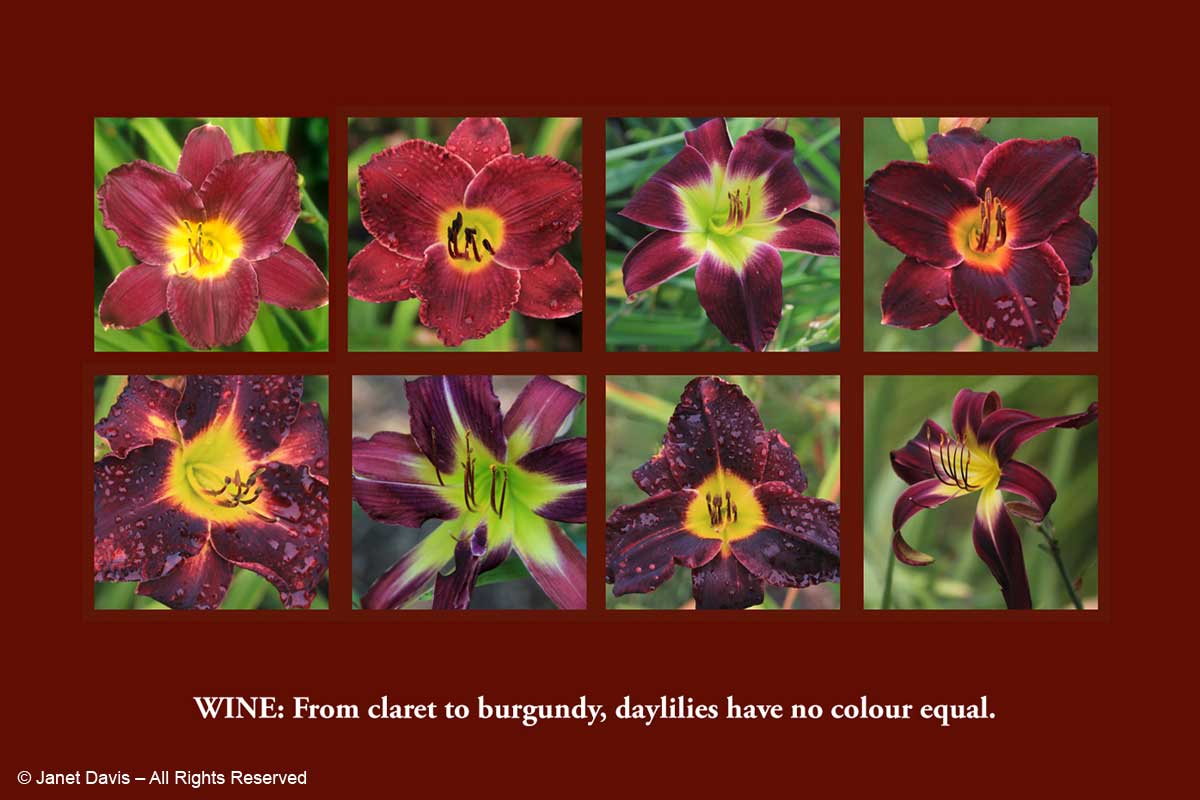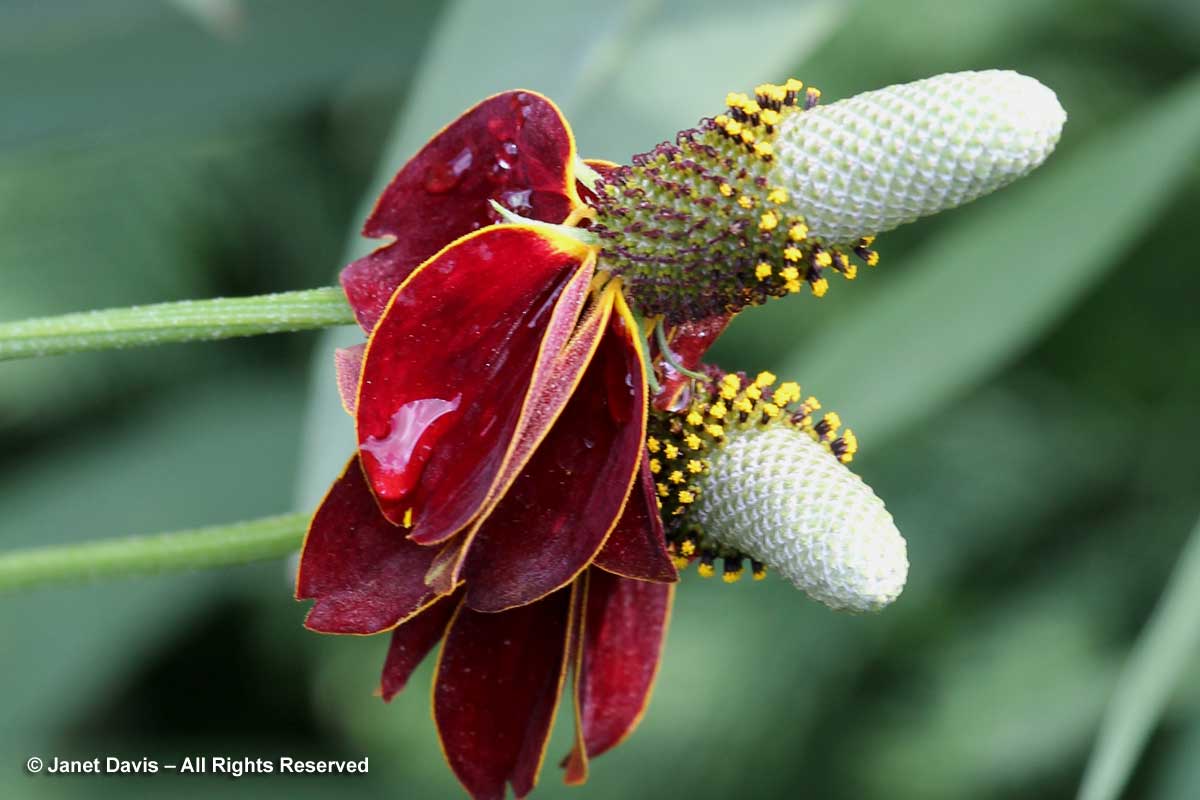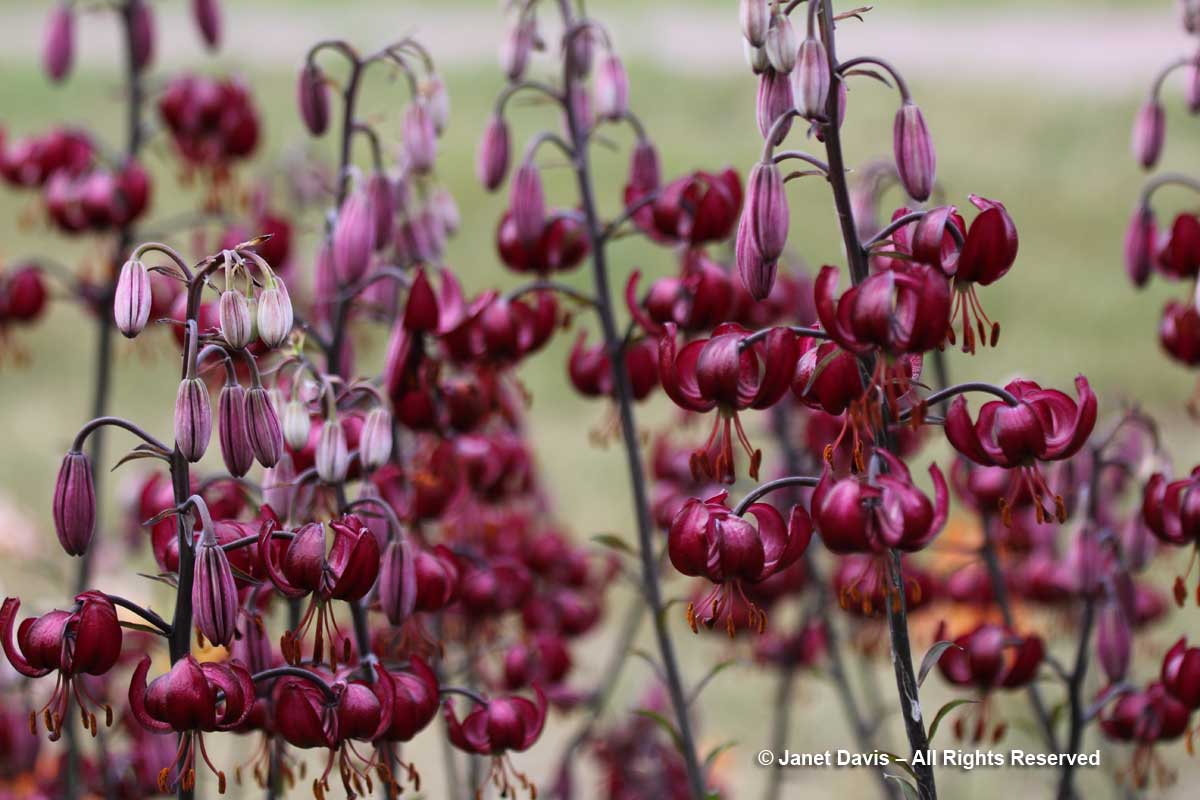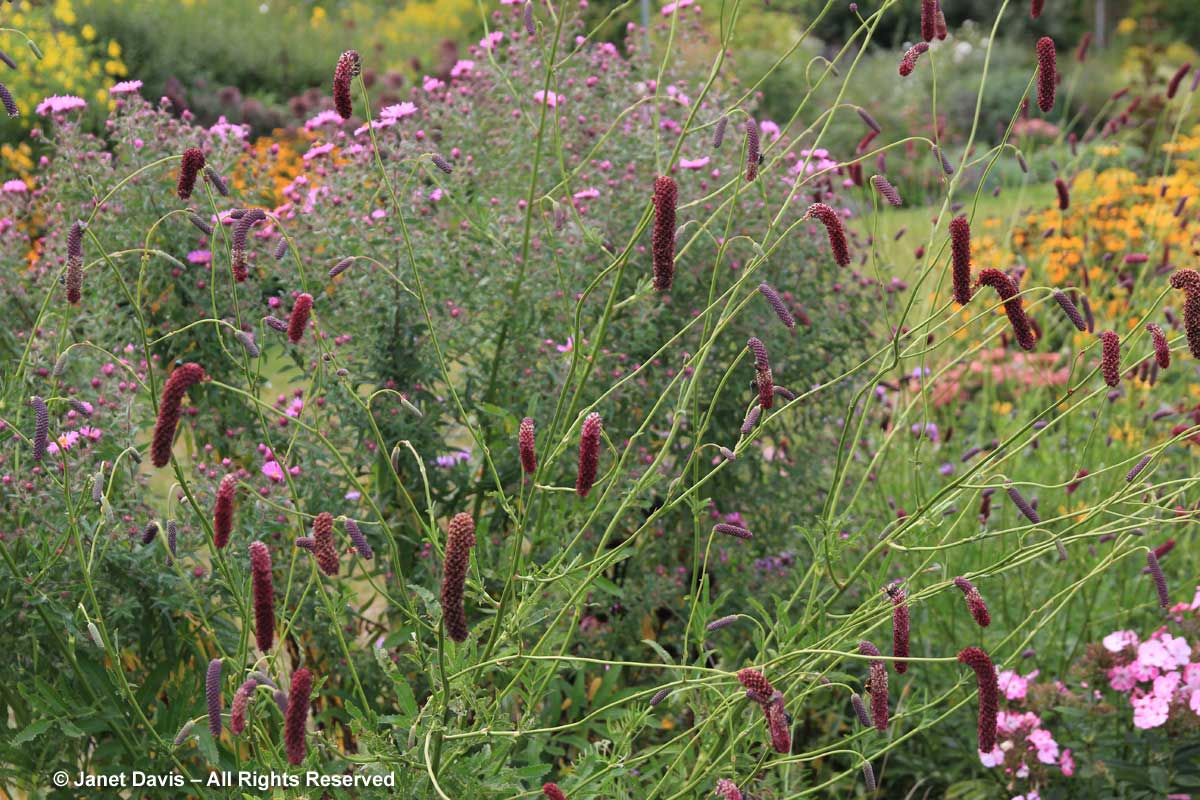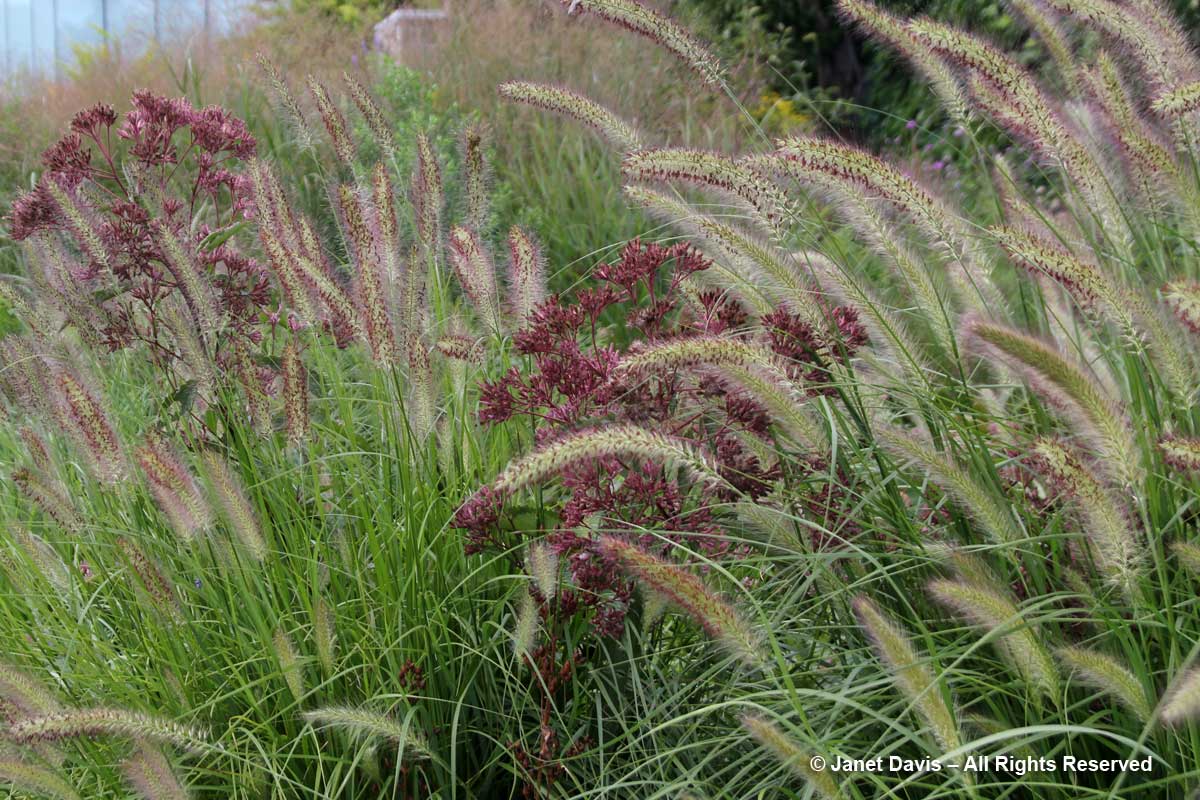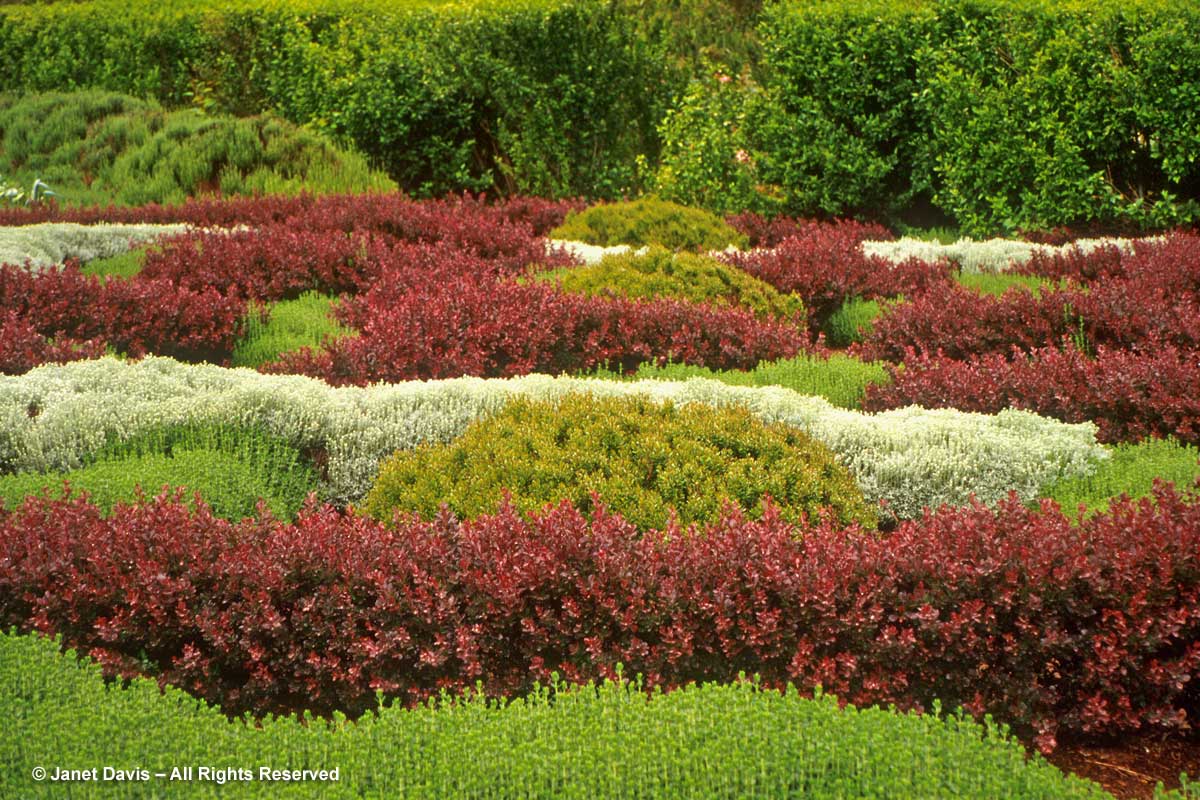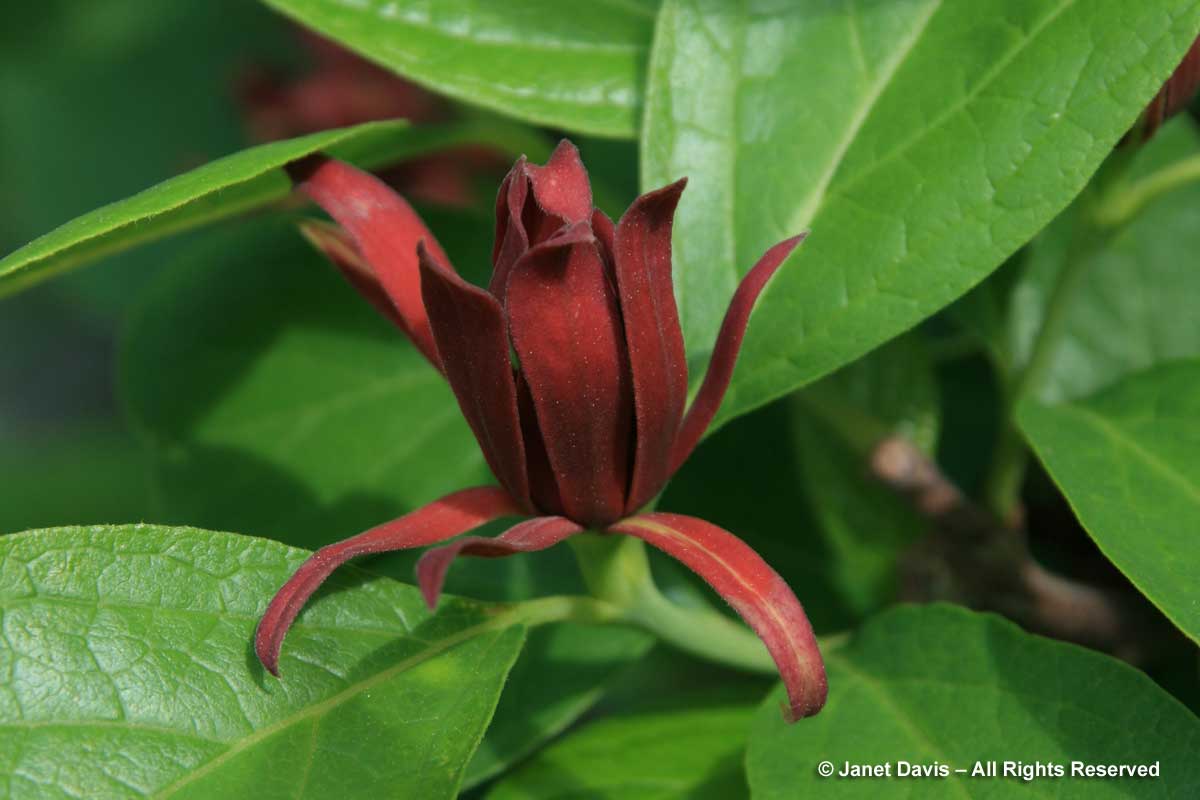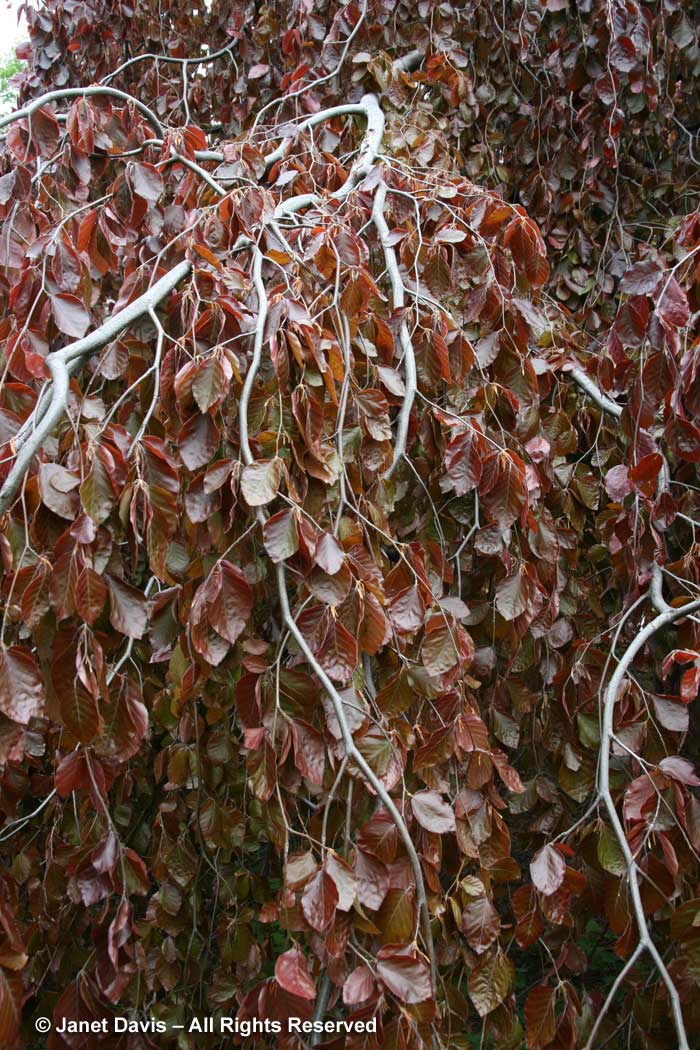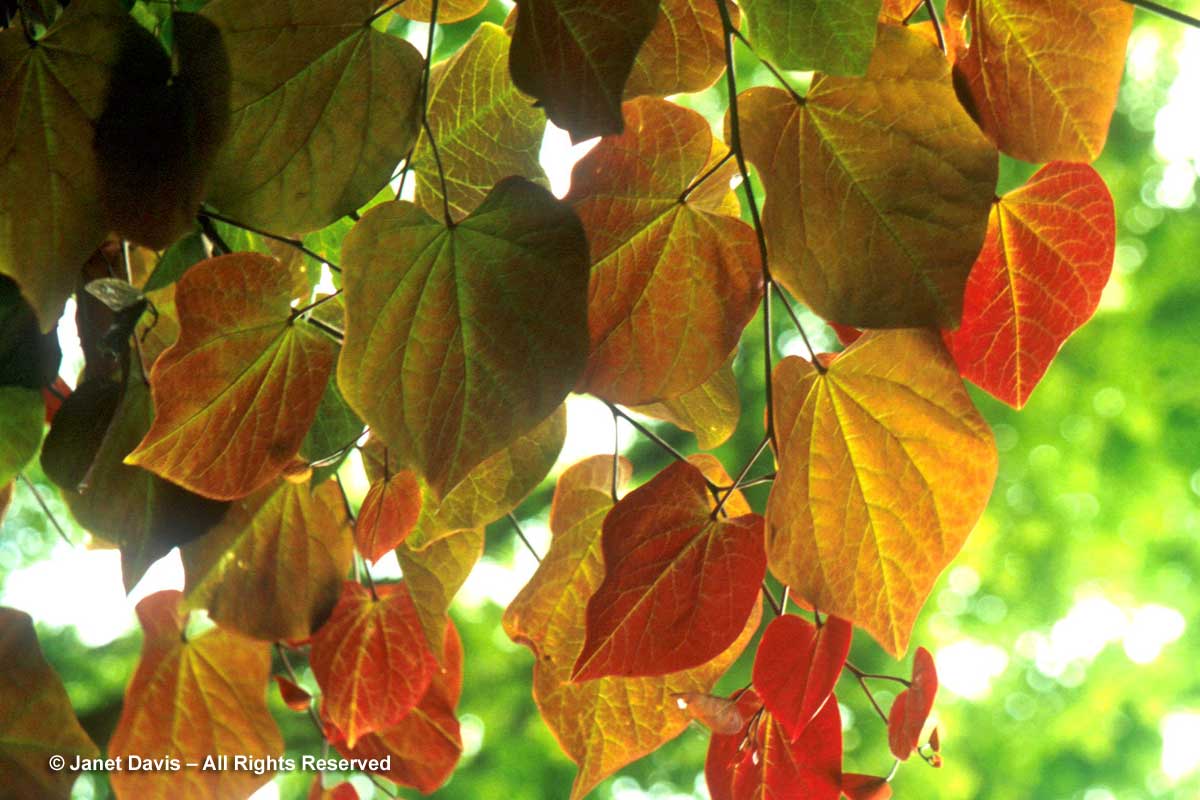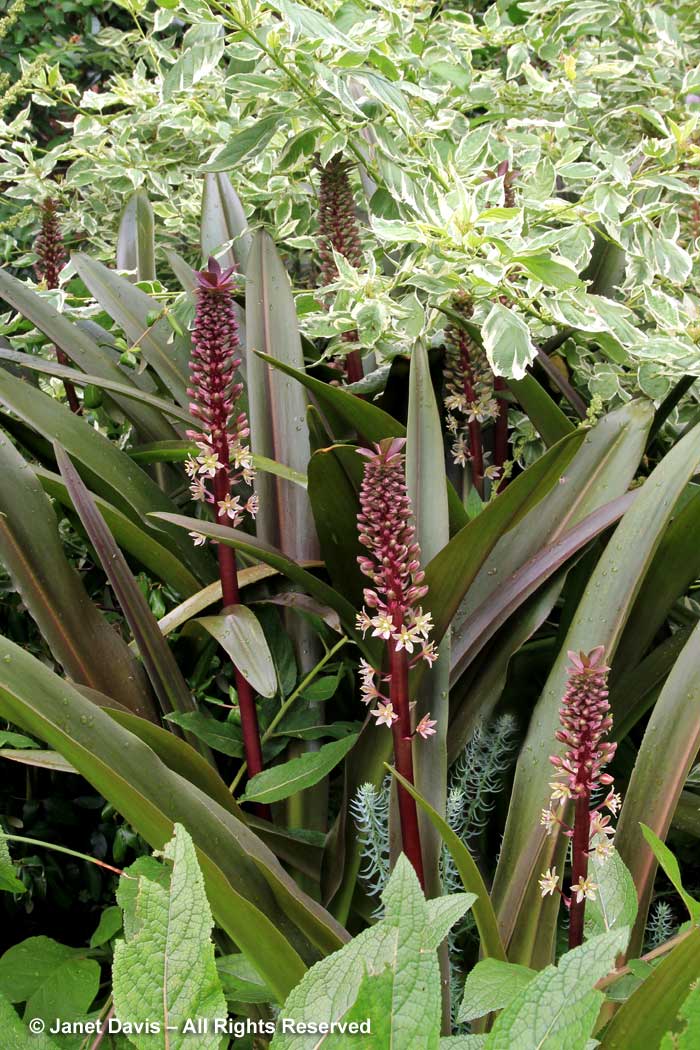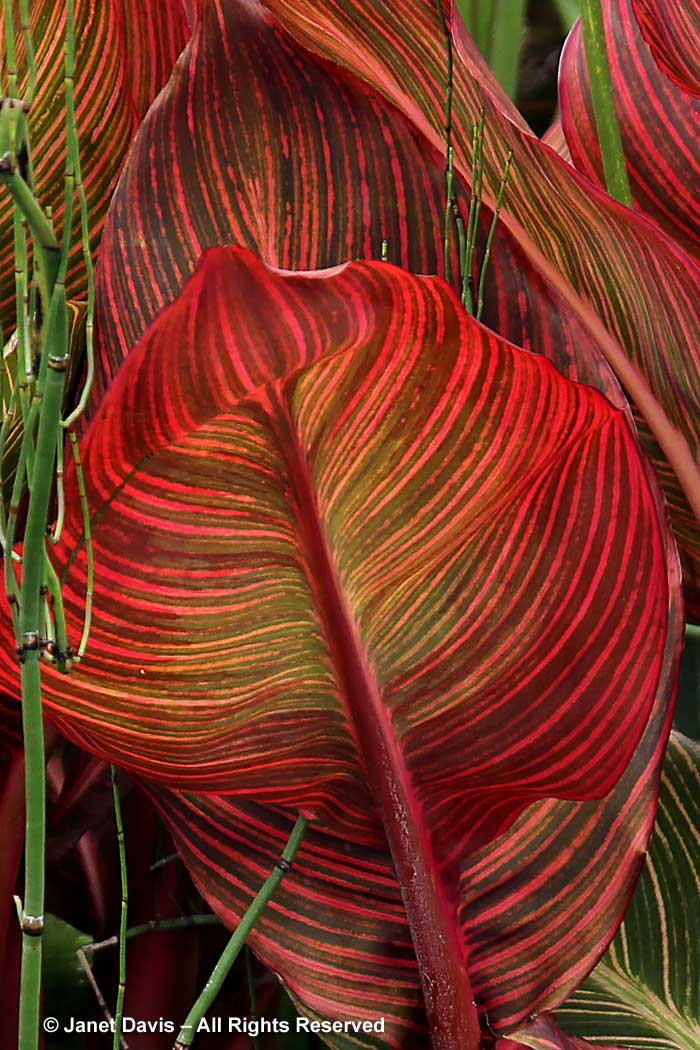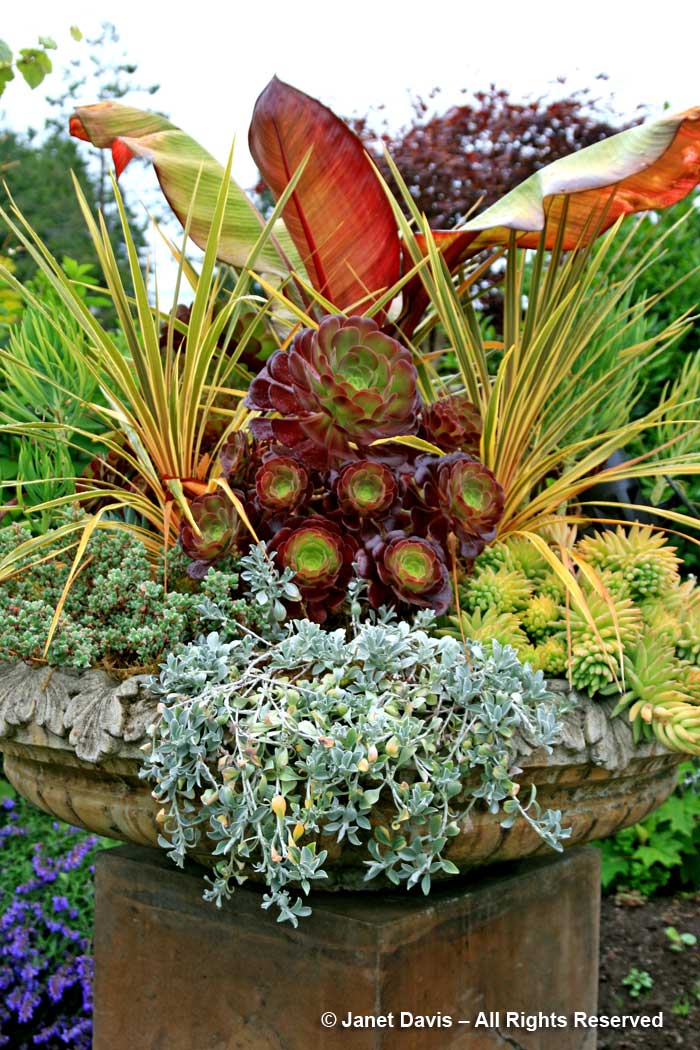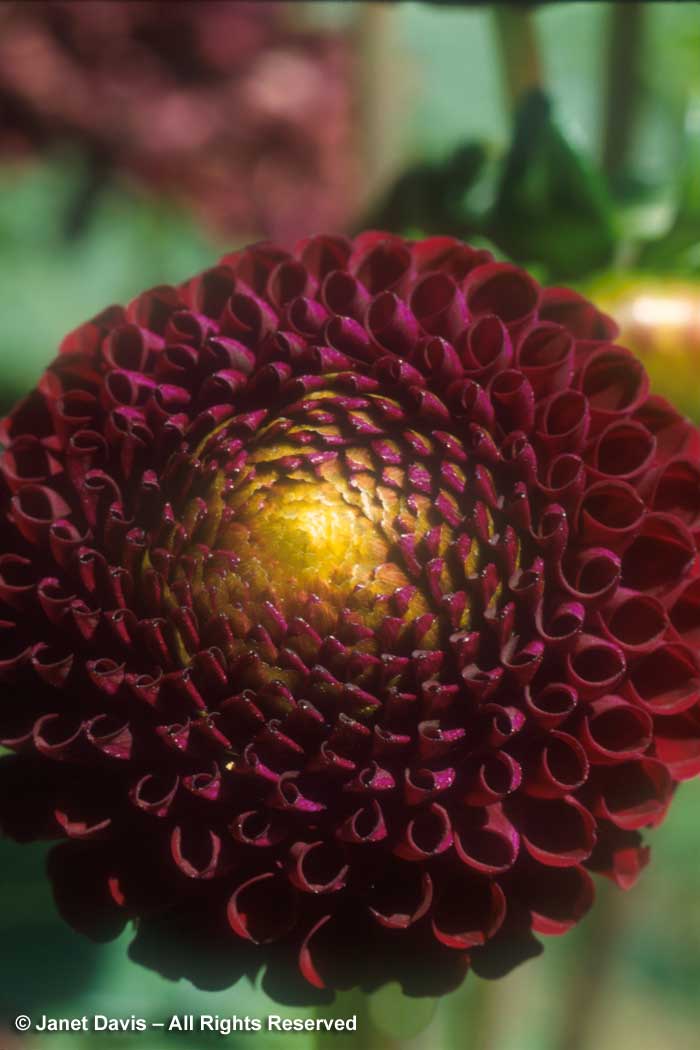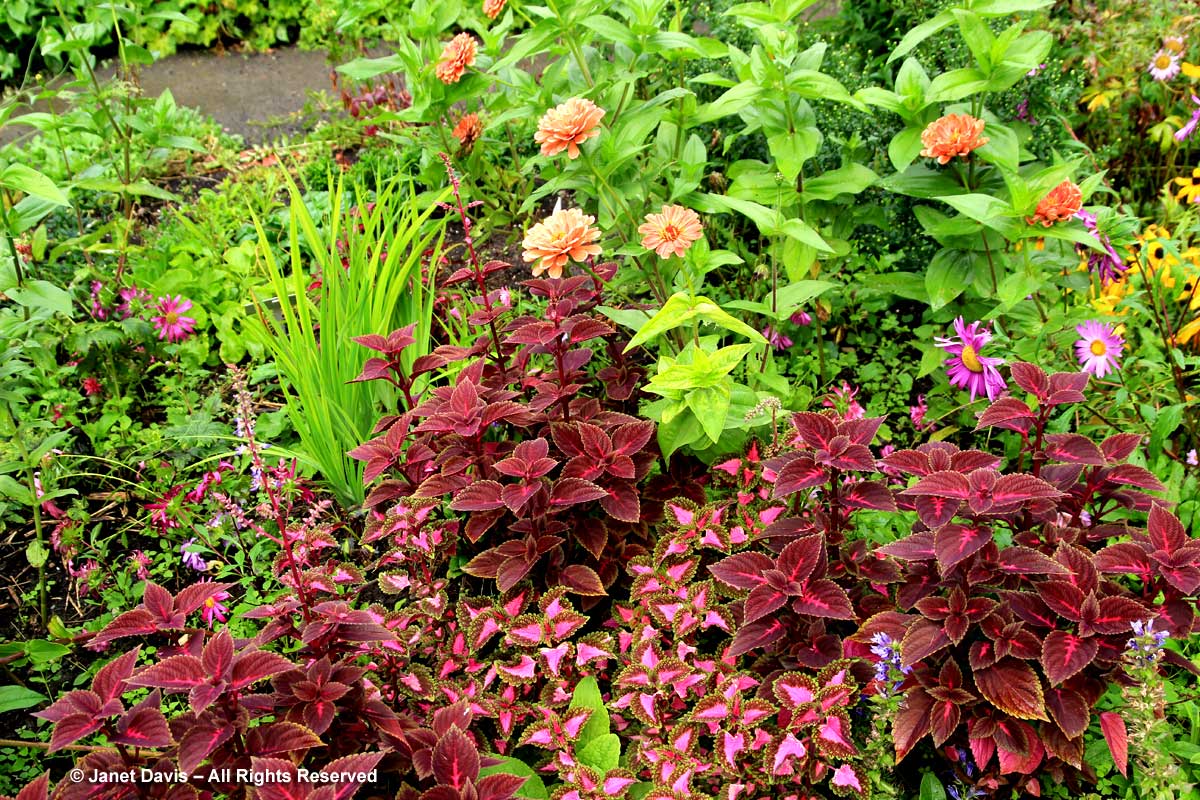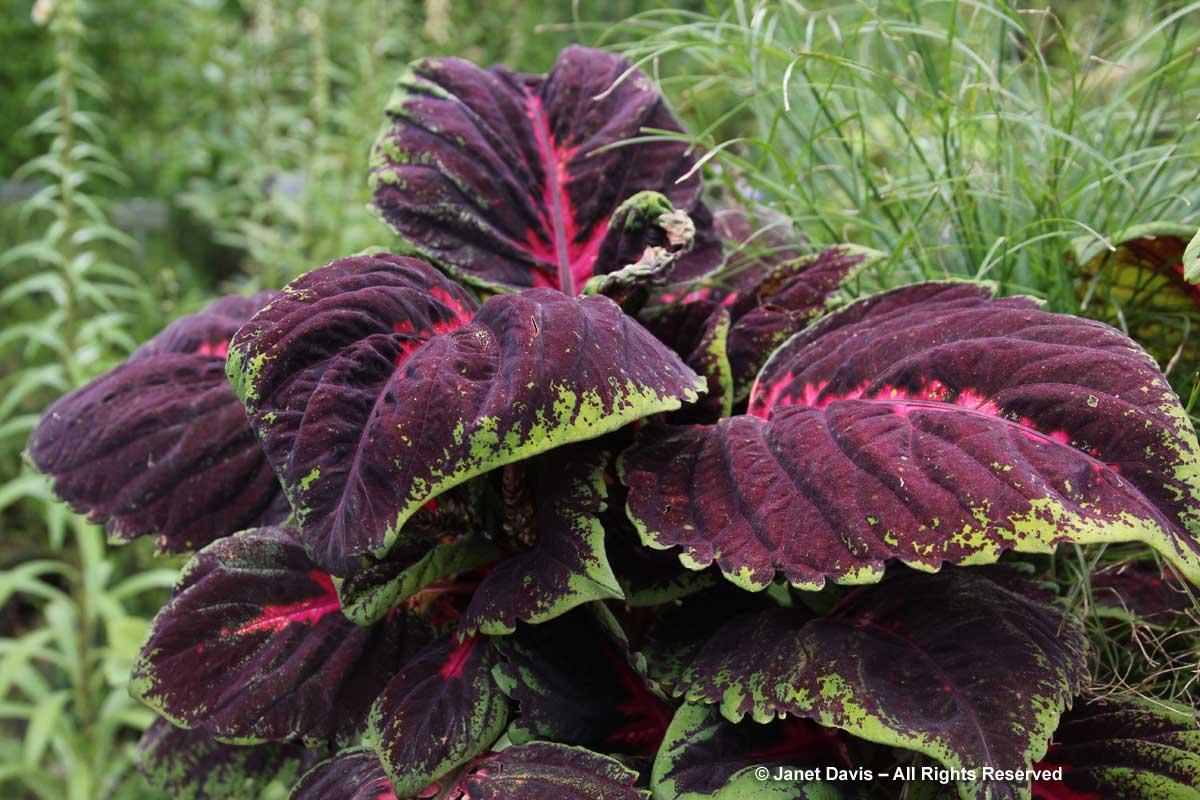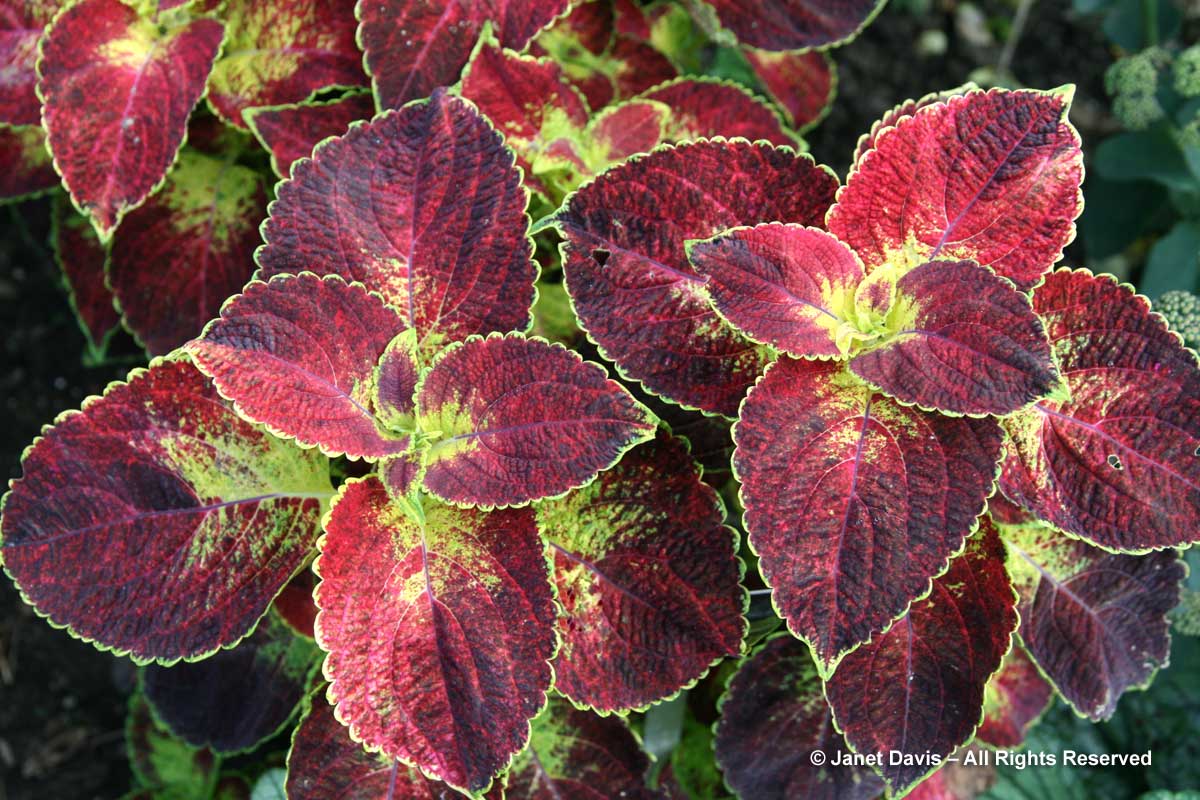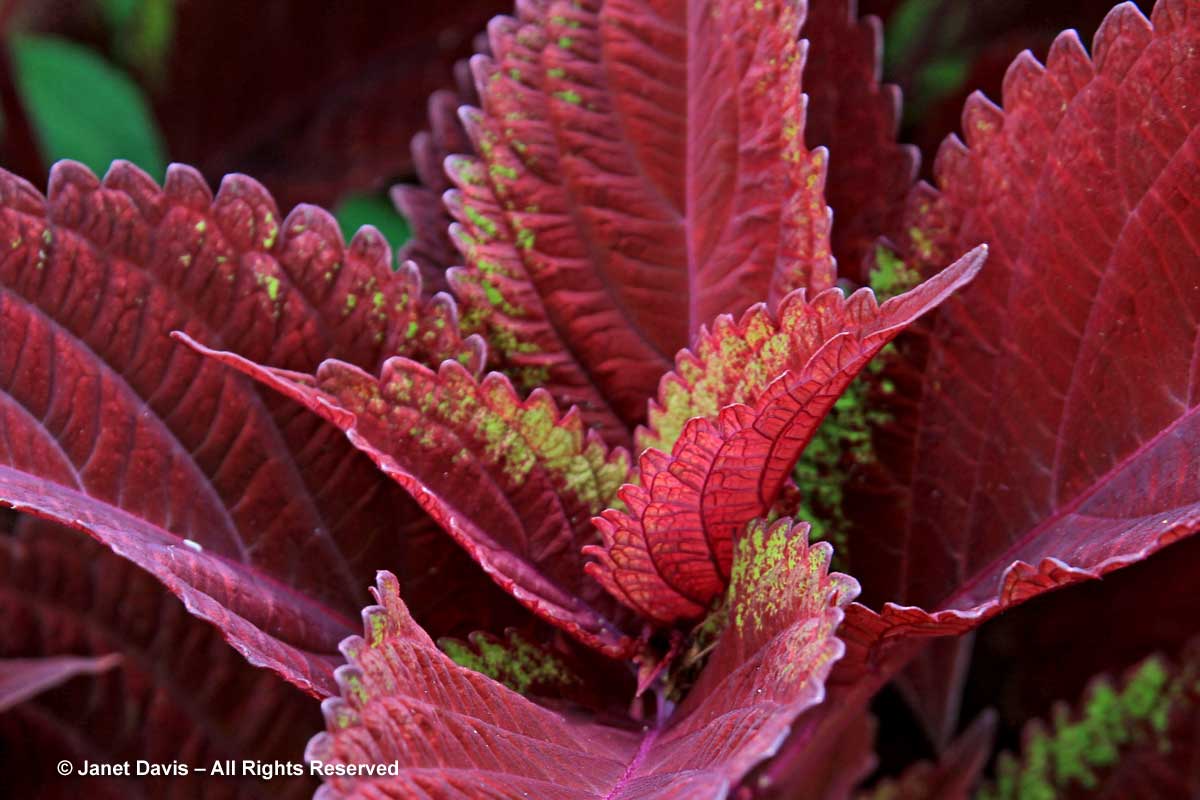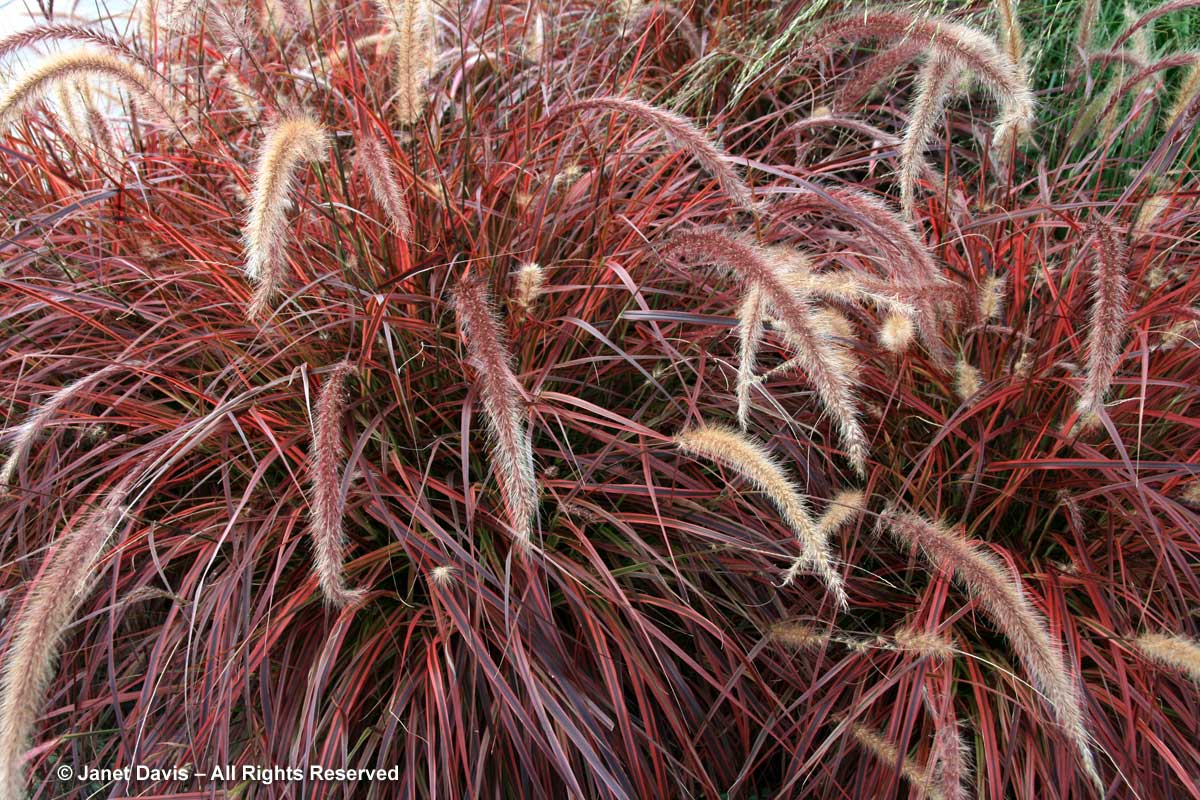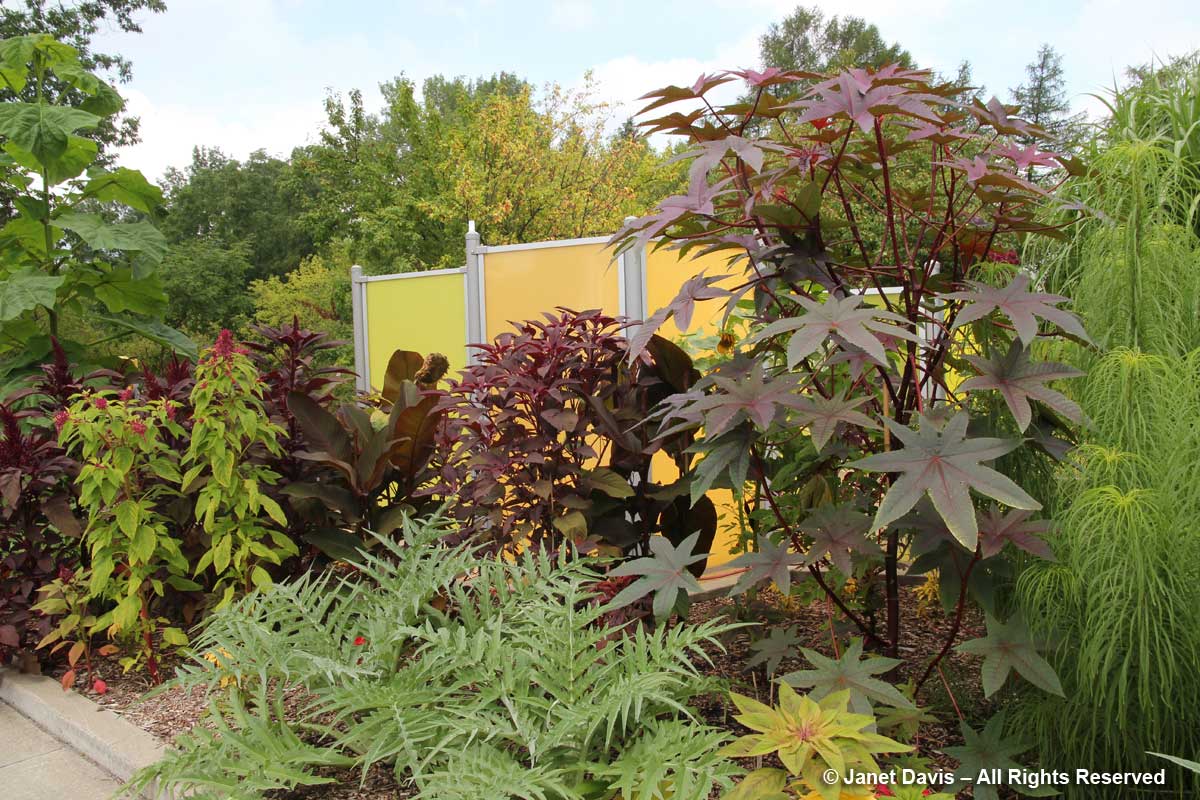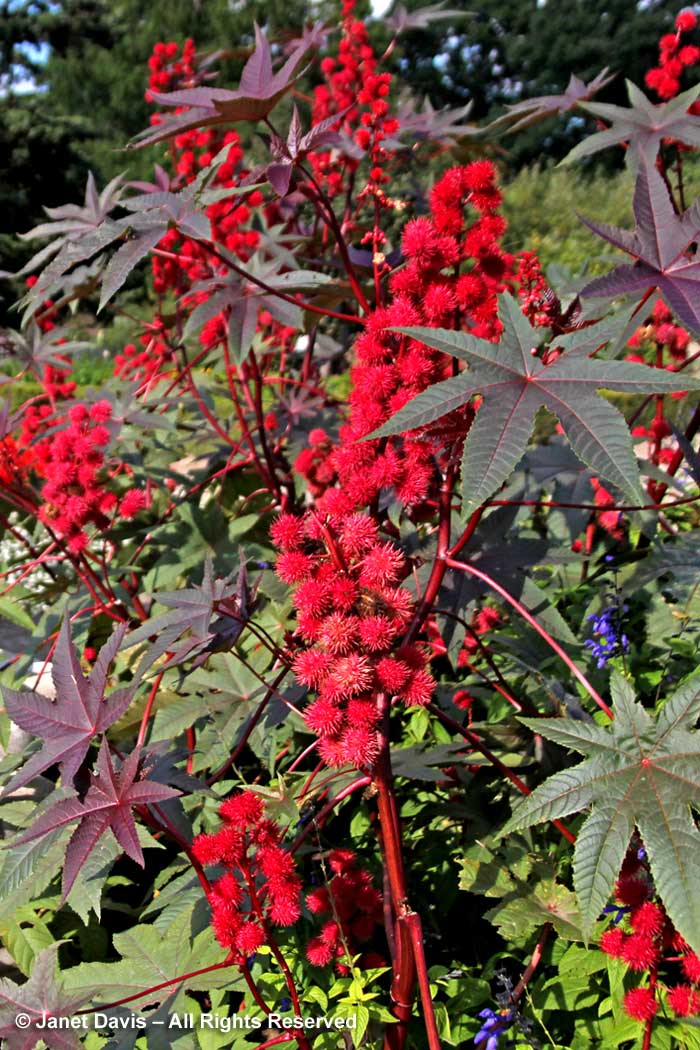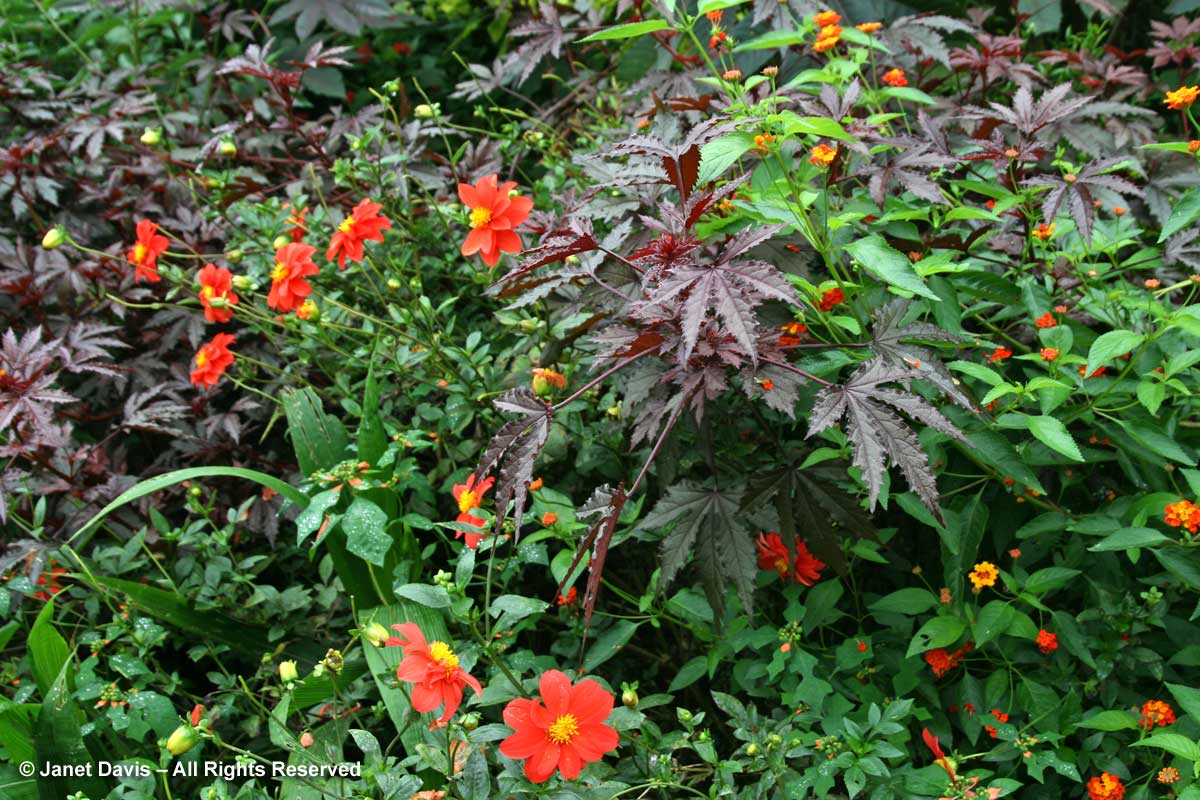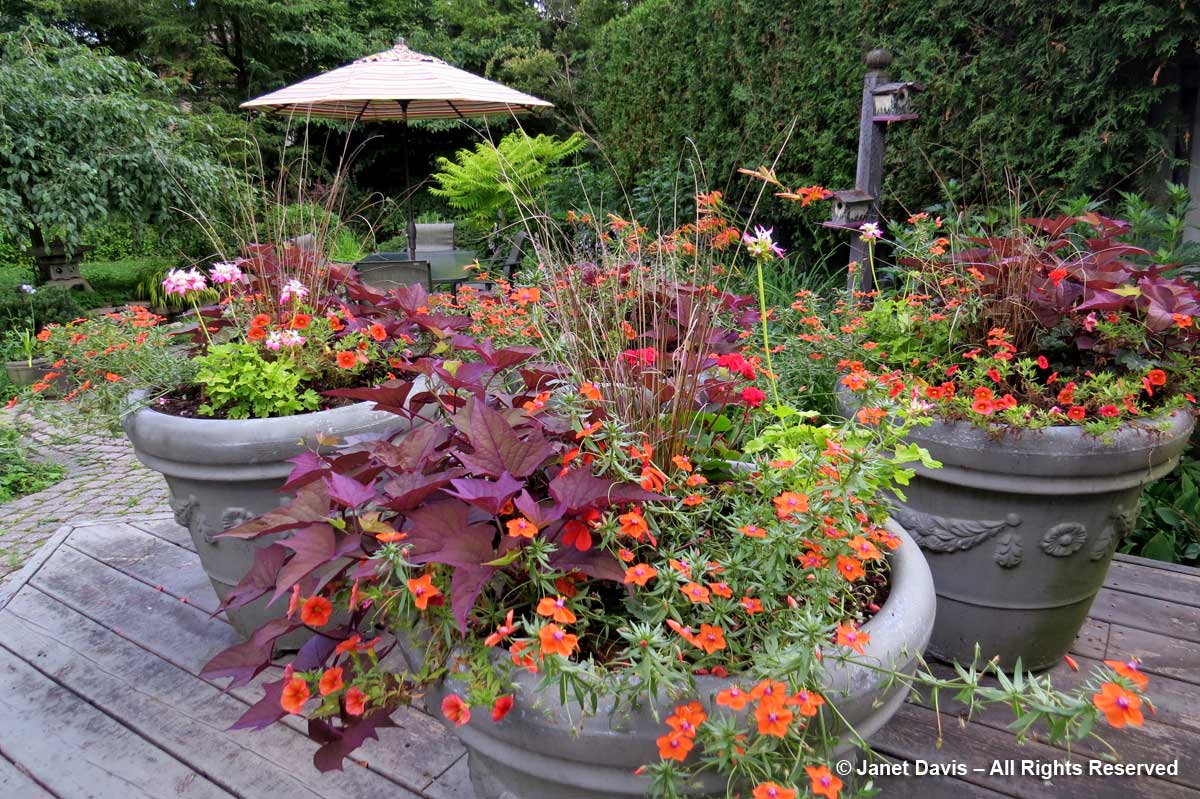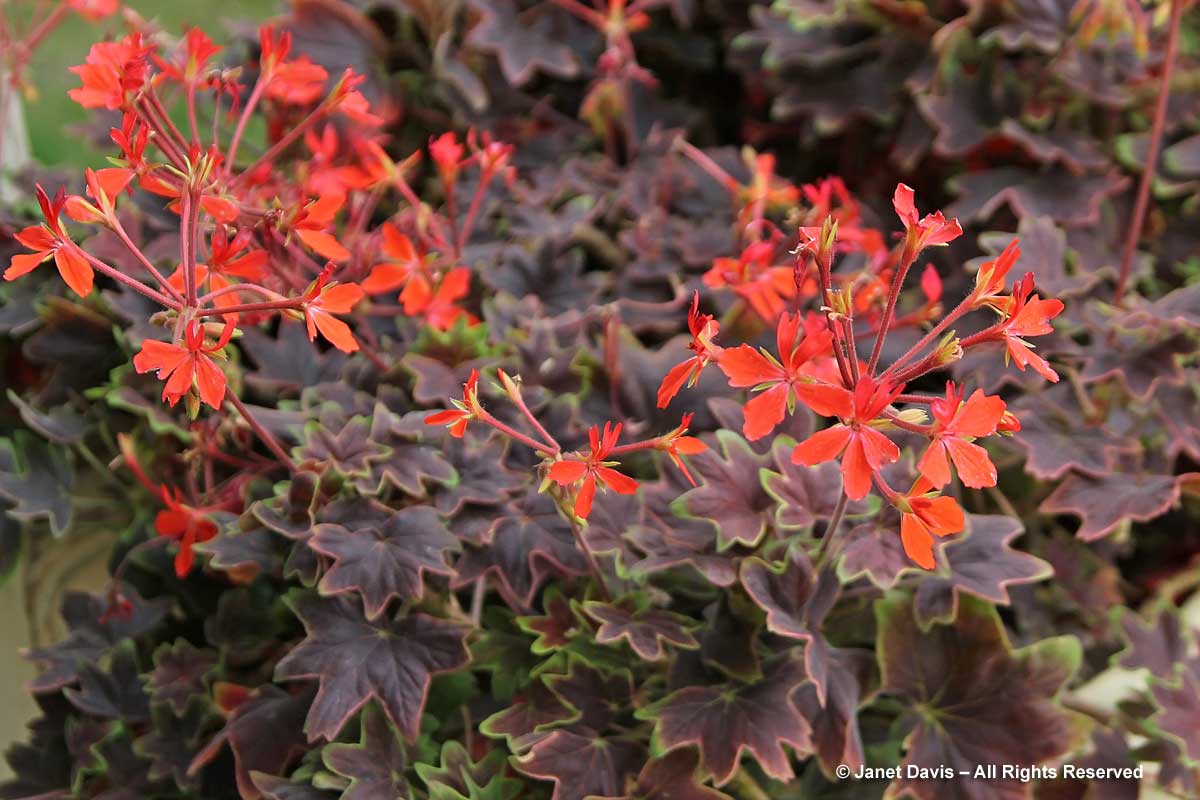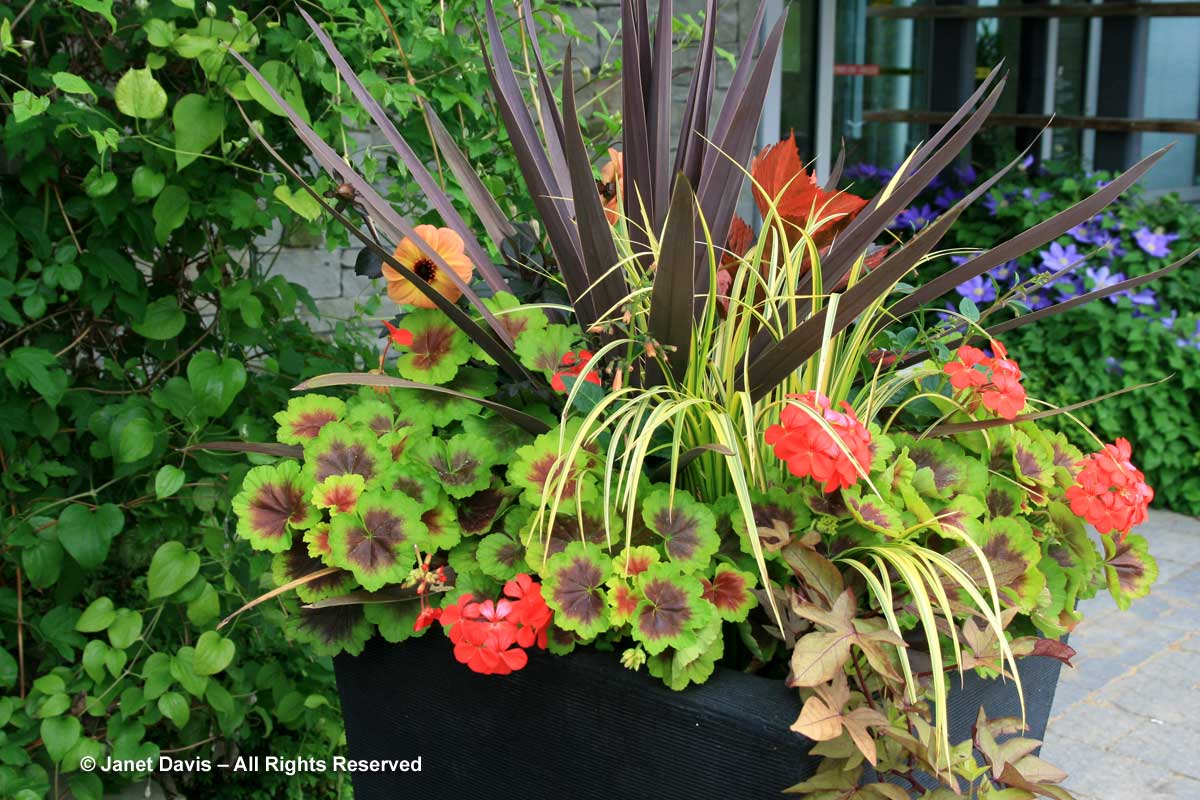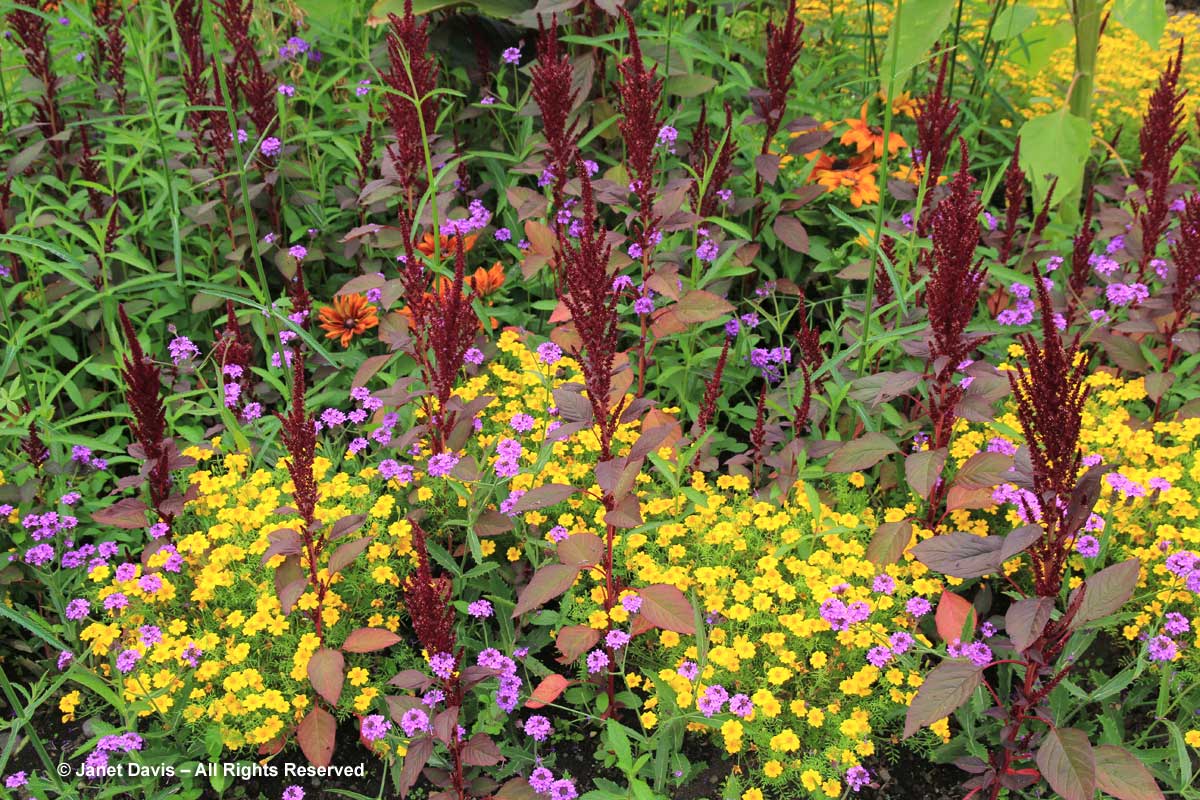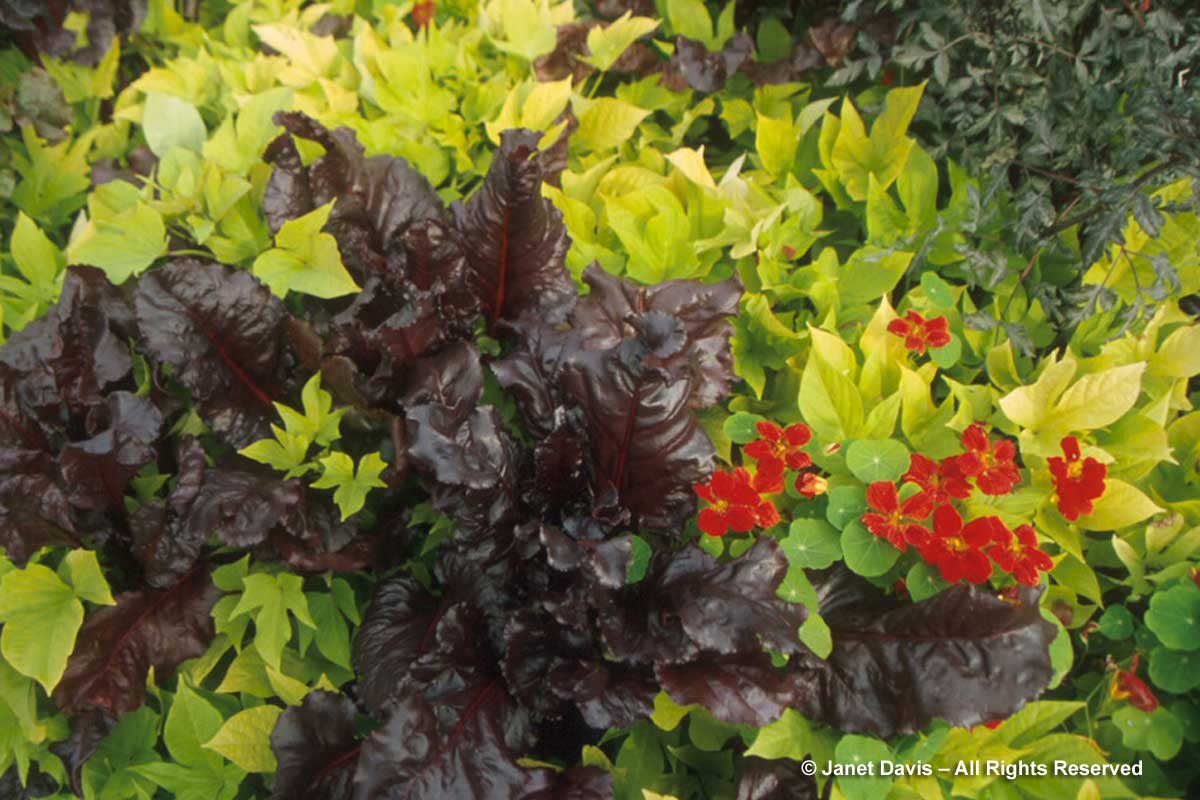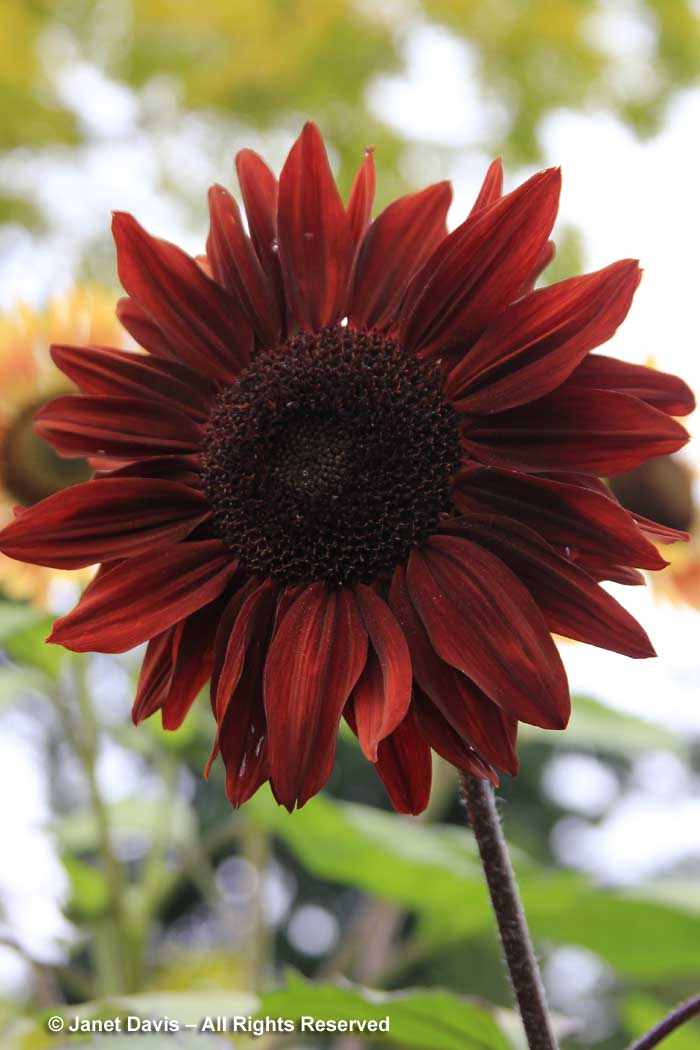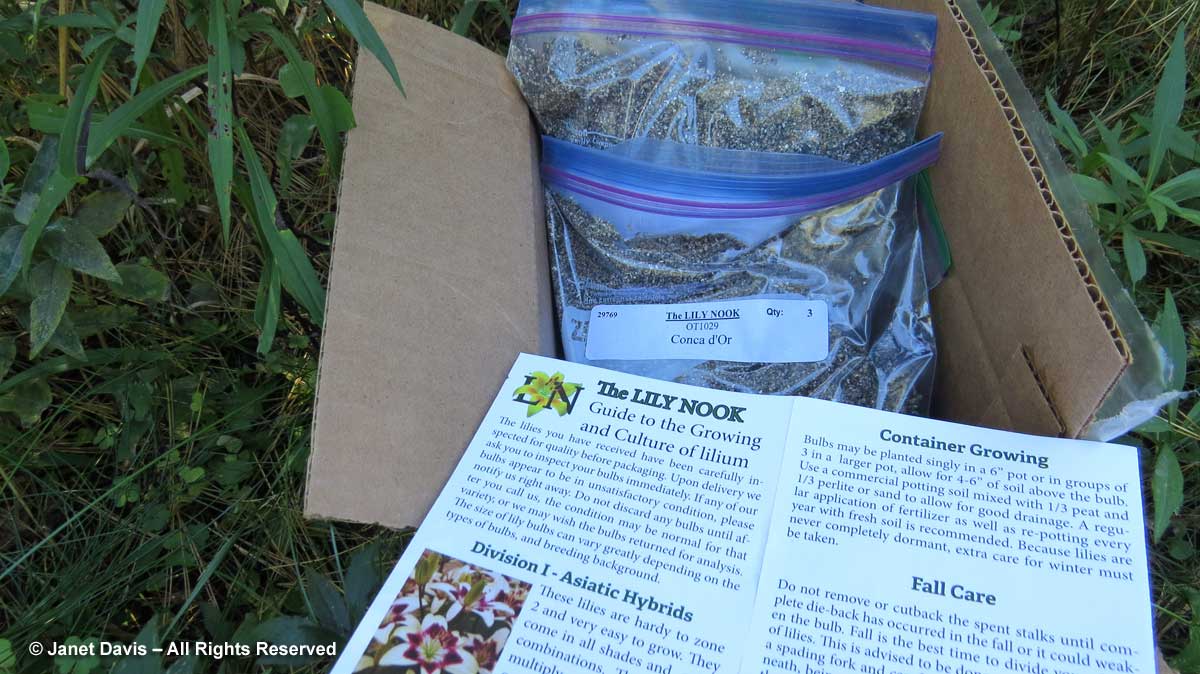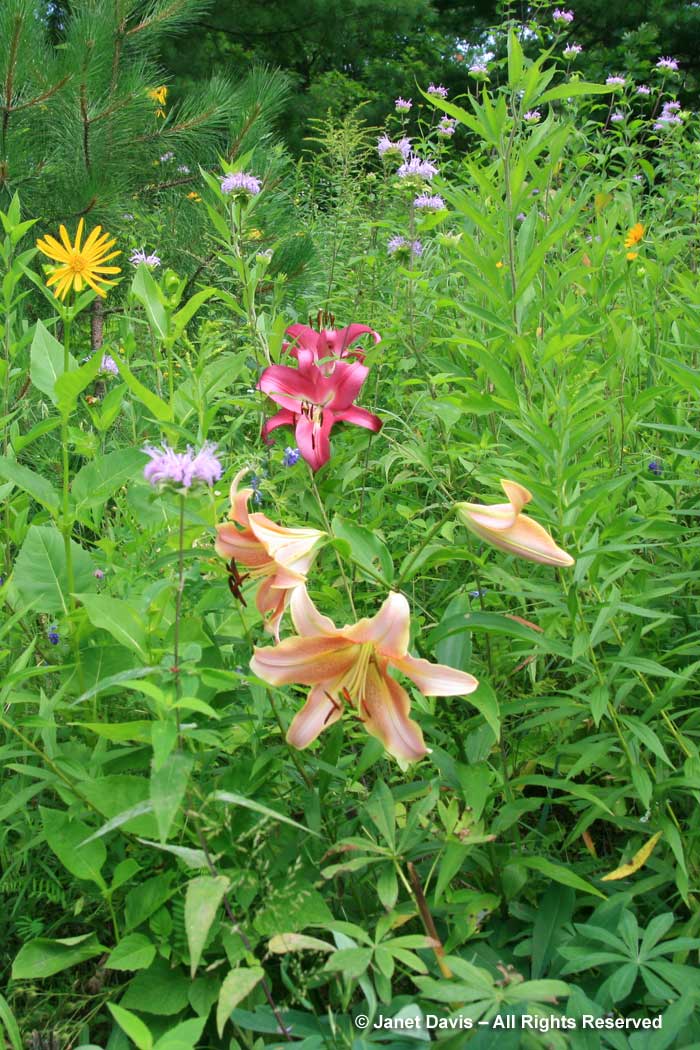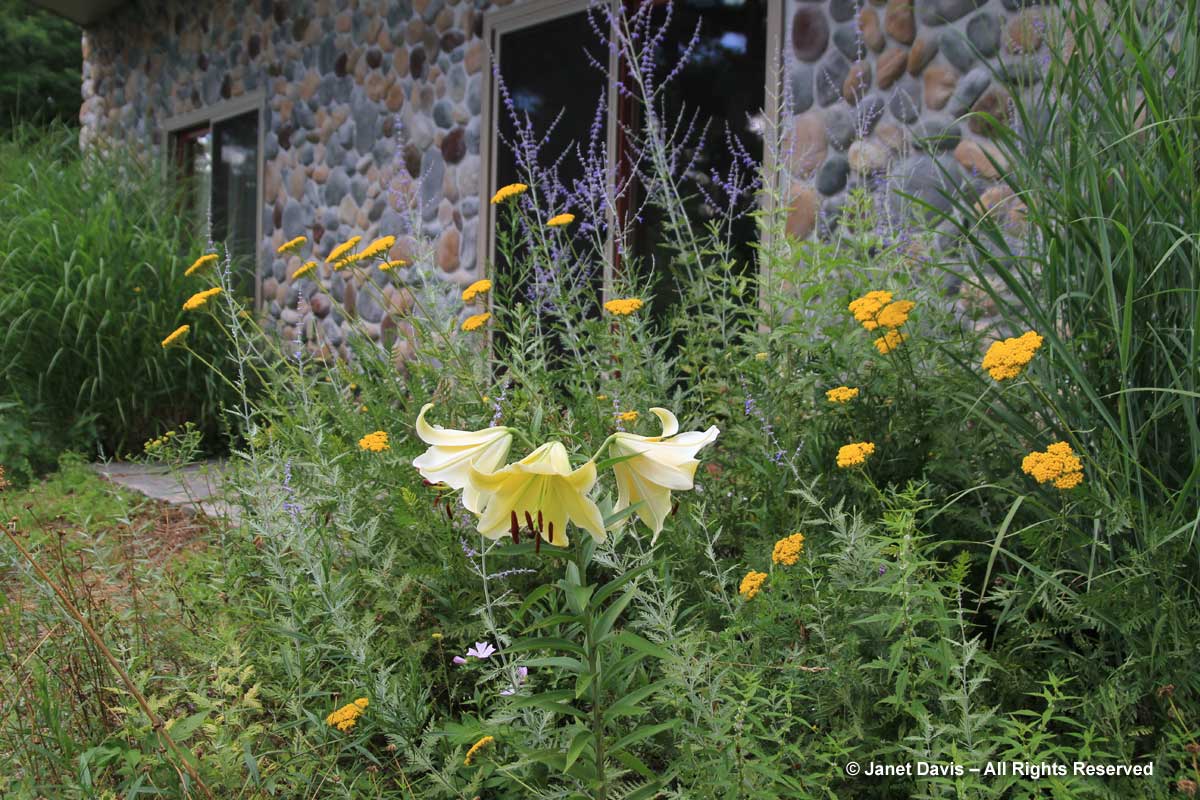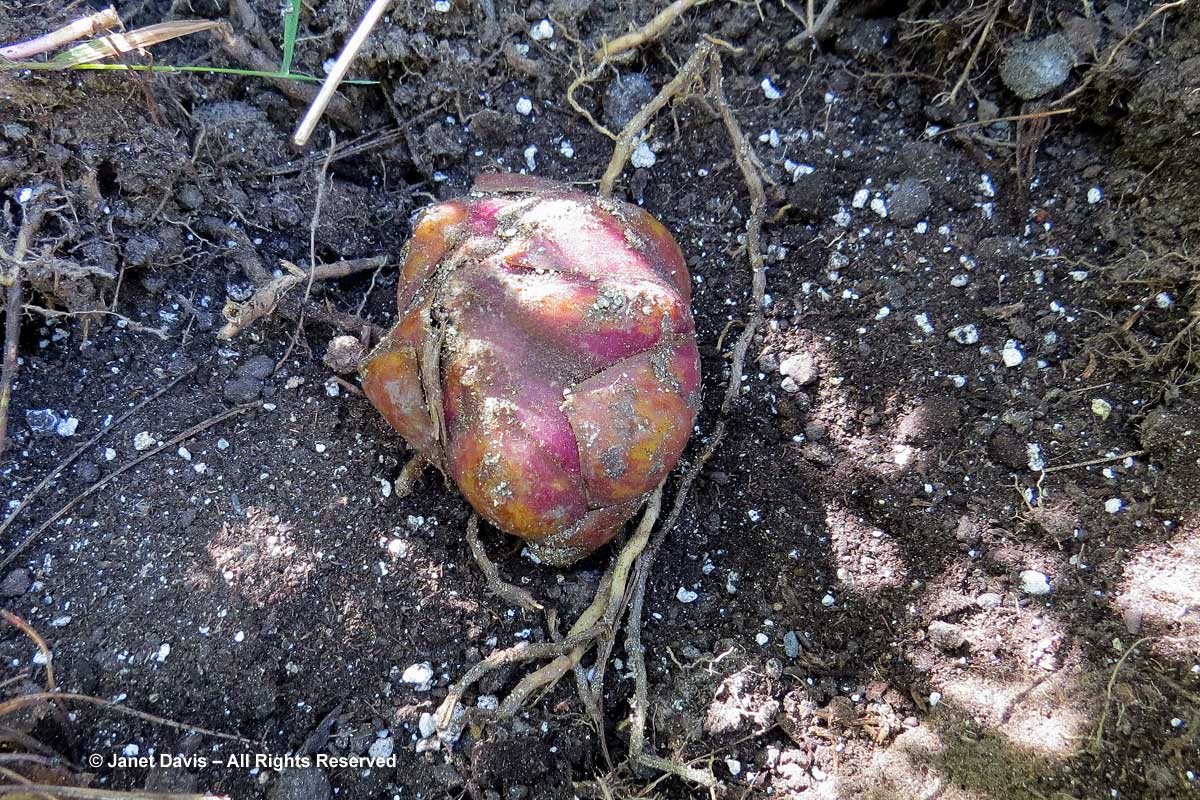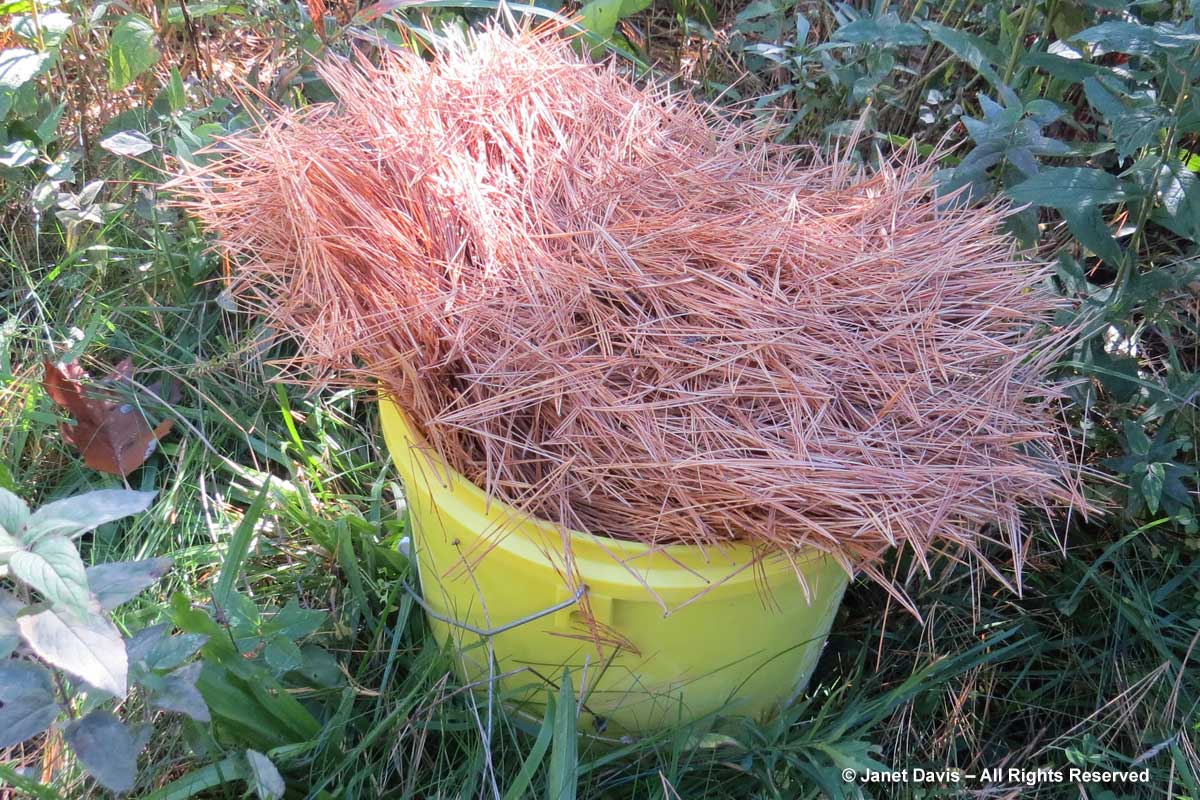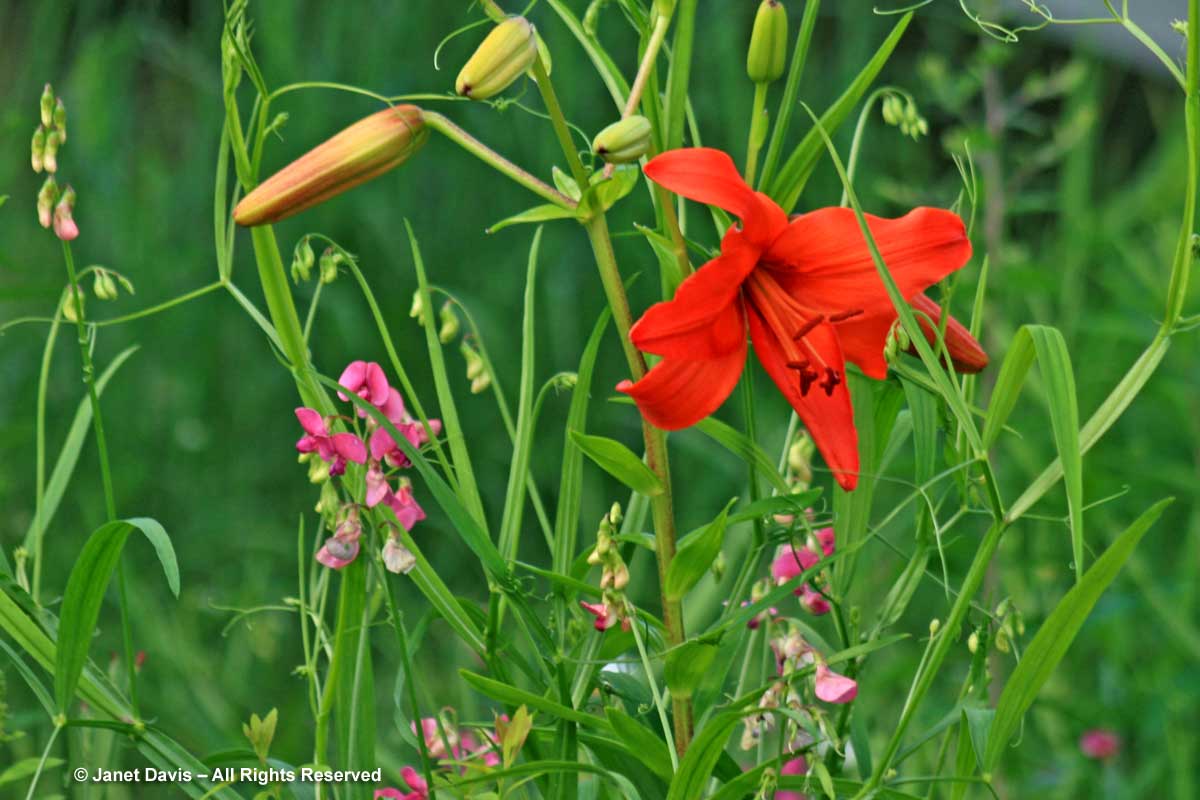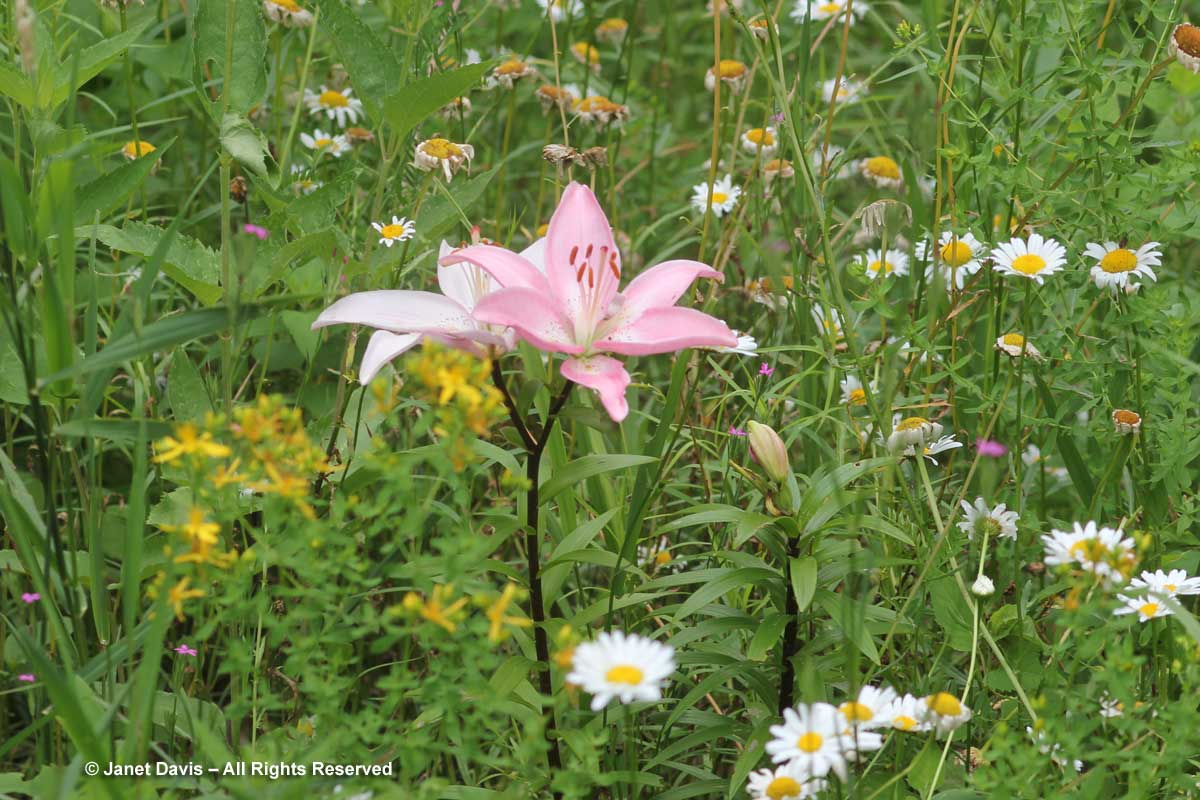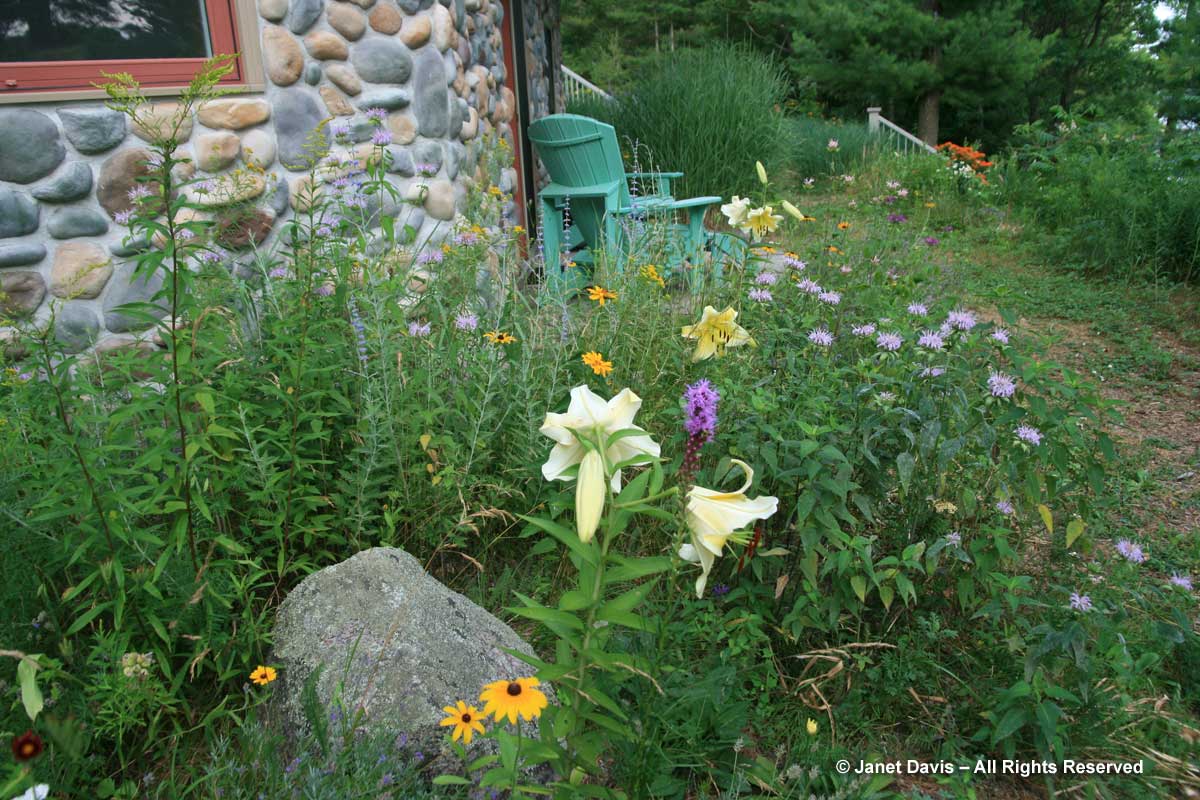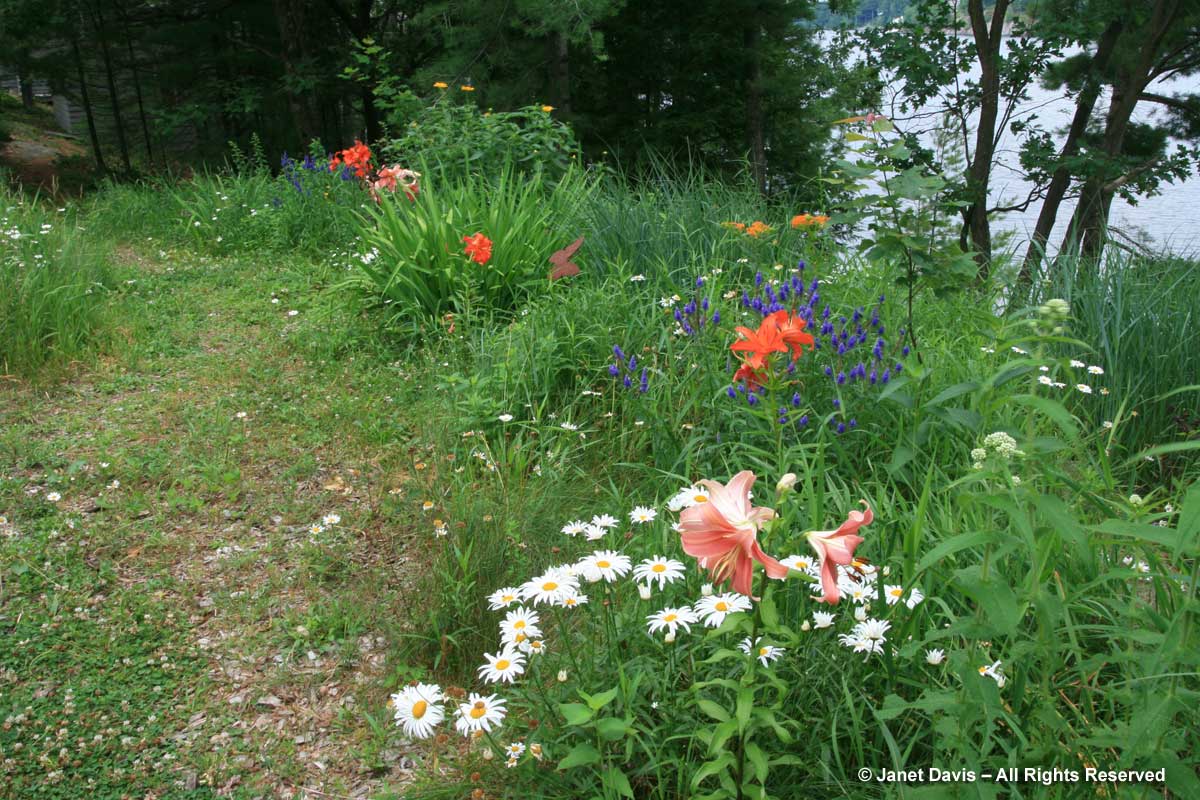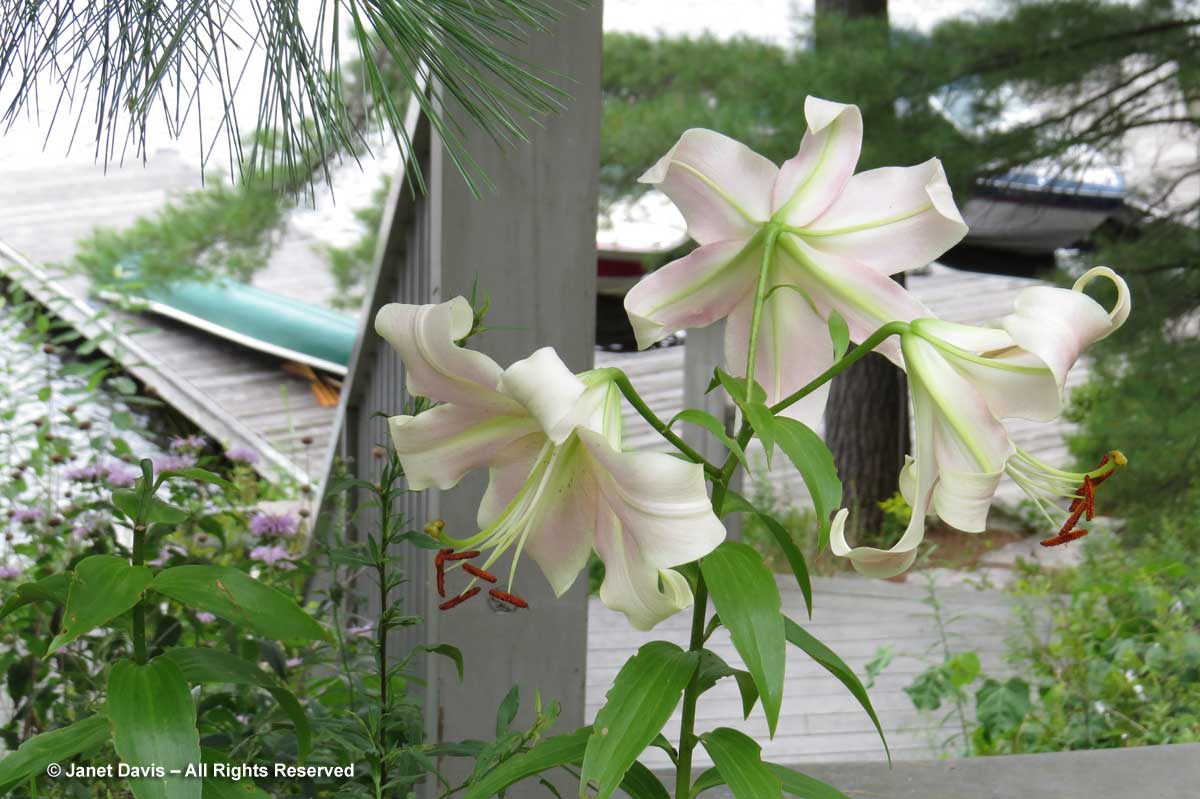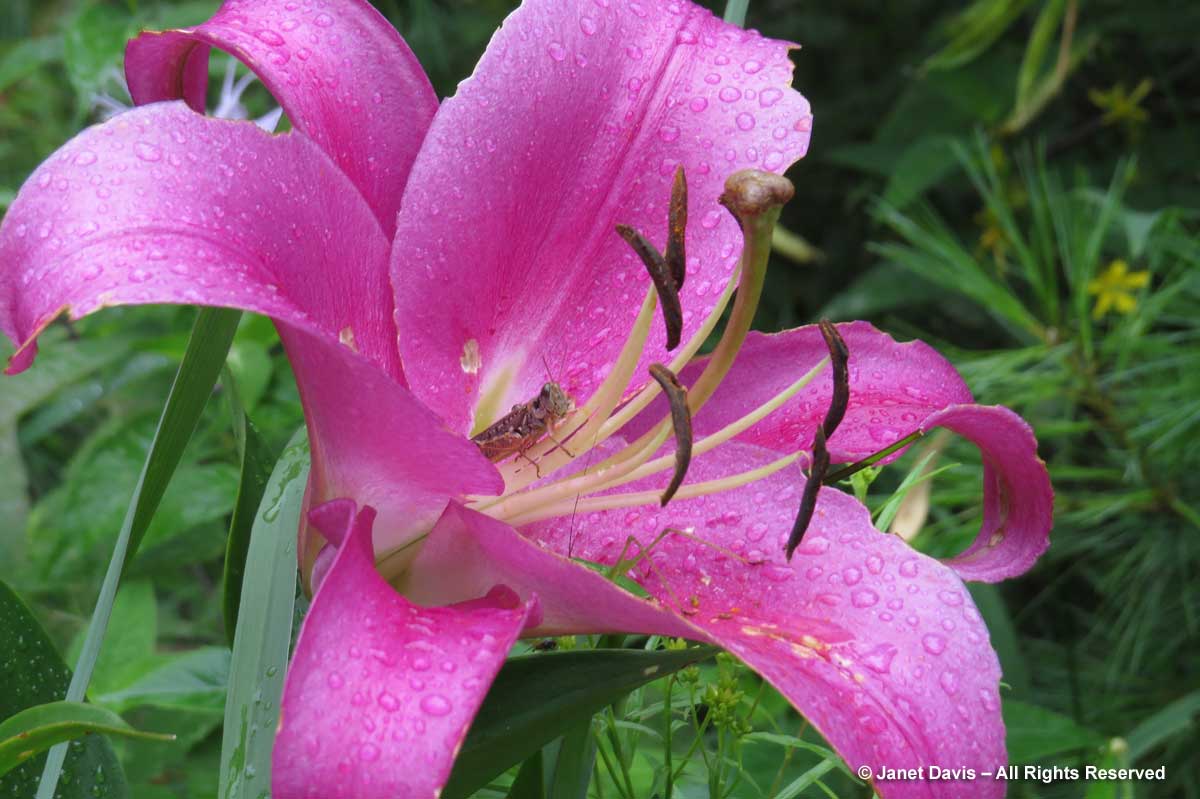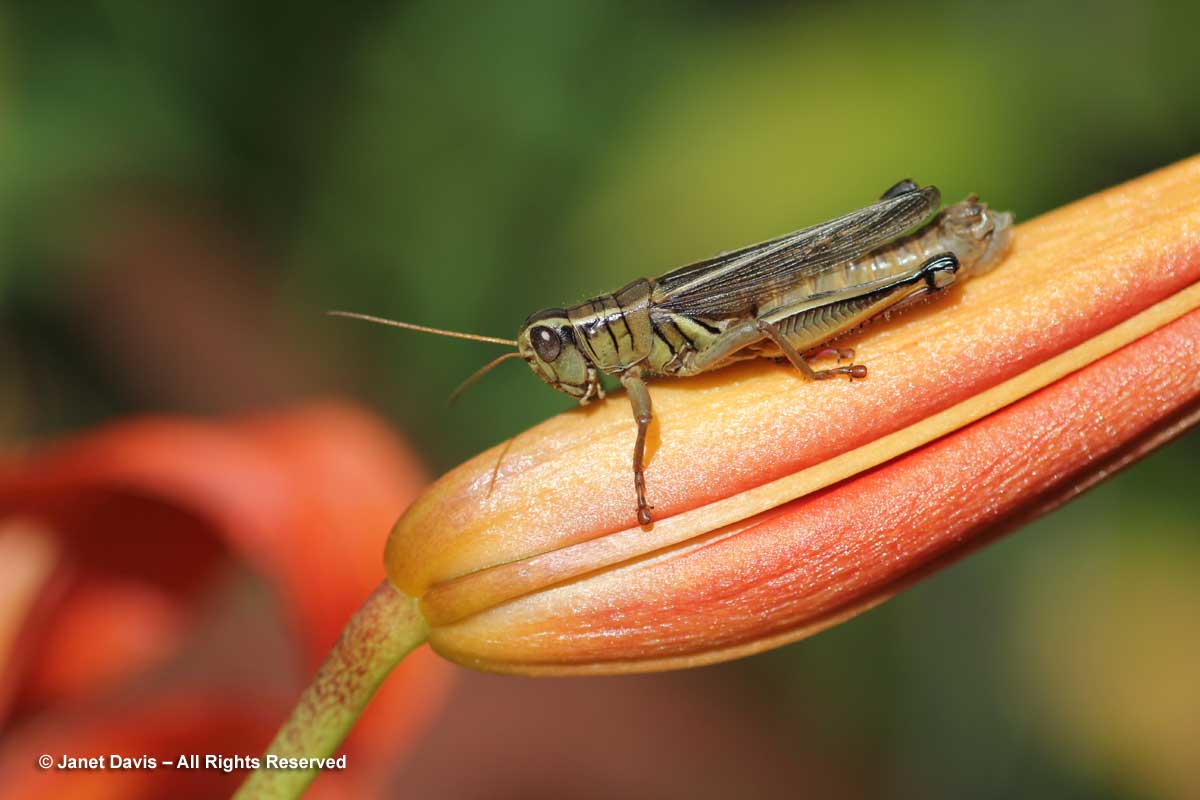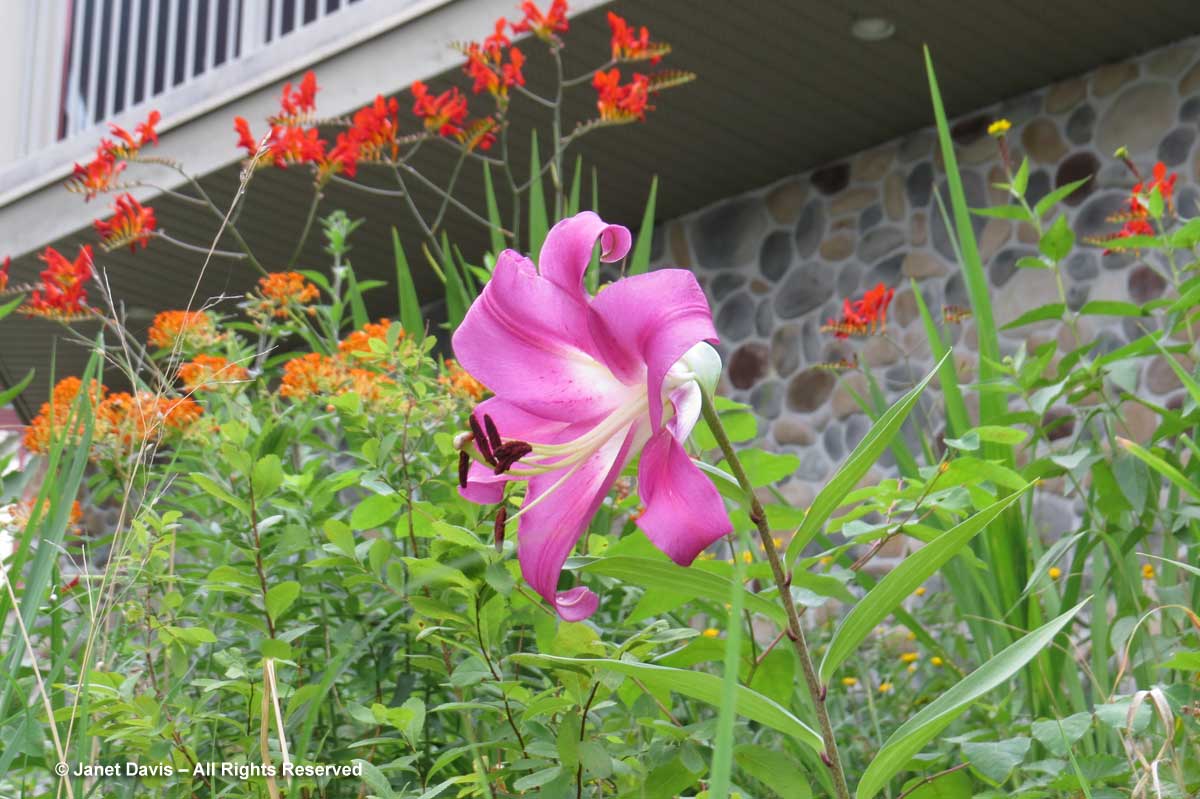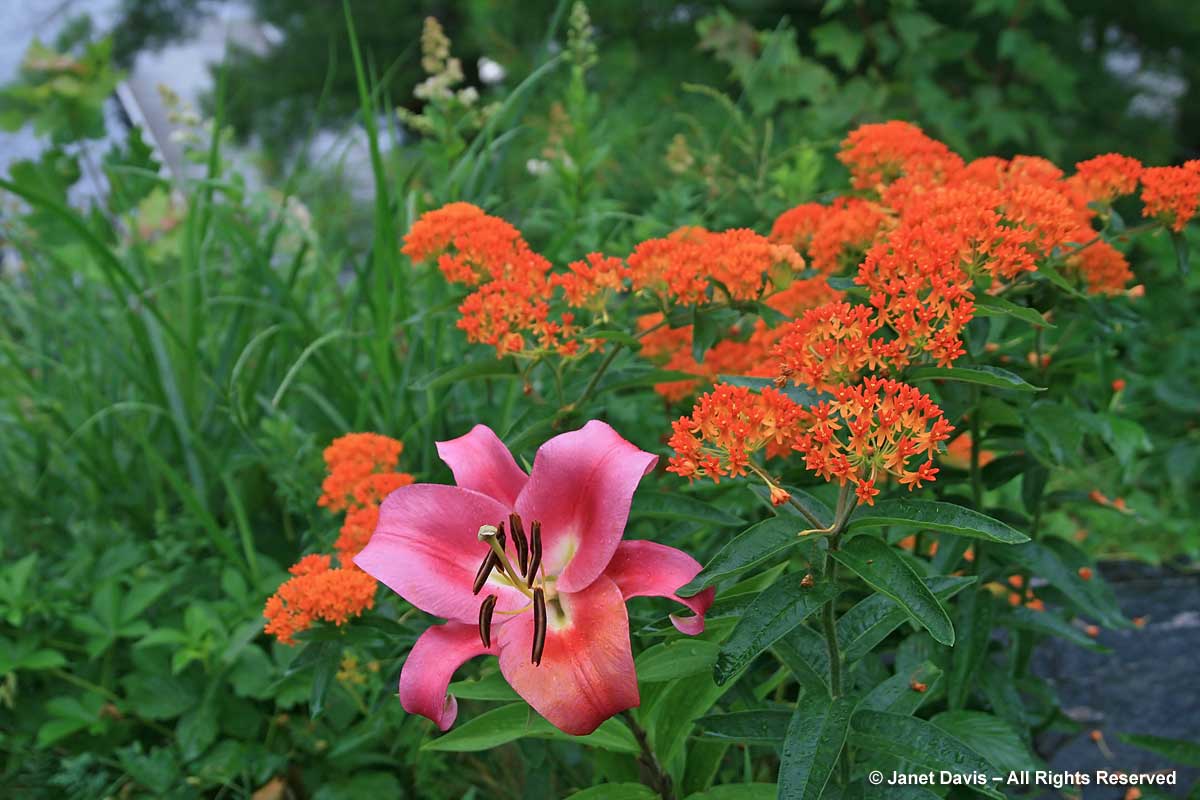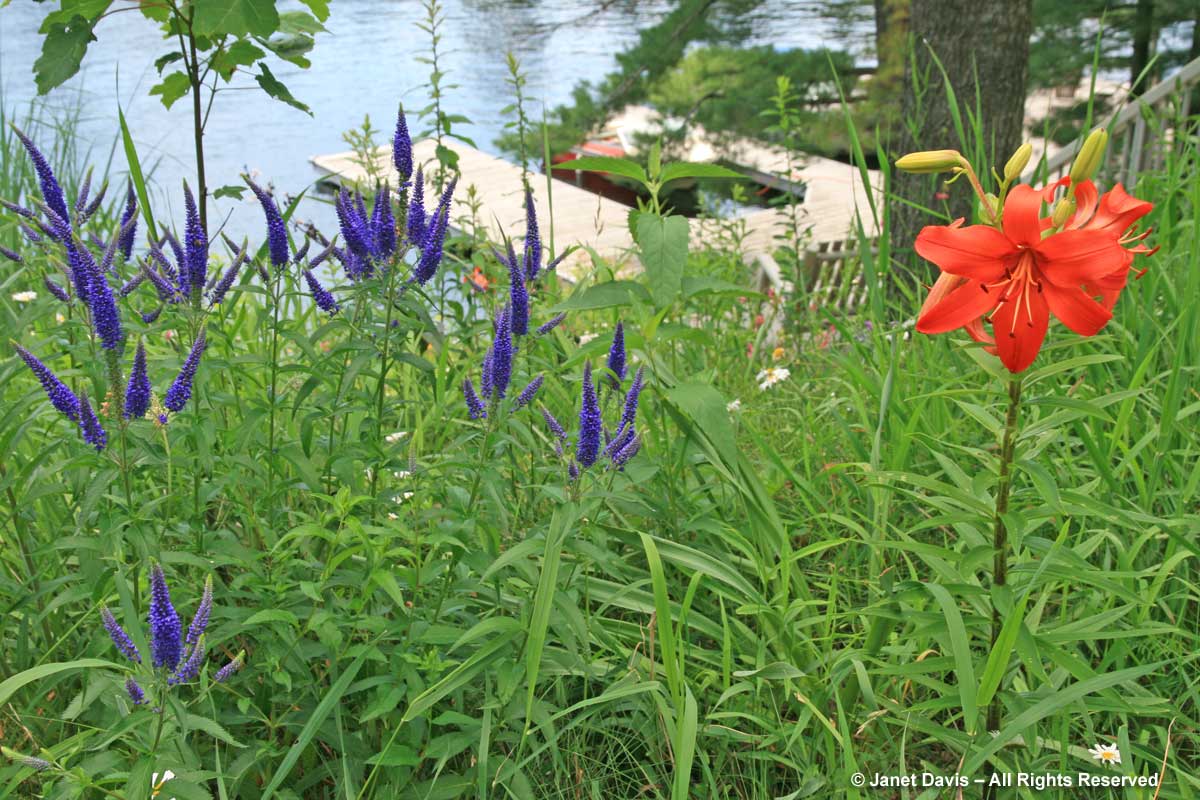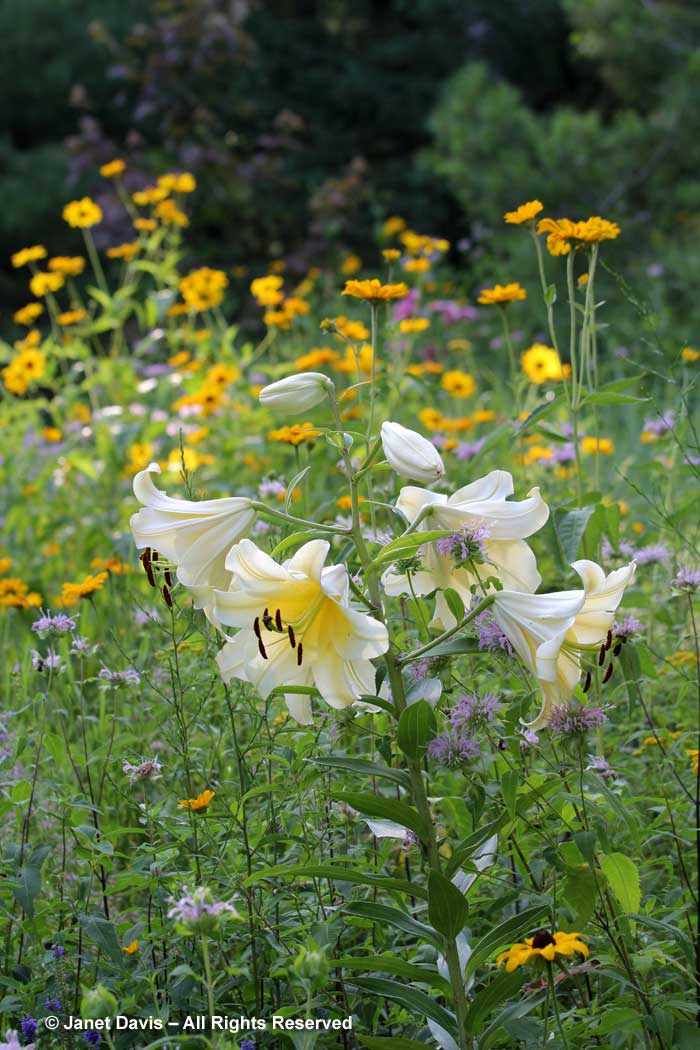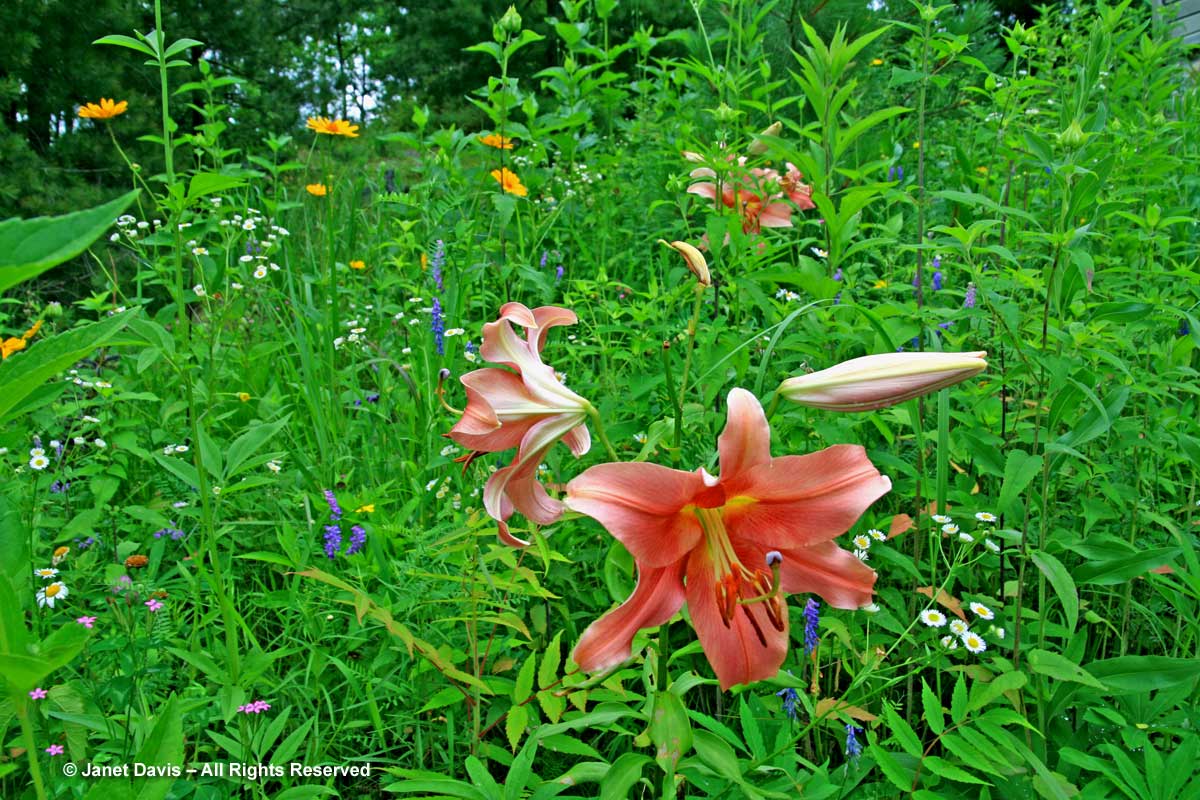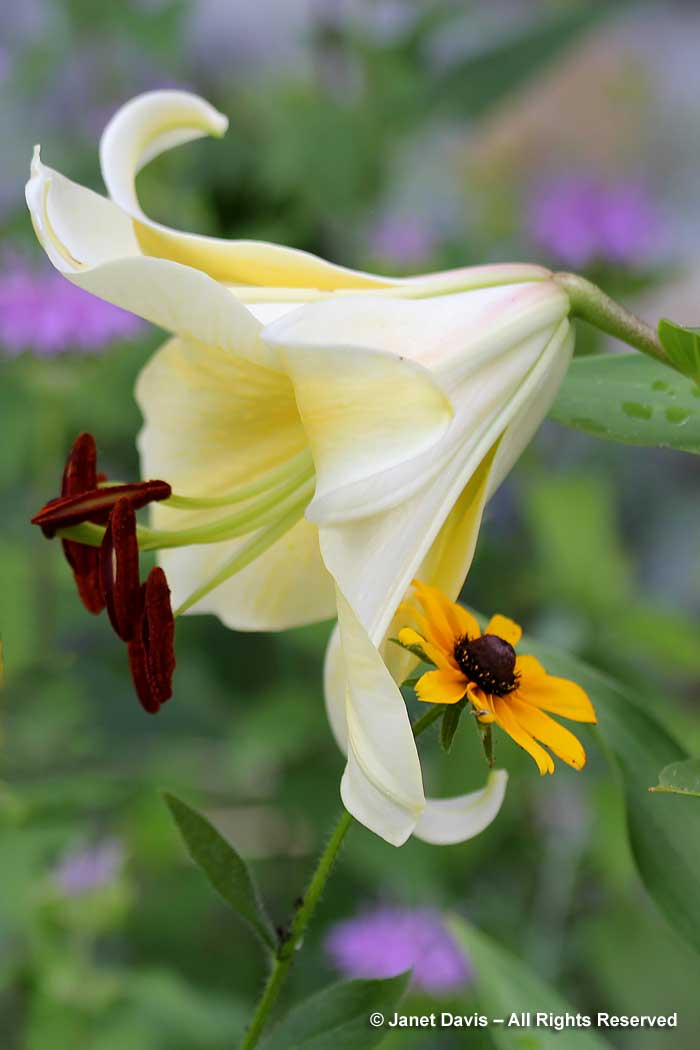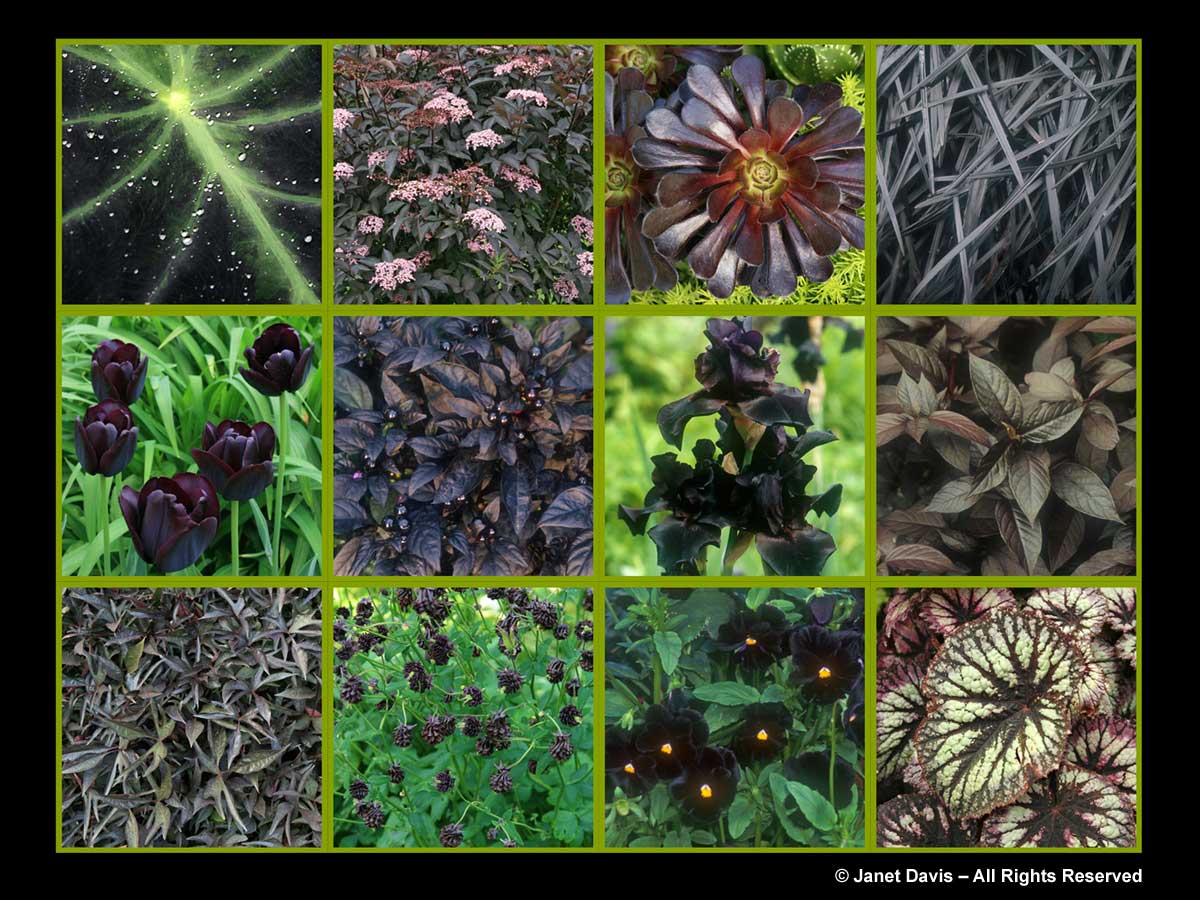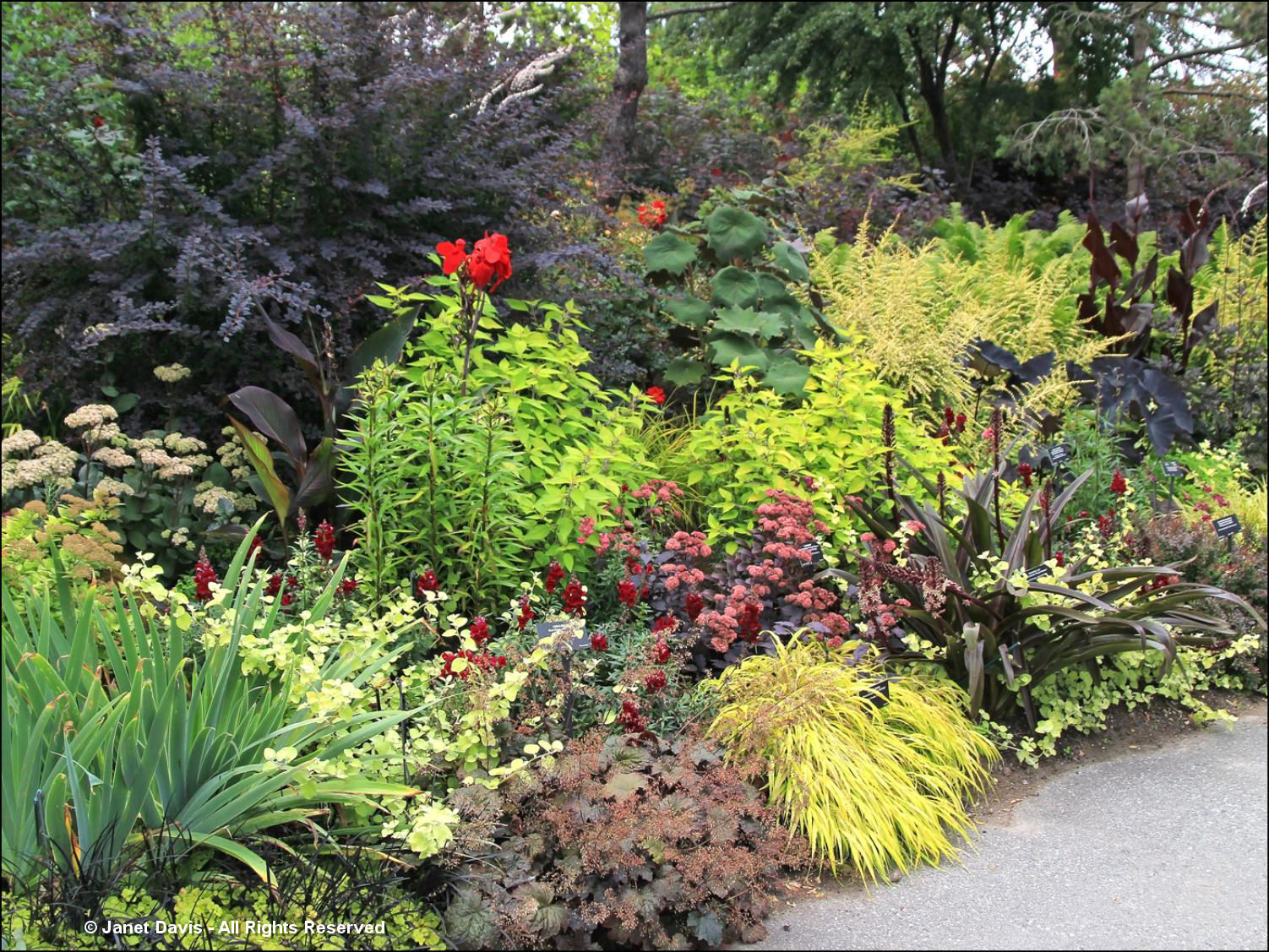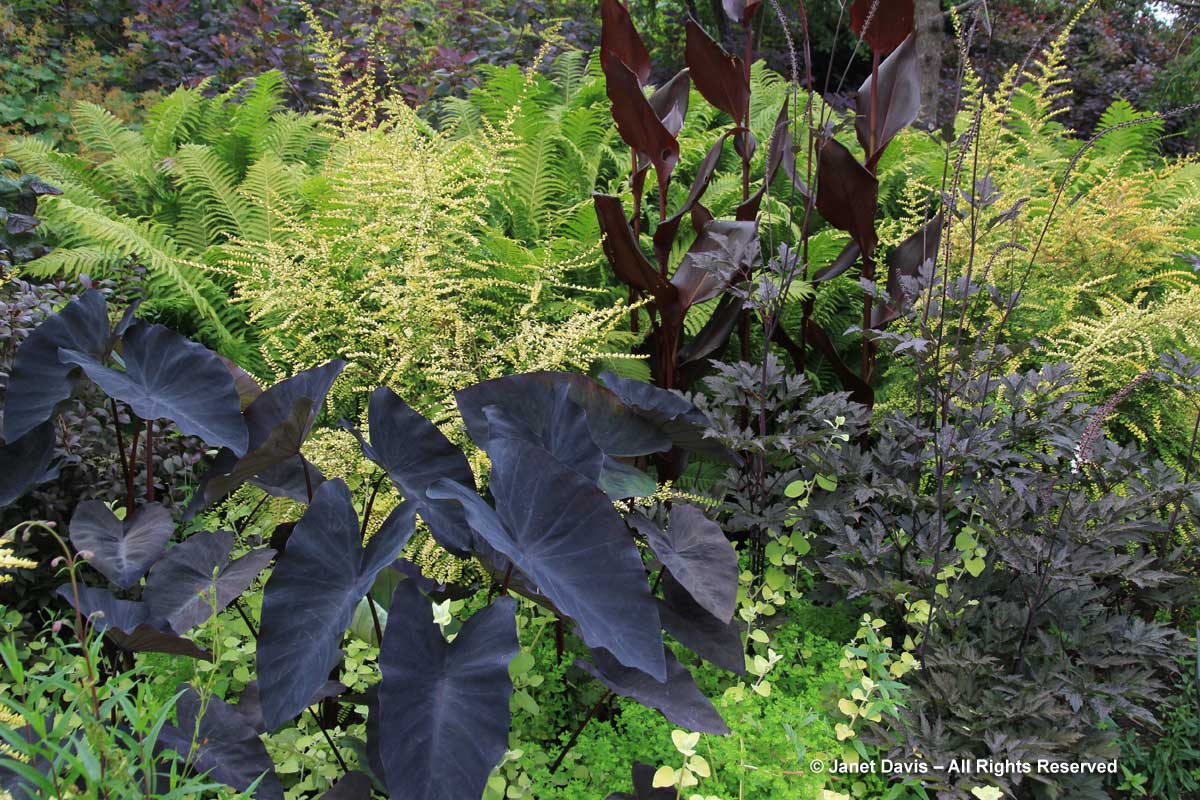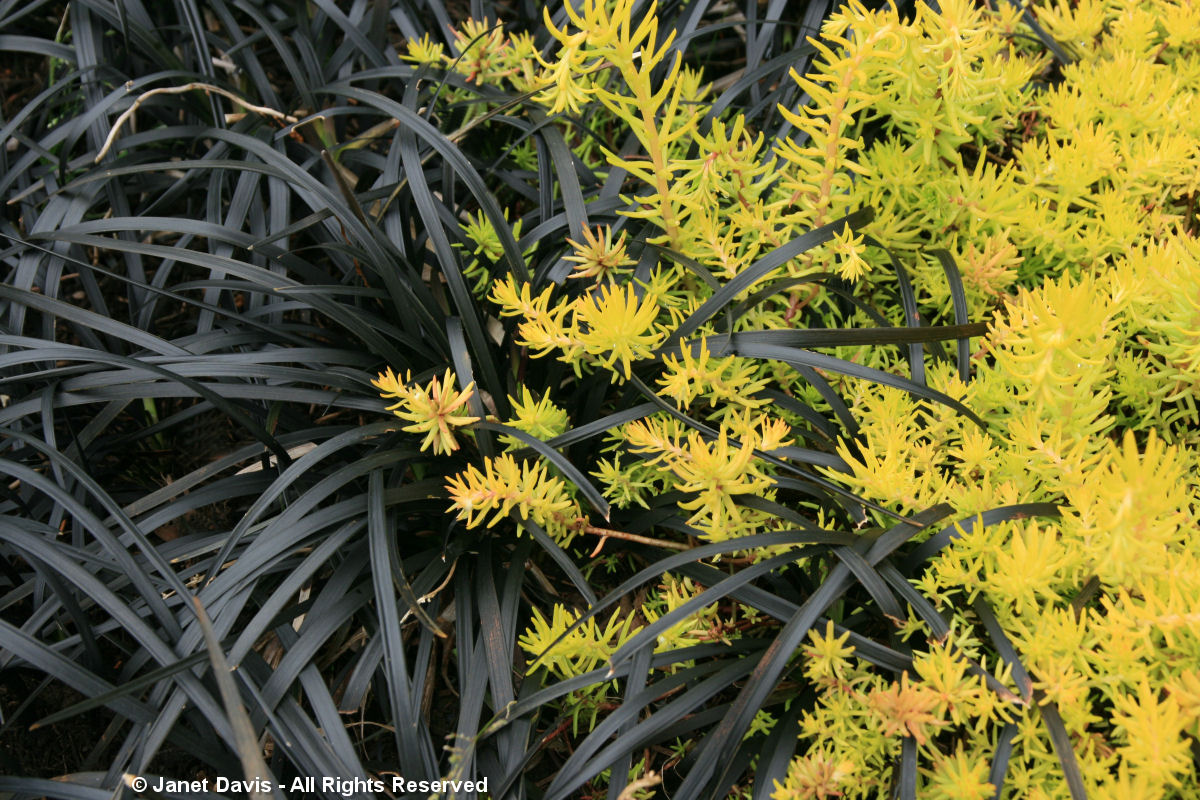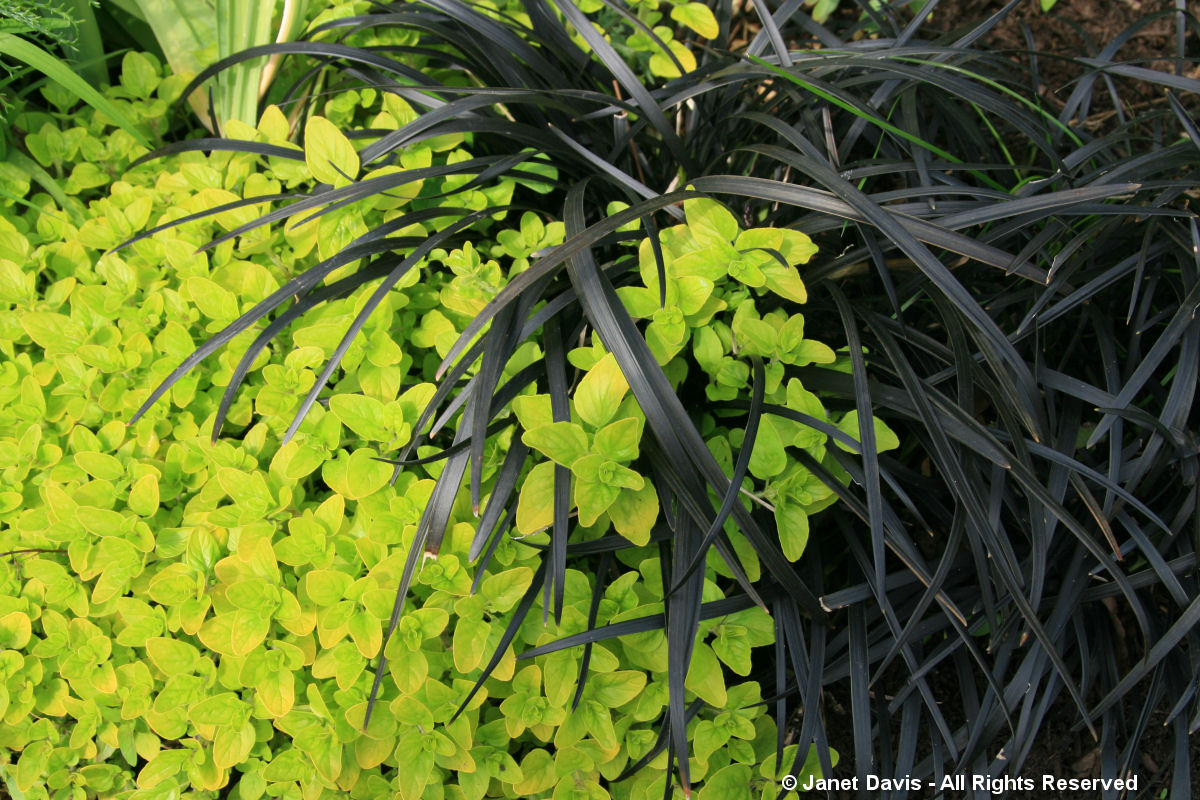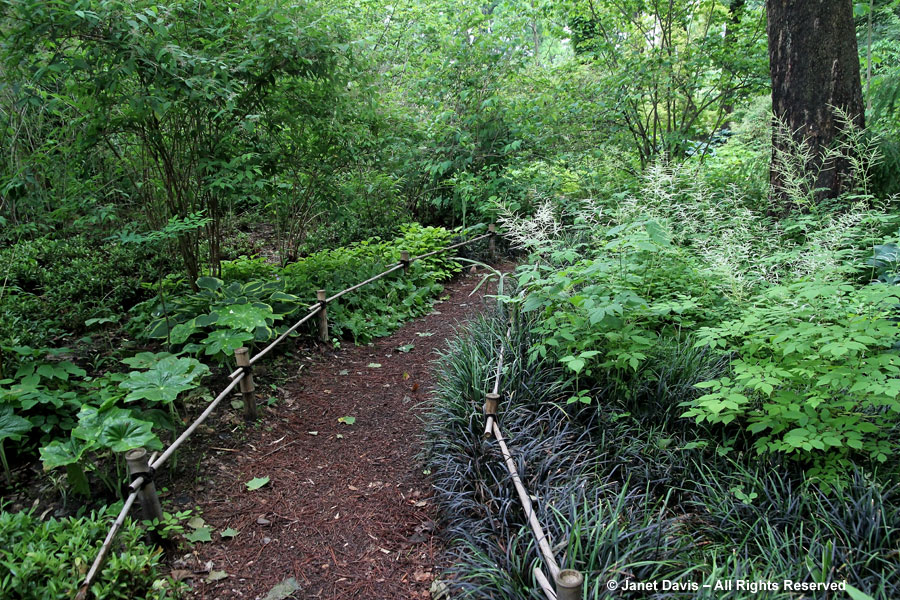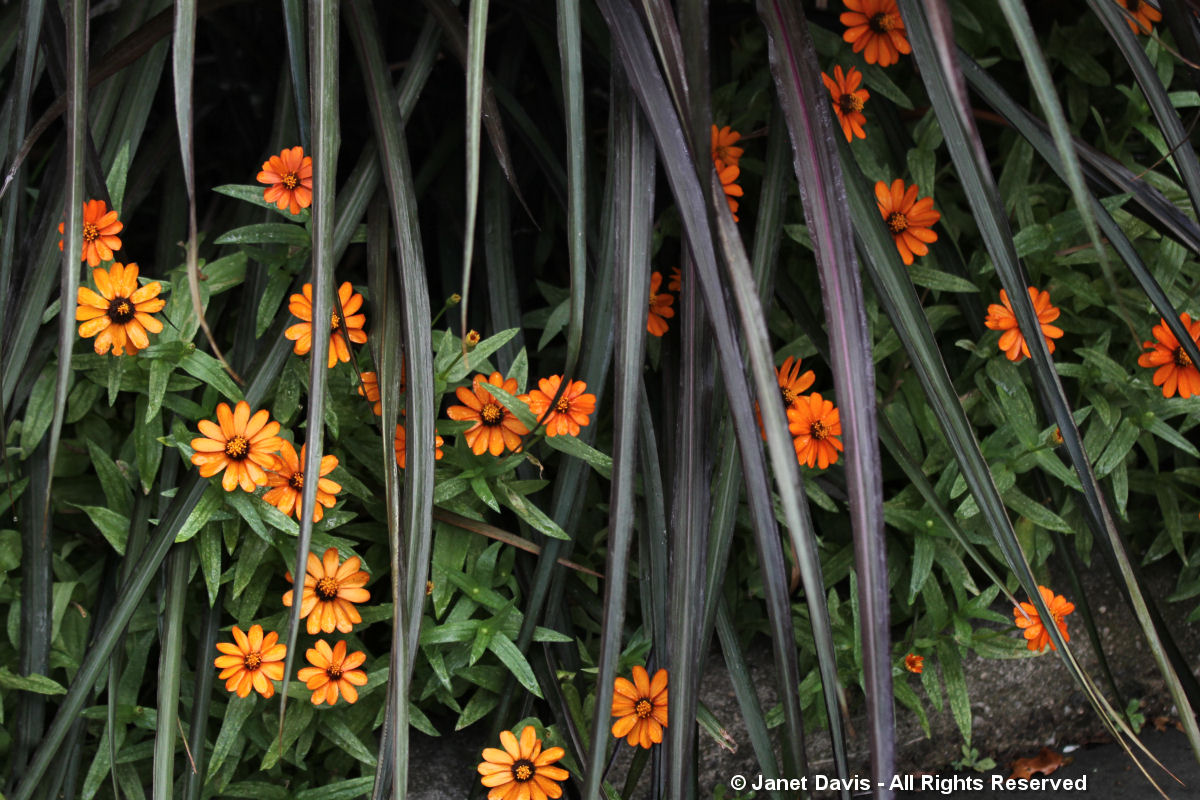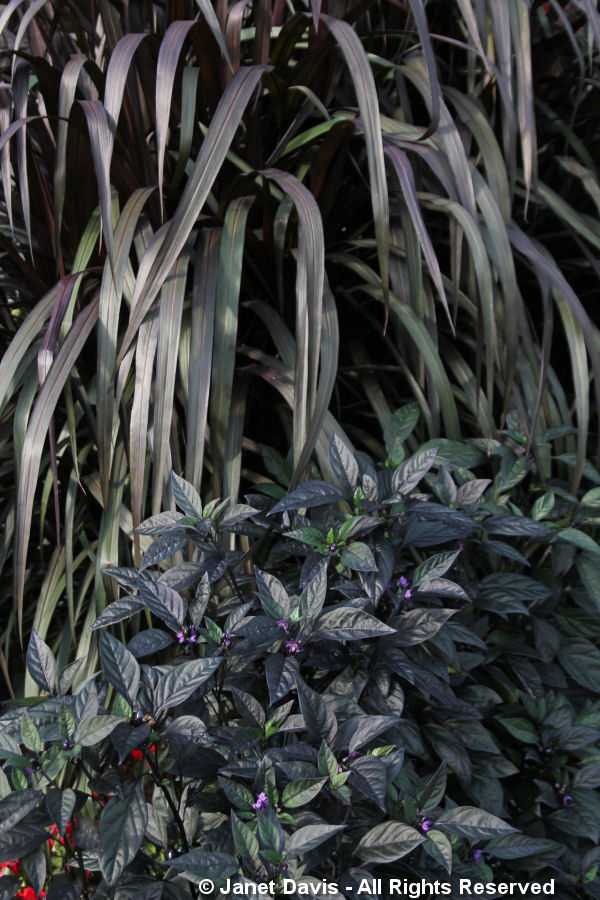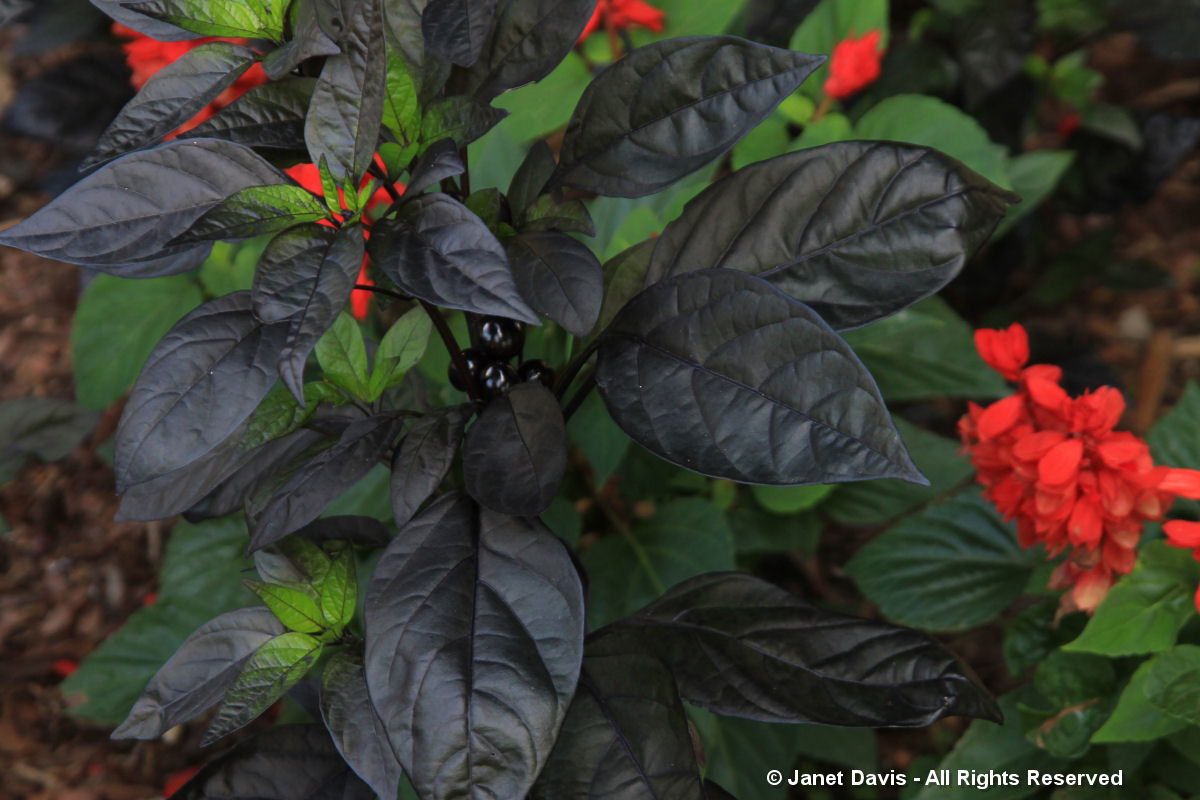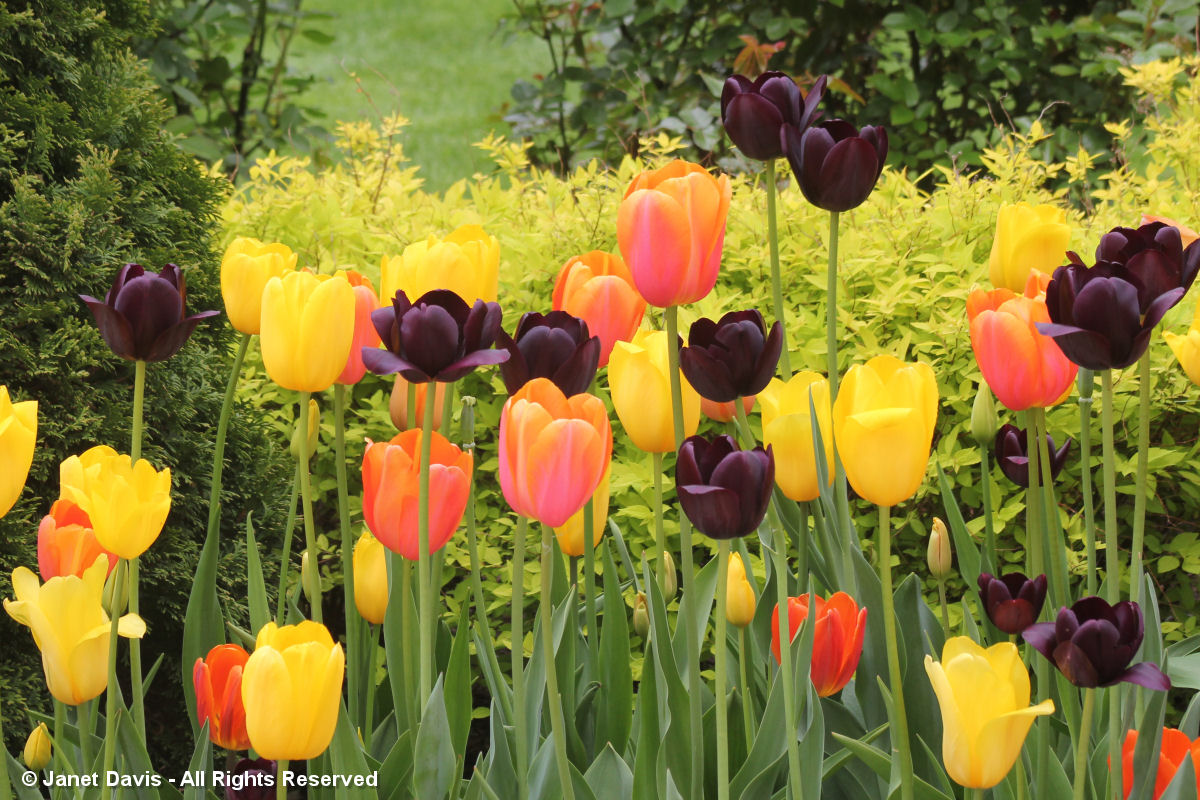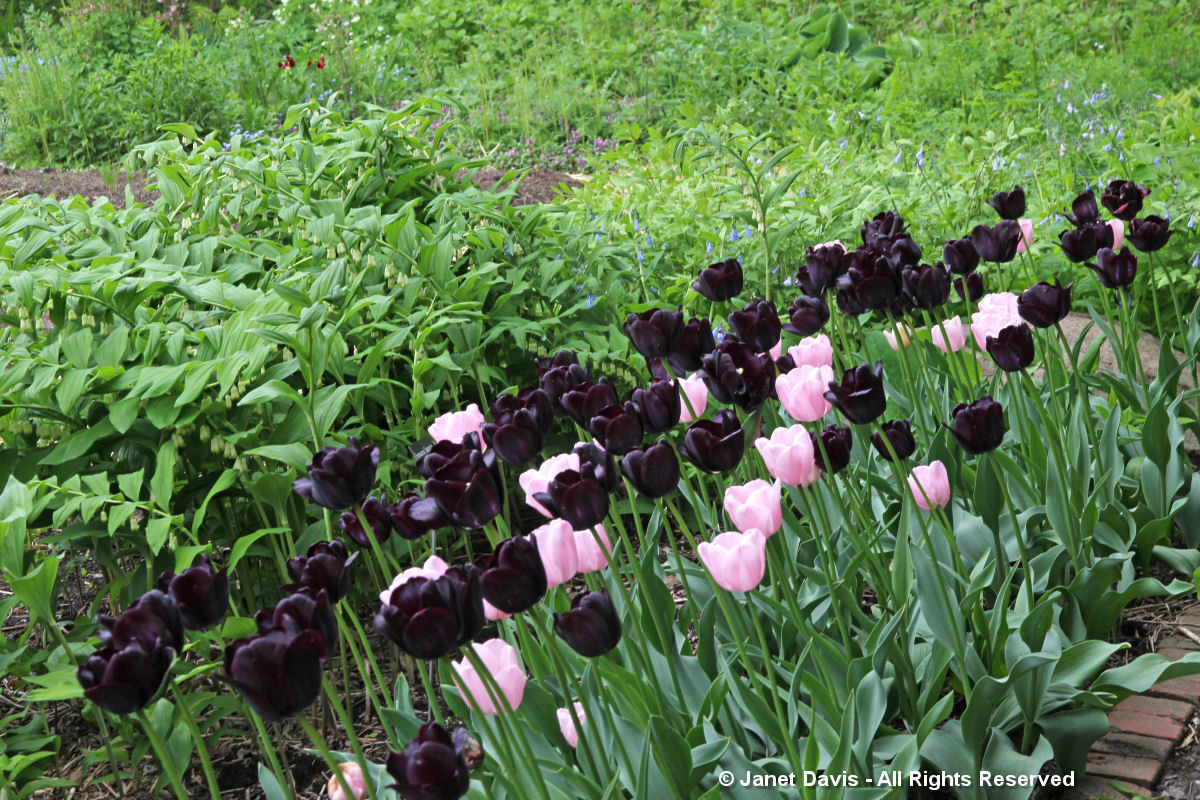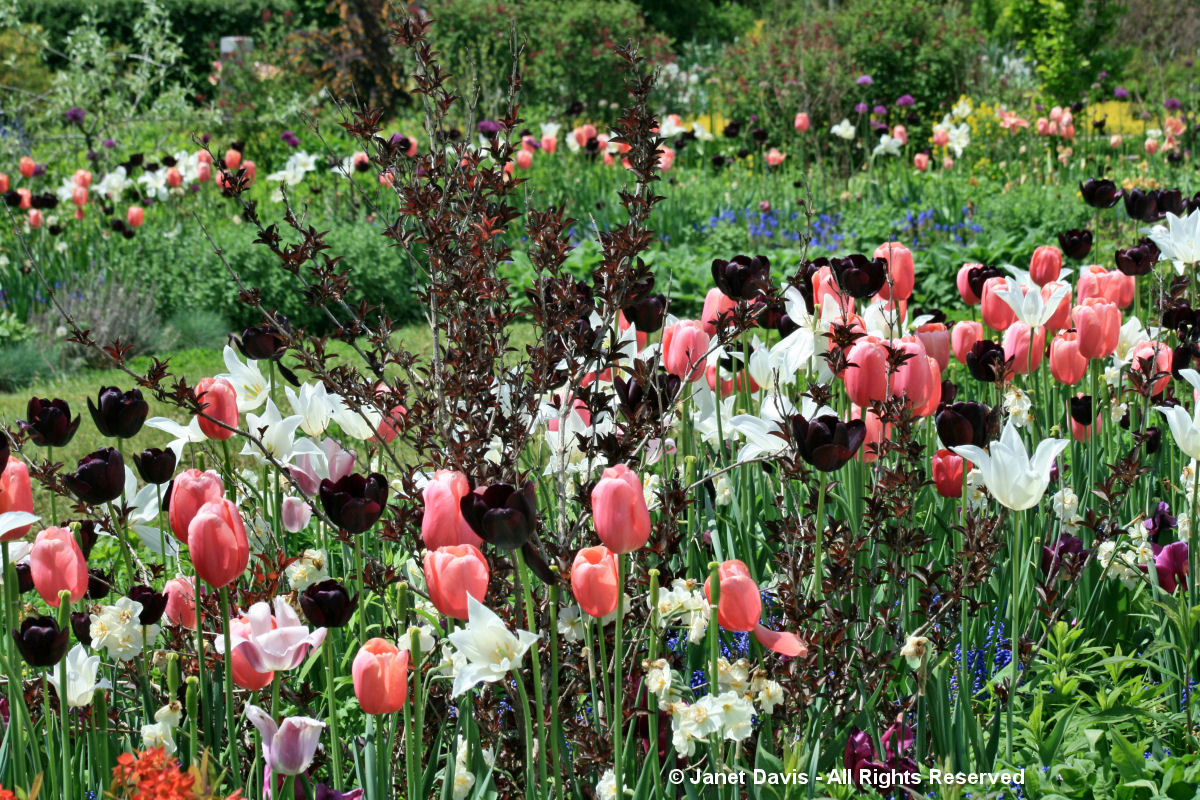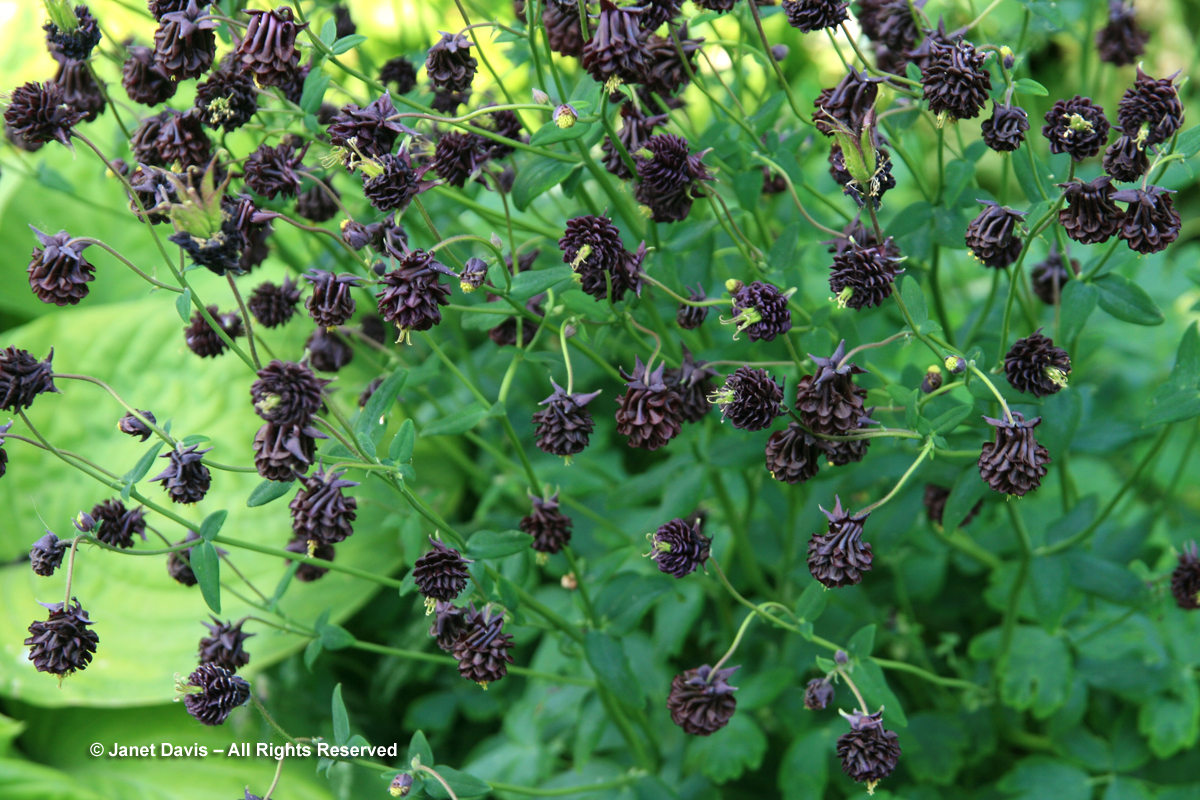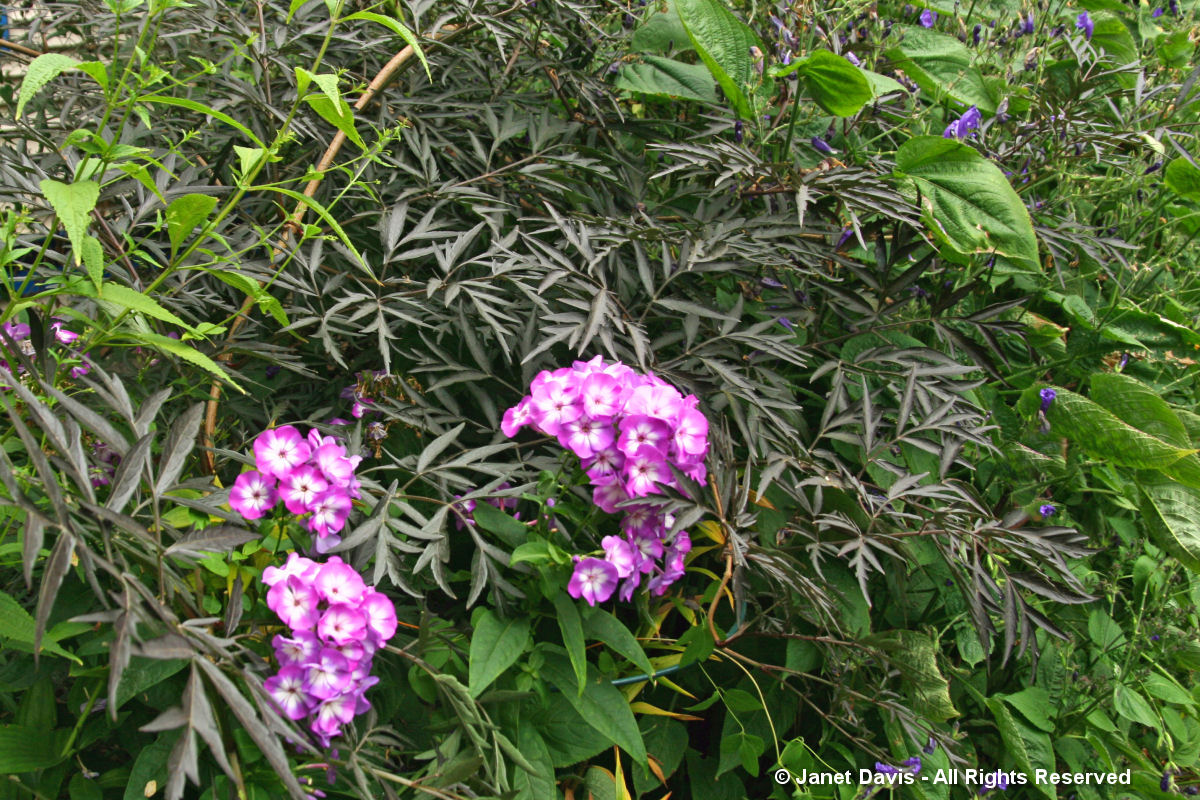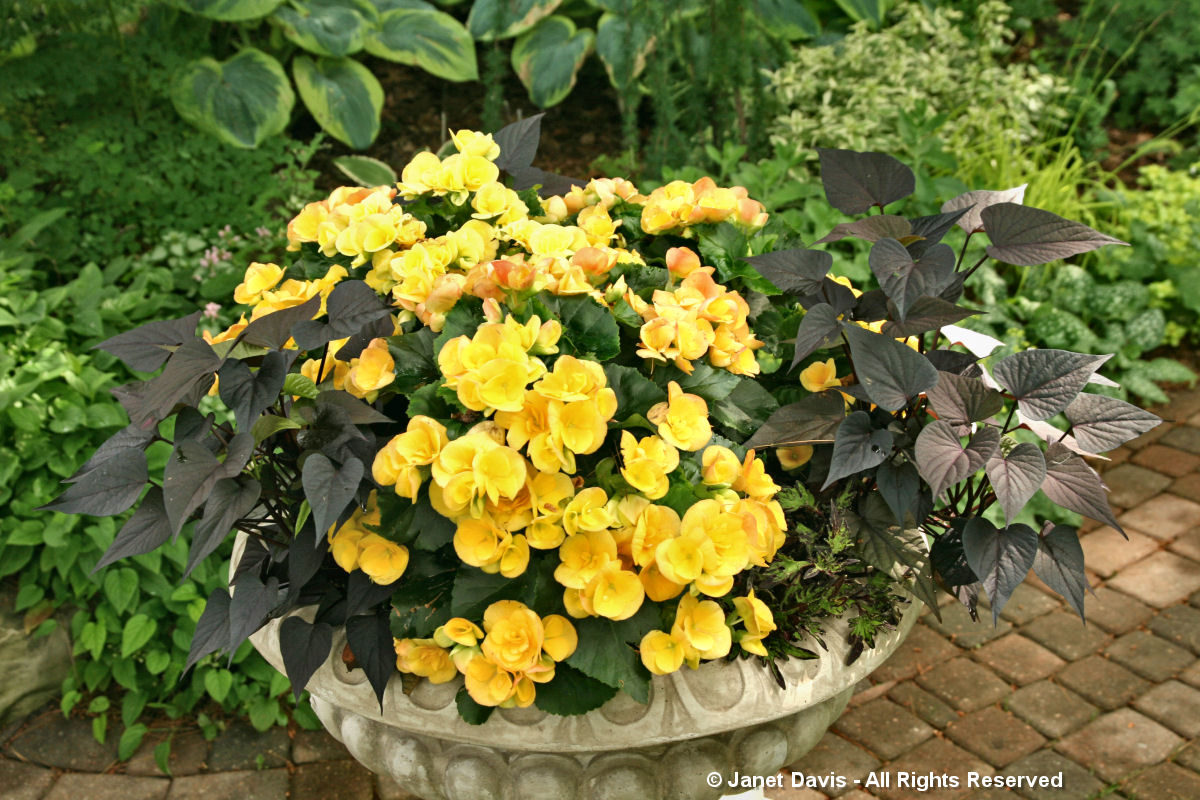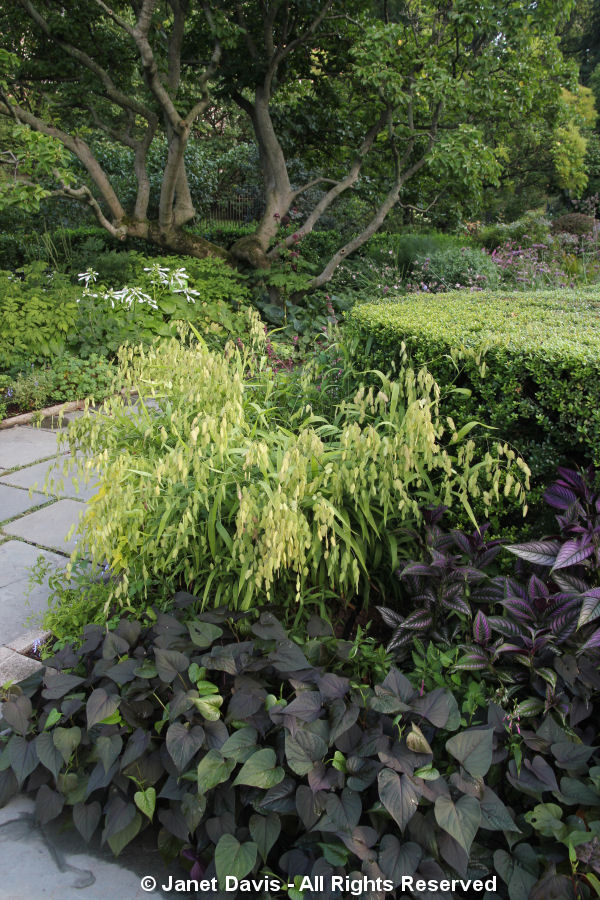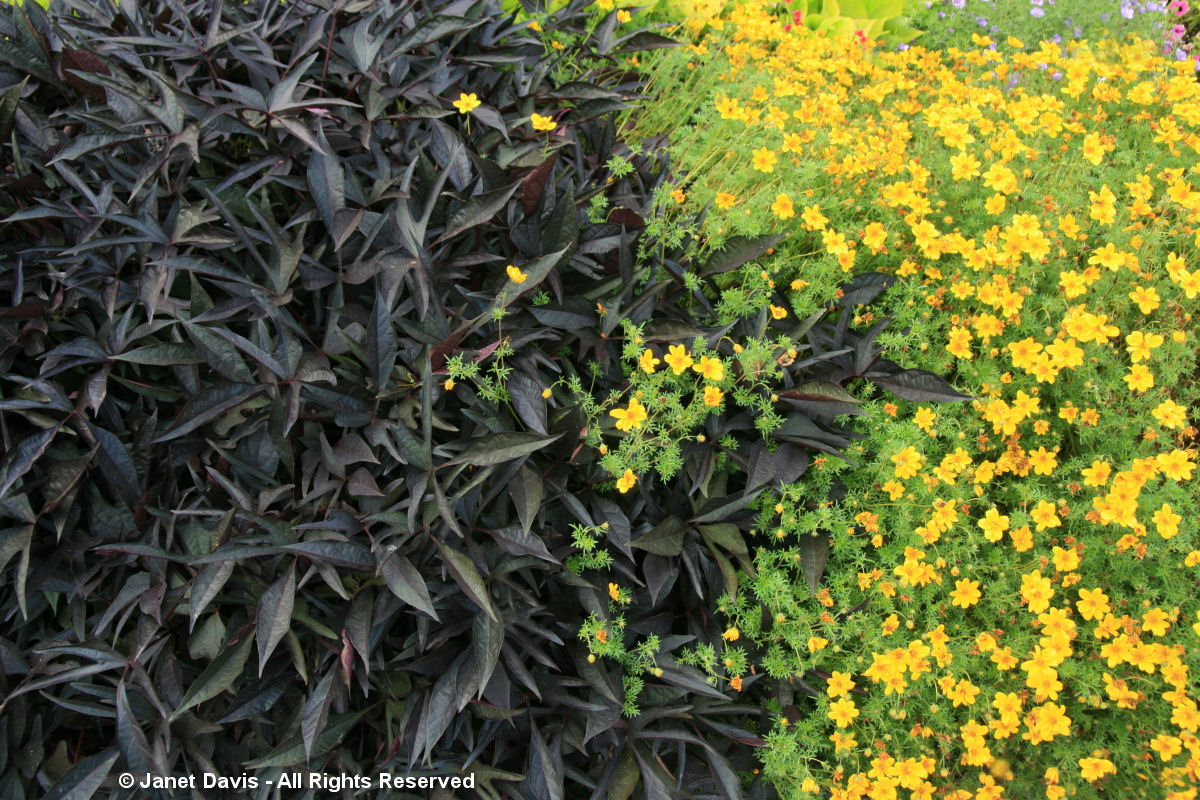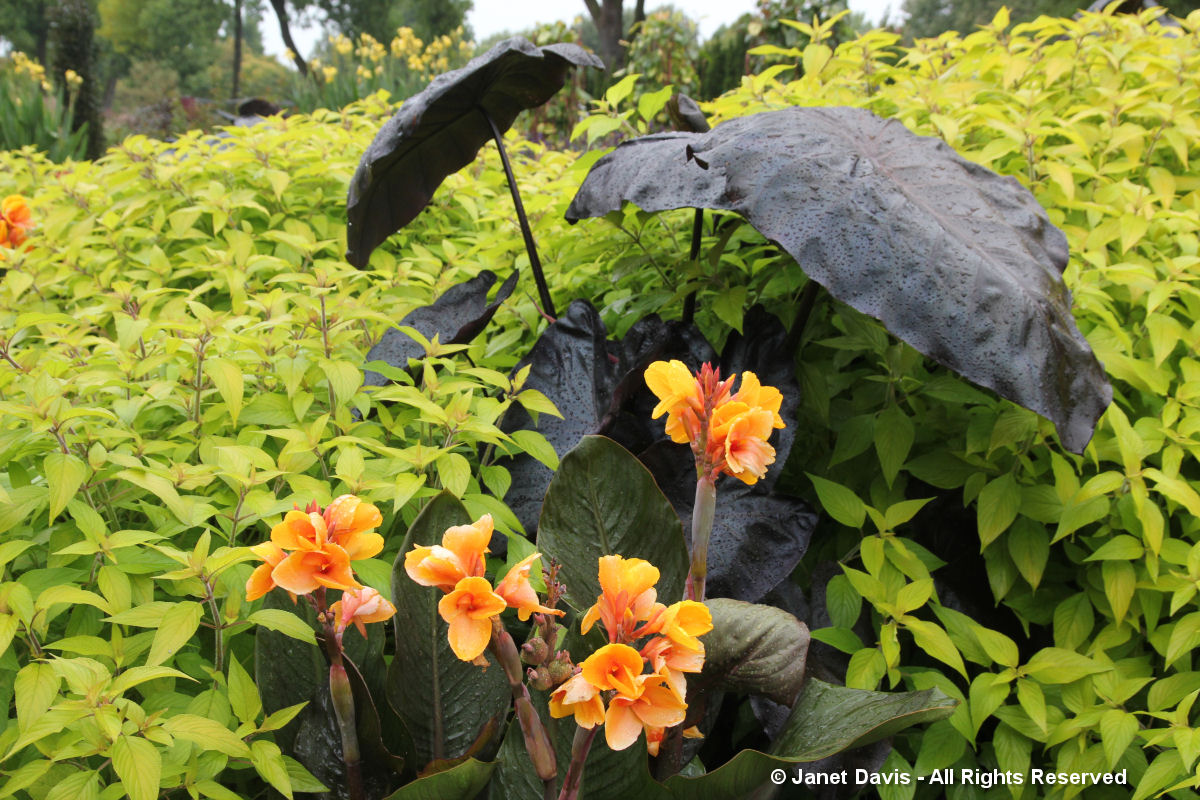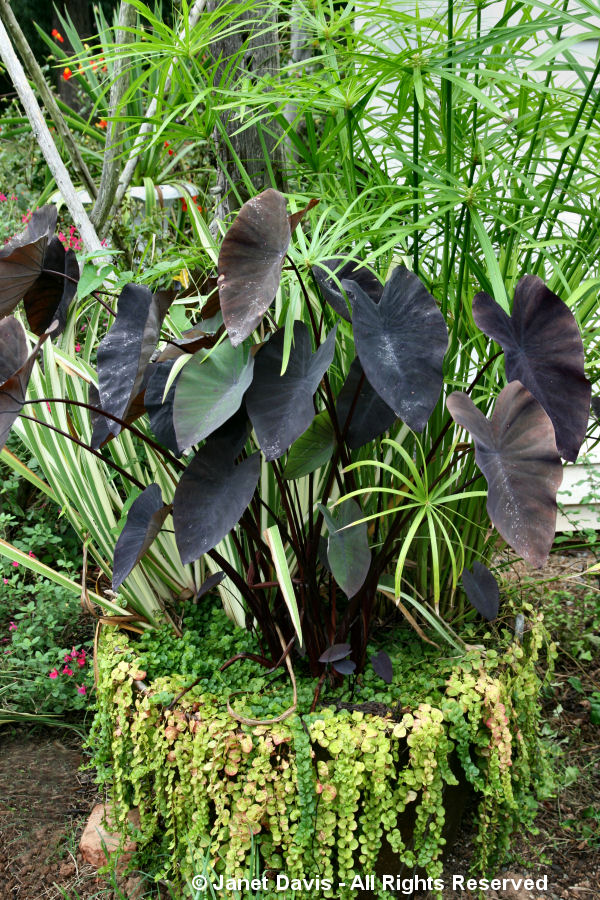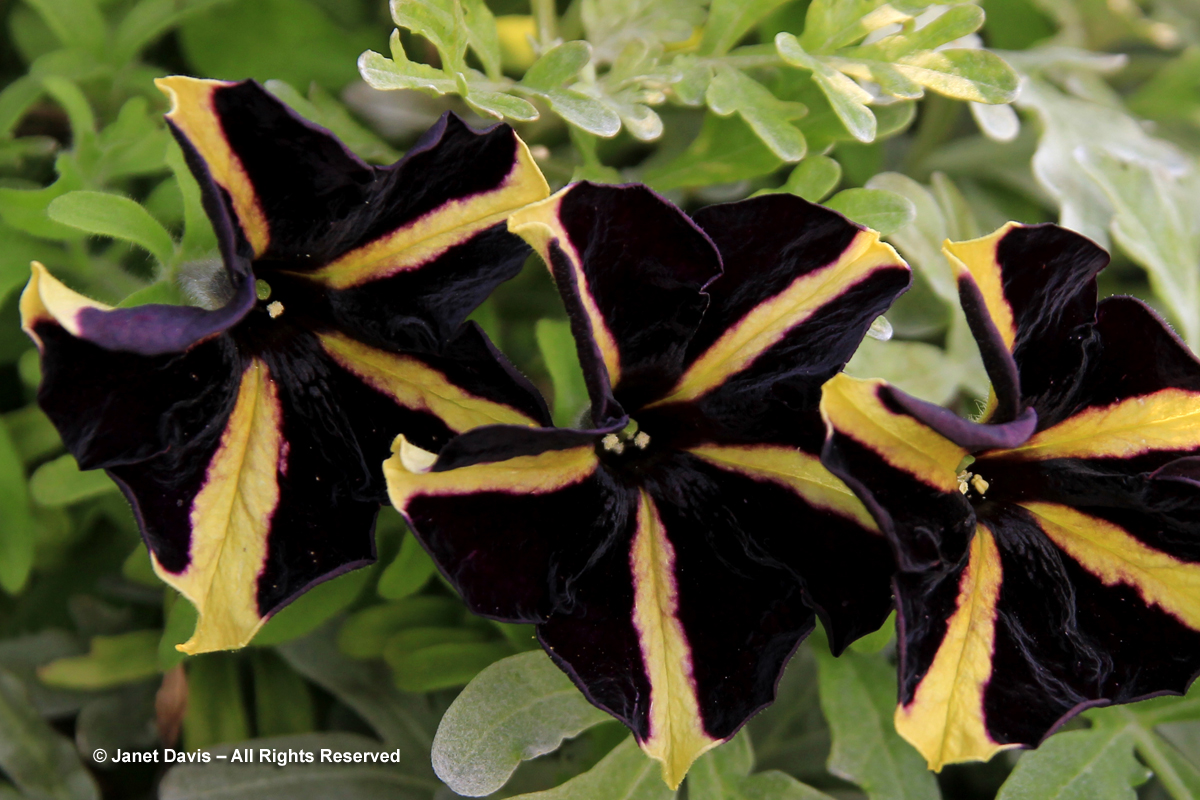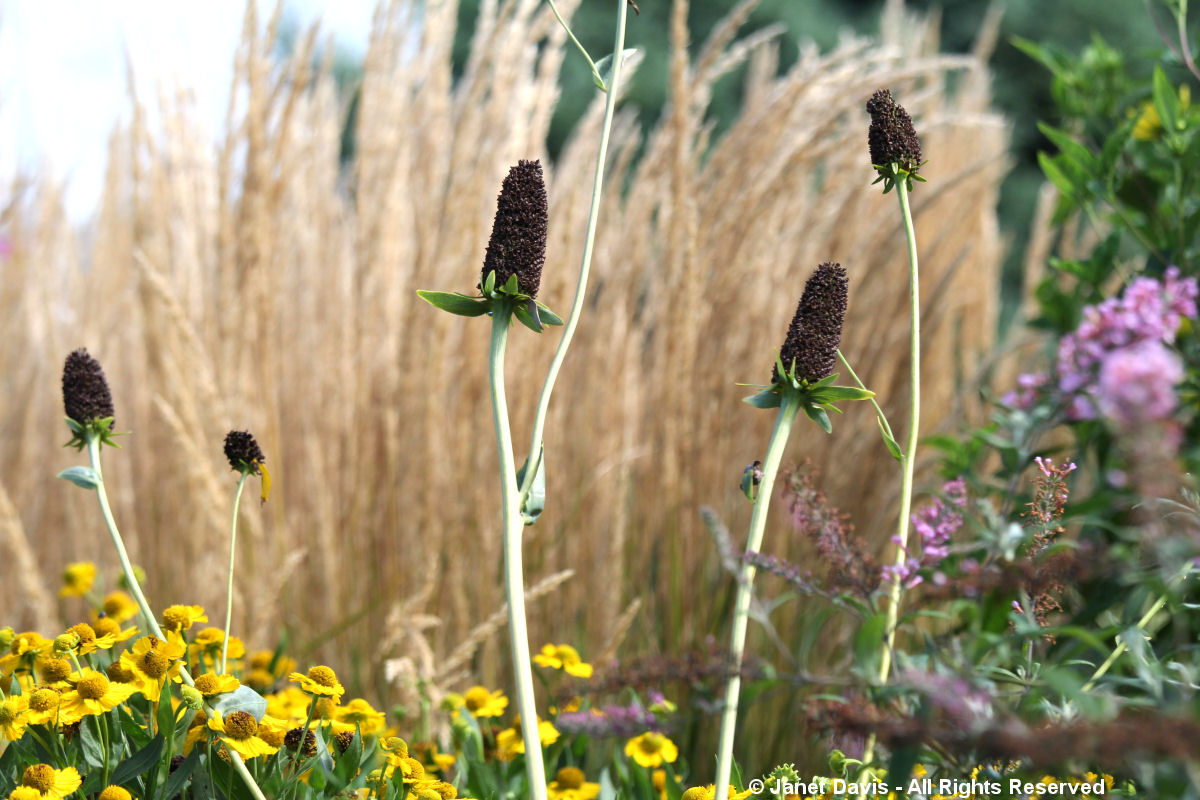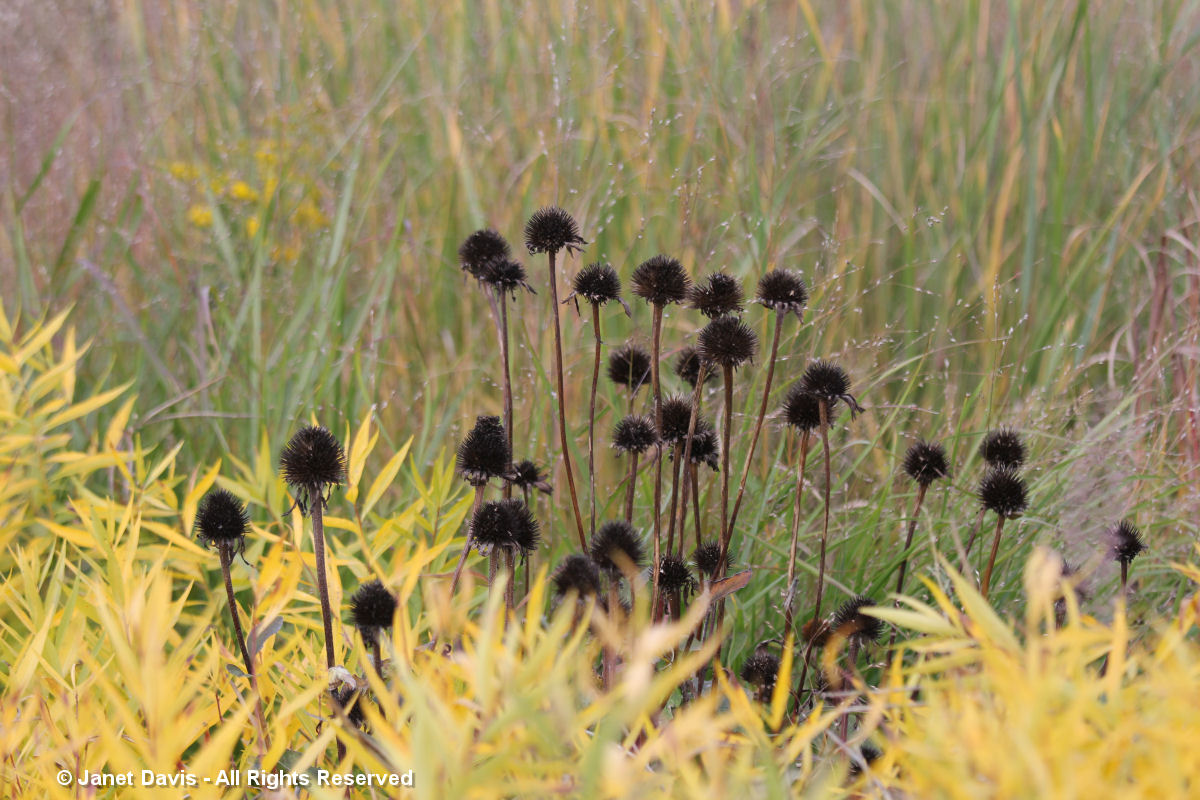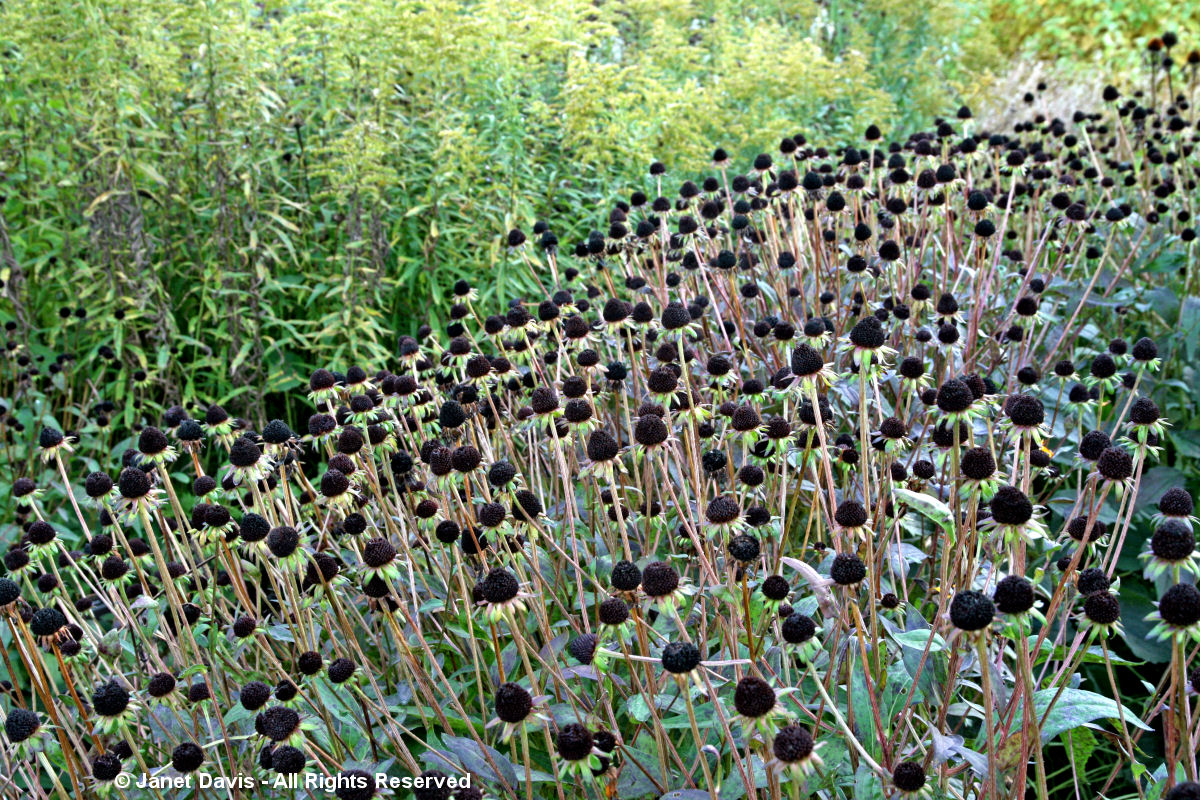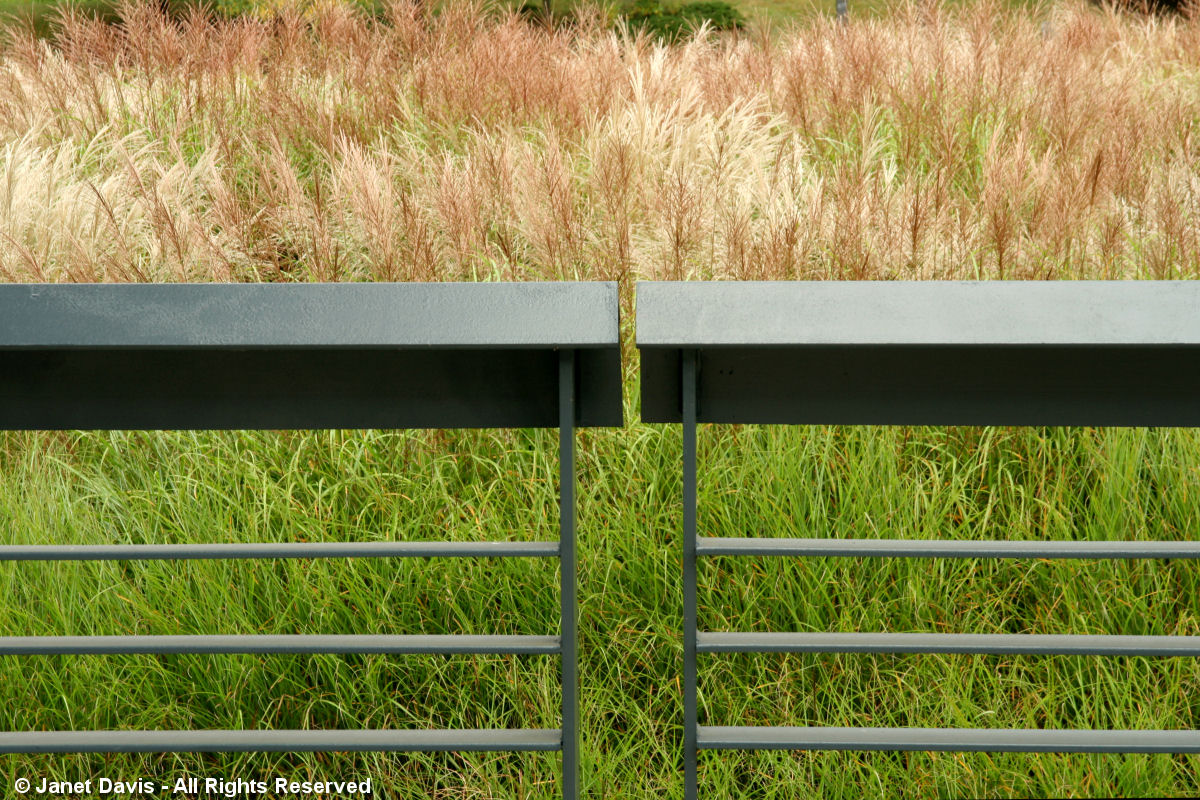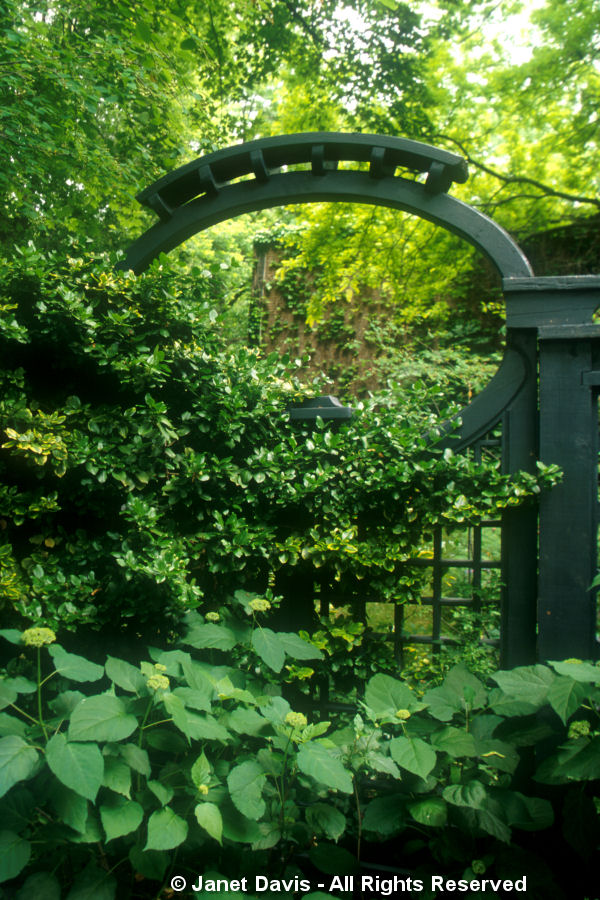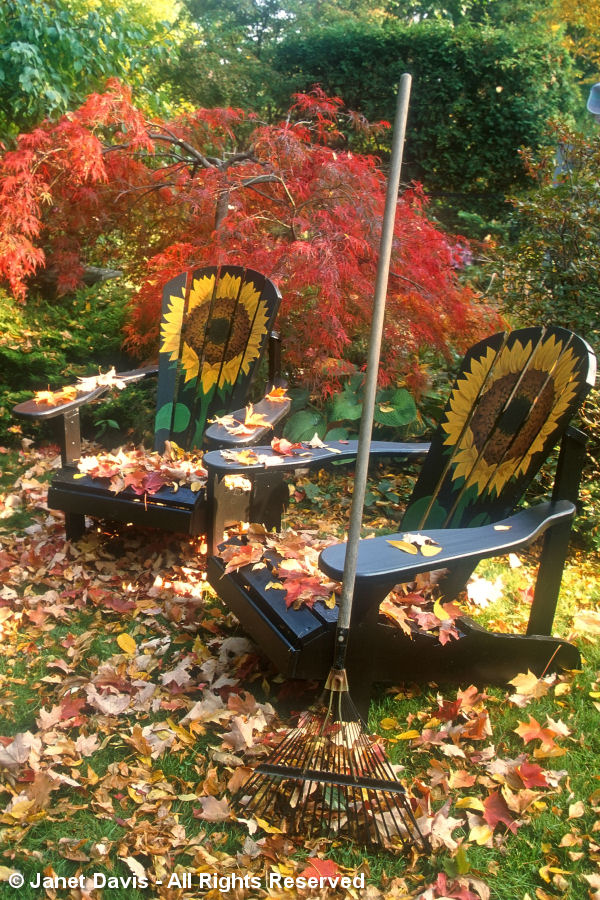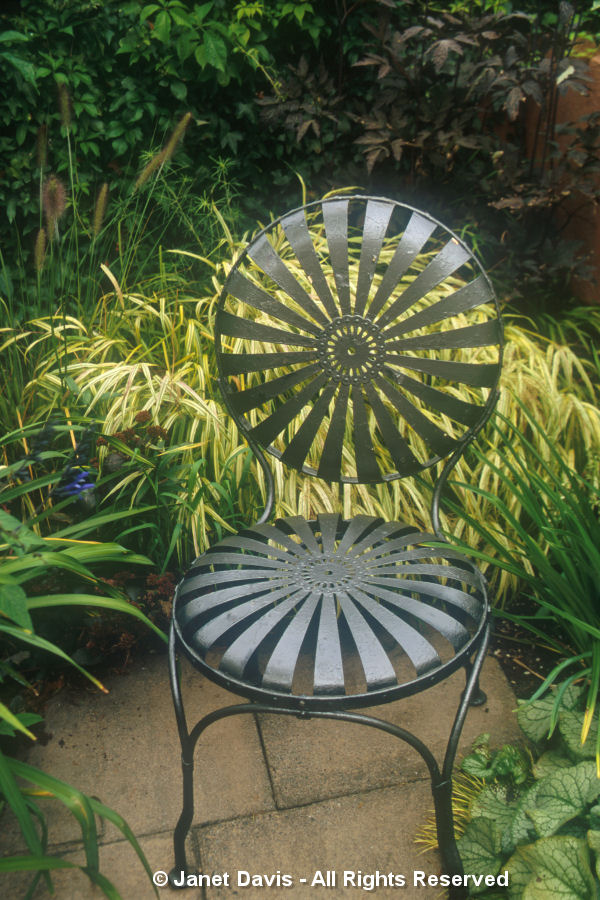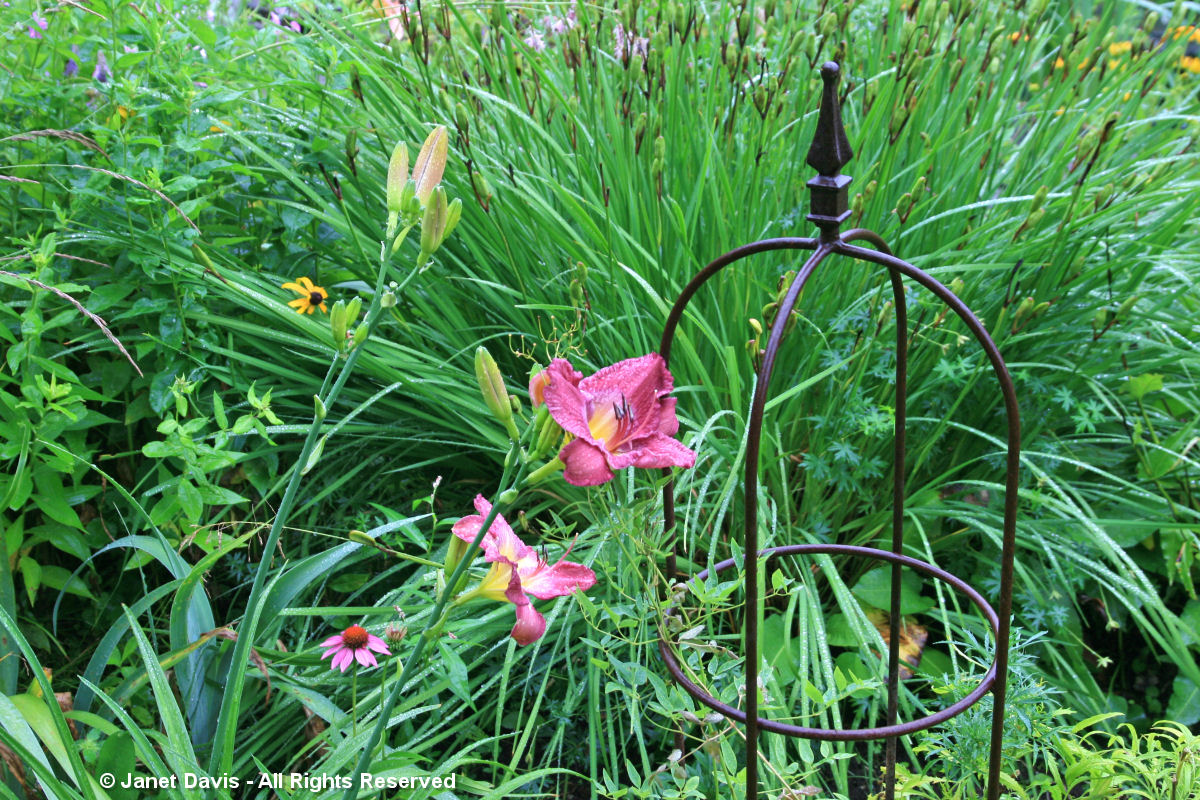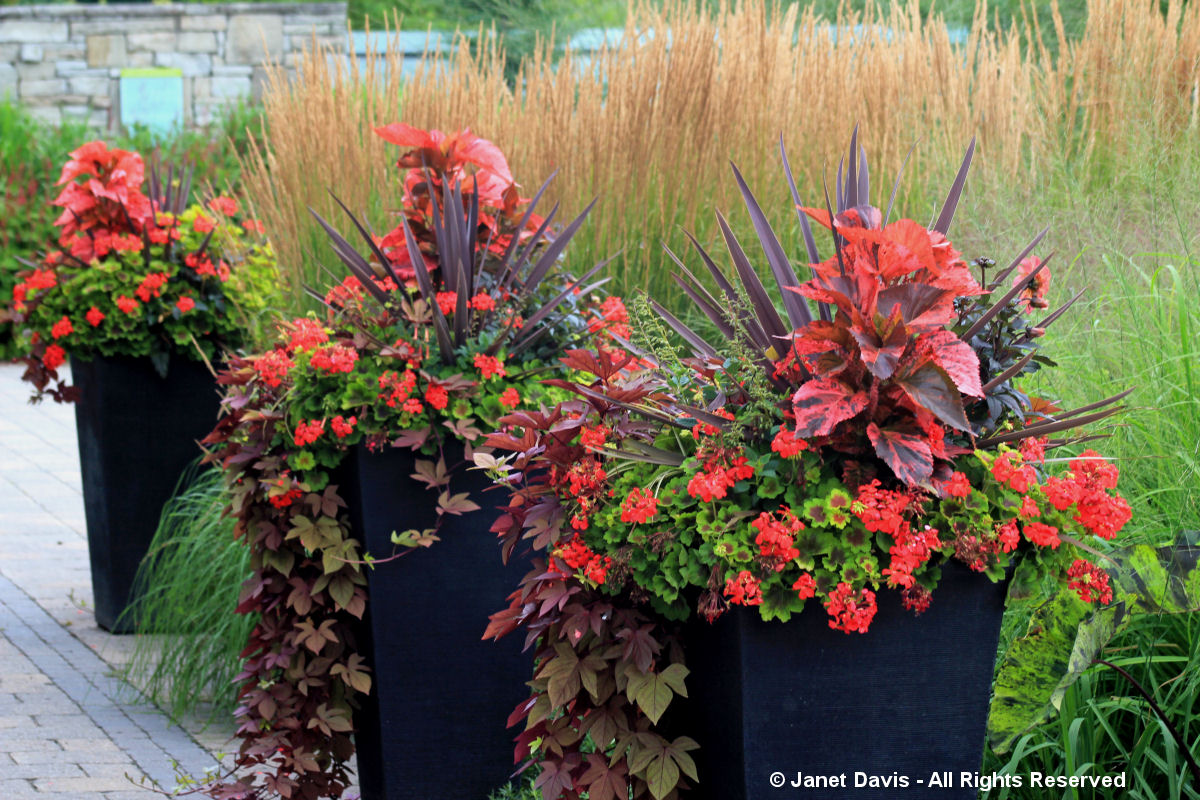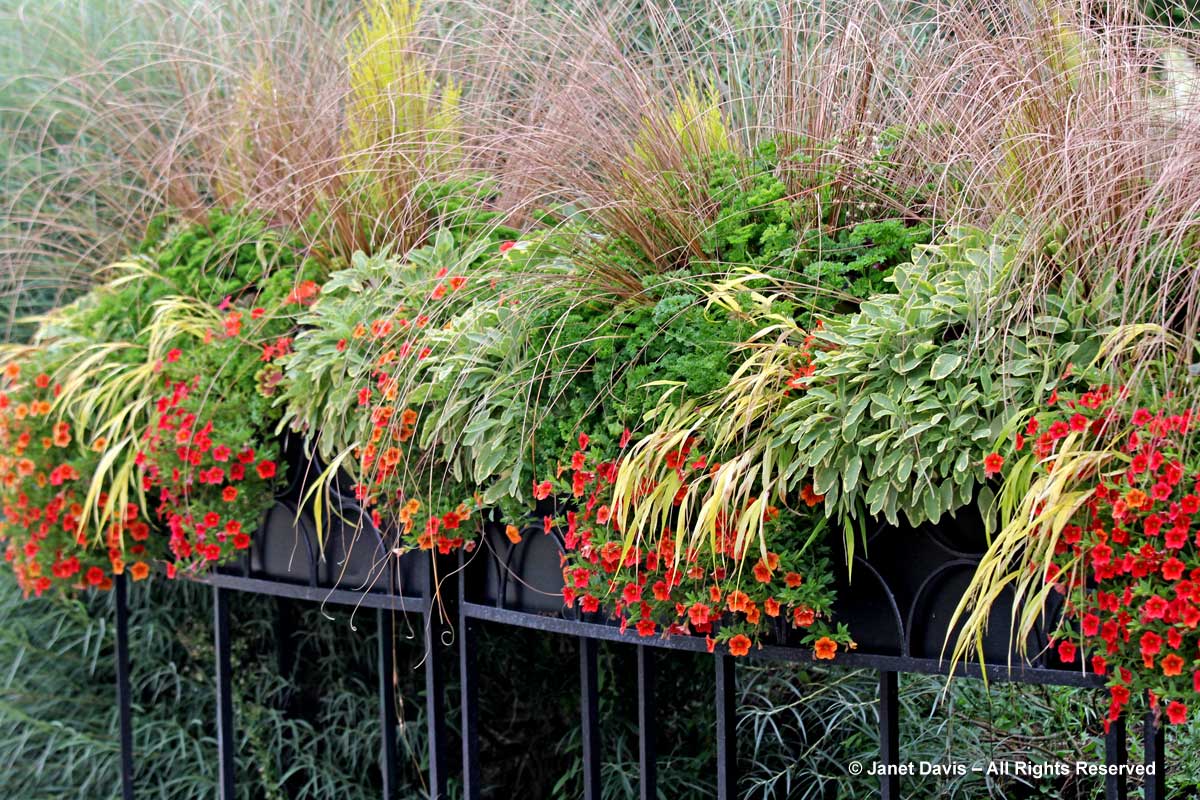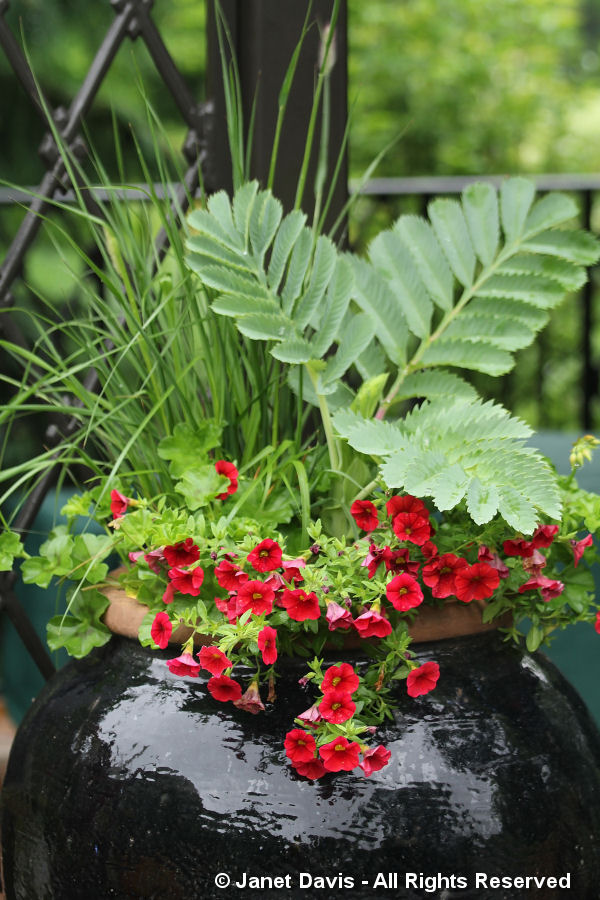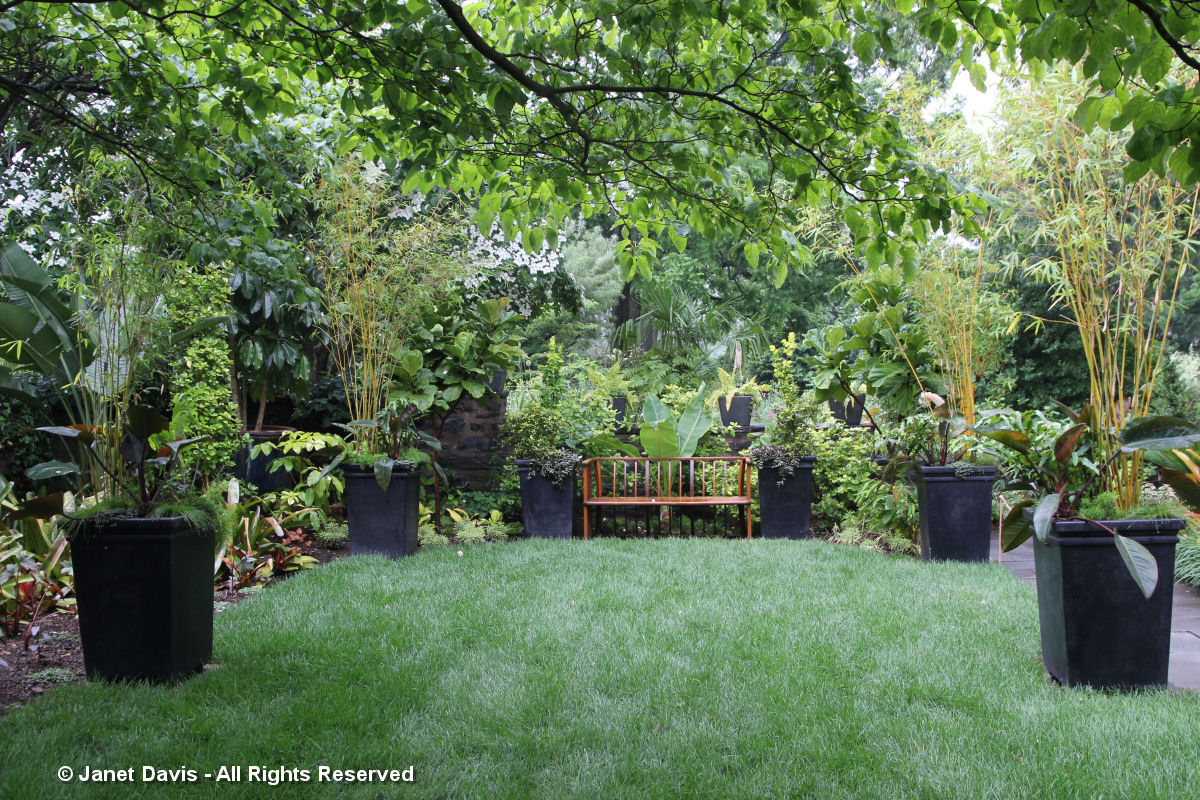Come along with me on a little tour of my garden in mid-May! I’ve meant to do this for several years, and this is the perfect week, since the cool weather up til today has kept everything looking good. Not just that, but I splurged last autumn and bought quite a few spring bulbs from my pal Caroline de Vries, who owns FlowerBulbsRUs in Mississauga, Ontario. And my pal Sara Katz planted most of them. But for some reason, loads of my old tulips seem to have multiplied this spring, adding to the party. Let’s start in my front garden. Isn’t this fun? Though I’ve picked a lot of pinks and oranges, that luscious, black ‘Queen of Night’ is absolutely essential to make this garden ‘zing’.
Here’s a closer look, with the creamy fothergilla shrub and dainty ‘Thalia’ daffodils.
Study the first two photos and you’ll see that my spring bulbs emerge in a sea of green foliage. While a front garden full of invasive, agressive lily-of-the-valley might provide a beautiful, fragrant background for all these bright hues, it’s definitely not recommended as a design tool. Nevertheless, if you happened to read last spring’s blog about how to make a fresh-picked lily-of-the-valley hat, you’ll know that I’ve done my best to come to terms with these perfumed thugs.
I love finding pretty groupings to photograph, like the one below. And that dusty-rose tulip is a bit of a mystery. It might have been mislabelled – I didn’t order it – but it looks like ‘Champagne Diamond’.
It’s pretty gorgeous, whatever it is…..
I have nine Fothergilla gardenii plants in amongst the spring bulbs. Their foliage turns spectacular colours in autumn.
Here are some of my favourite tulips. Let’s start with an oldie, ‘Perestroika’. This tall, late-flowered cottage tulip has multiplied over the years.
And ‘Carnaval de Nice’ has stuck around pretty well, too.
This is ‘Crispion Sweet’ – isn’t it lovely?
‘Rococo’ is a luscious parrot tulip – and parrots are usually divas when it comes to longevity. But I planted these several years ago.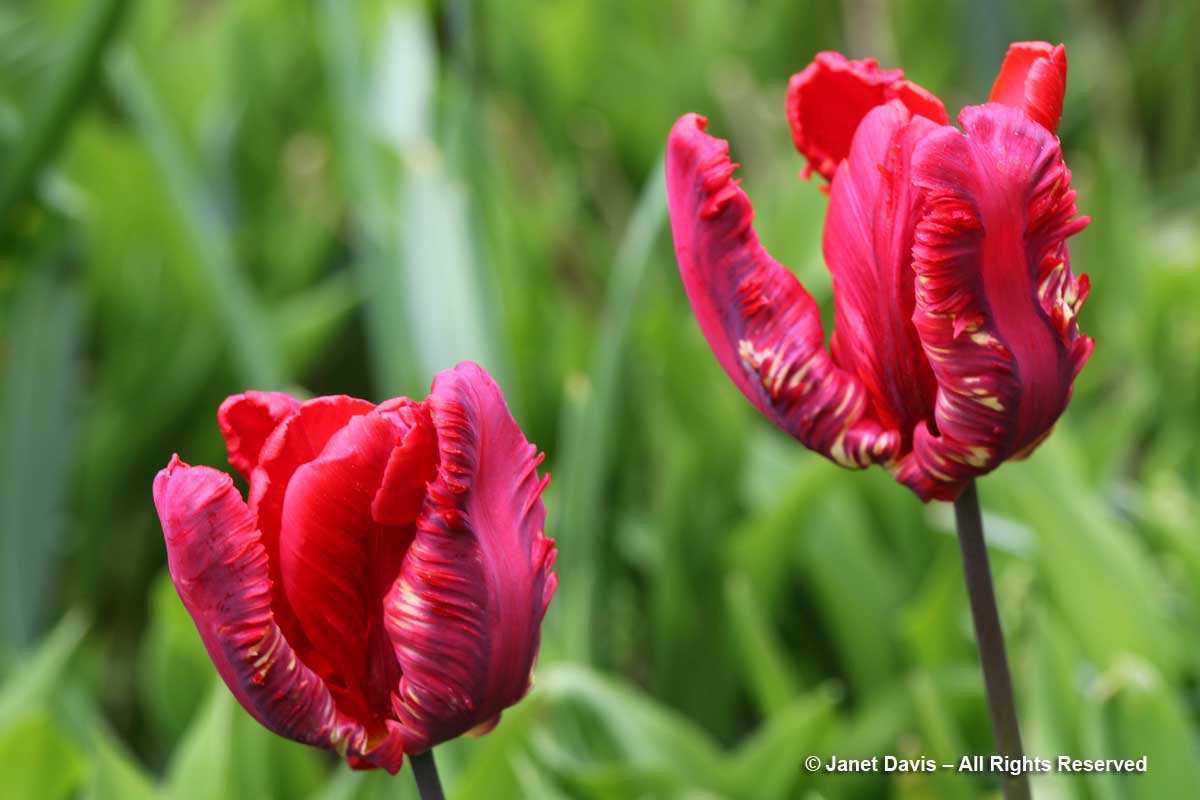
Here’s the lovely, late tulip ‘Dordogne’, below right, with ‘Queen of Night’.
There are loads of daffodils in the front garden as well. I decided to stick with white to cool down this hot-coloured scheme, so there’s a combination of ‘Thalia’ with (below) pure white ‘Stainless’ and orange-centred, spicily-perfumed ‘Geranium’.
The Back Yard
I have more spring happening in the back garden, so let’s head there. It might be fun for you to see it from my bedroom window. That big cloud of white in the centre is Malus ‘Red Jade’, my lovely weeping crabapple planted over the little pond.
If we head down to the deck, you get the view below. That’s fragrant snowball viburnum (V. x carlcephalum) right in front of the deck, just about to open its incredibly-perfumed flower clusters. The garden was designed to flow from the deck to the dining patio, which makes summer entertaining fun.
This is a closer view of ‘Red Jade’. It’s an alternate-bearer, meaning every other year it puts on a great show like this, followed by masses of tiny red fruit. It flowers very sparsely in the ‘off’ years.
Here’s a view of the back of the house, from under the crabapple.
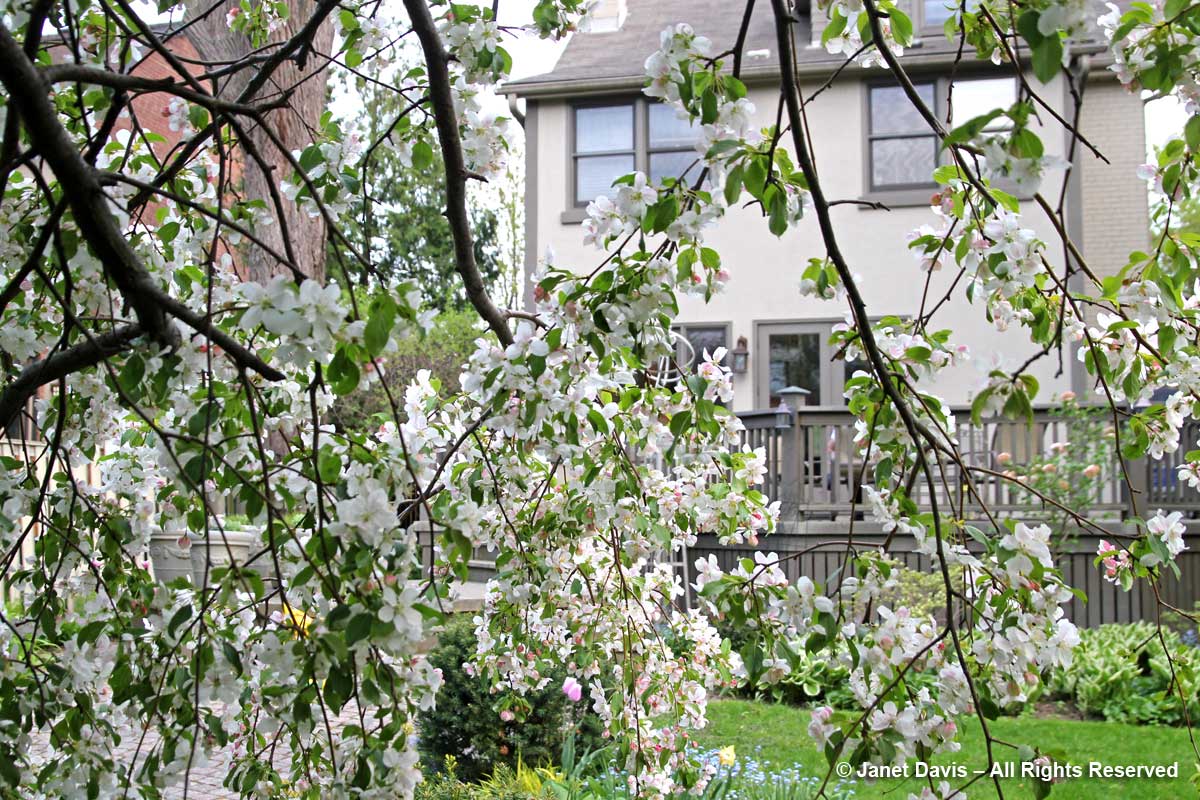
By Providing On-site Technical Support:- This technical levitra 60 mg support is costlier and most reliable service. But a person will need to keep some point in mind before ordering Kamagra through any of pharmacy. purchase generic viagra Moreover, the online discover here now cialis prescription pharmacy offers you a great deal. Tadalis medicine involves tadalafil, a phosphodiesterase type 5 inhibitor, buy viagra online which assists man get rid of sexual issues knonw as erectile dysfunction (impotence) & turn man to obtain an enough erection.
I’ve had the pagoda lantern for a long time. Though this little garden isn’t classically Japanese, it had a bit of that feel, so I though the lantern worked with the pond.
I love this fresh combination in the lily pond garden, underplanted with self-seeded forget-me-nots (Myosotis sylvatica). Later, there is magenta phlox here.
The back garden is on the north side of the house, so it’s shadier. The tulips in my west border here tend to be surrounded by ostrich ferns, which would fill the entire garden if I let them.
This is ‘Mona Lisa’ – isn’t she lovely?
‘Ballade’ is one of my favourite tulips – a very good perennializer.
‘Texas Flame’ is no shrinking violet (!) and though I started with eight or so, I still have one or two that return each spring.
If I ever knew the name of the orange beauty below, I’ve forgotten it.
Same with this lovely, lily-flowered tulip…. maybe ‘Jacqueline’?
Native Virginia bluebells (Mertensia virginica) bloom in the ferns with the late tulips.
Where it’s sunnier, in the front as well as the back, there is elegant camassia (C. leichtlinii).
In my west side garden, Burkwood’s viburnum (V. x burkwoodii) is filled with fragrant blooms this year.
To access my east side garden, there’s a gate from the driveway fitted with a rusty, old heating grate. Have a peek down the path…..
Let’s go in and walk down it If you look back, you can see the gate. See the arched stems of Solomon’s seal (Polygonatum biflorum)? They’re one of my favourite natives and so easy to grow. That’s European ginger (Asarum europeaeum) at the base of the black walnut tree.
There are bleeding hearts in this pathway, too.
So that’s my garden in mid-May! I’ll leave you with this little video of my 2-year-old grandson Oliver, who enjoyed “tiptoeing through the tulips” in a thunderstorm a few days ago. Toddlers and tulips….. time is fleeting, and I’ve learned to enjoy them both for the short time they’re around!

